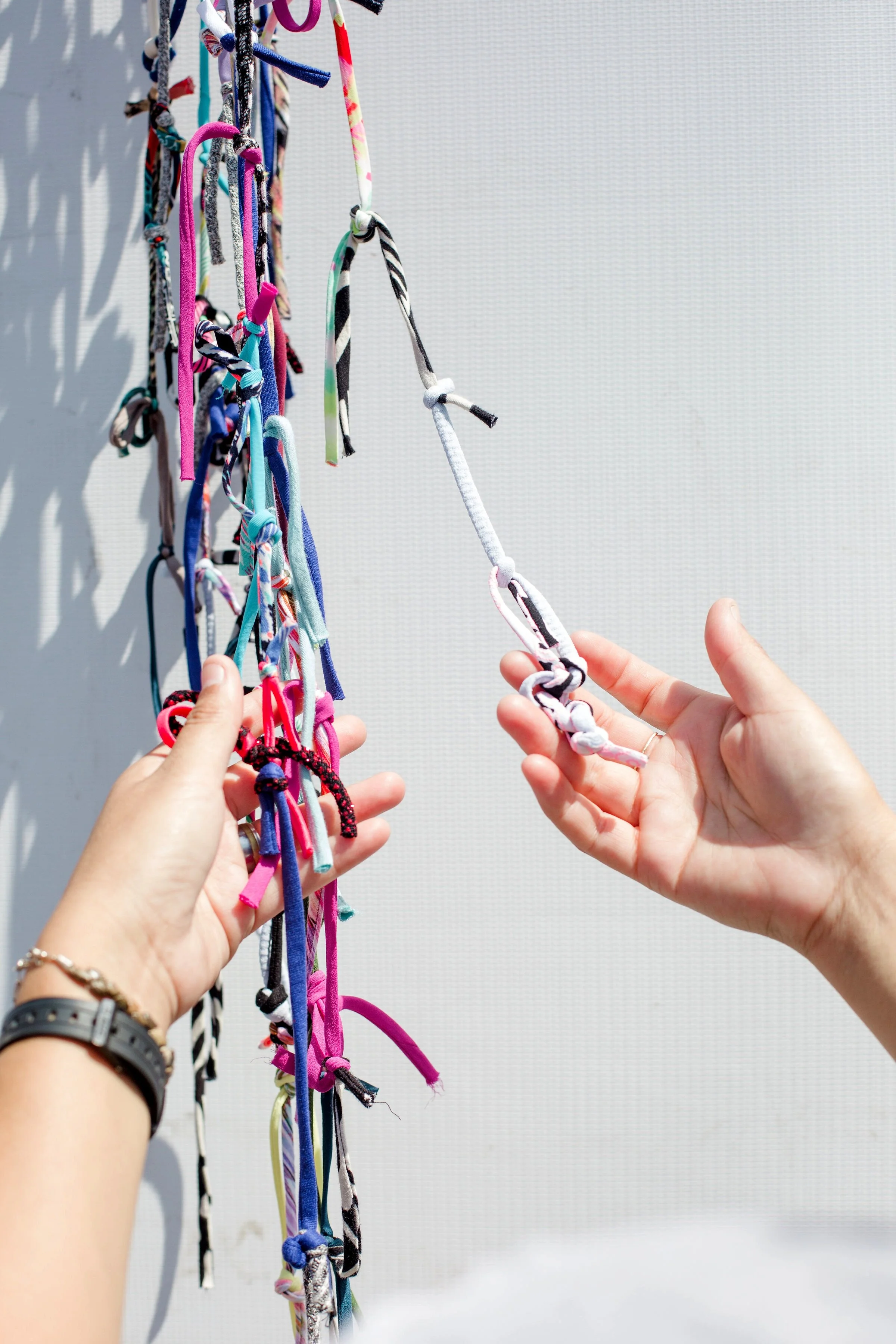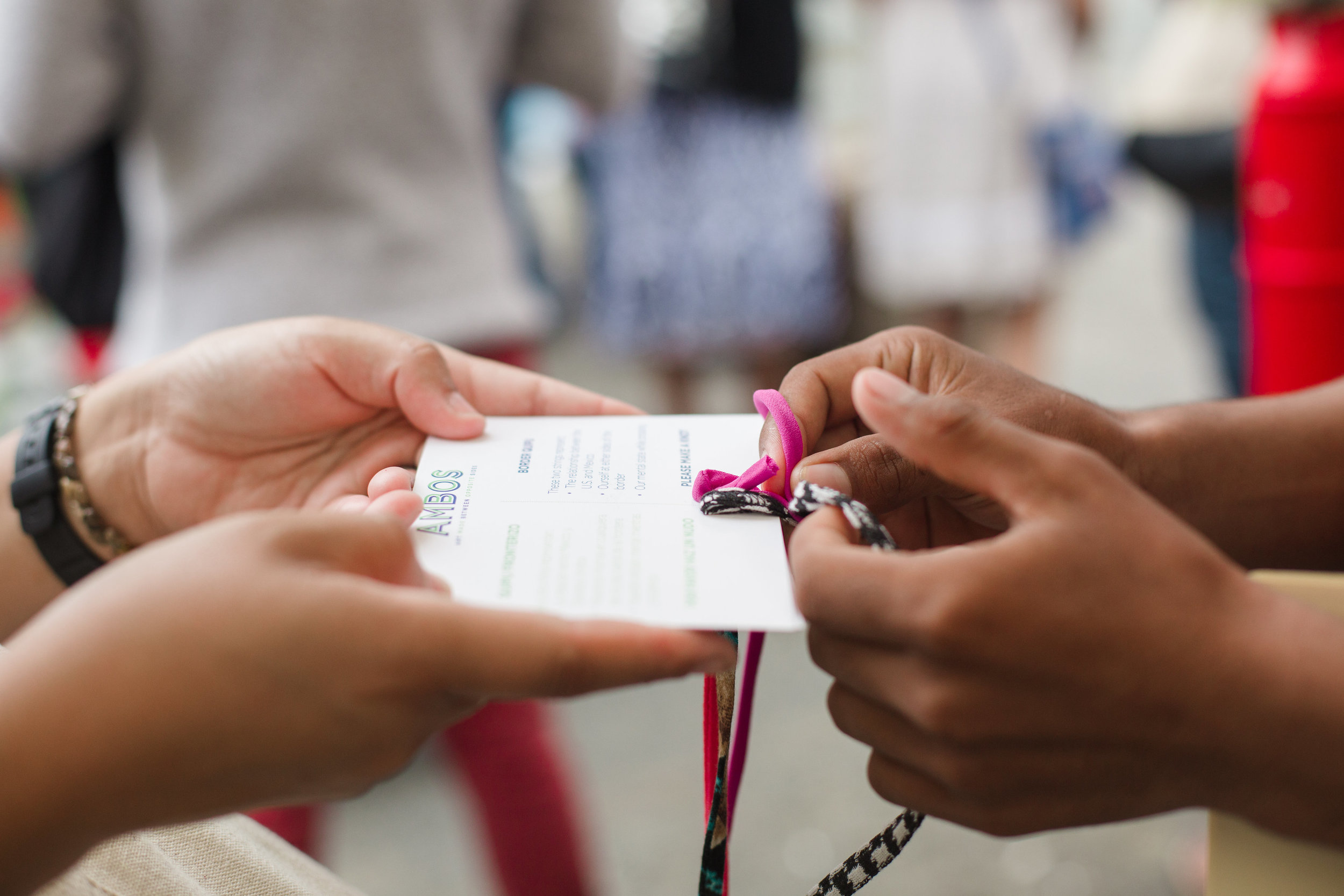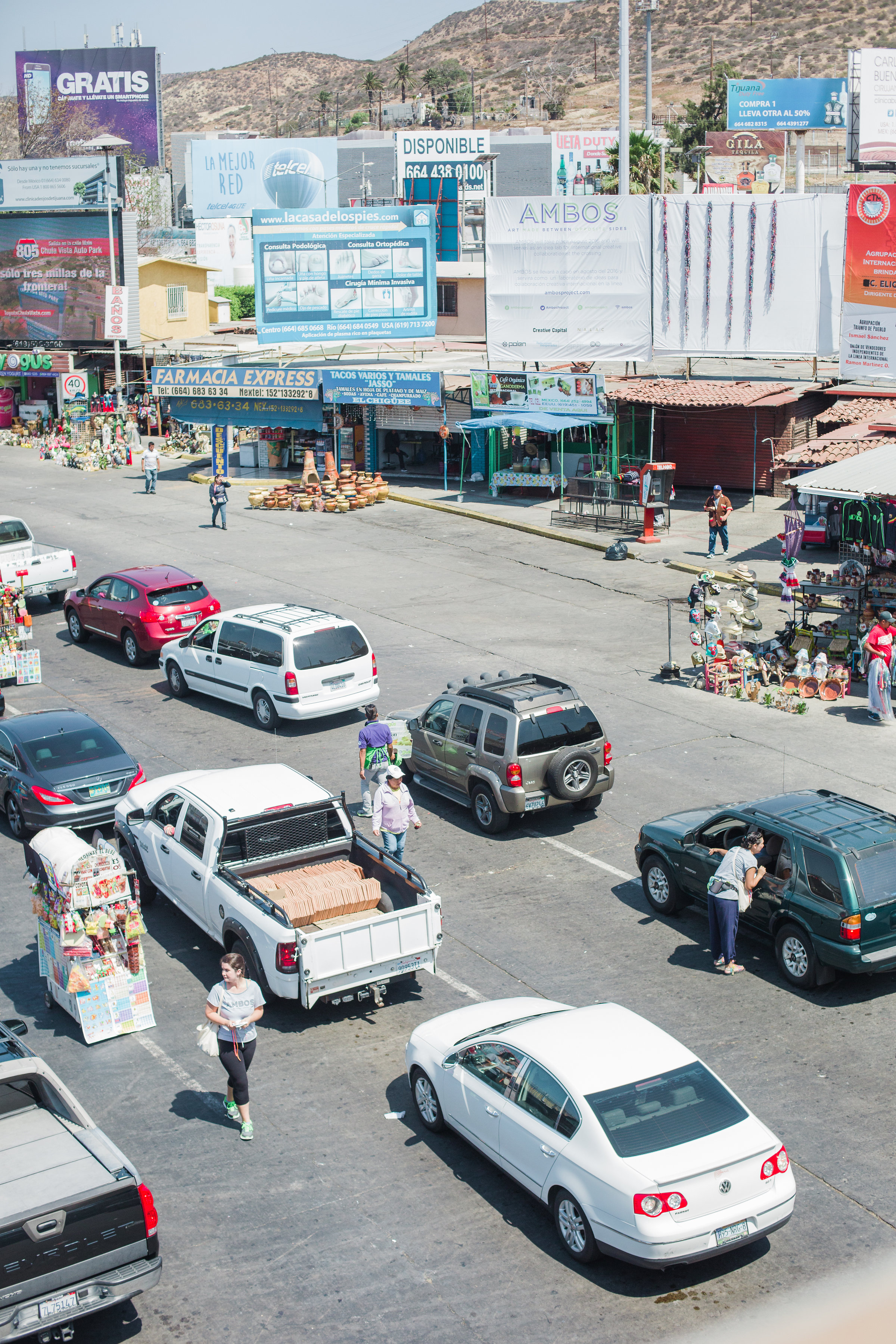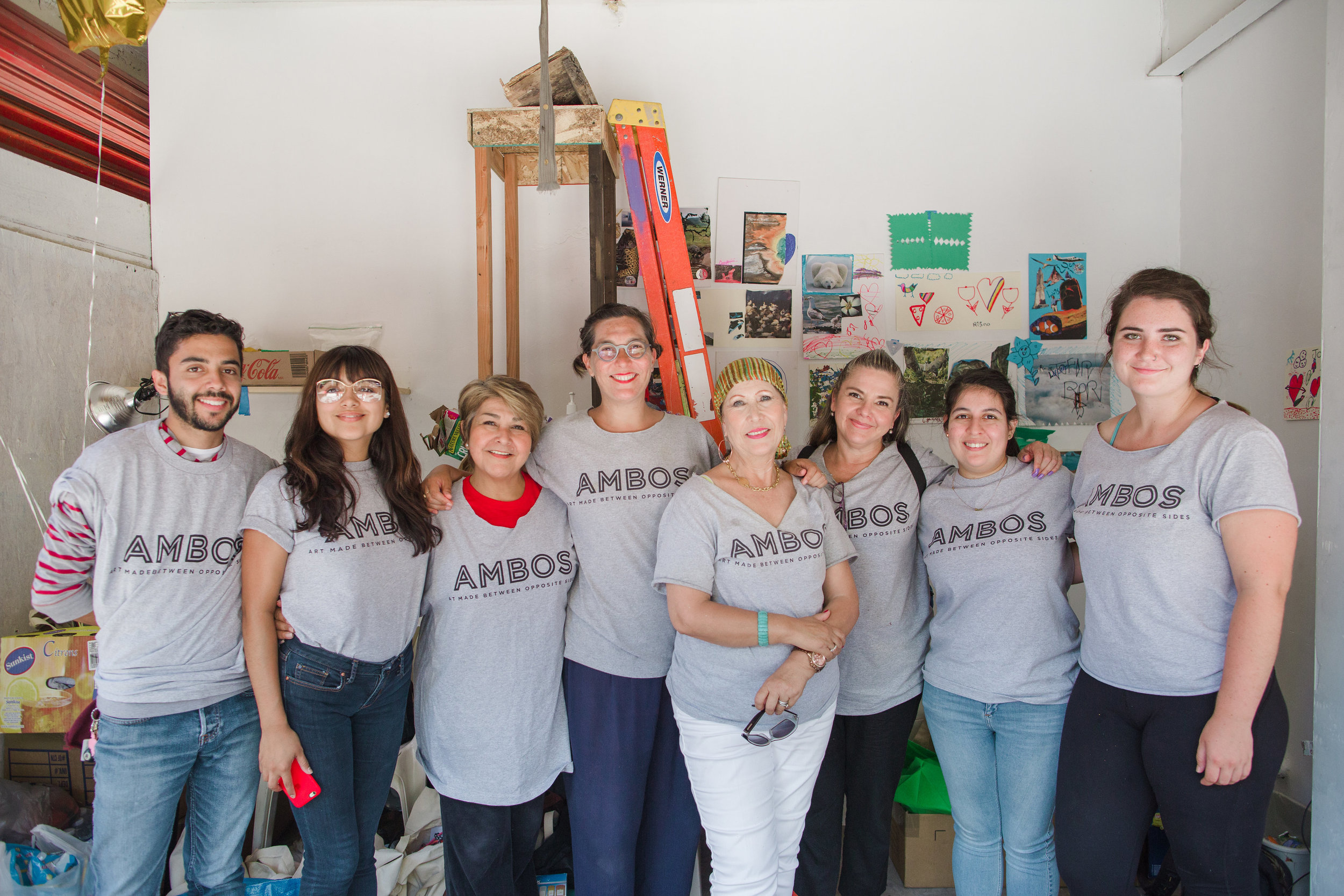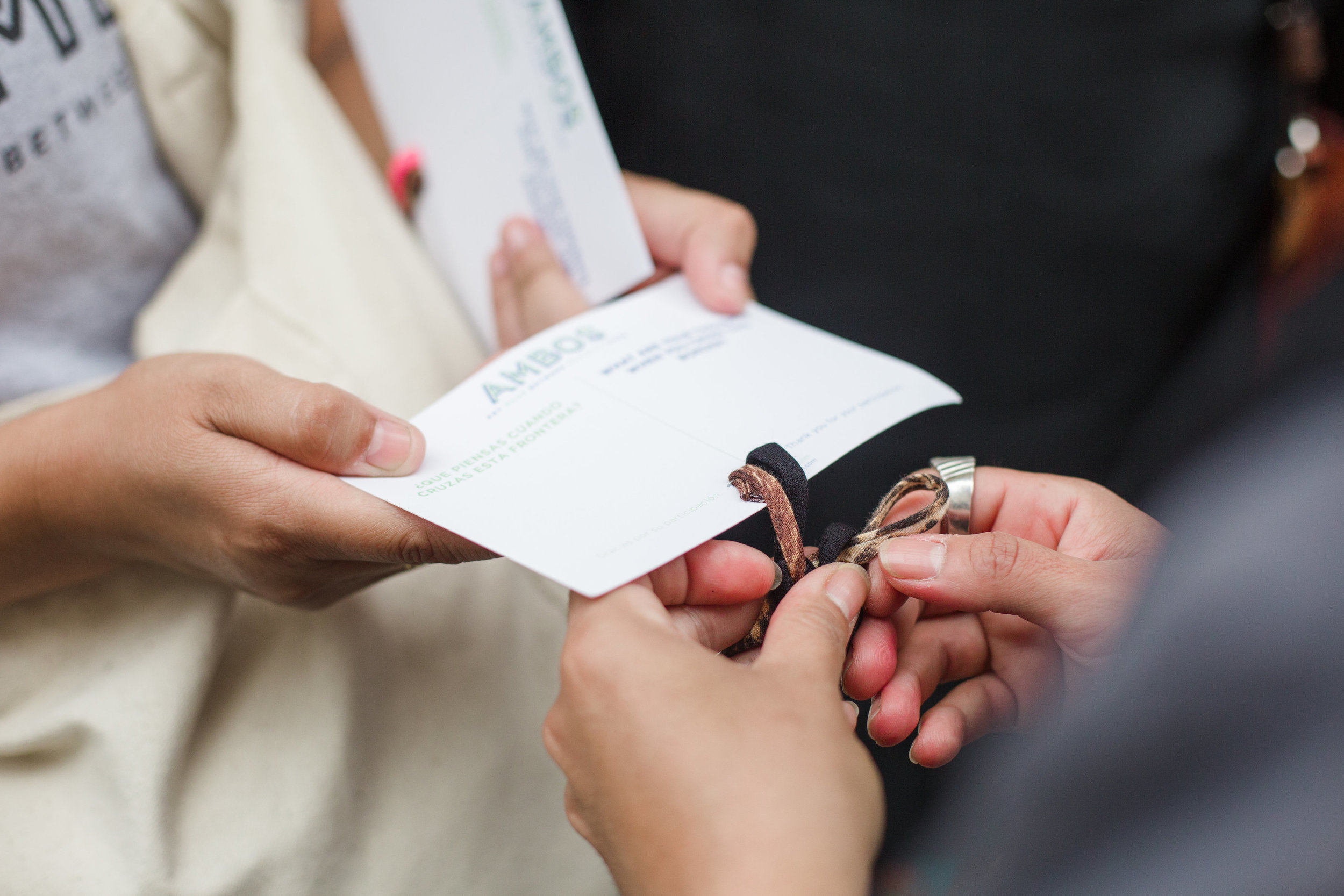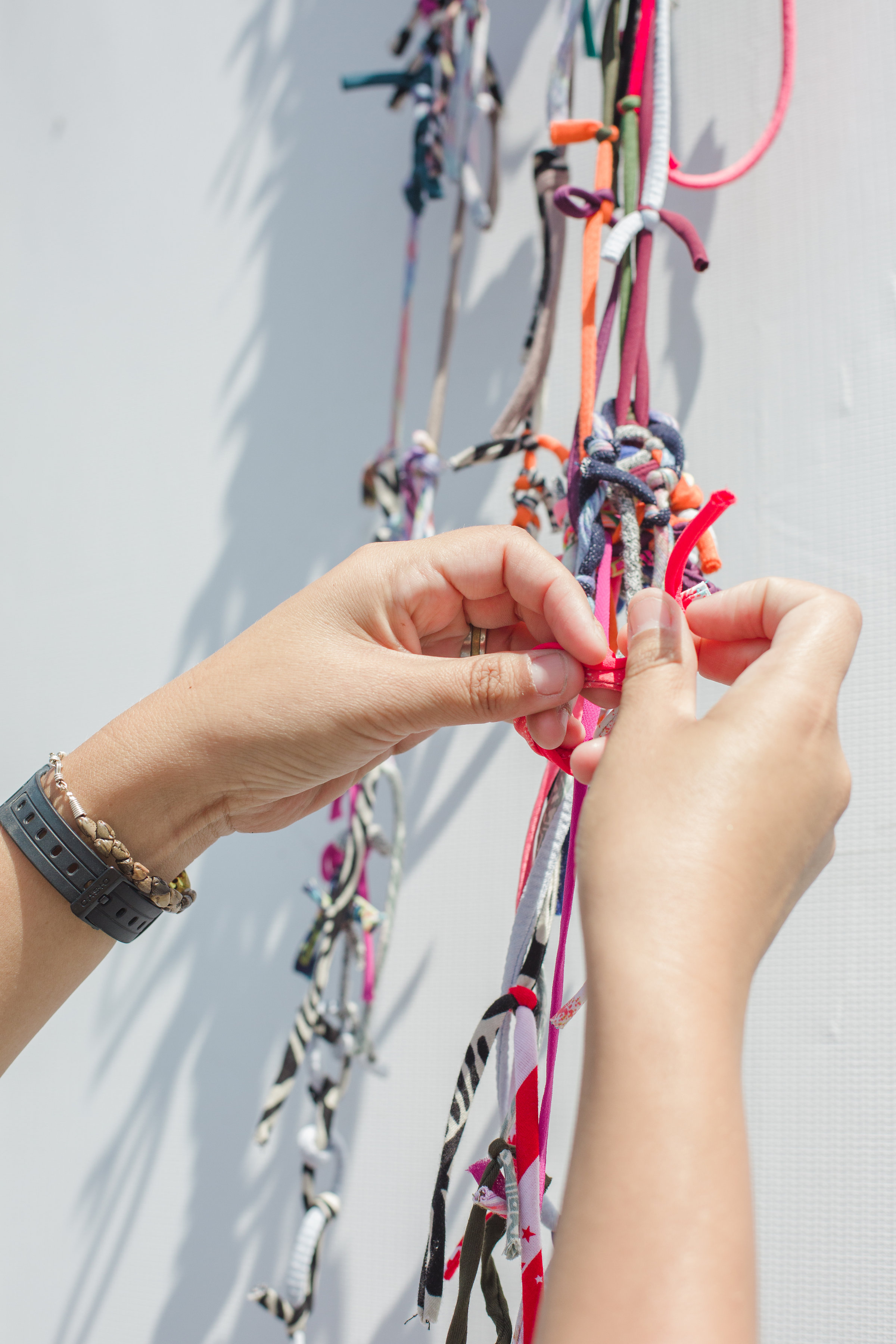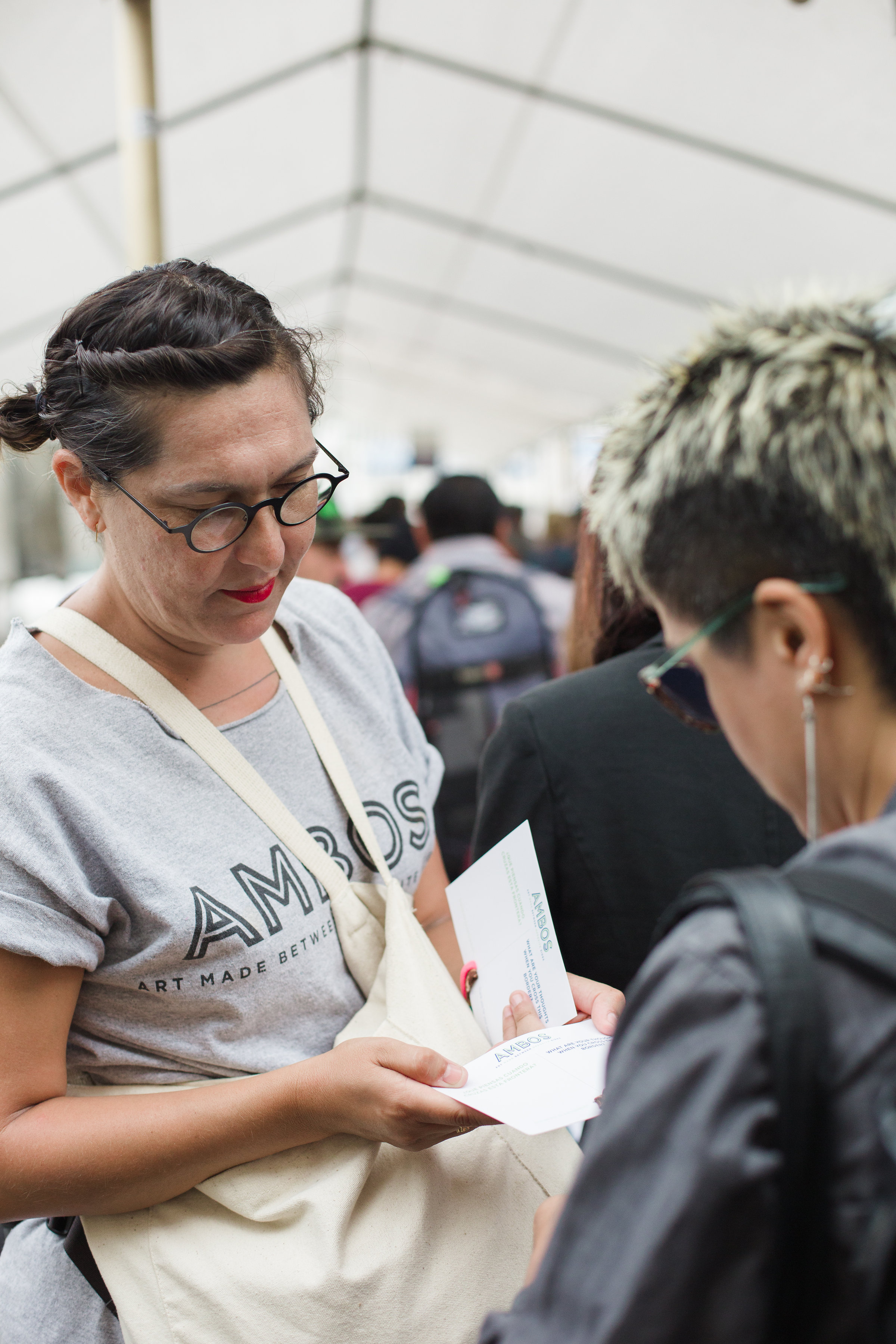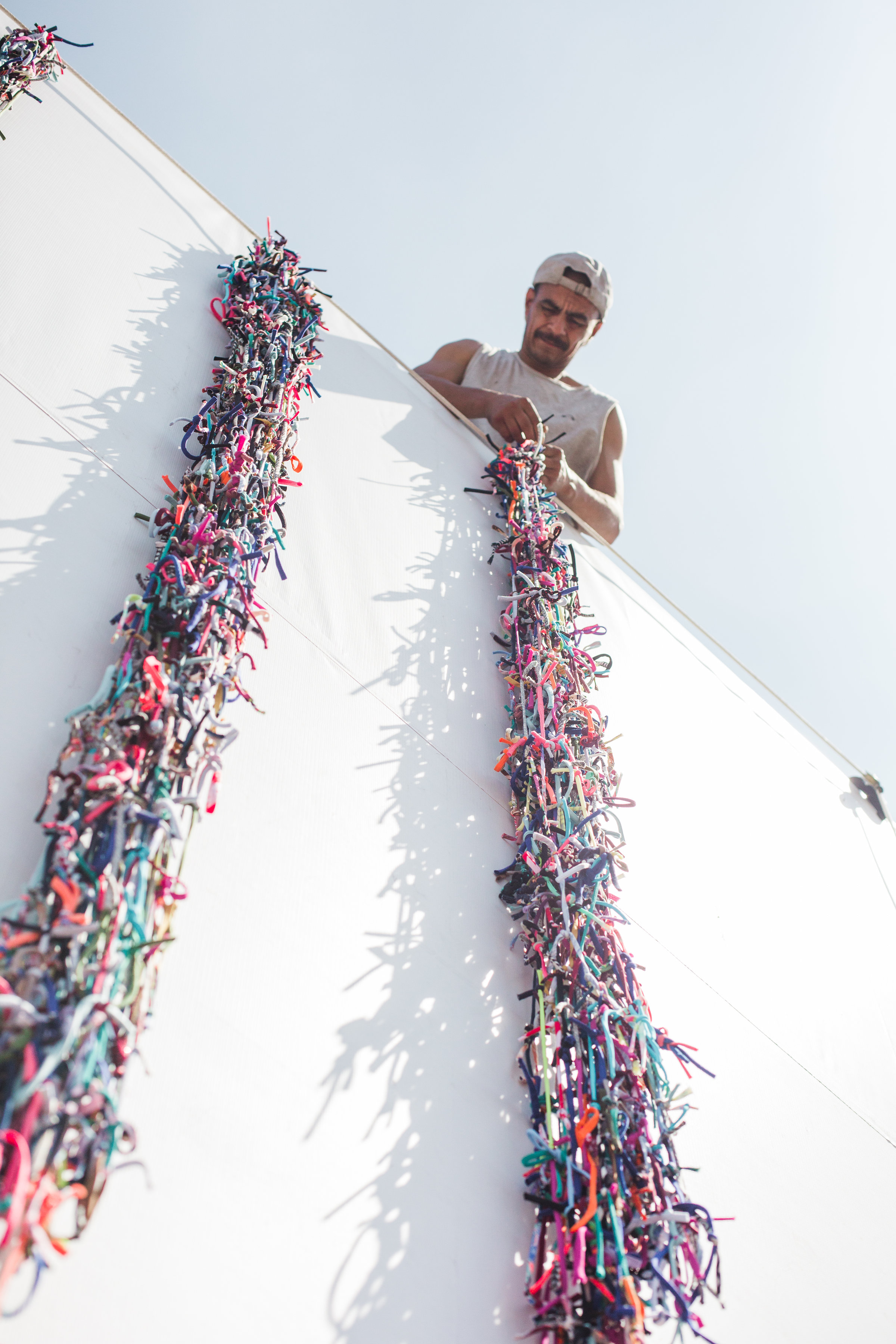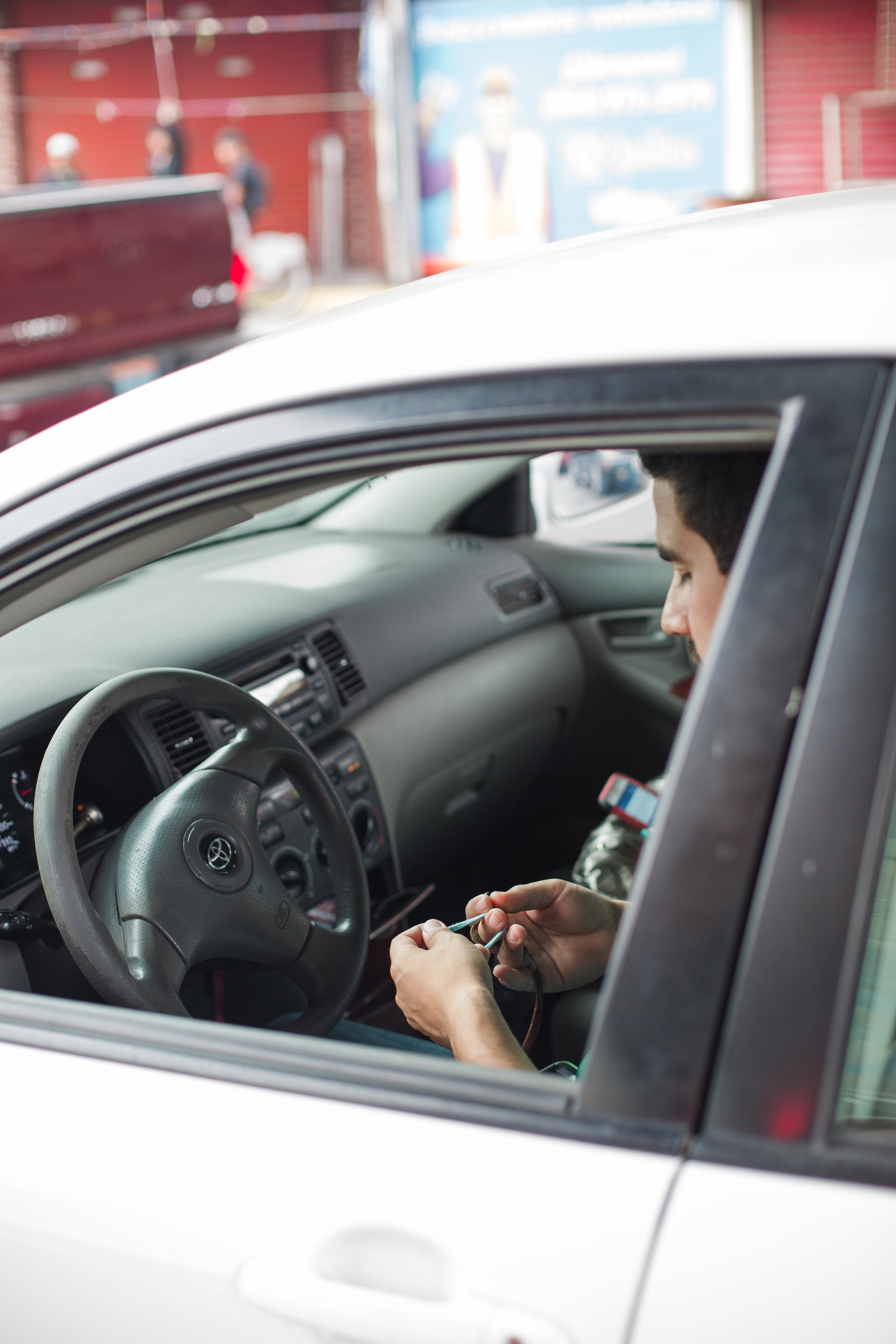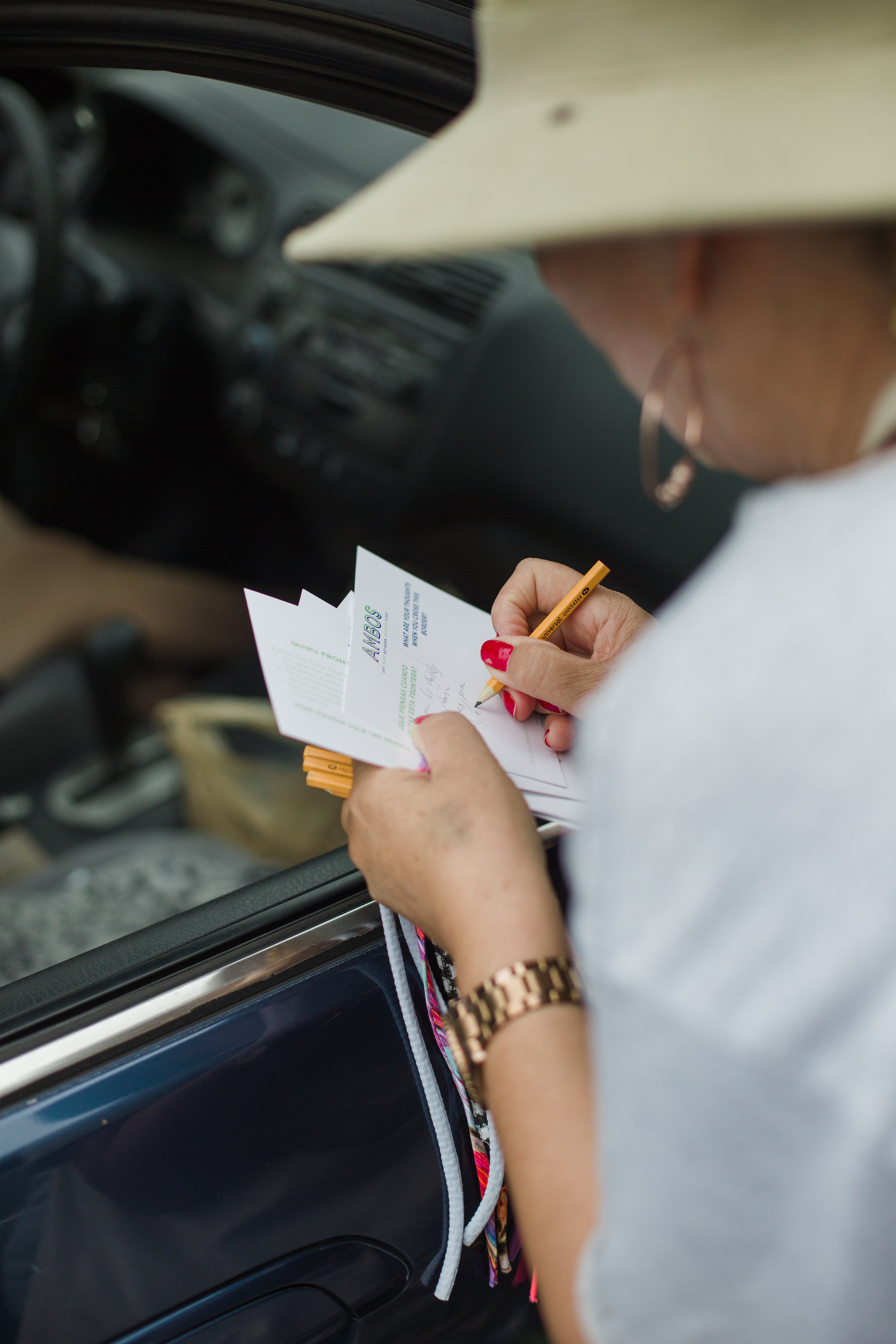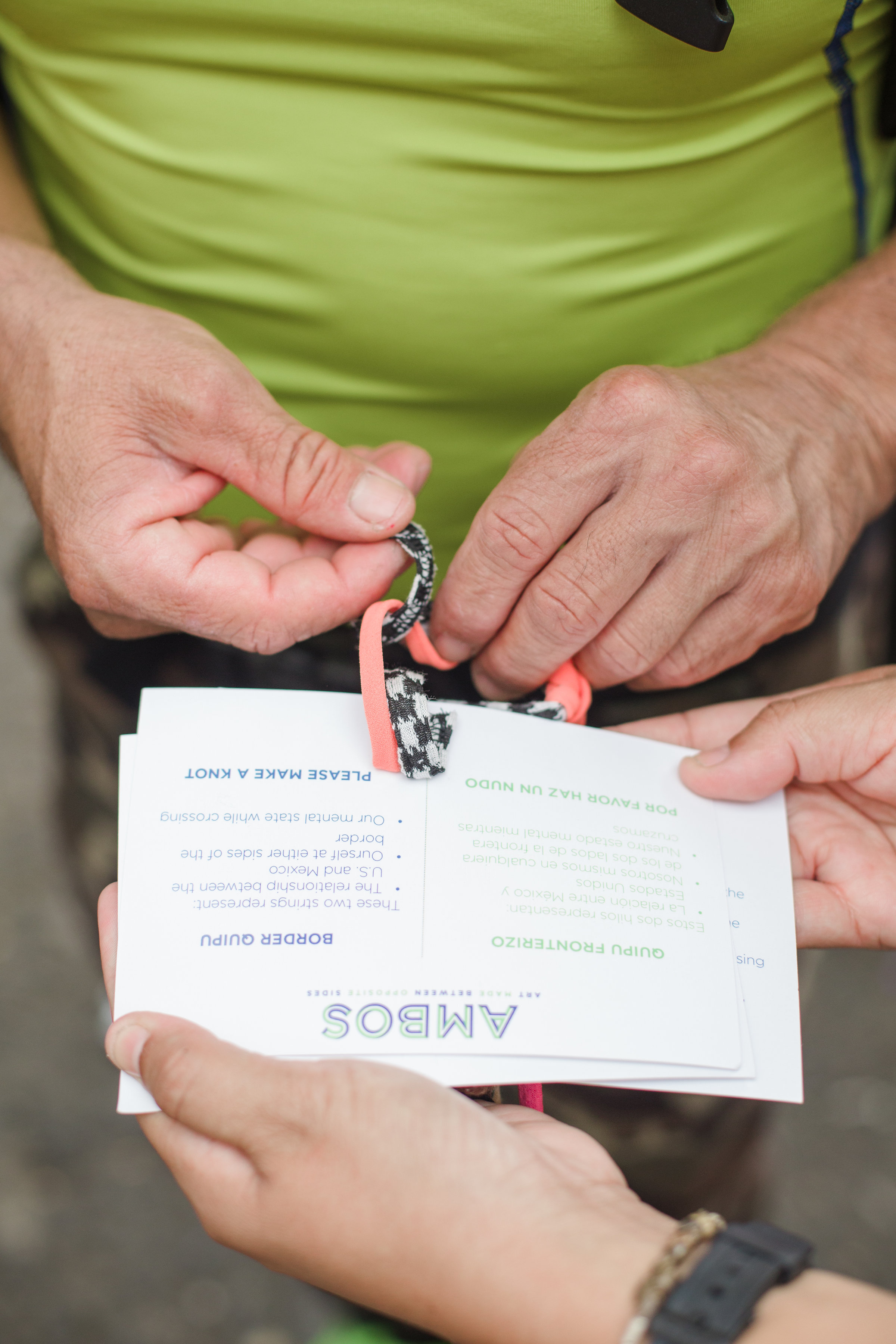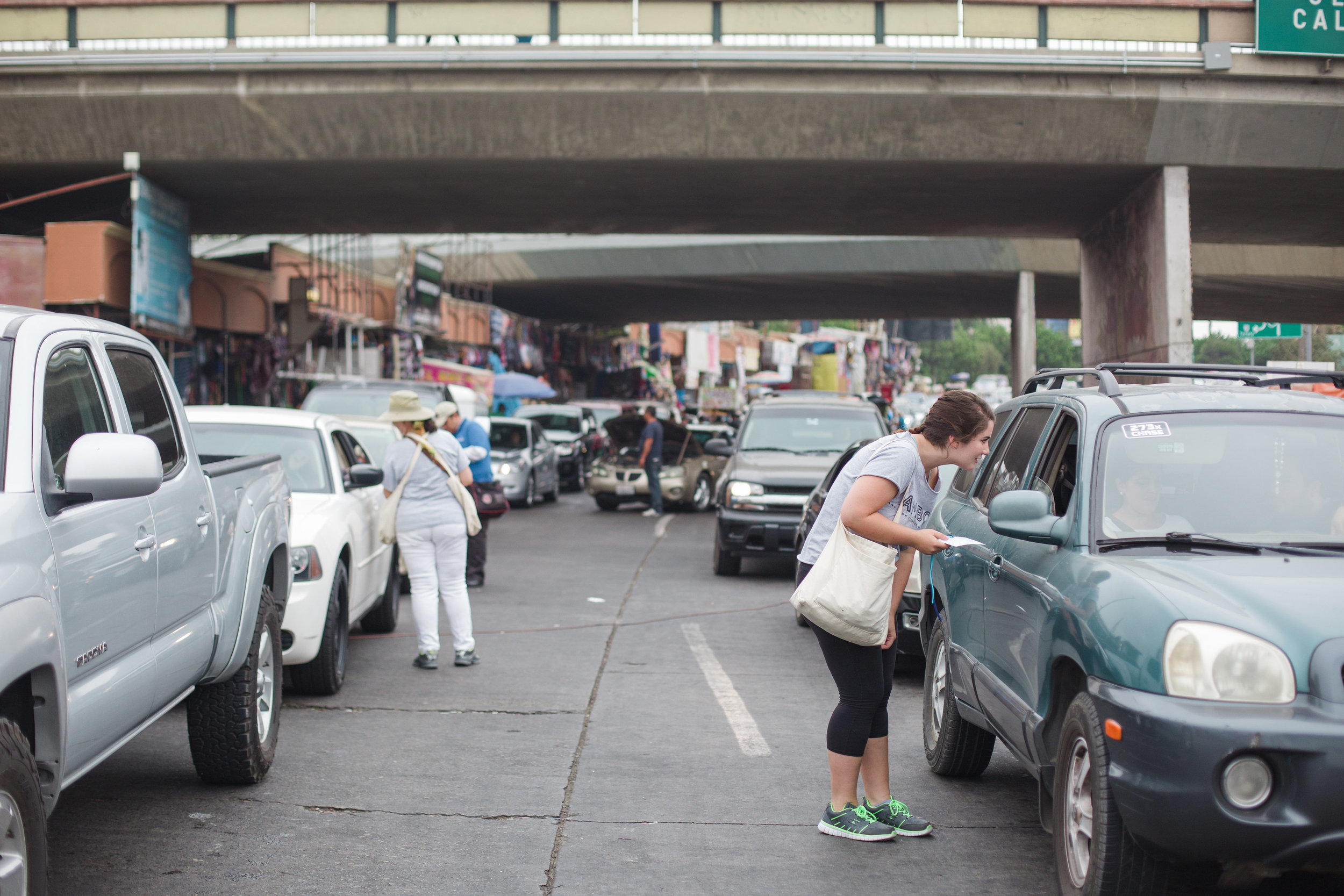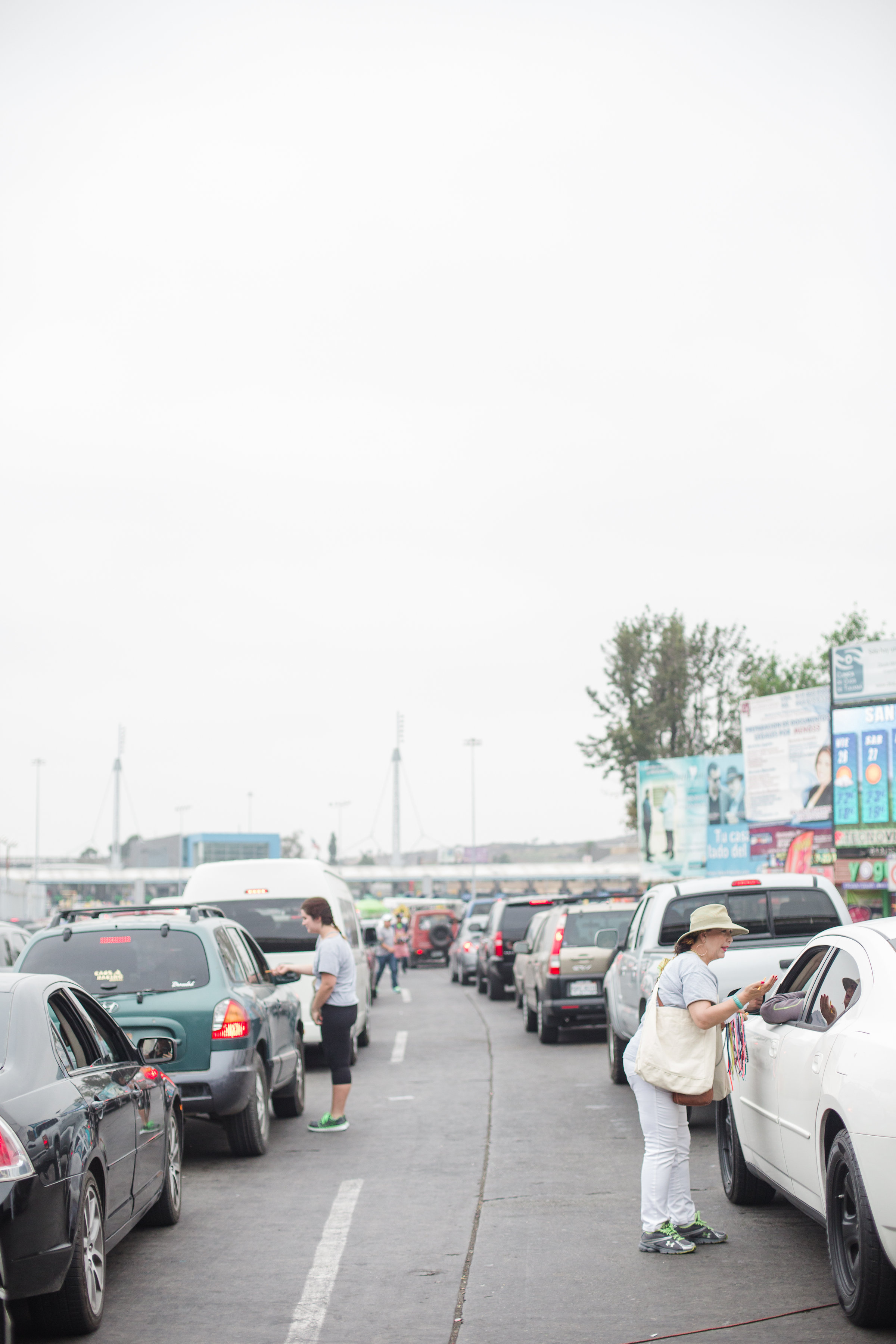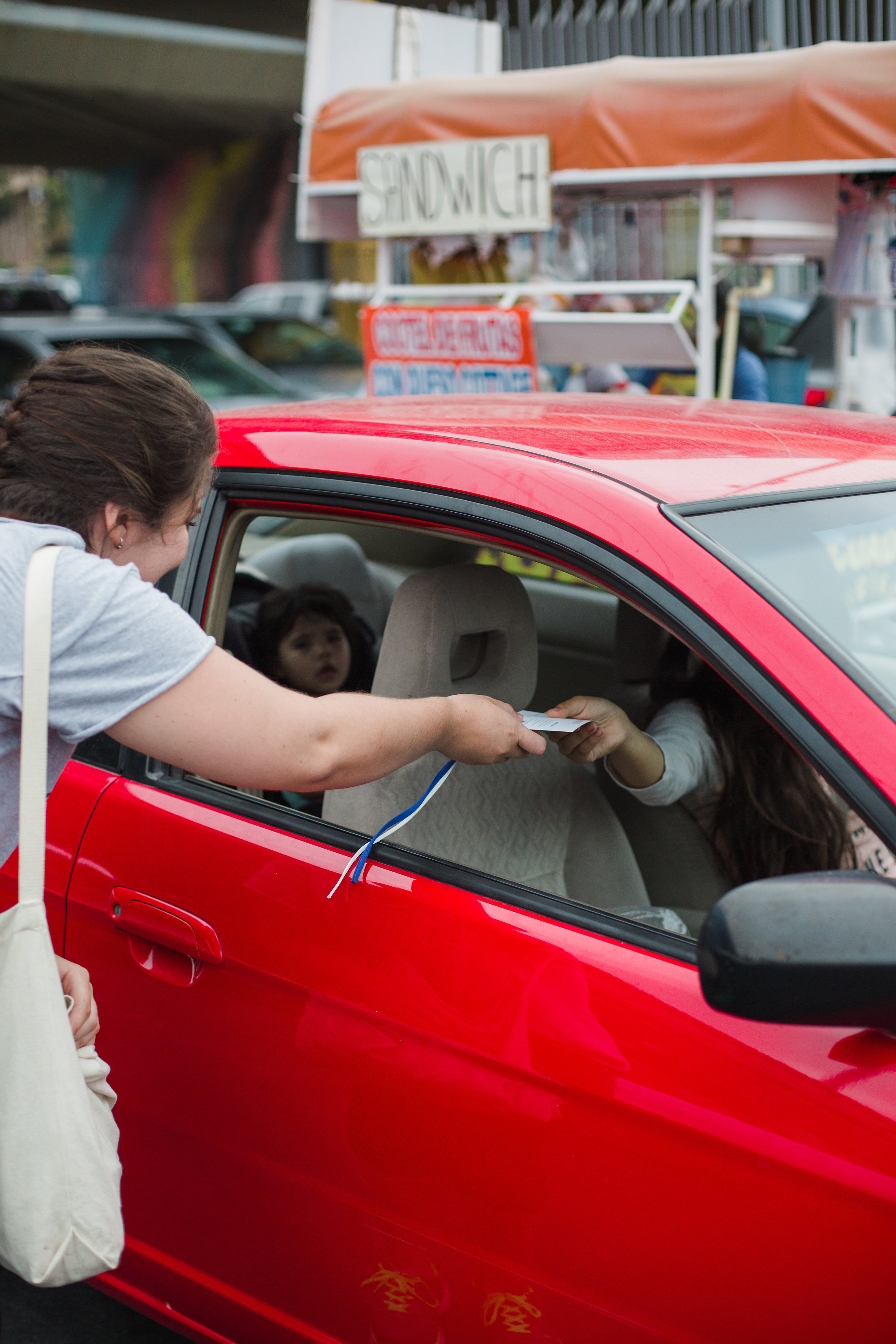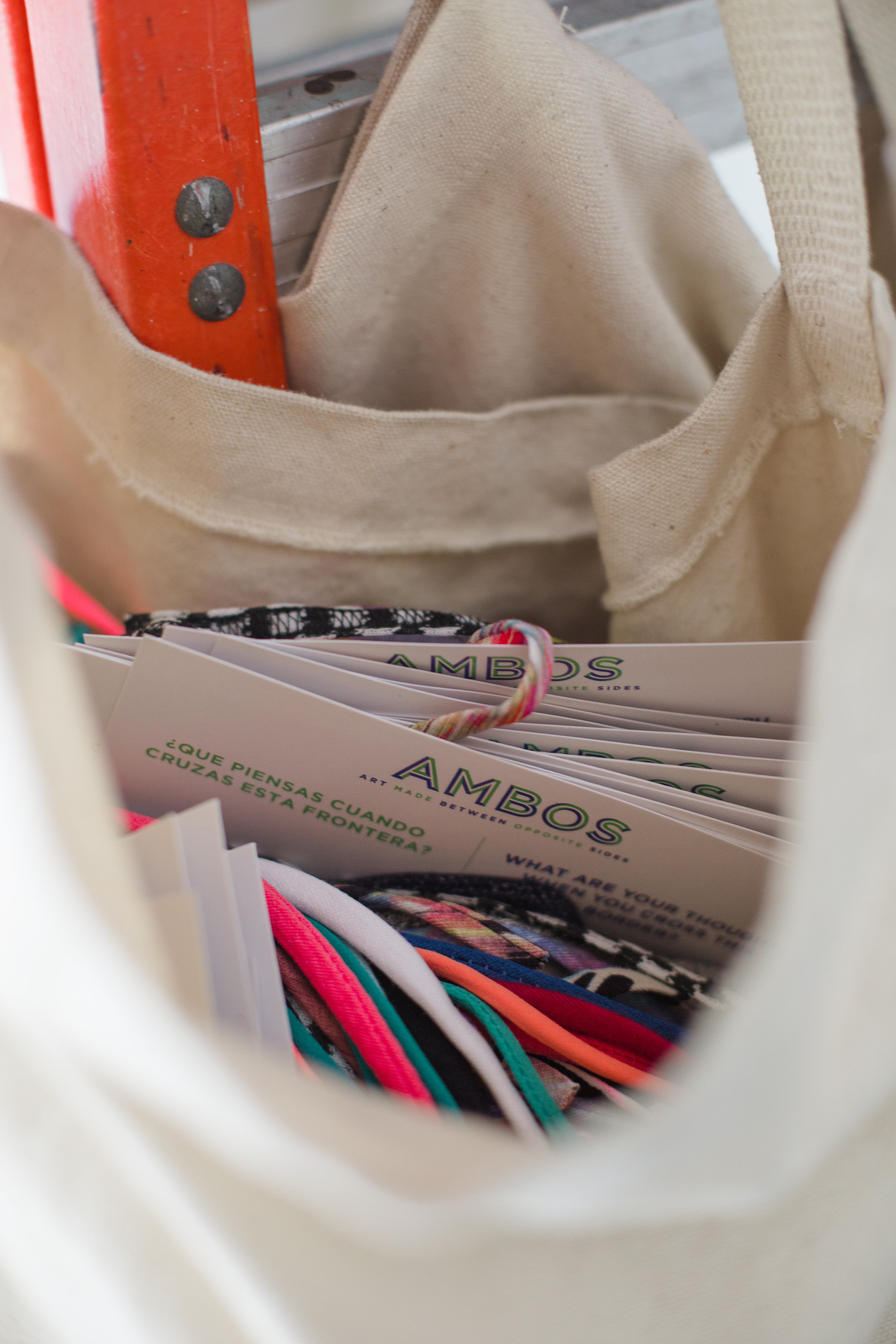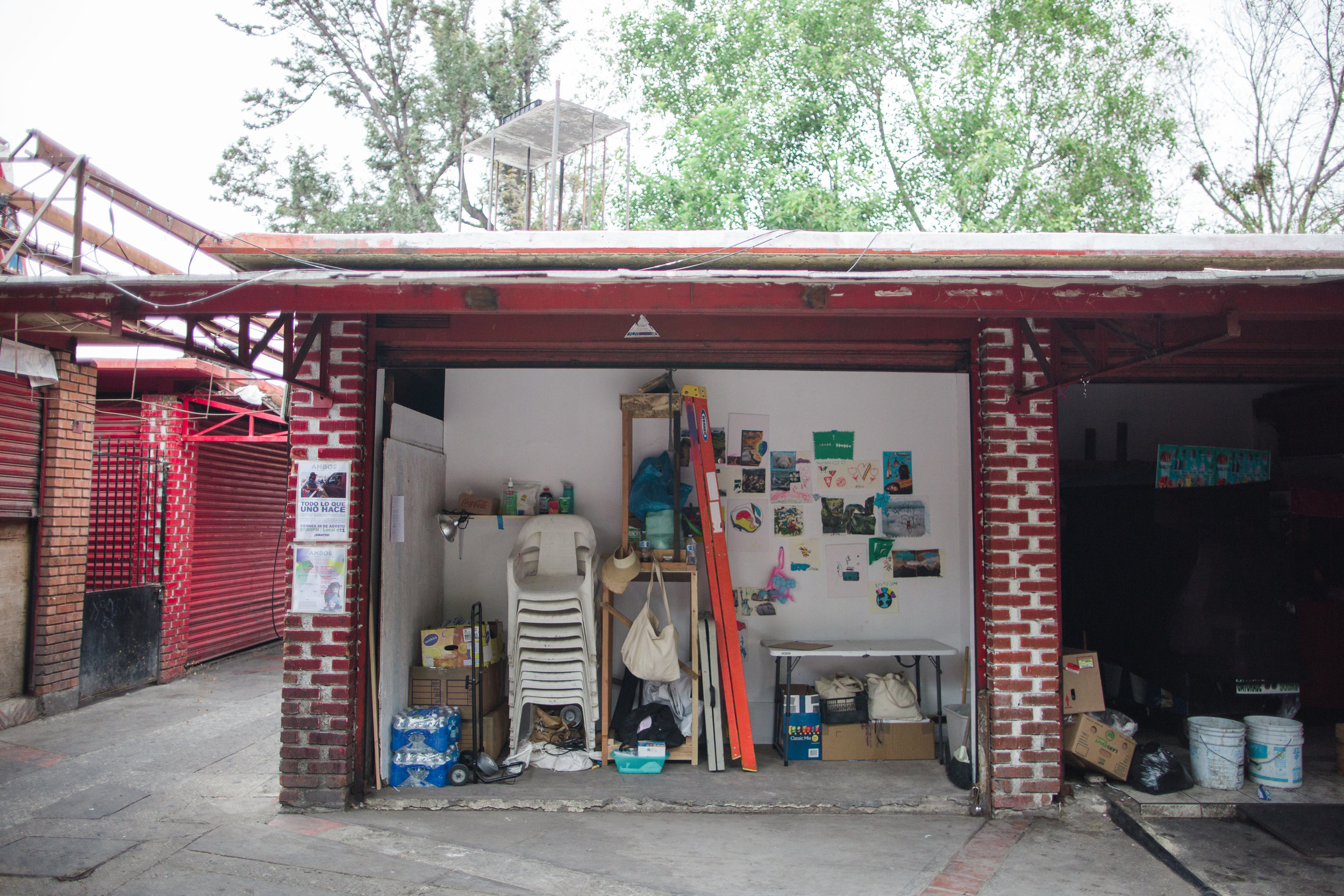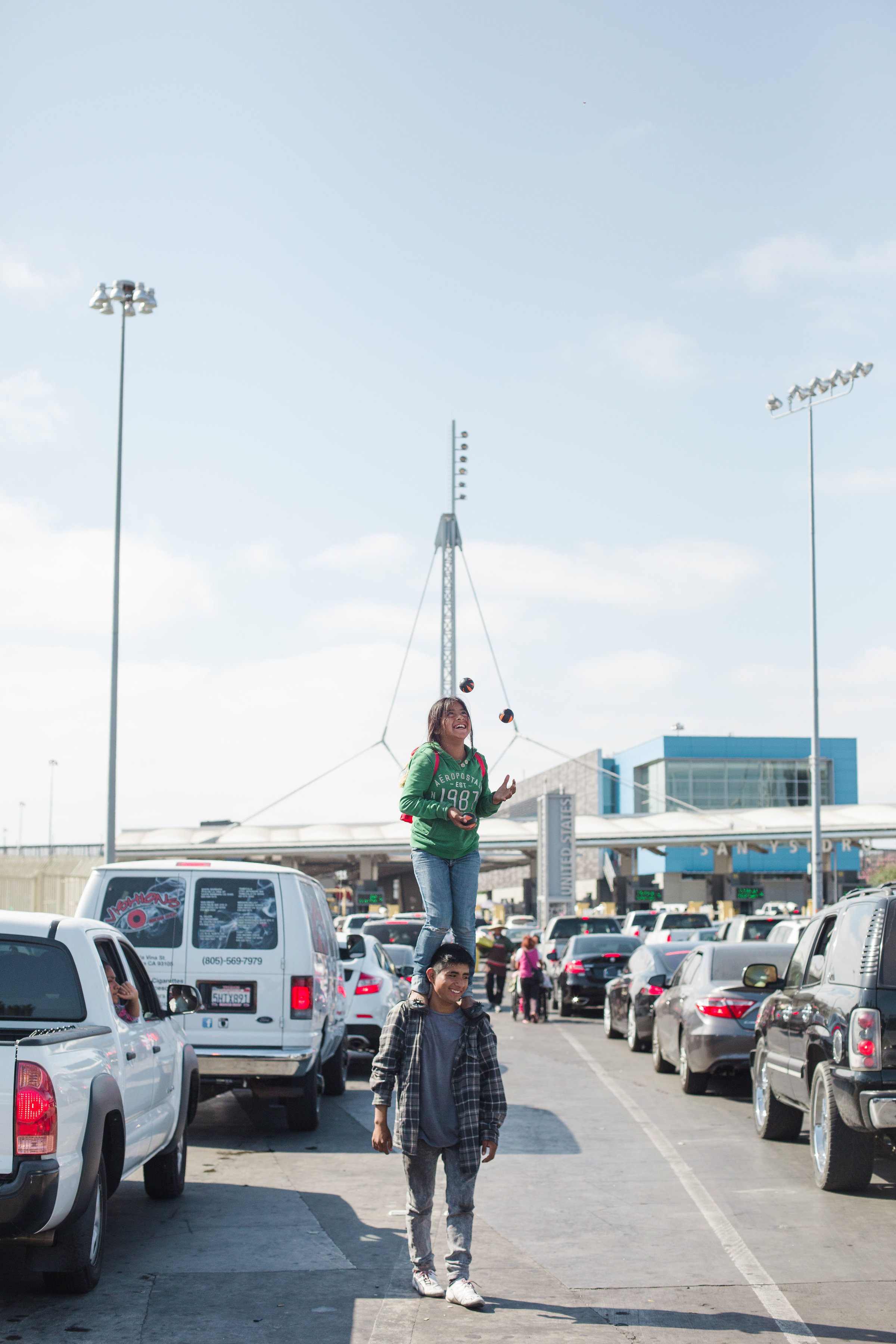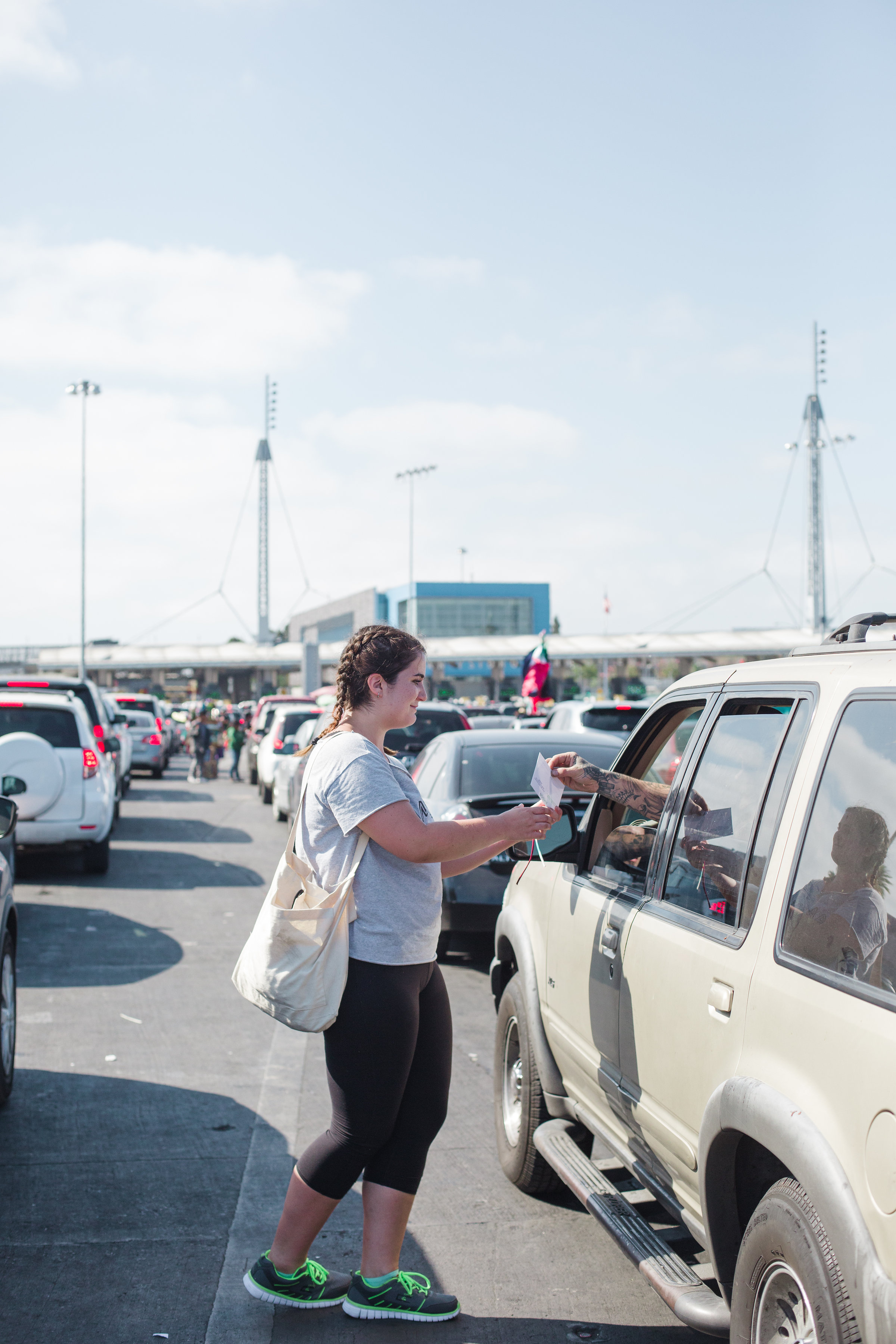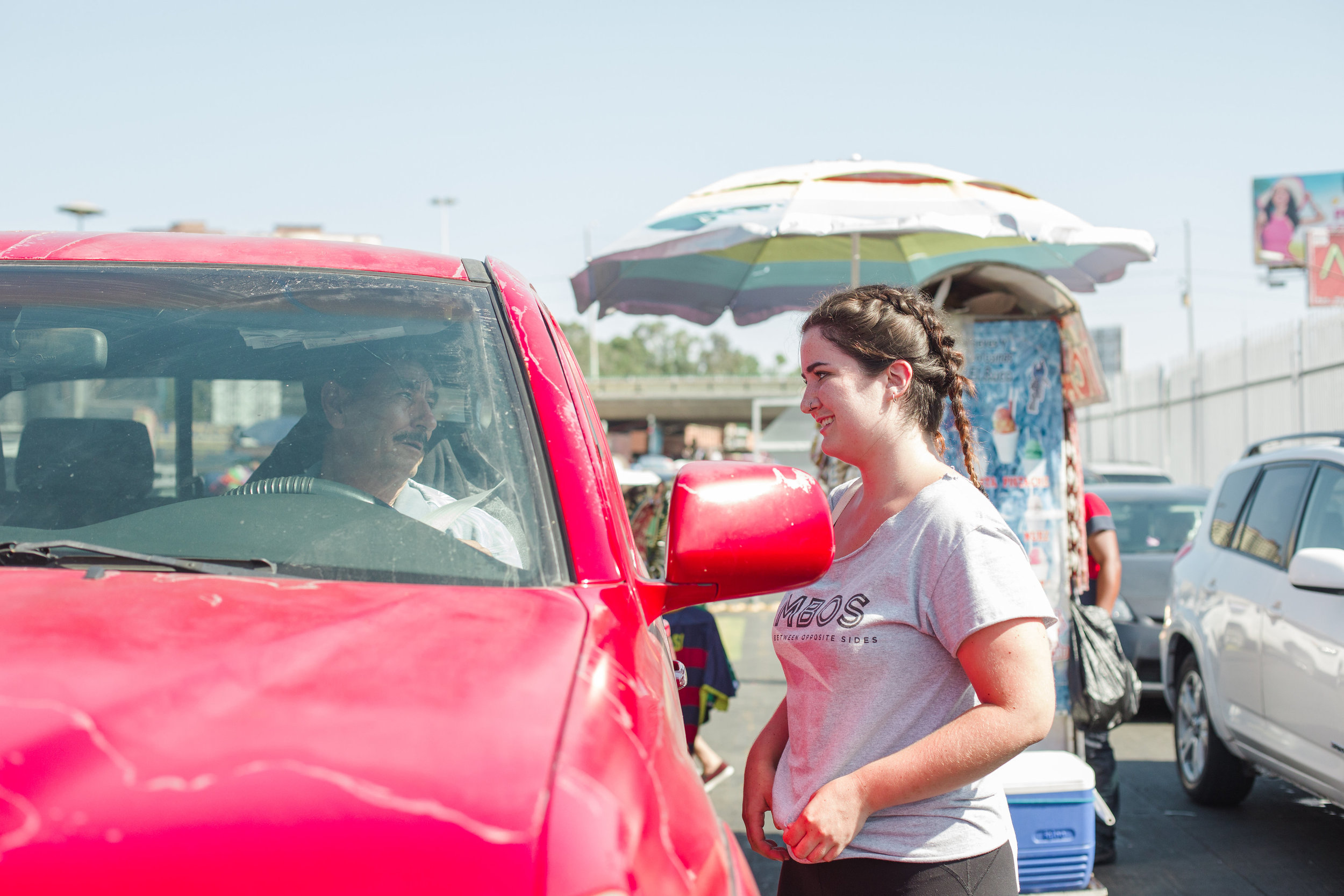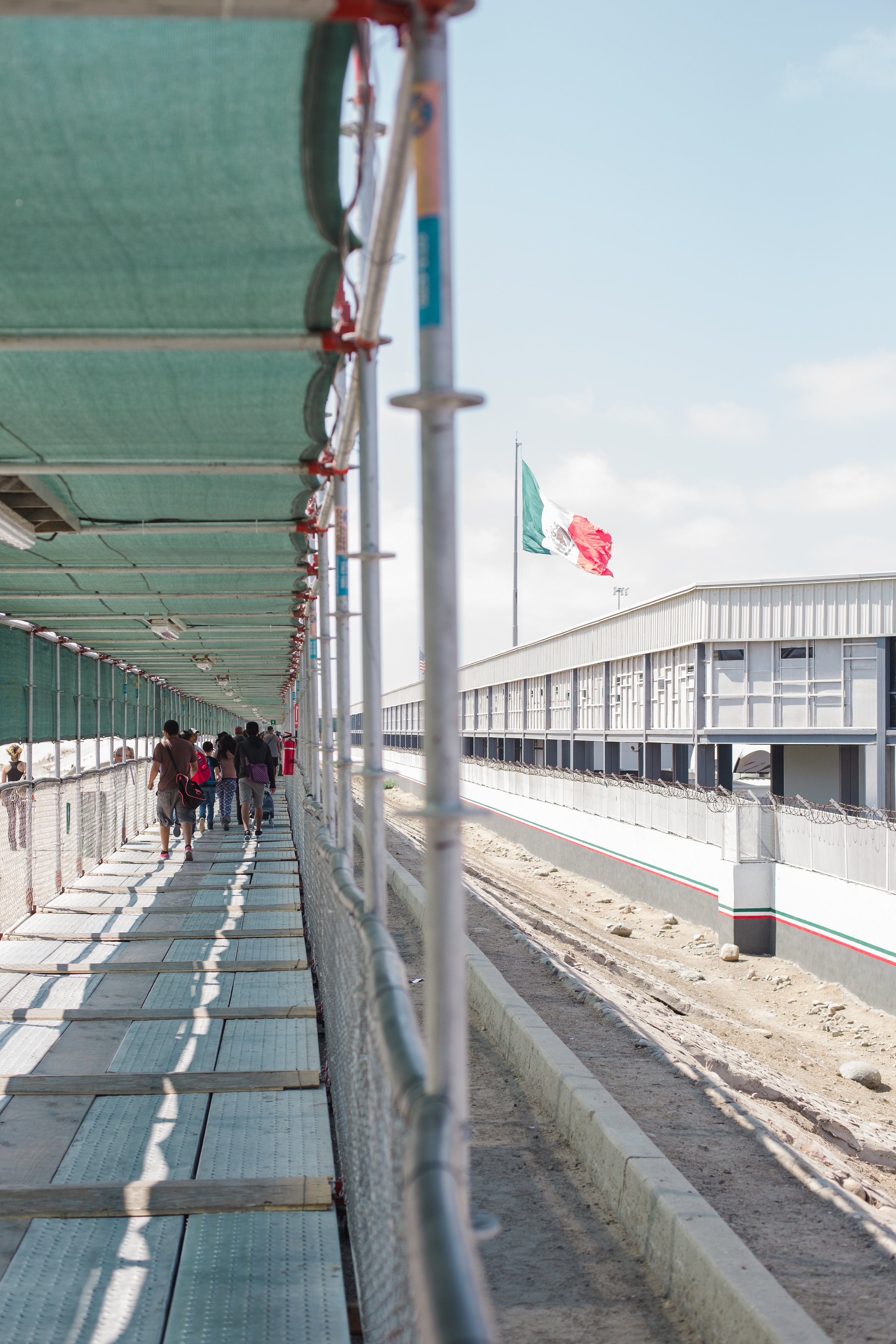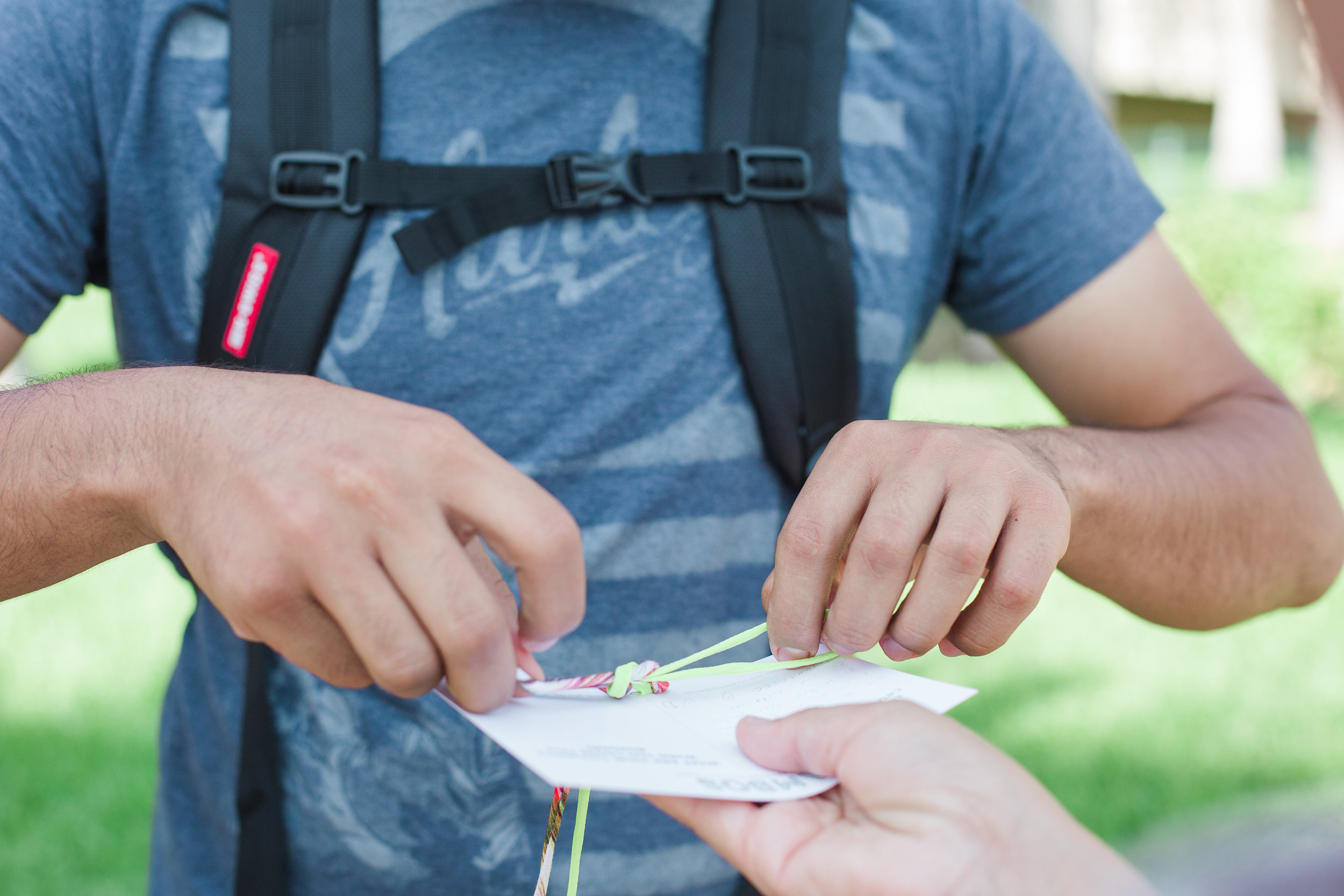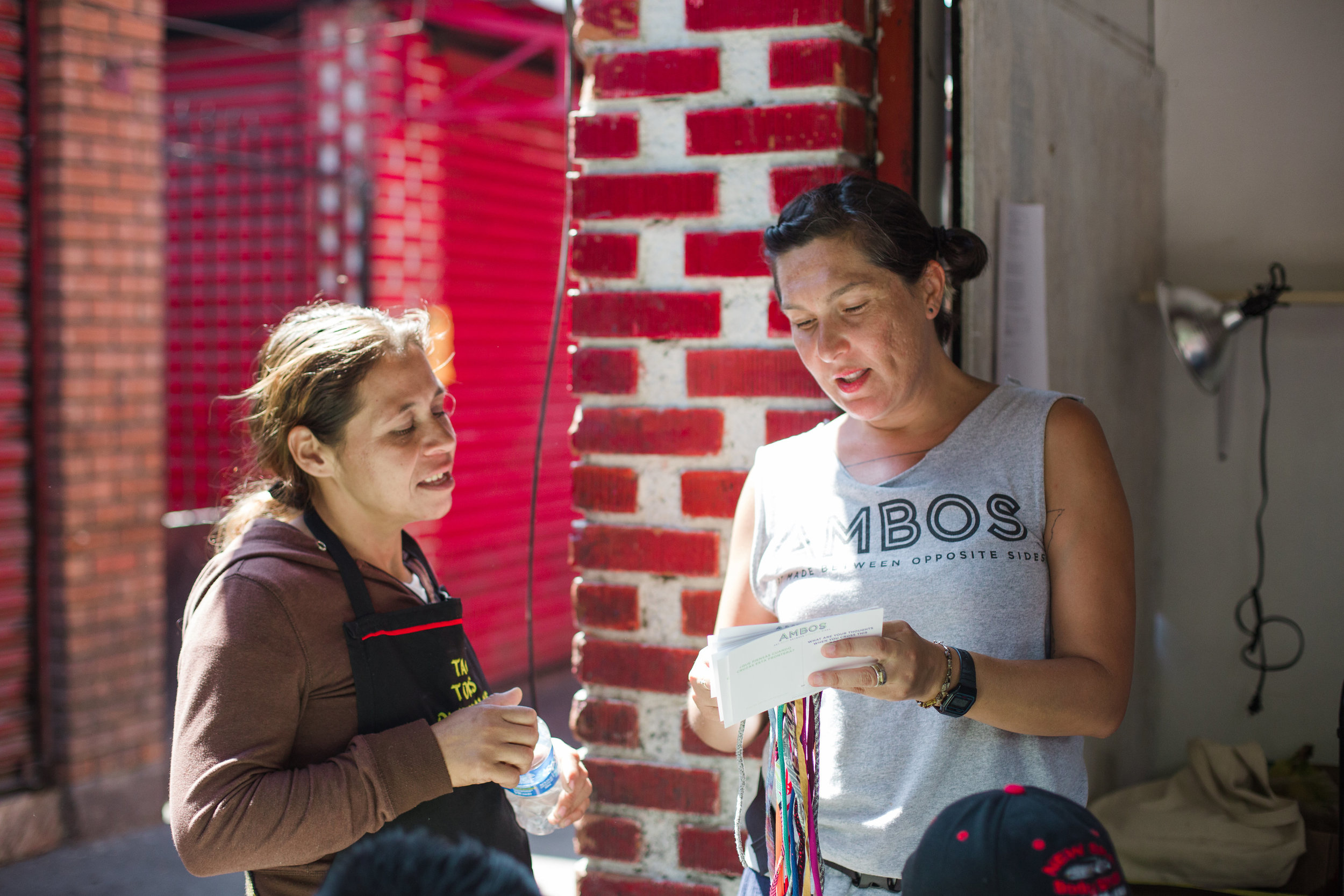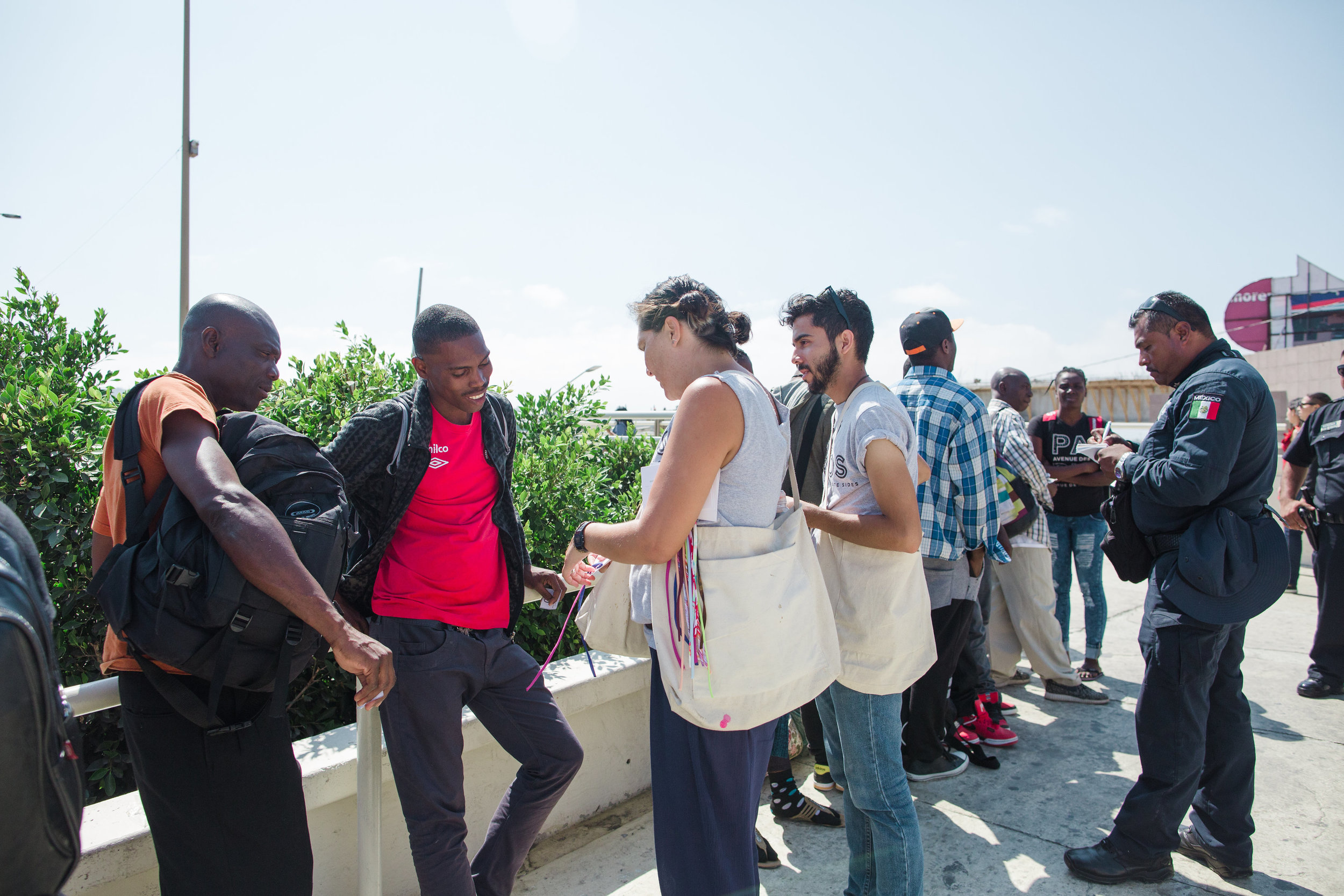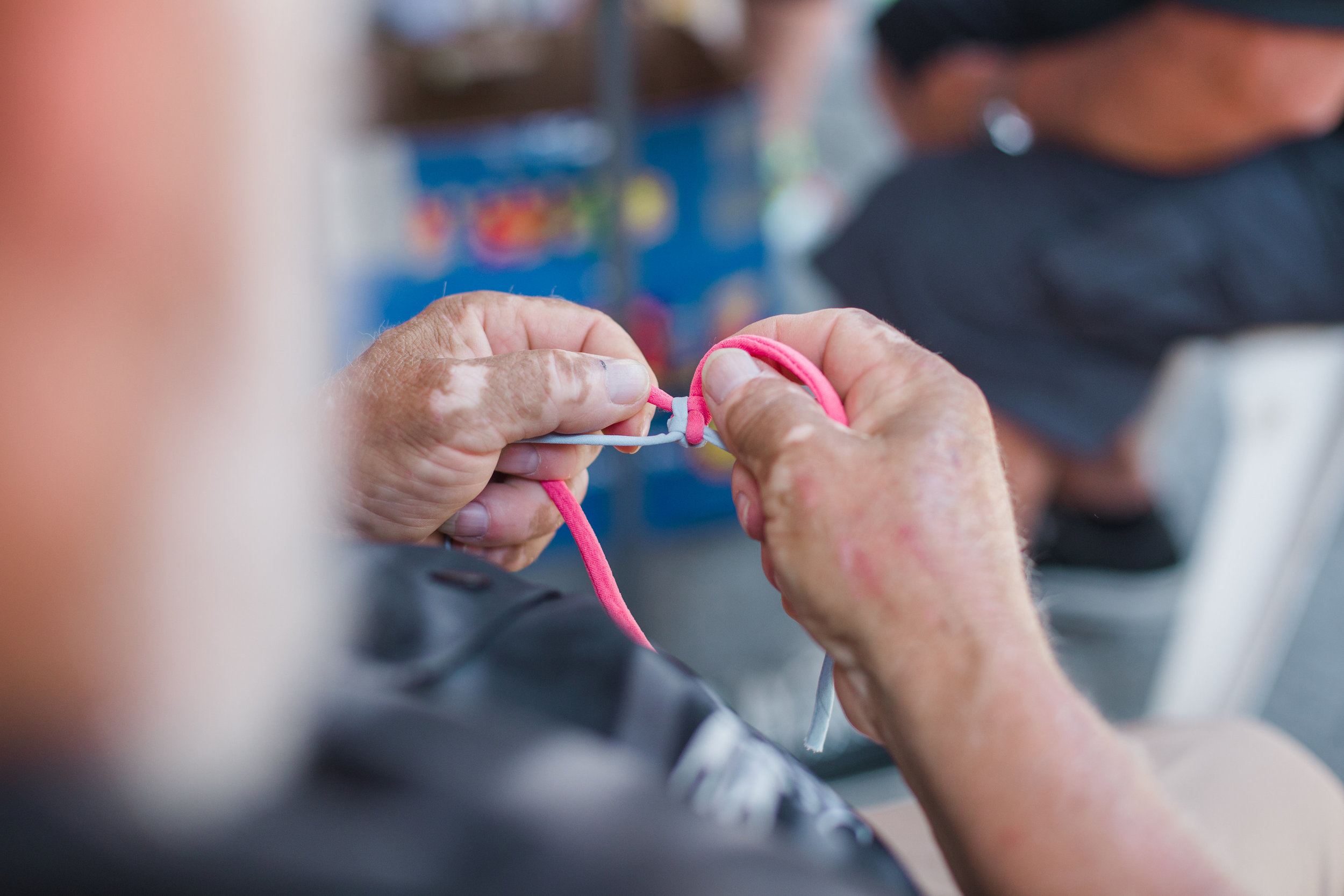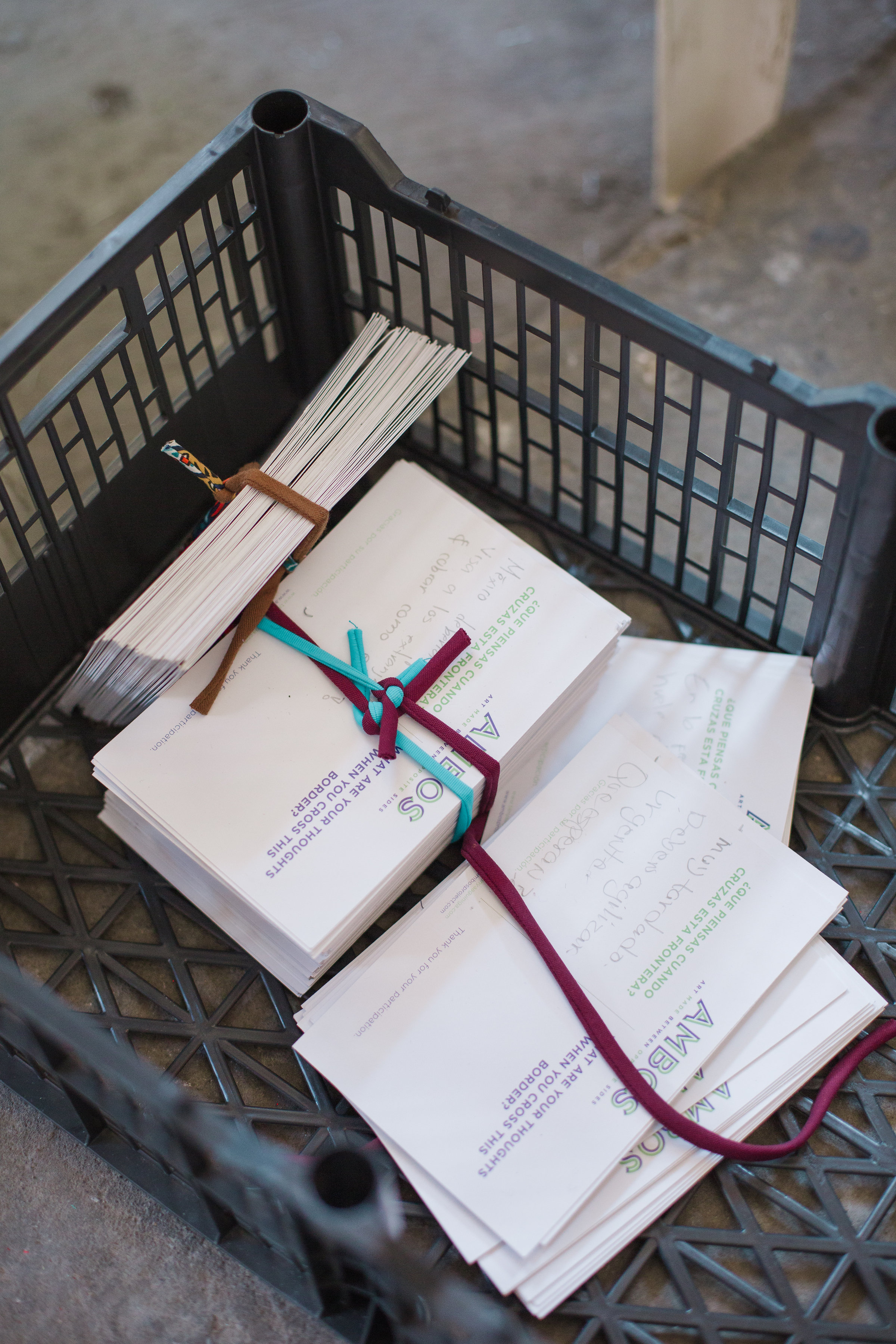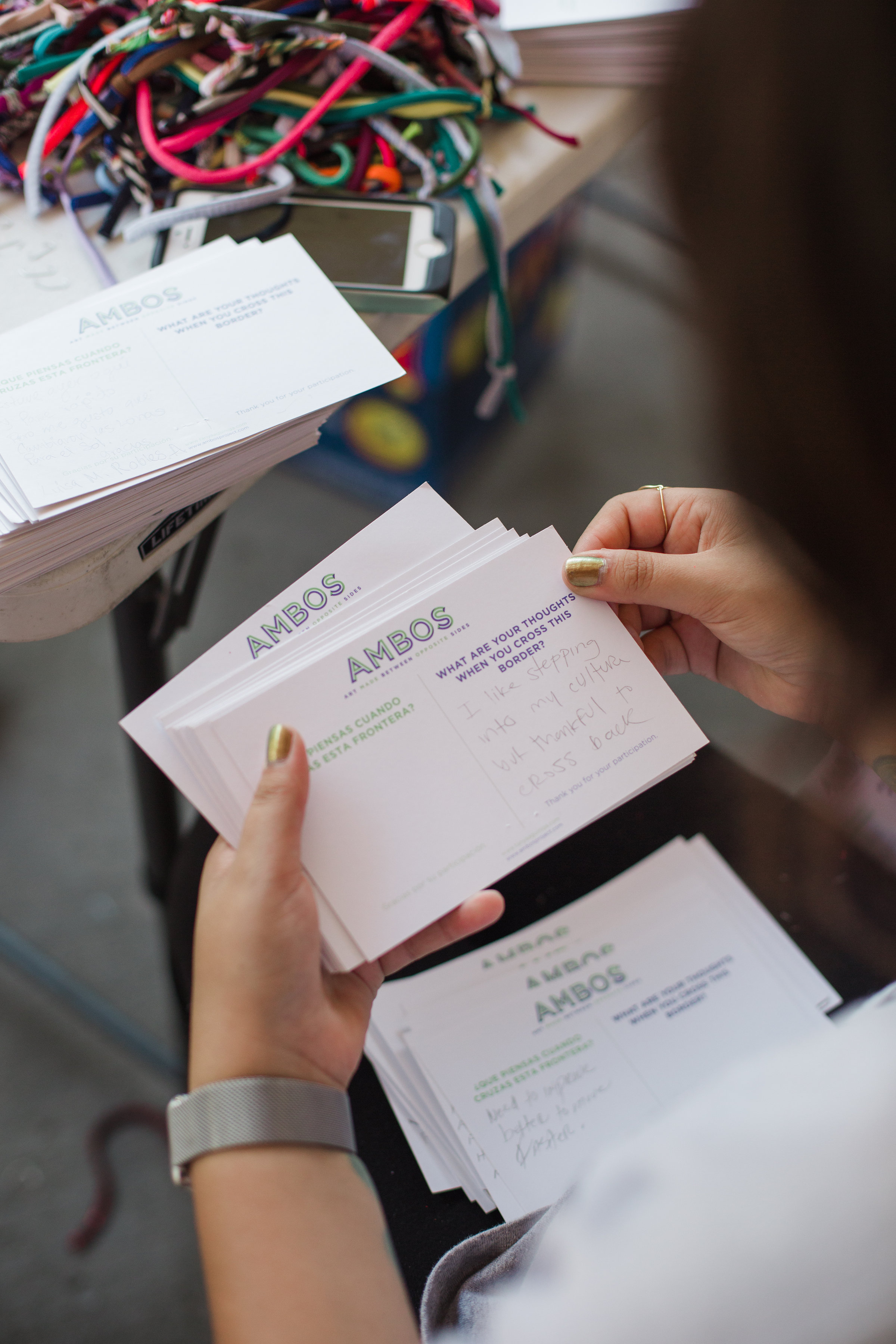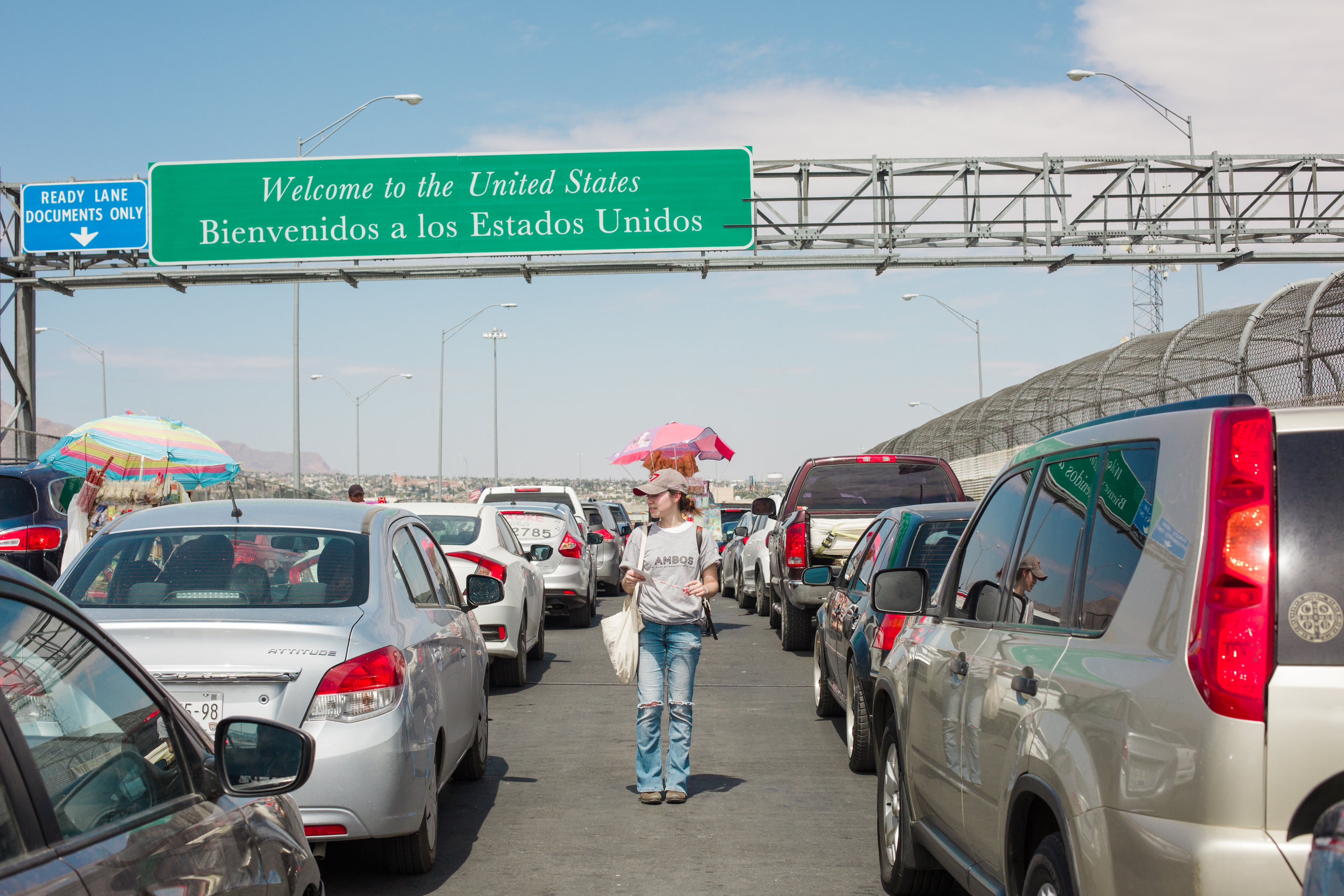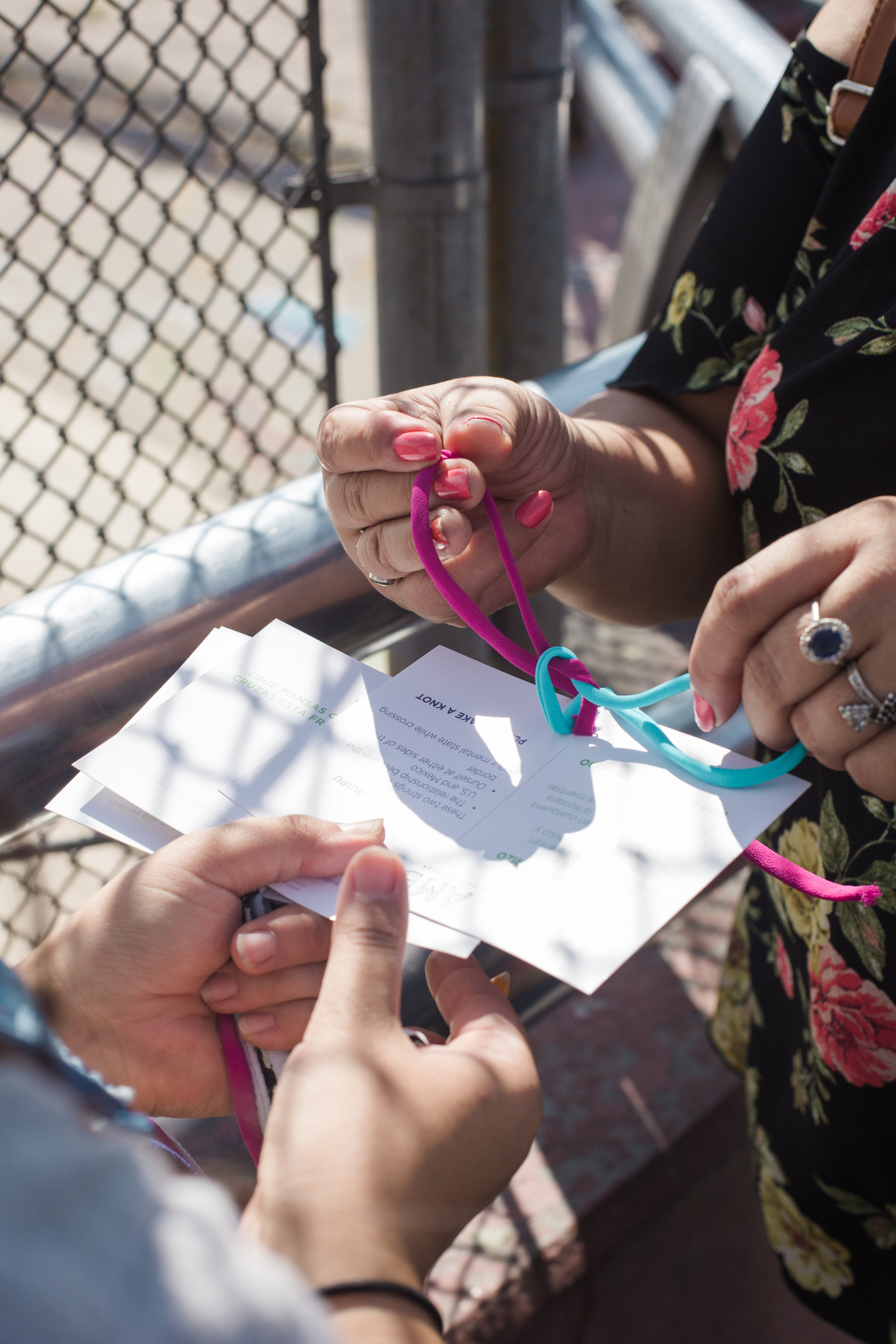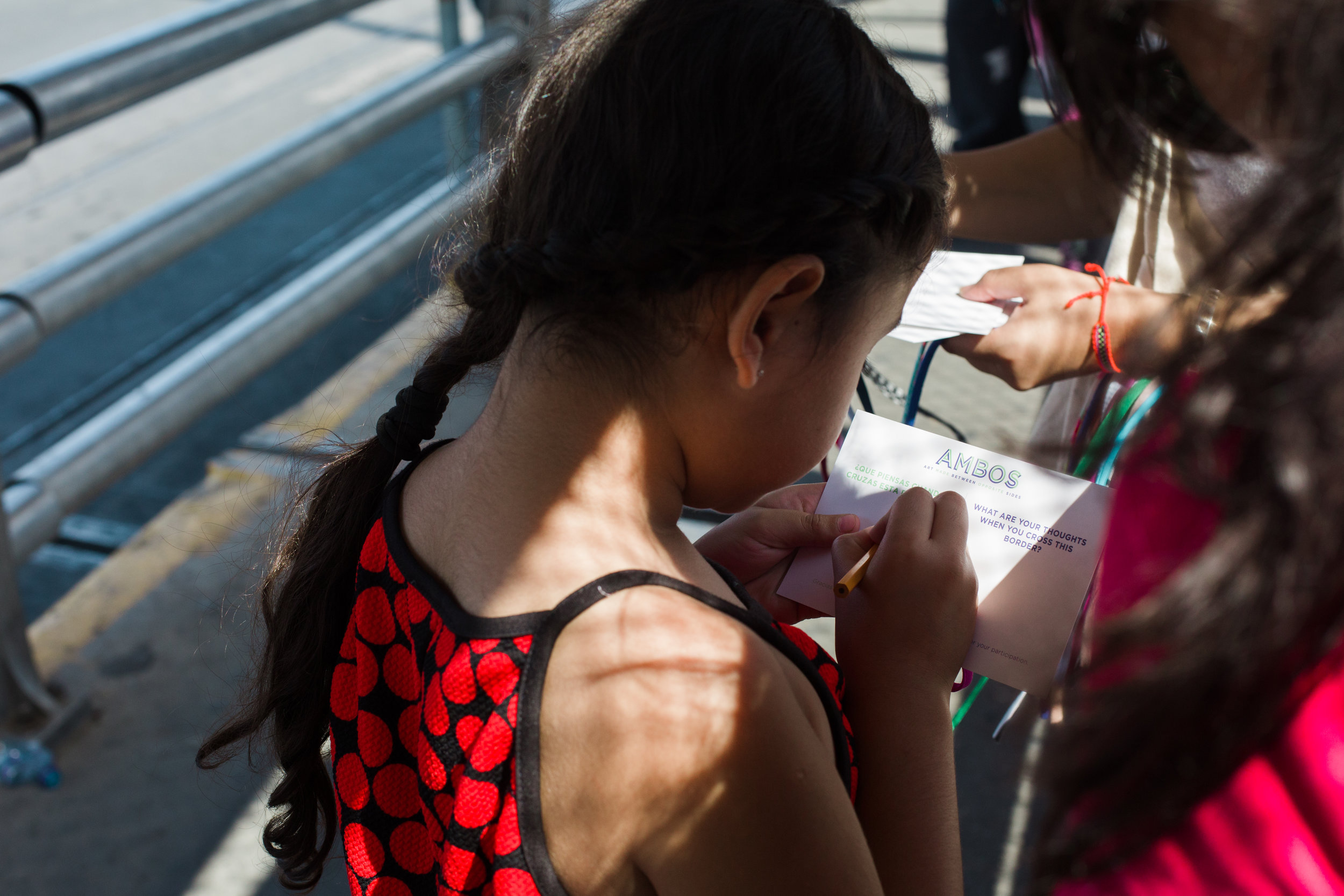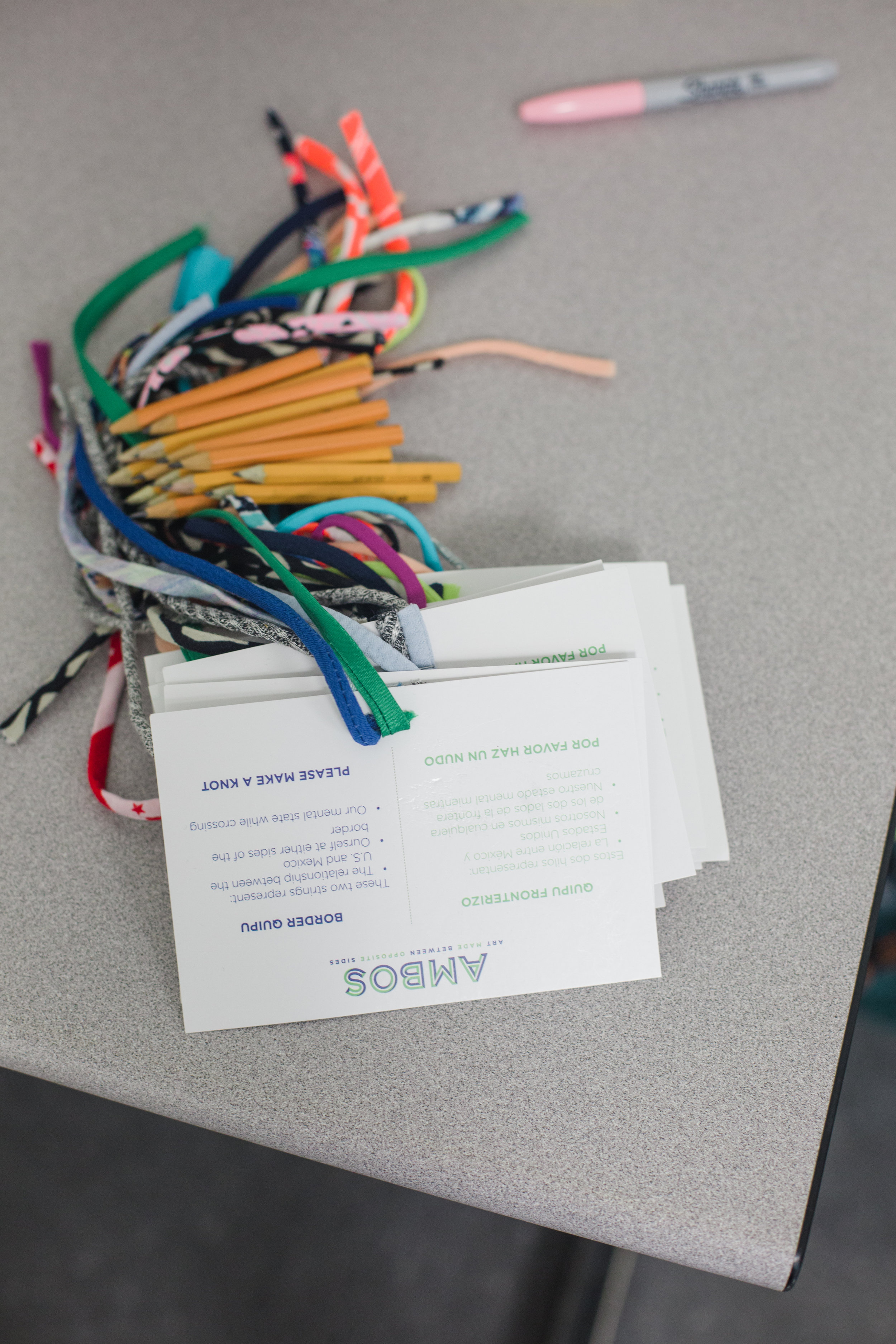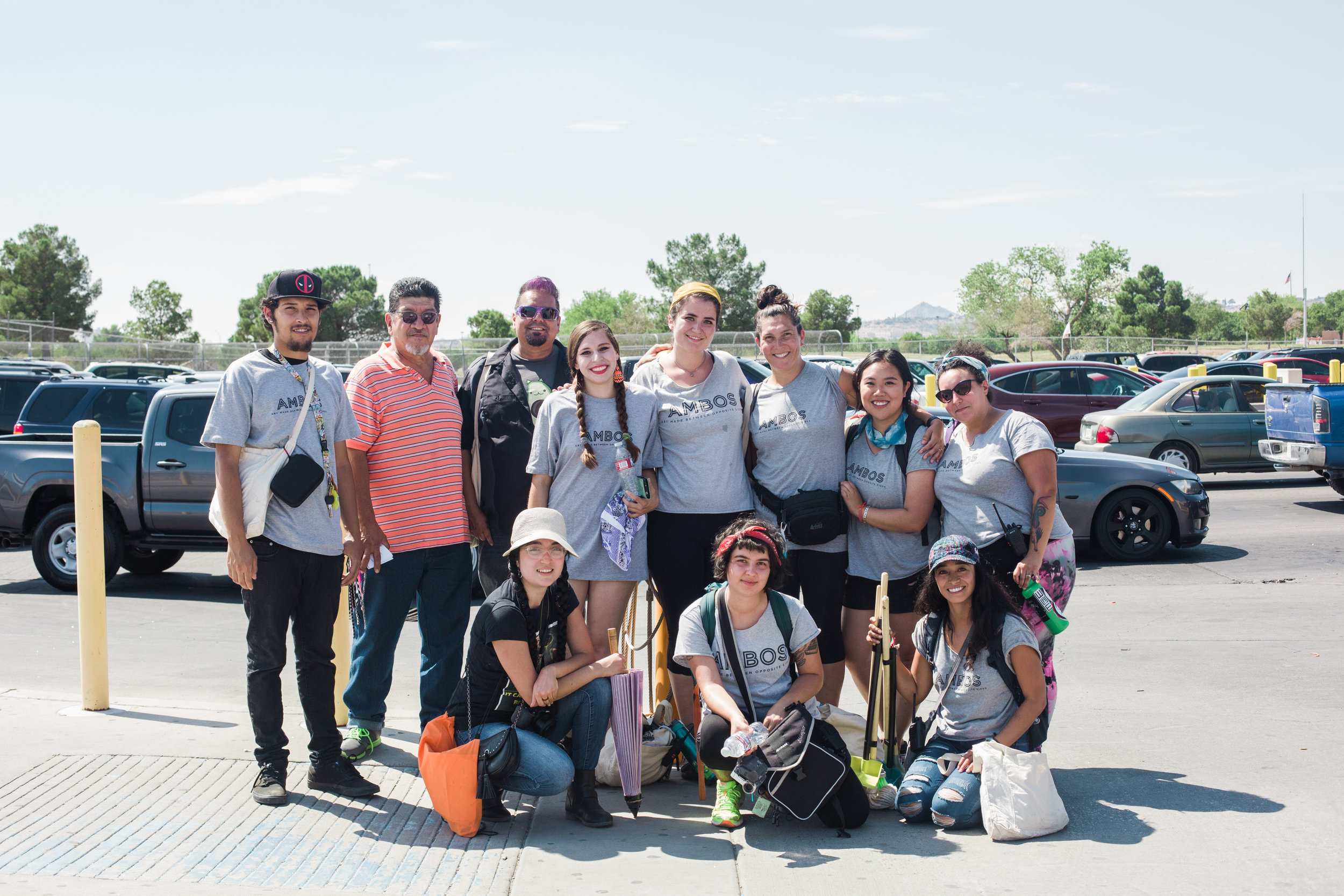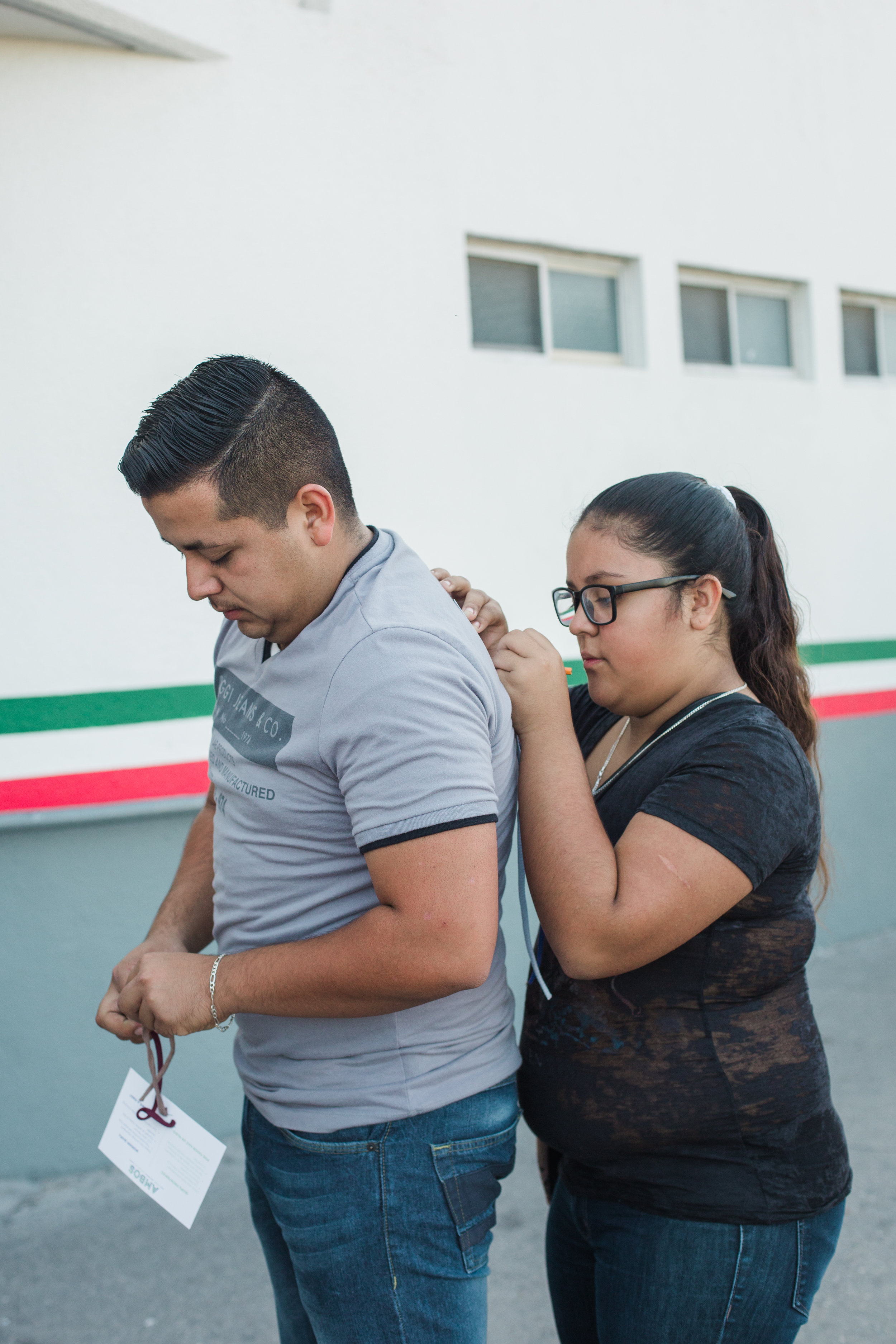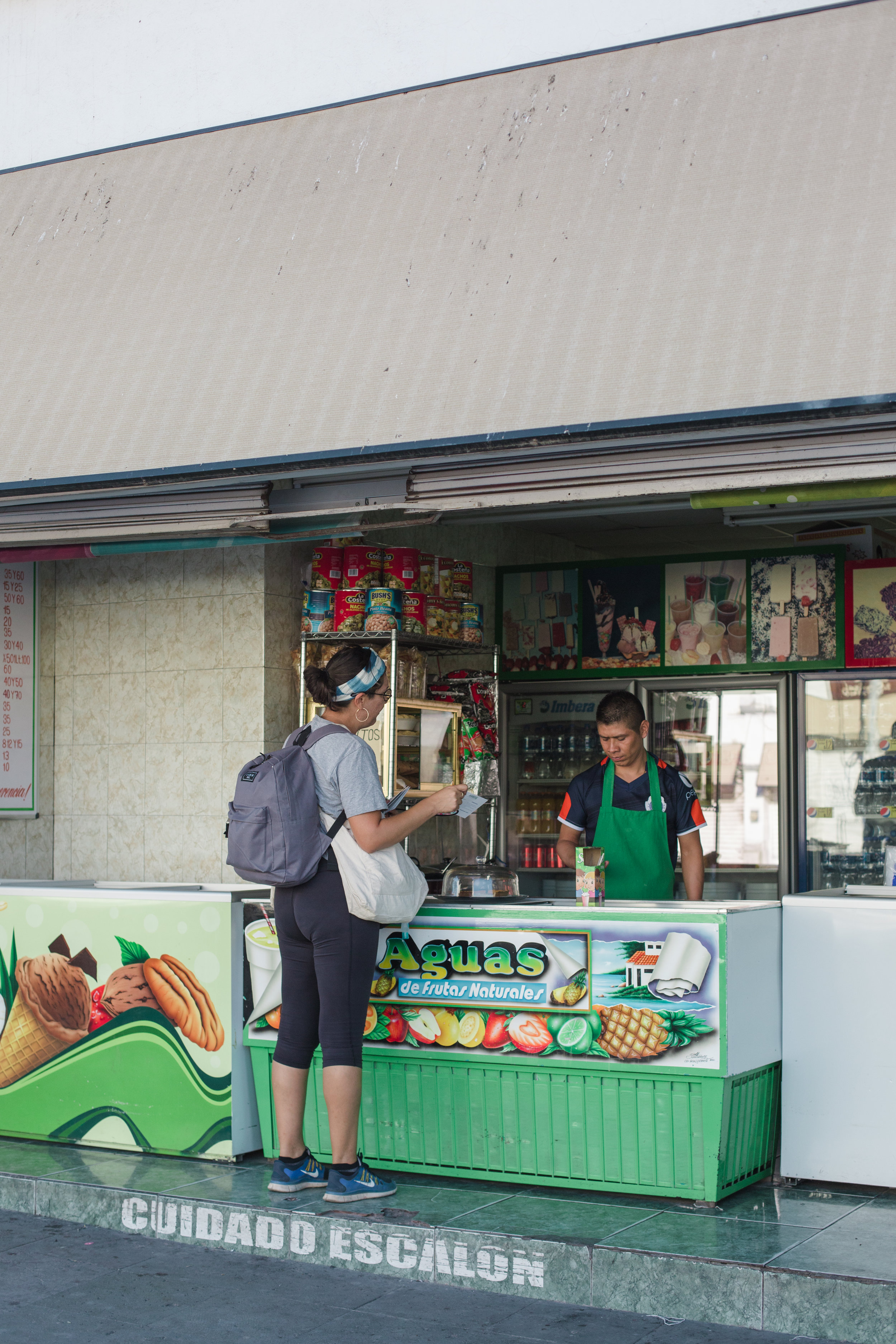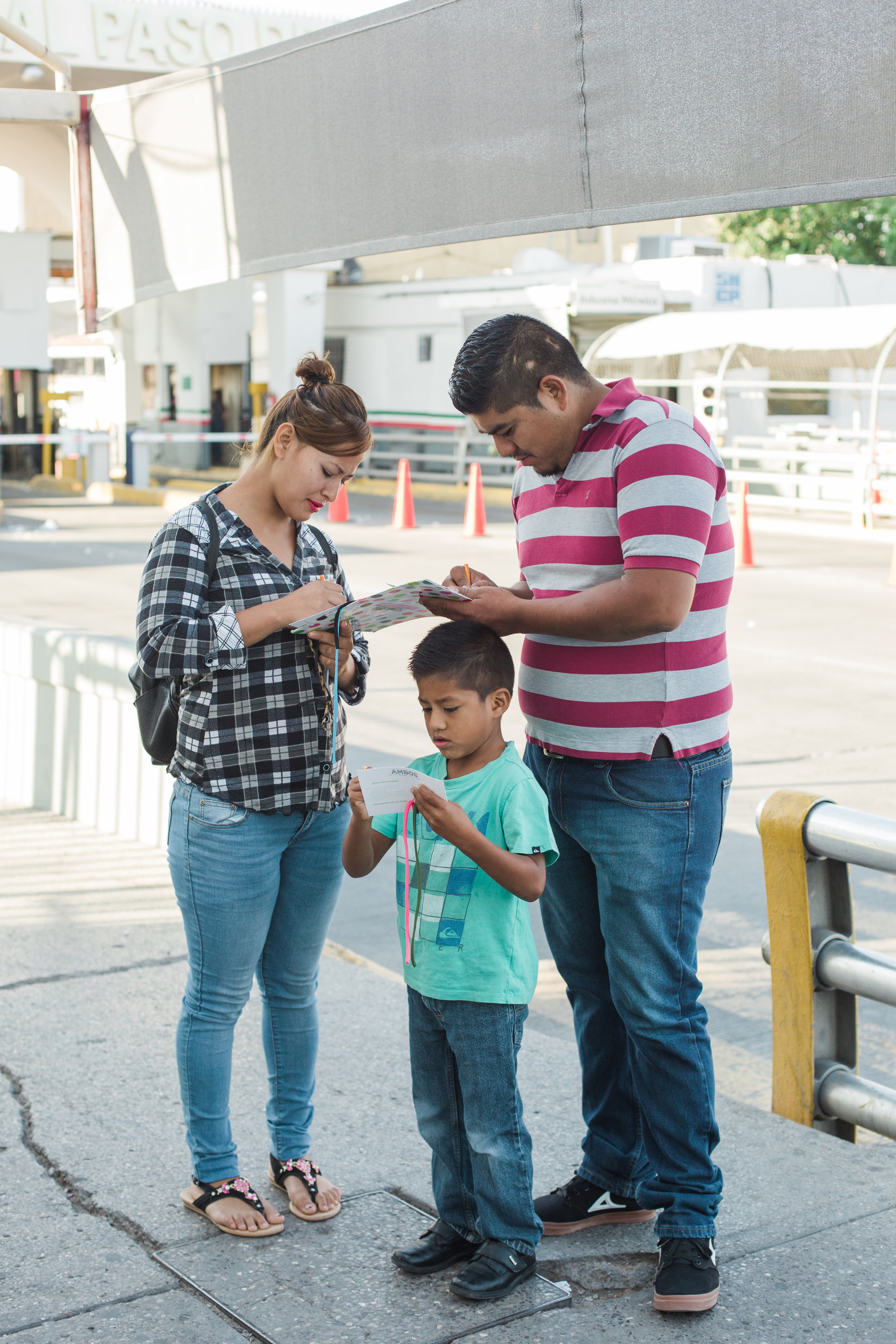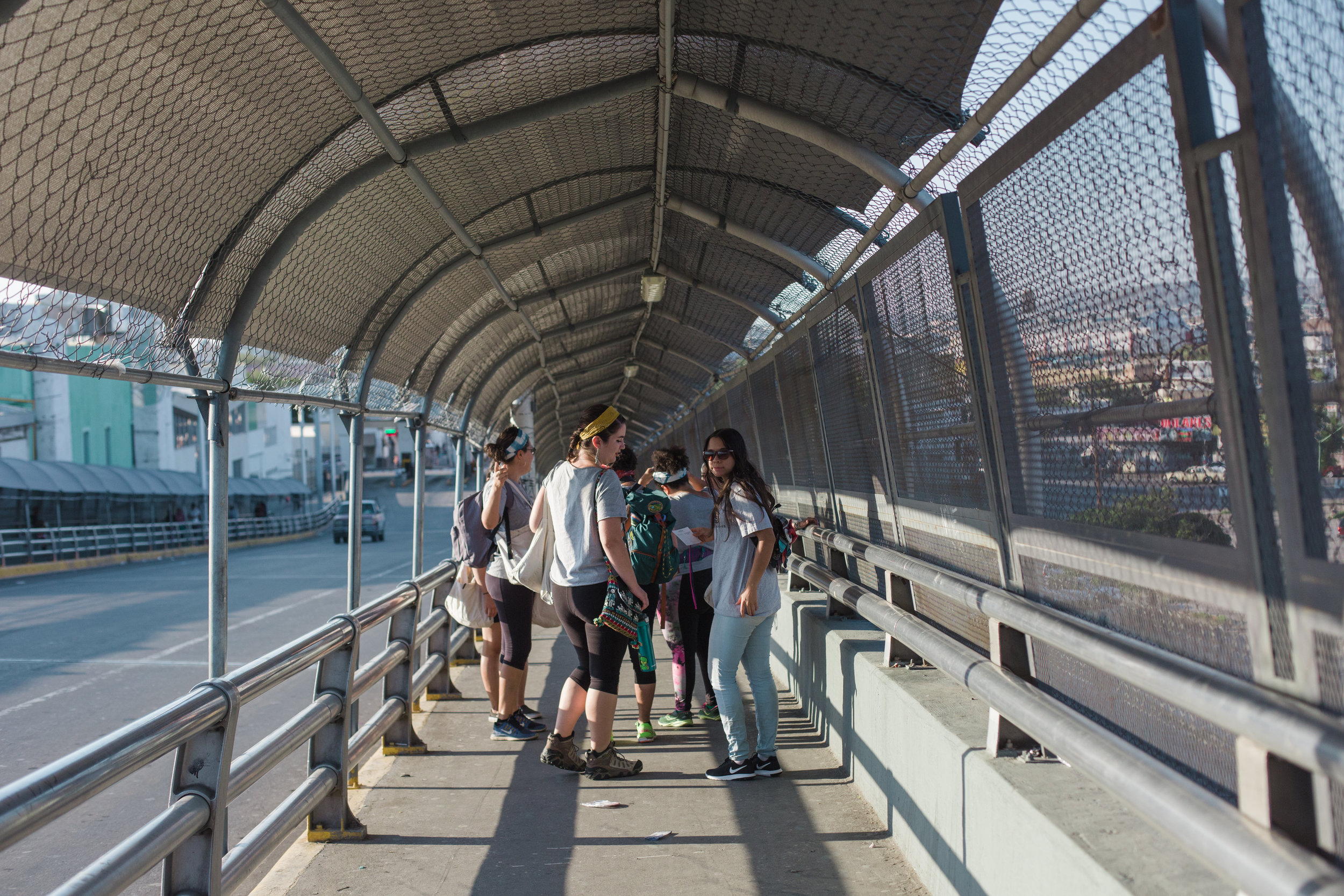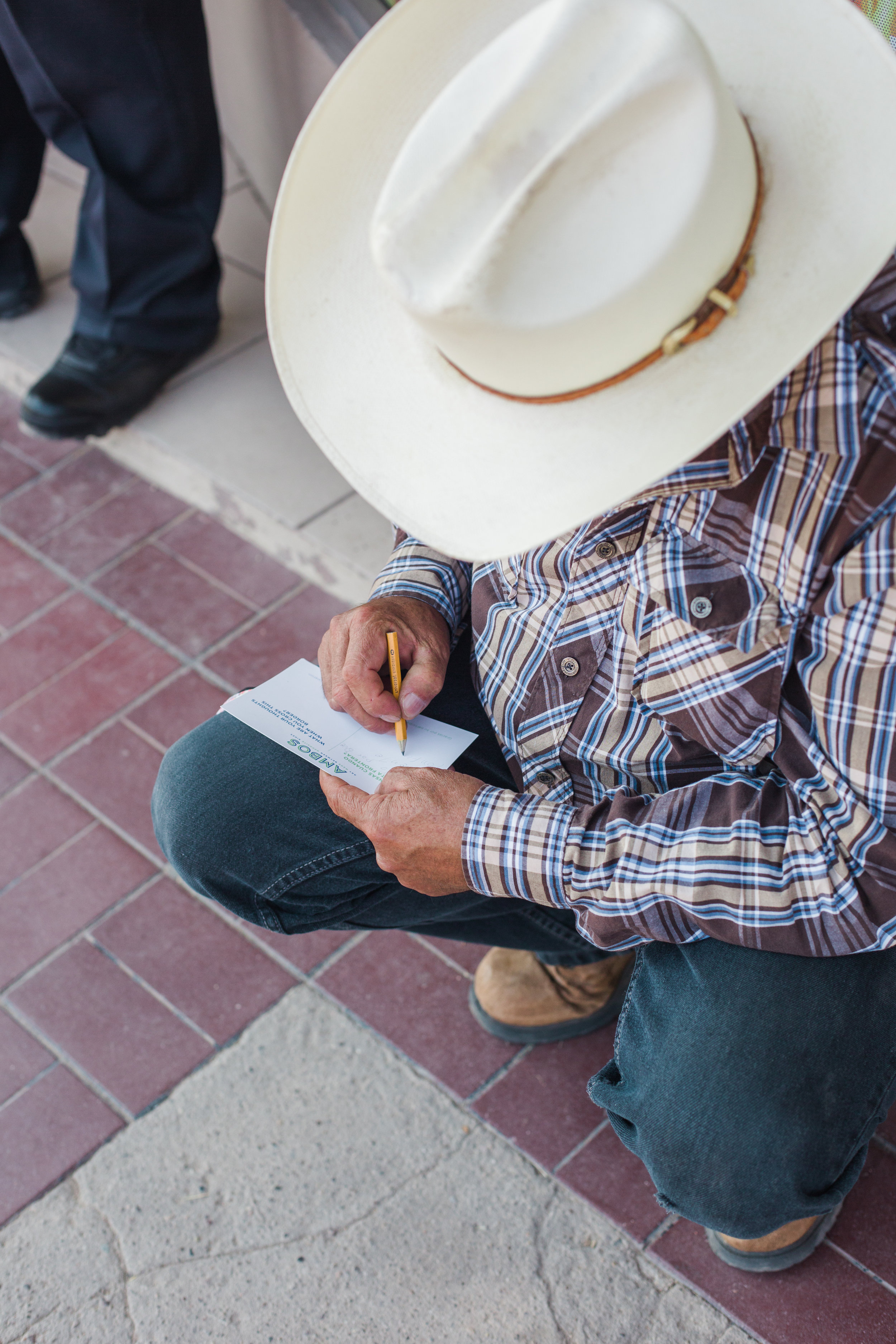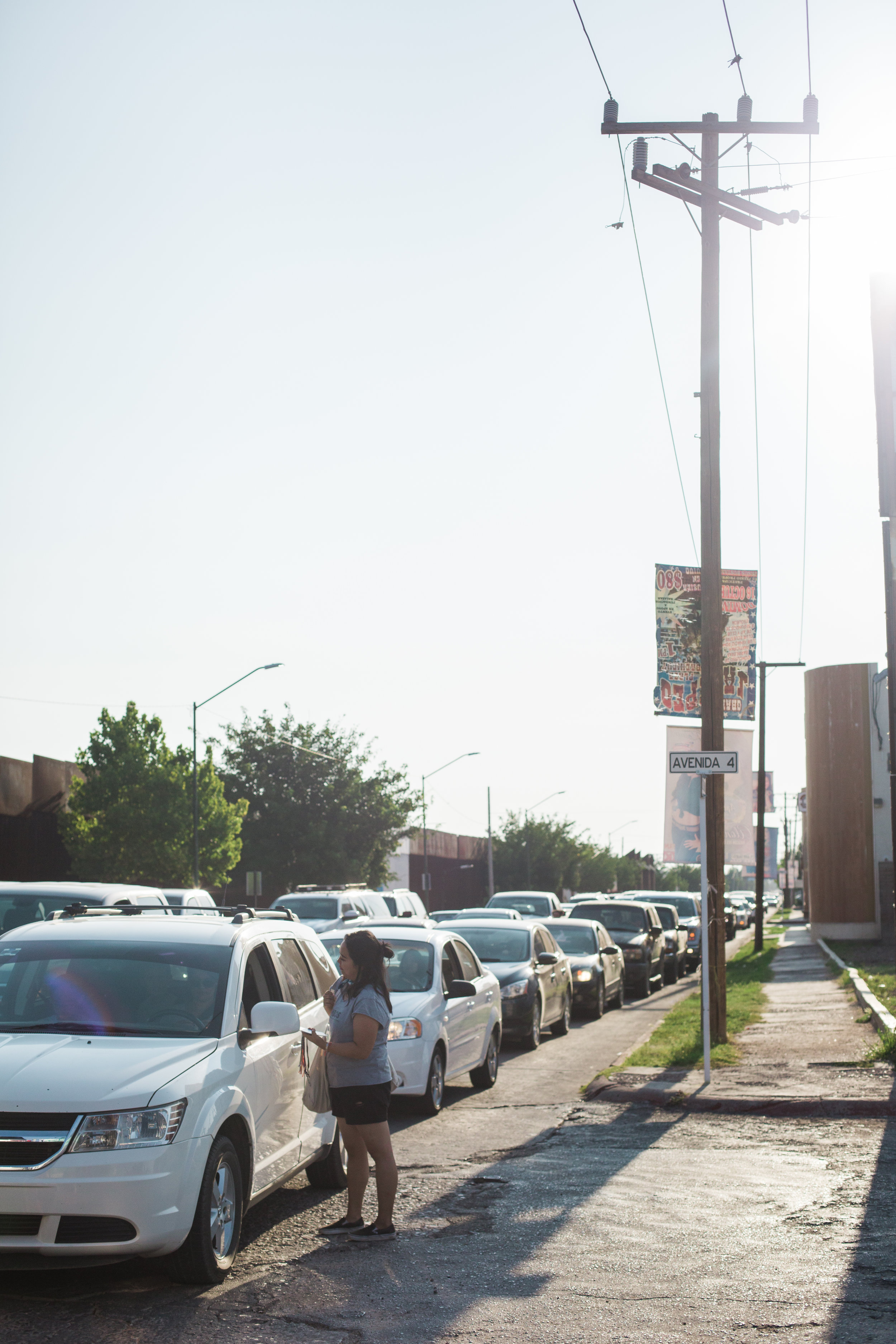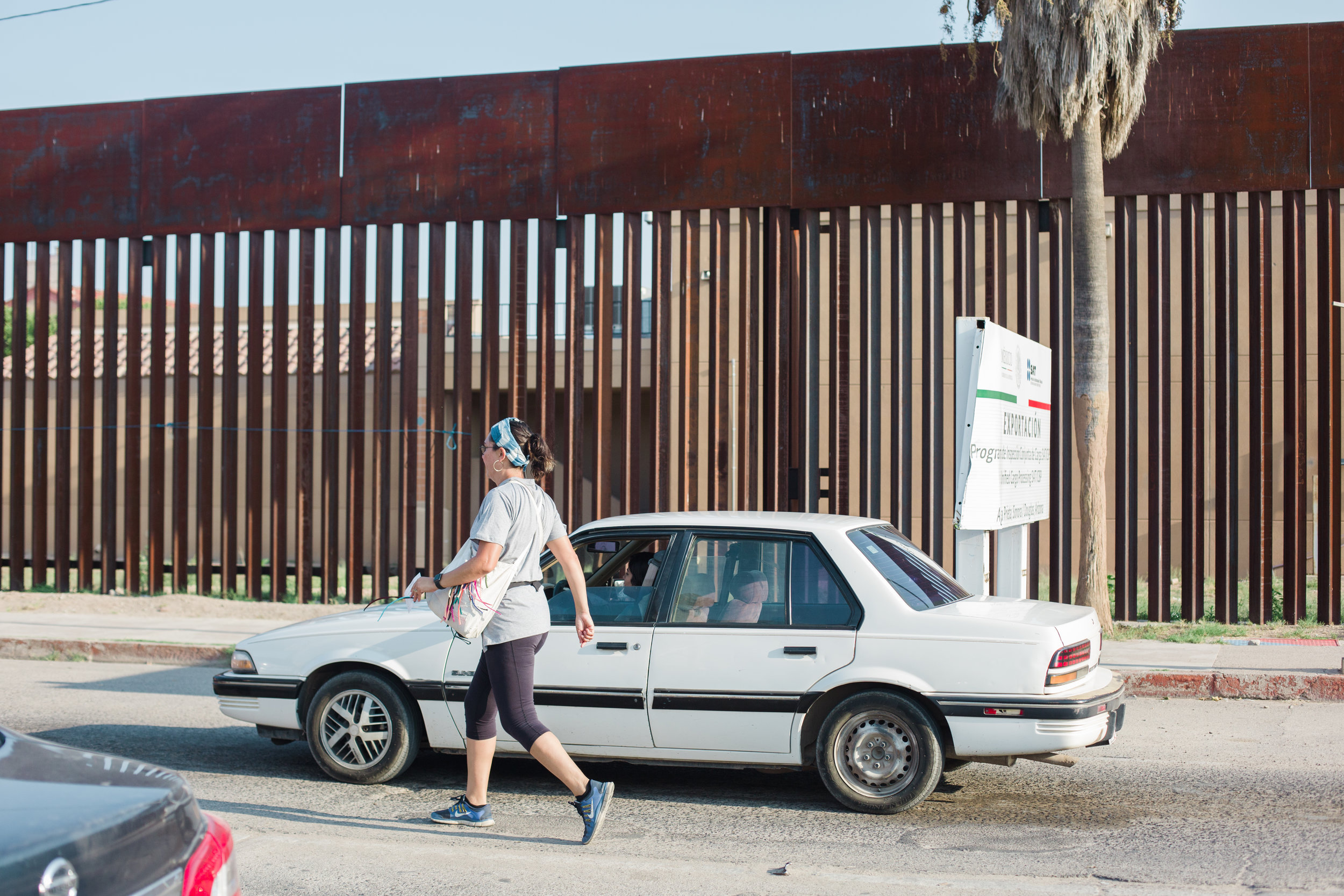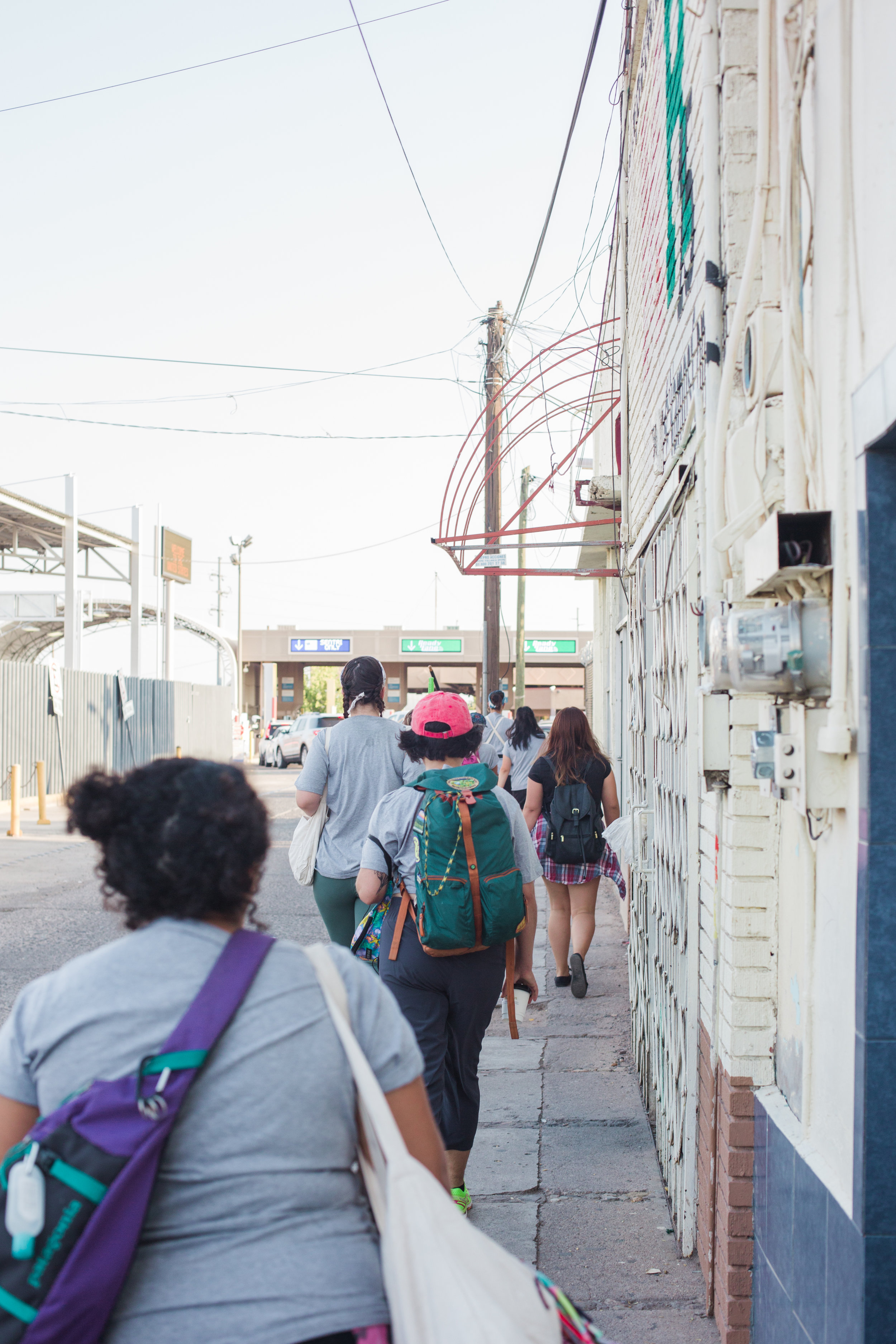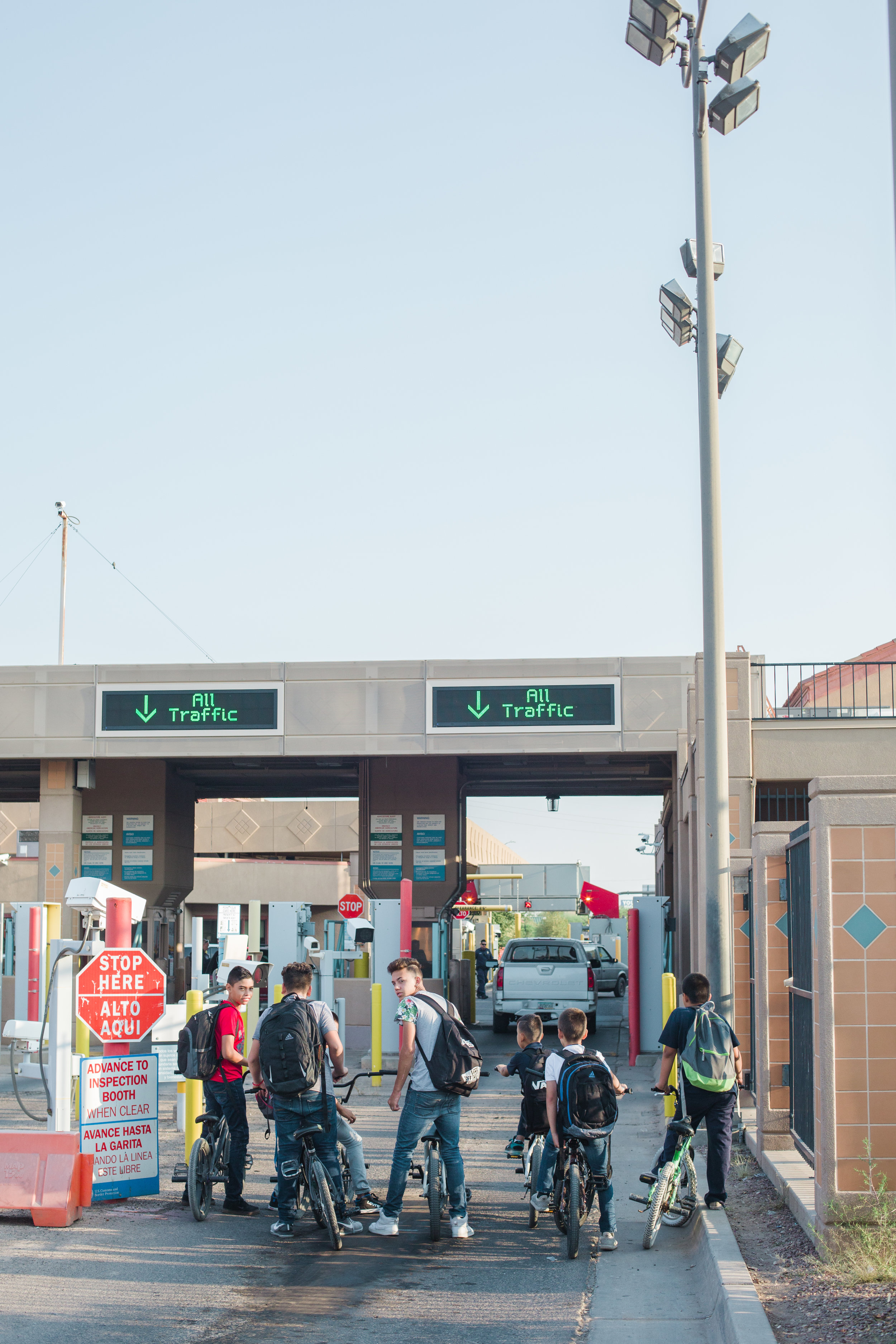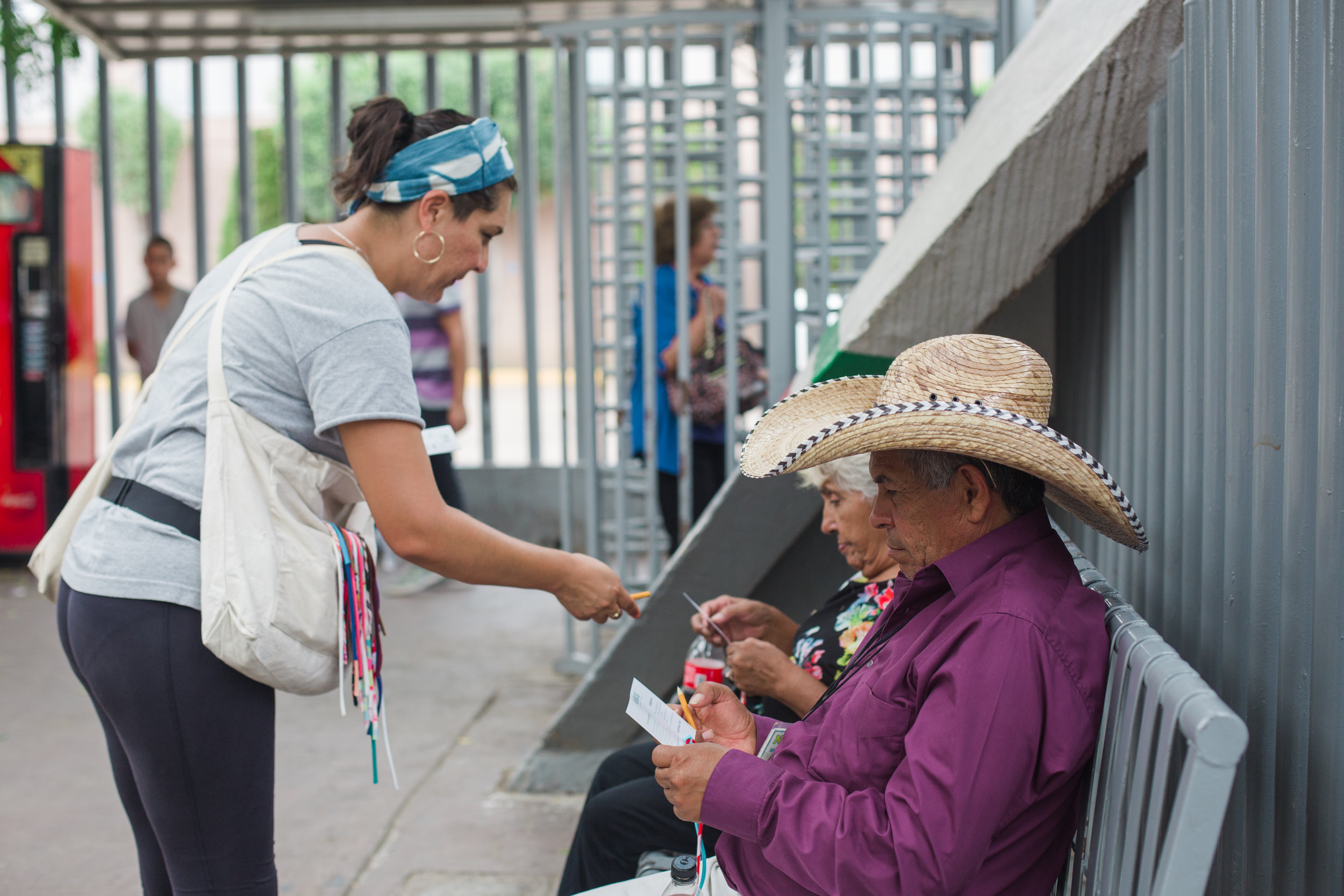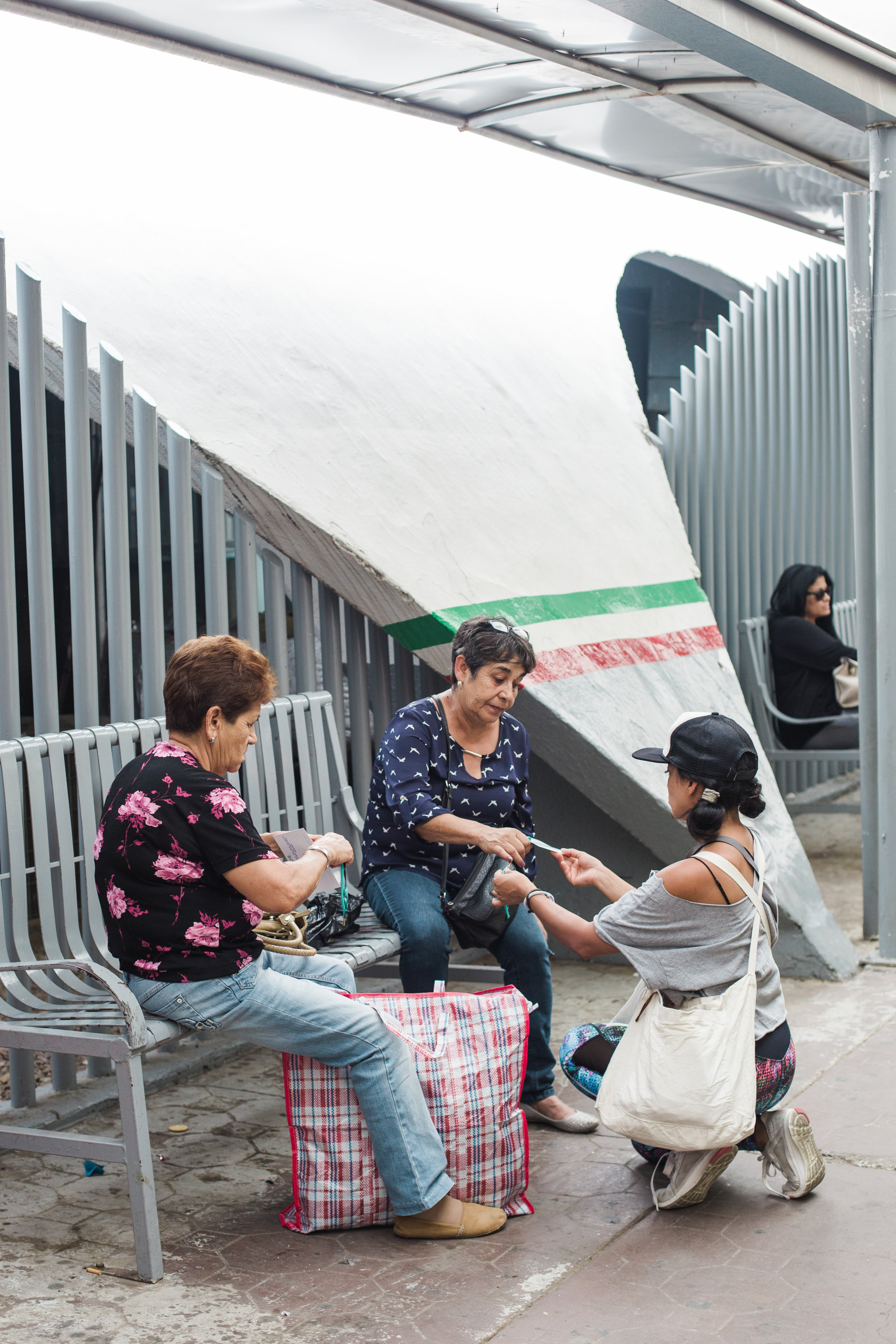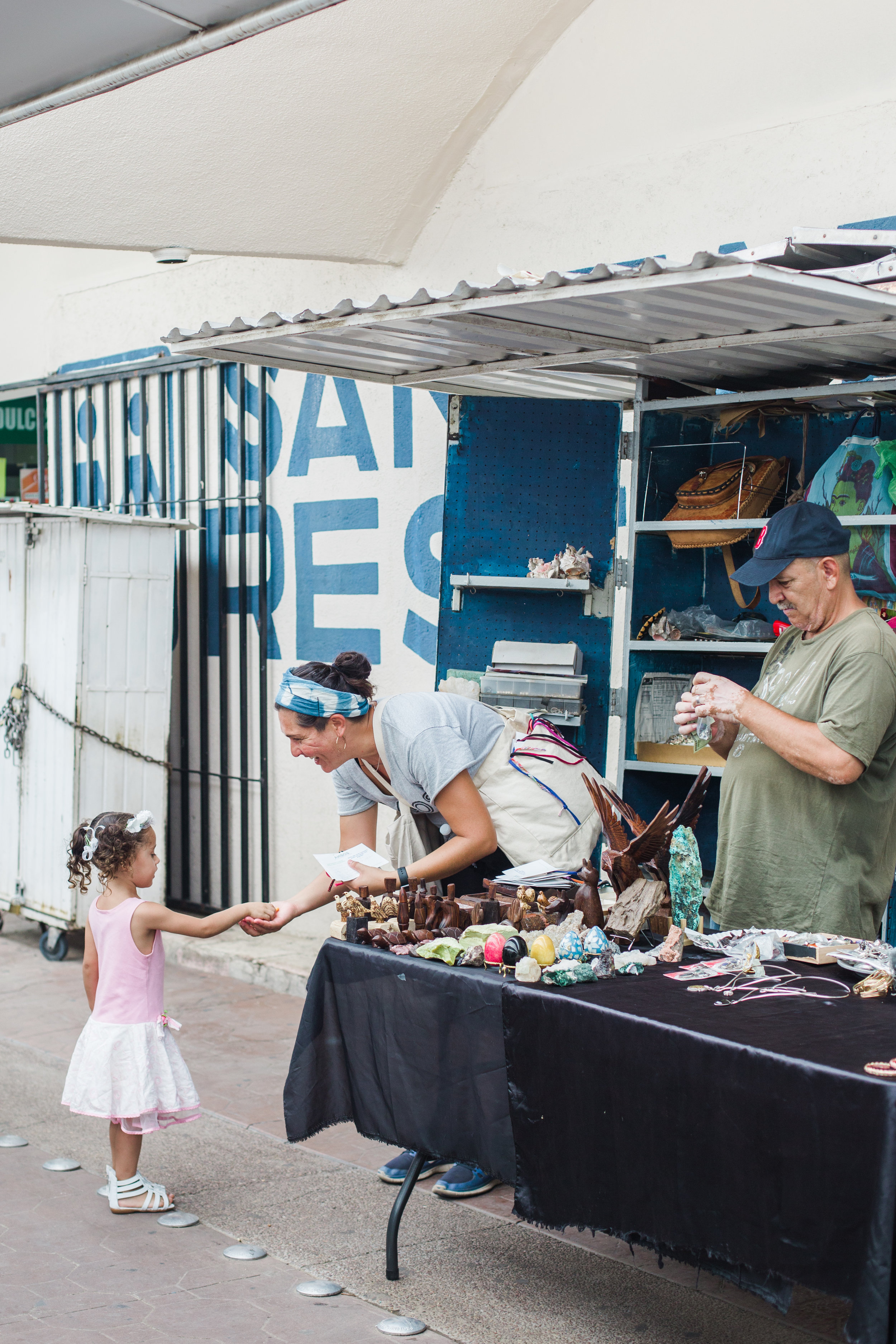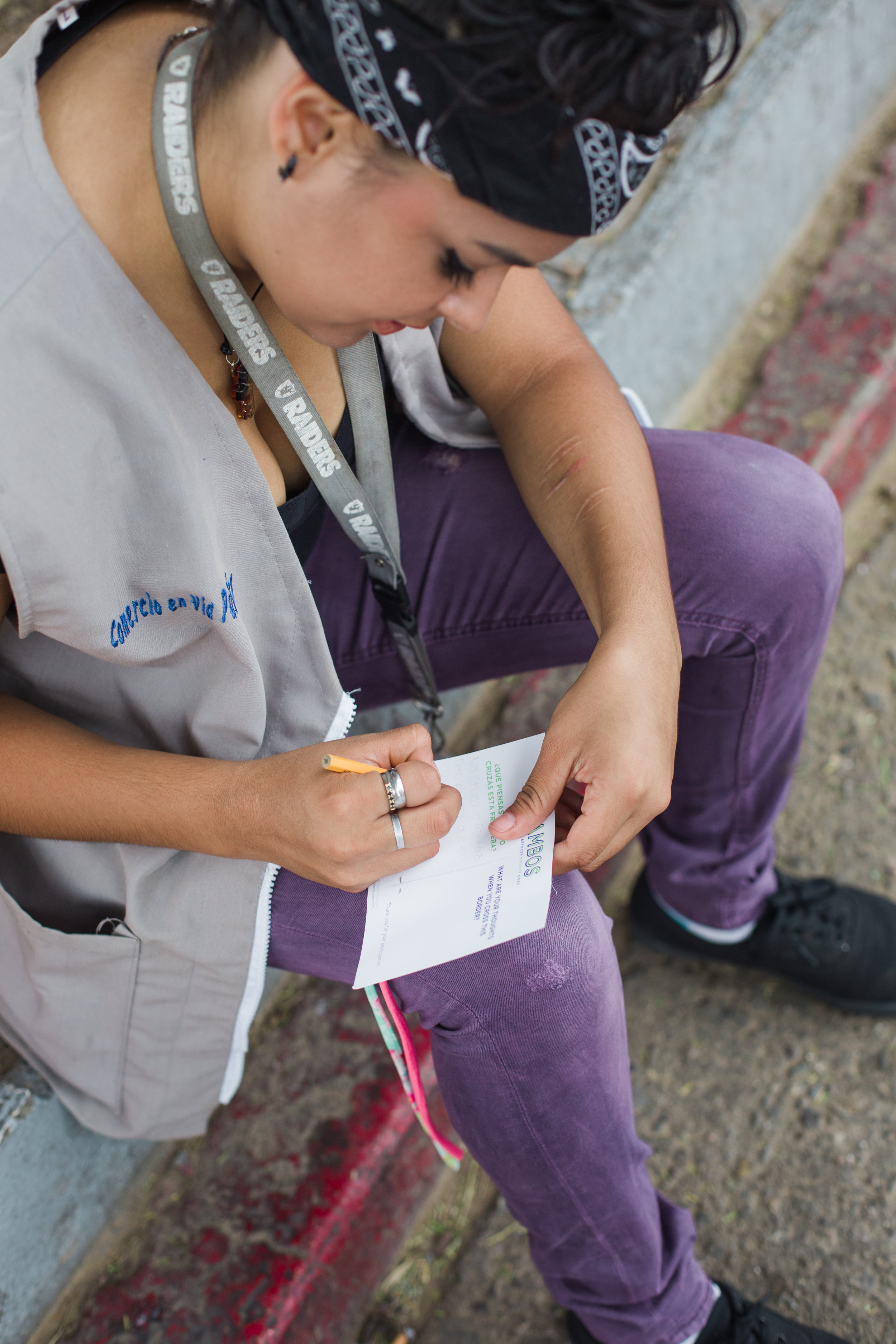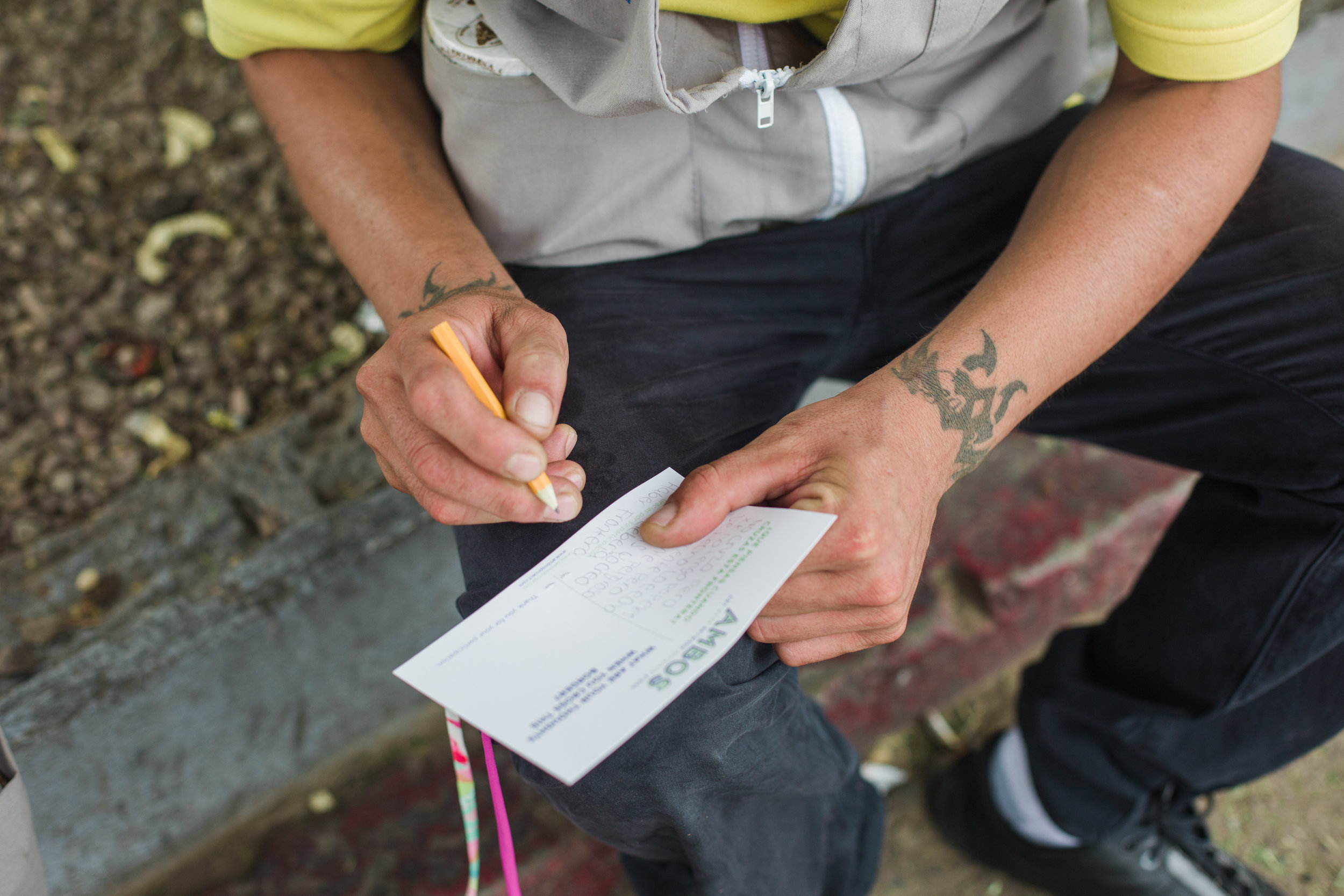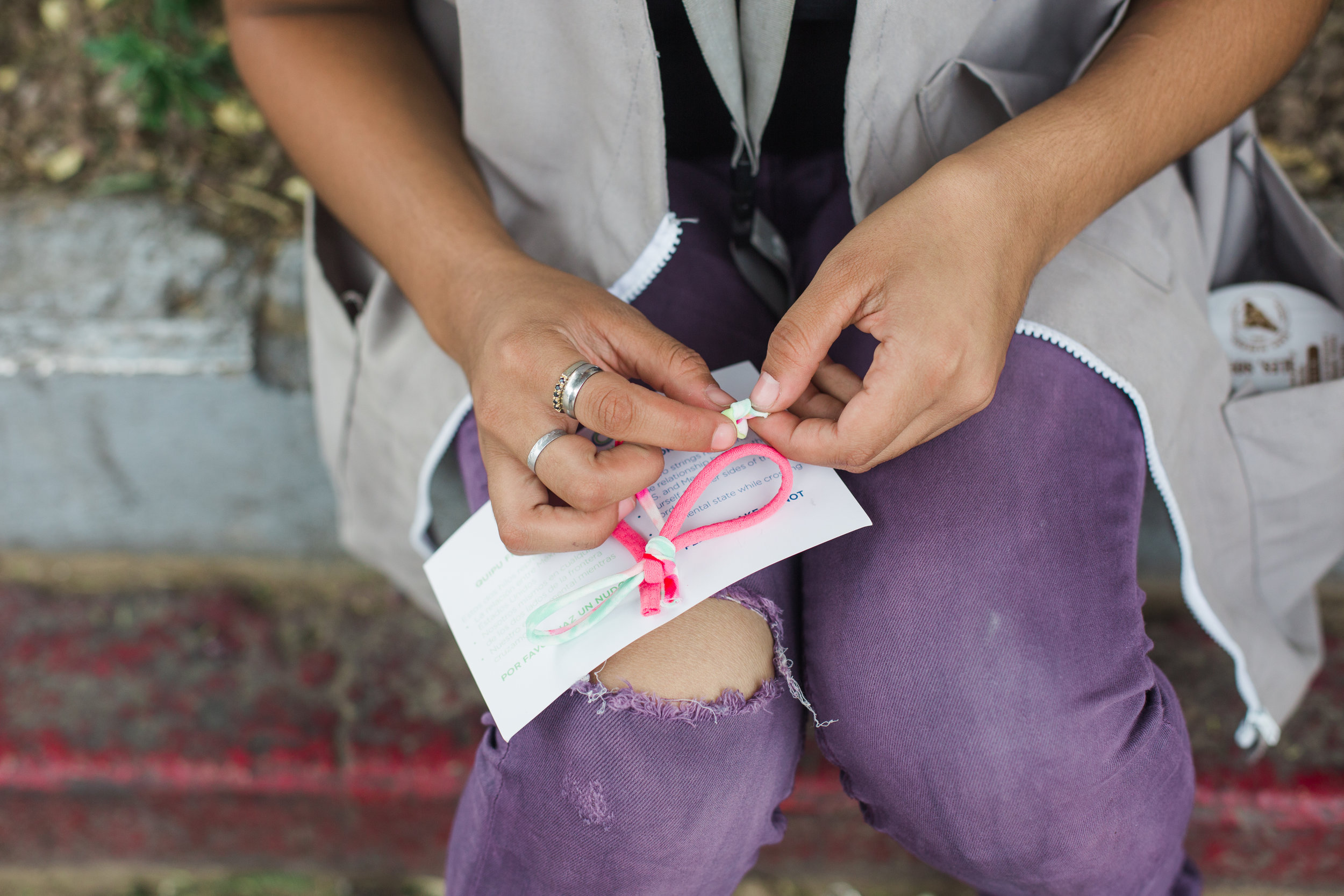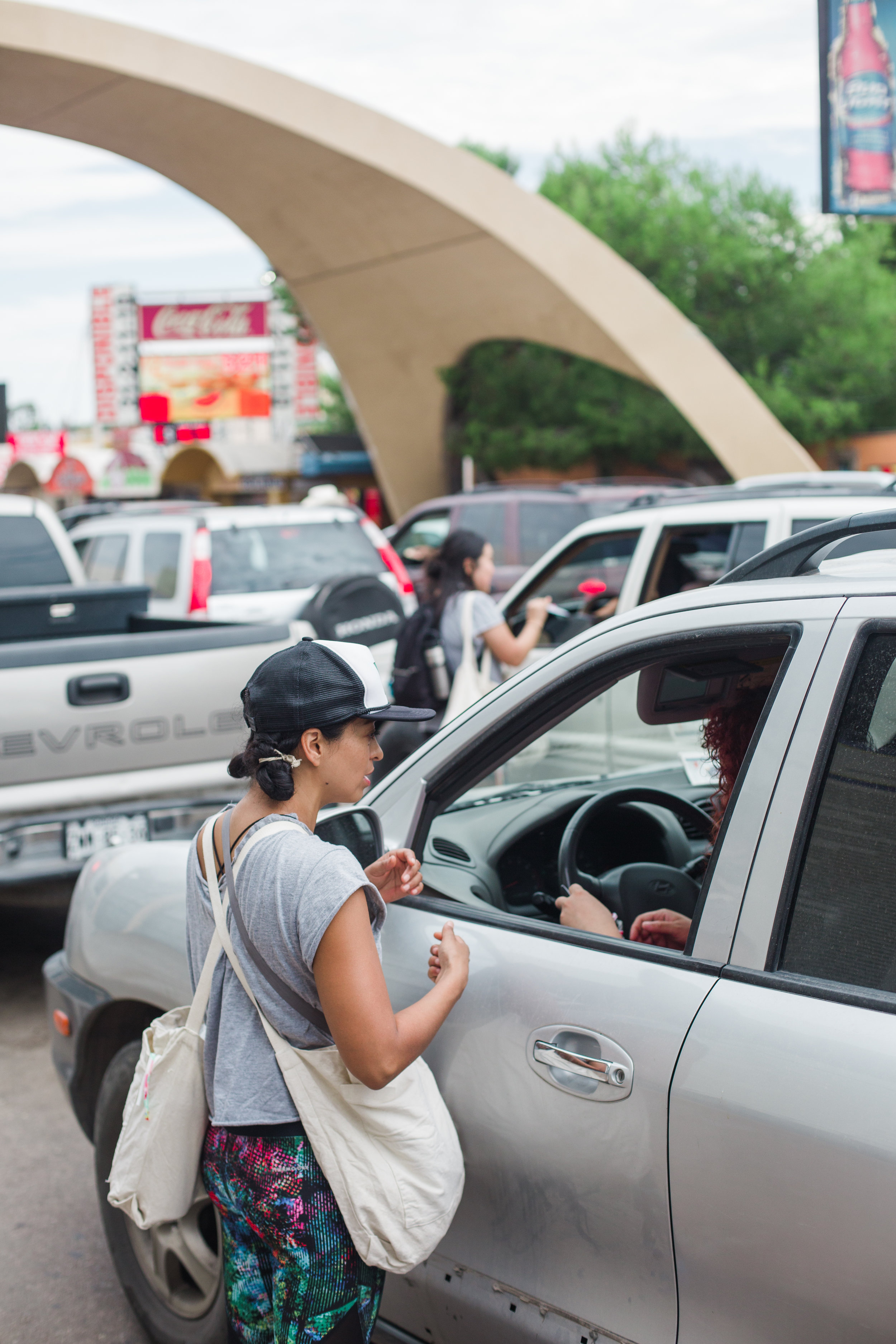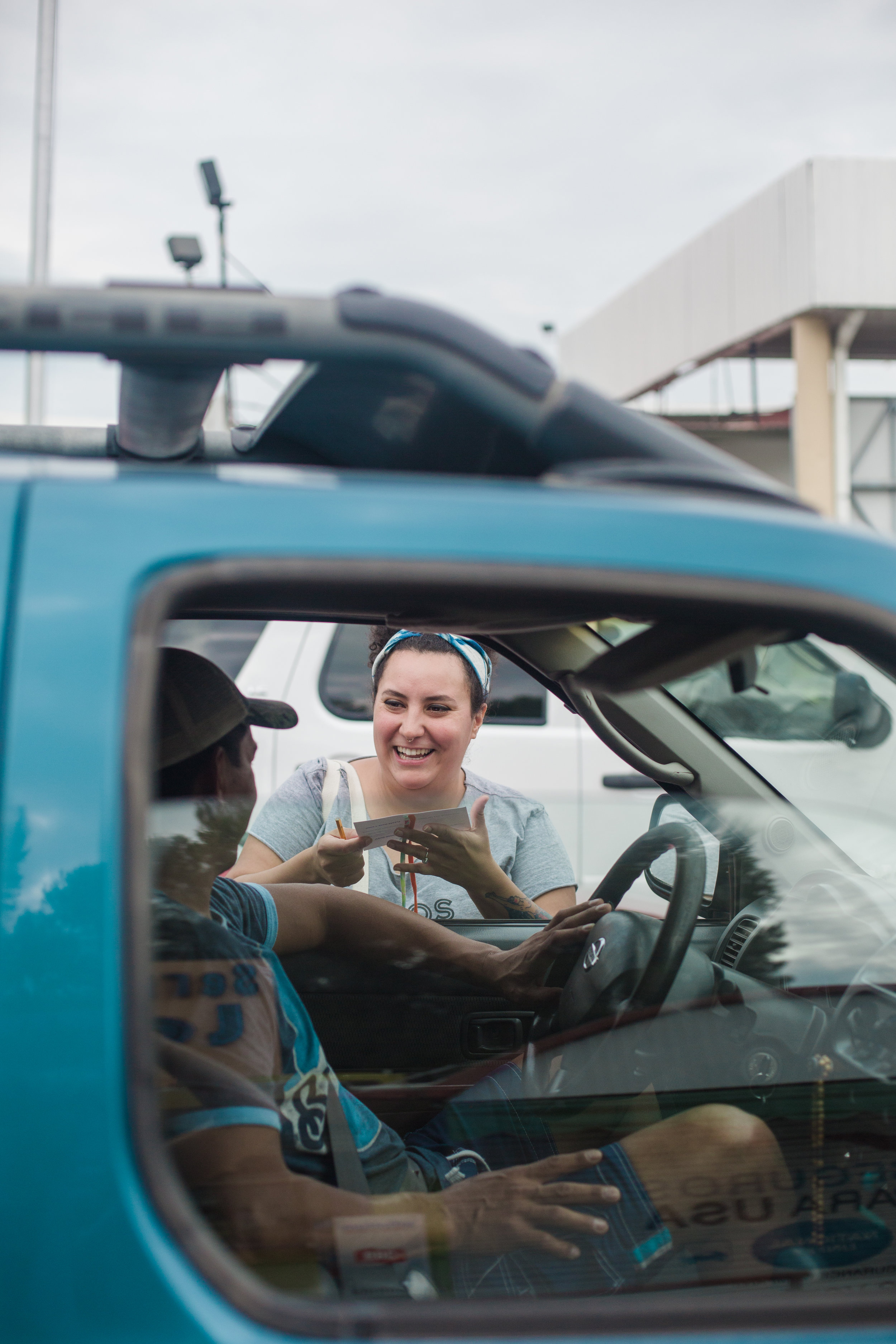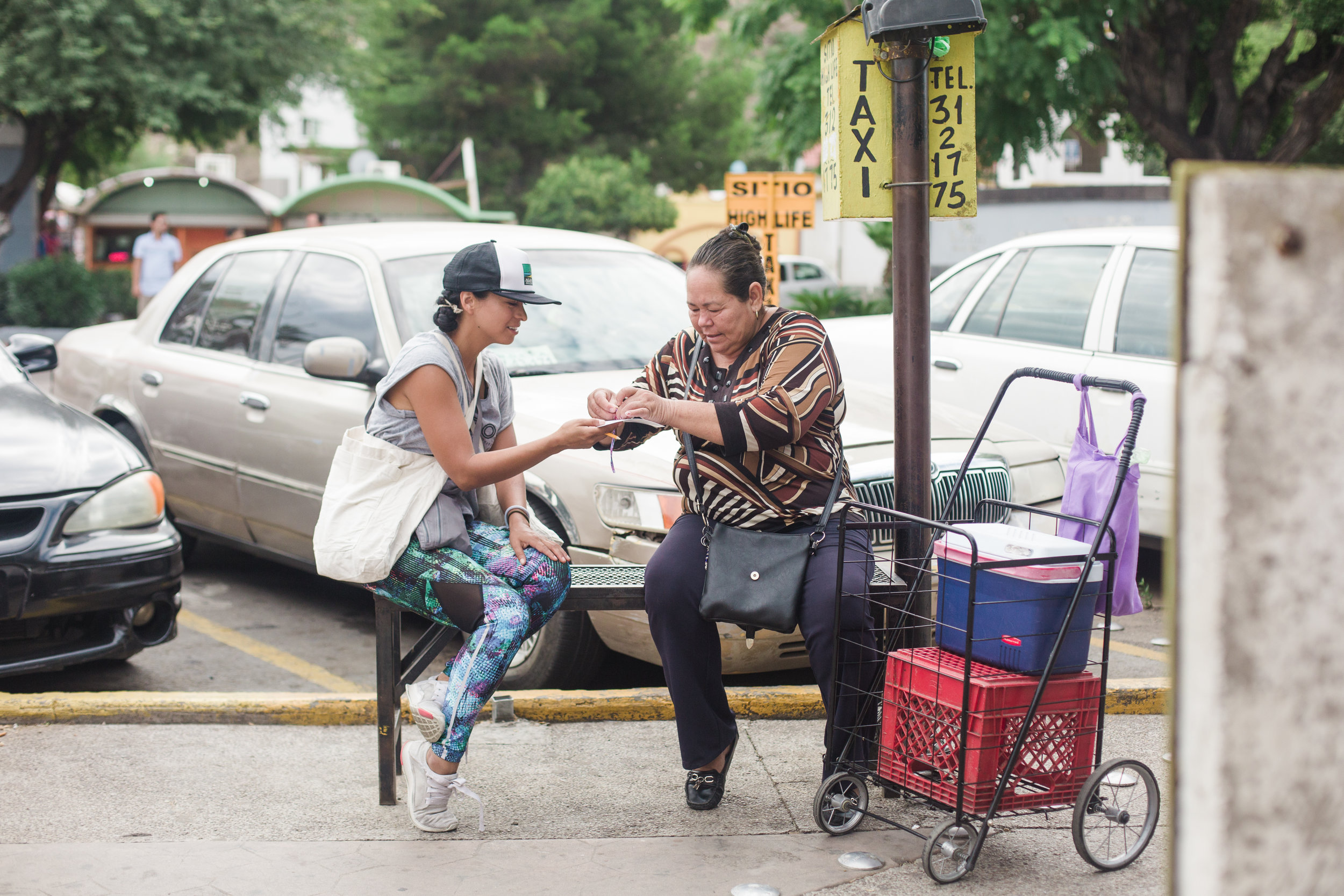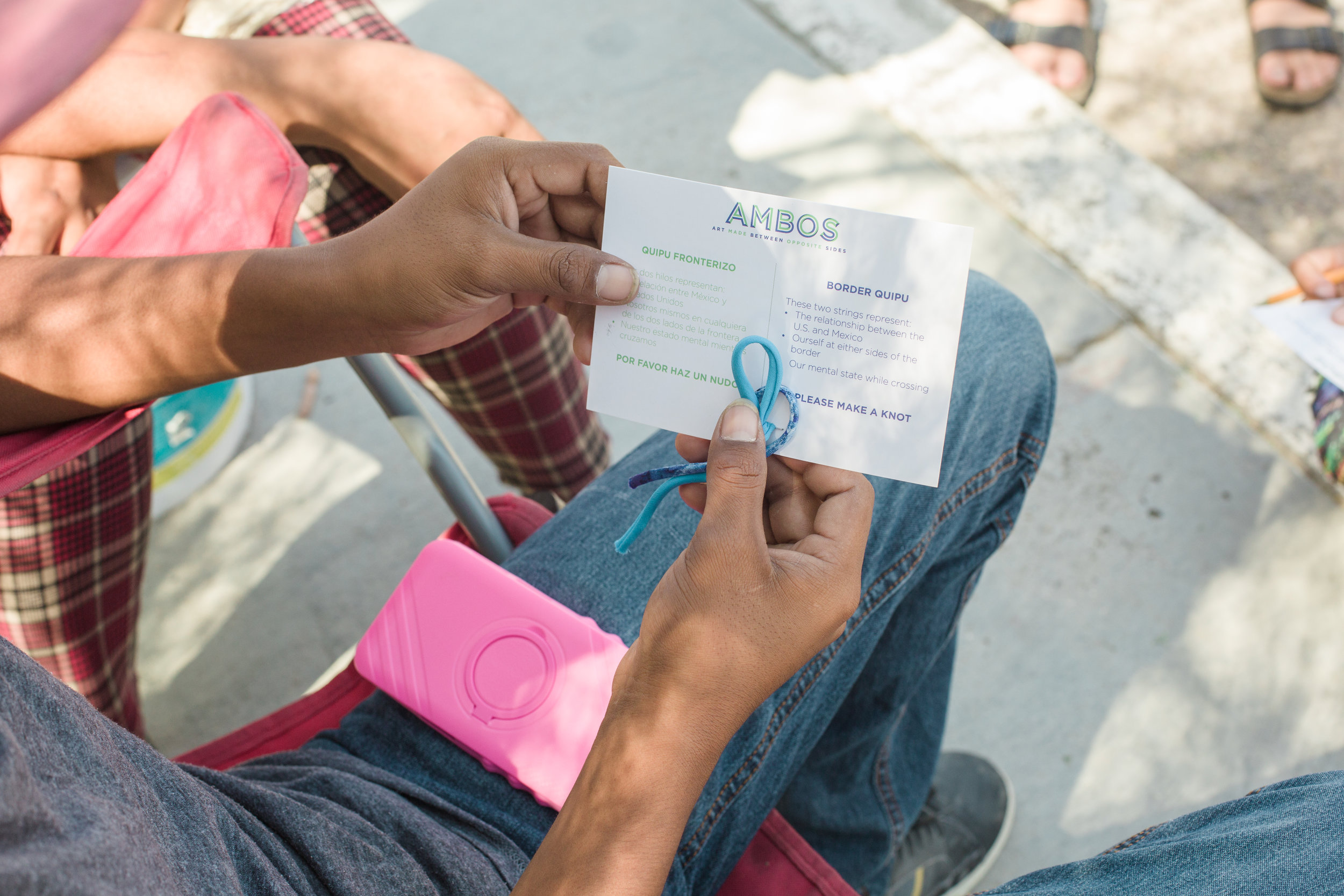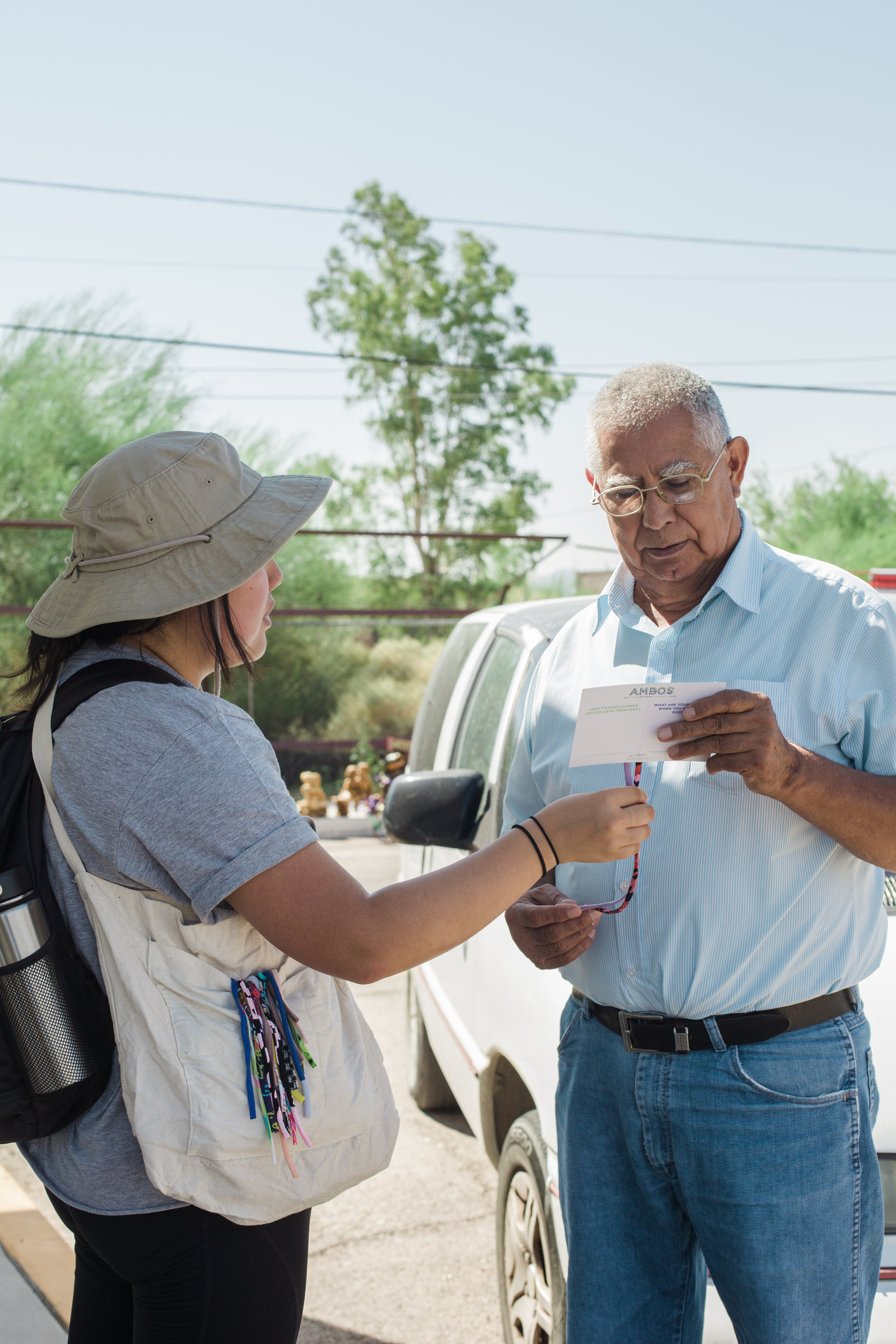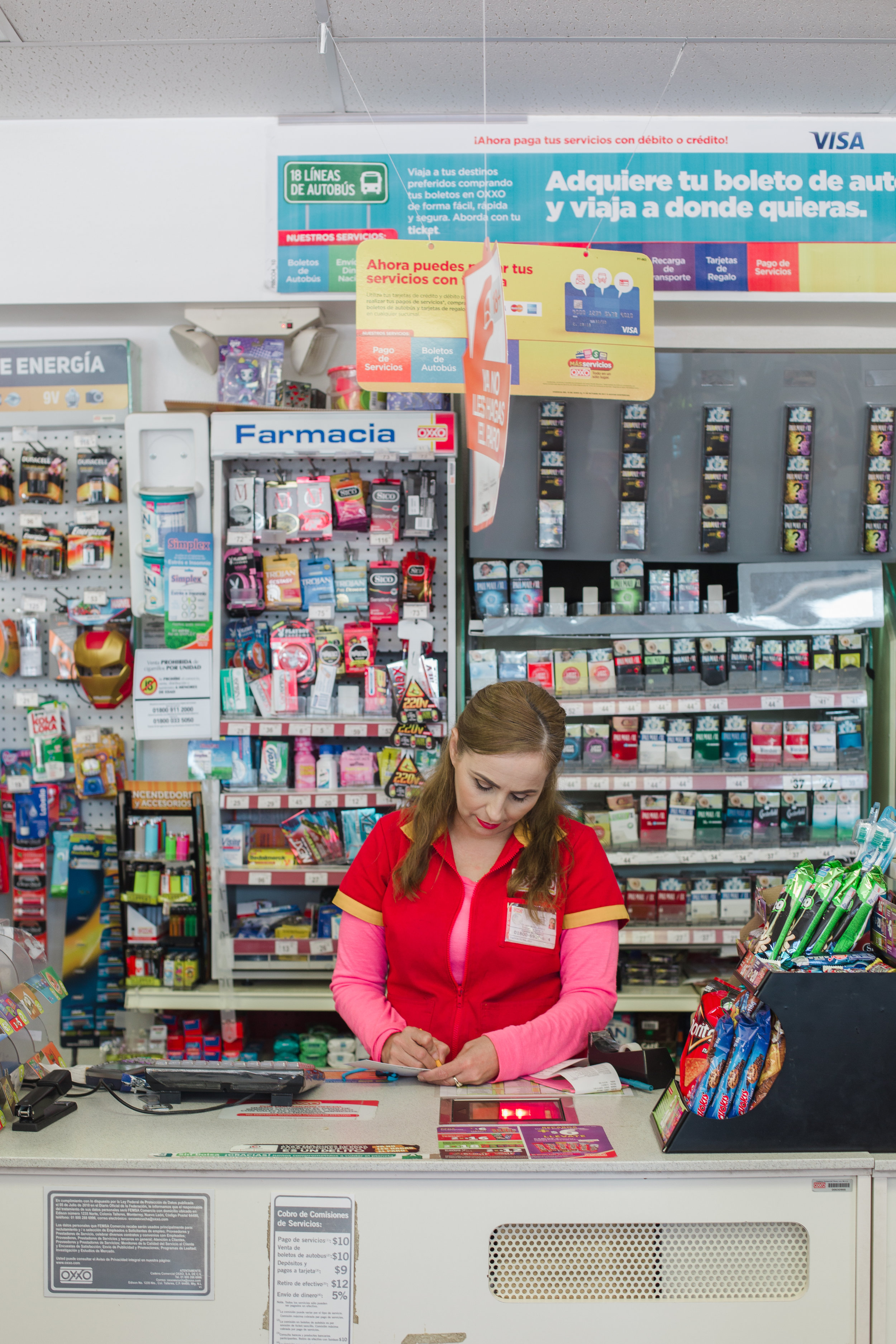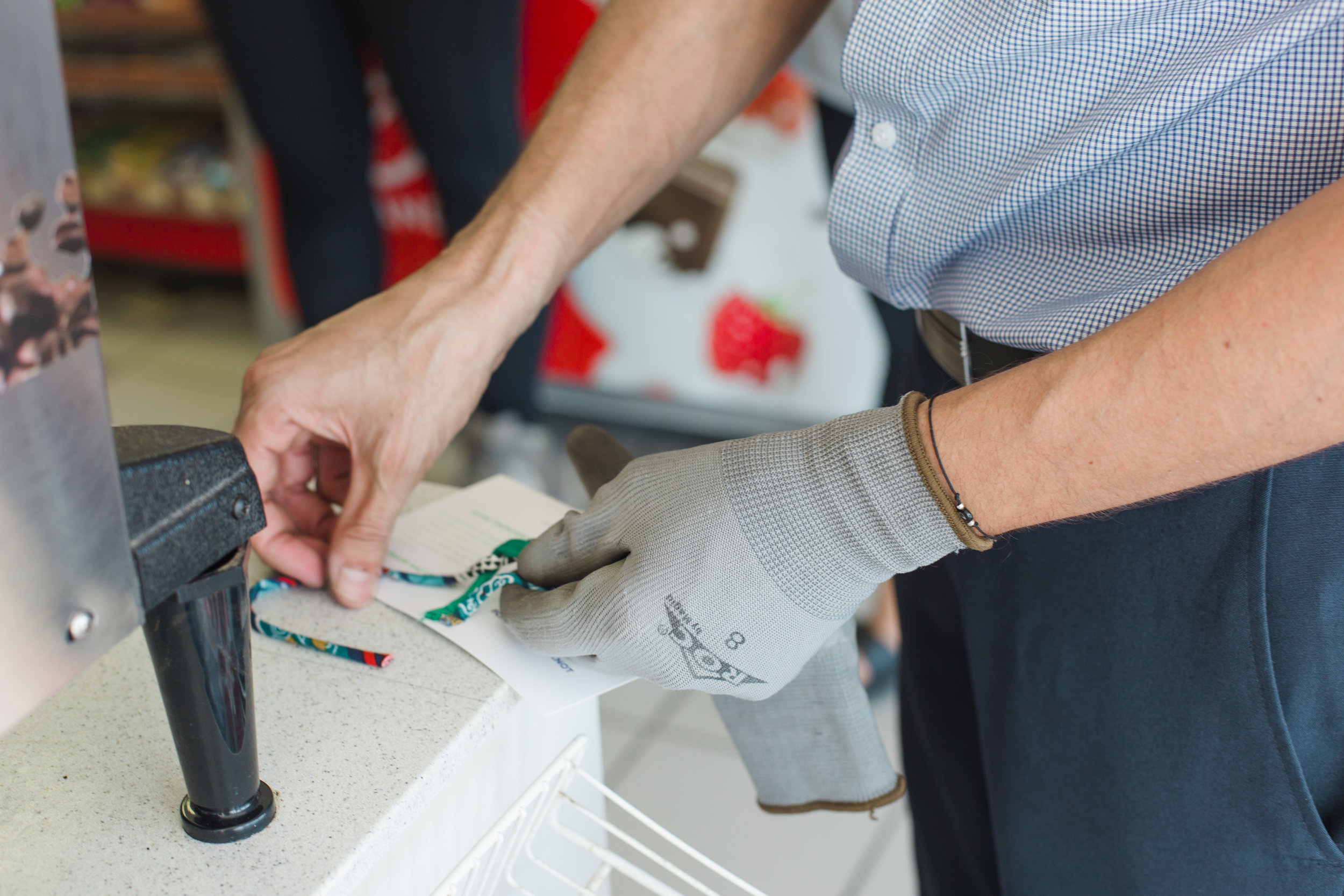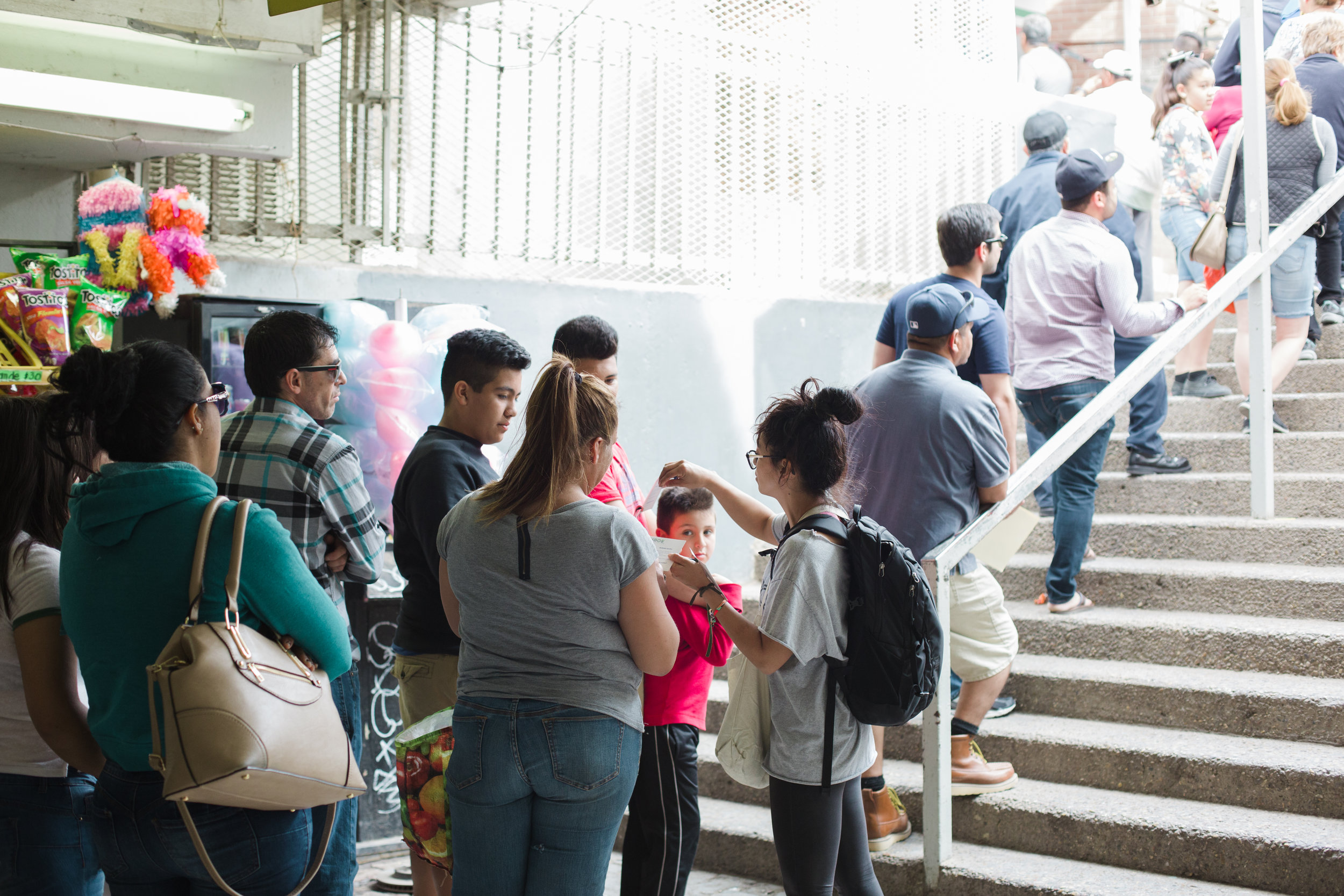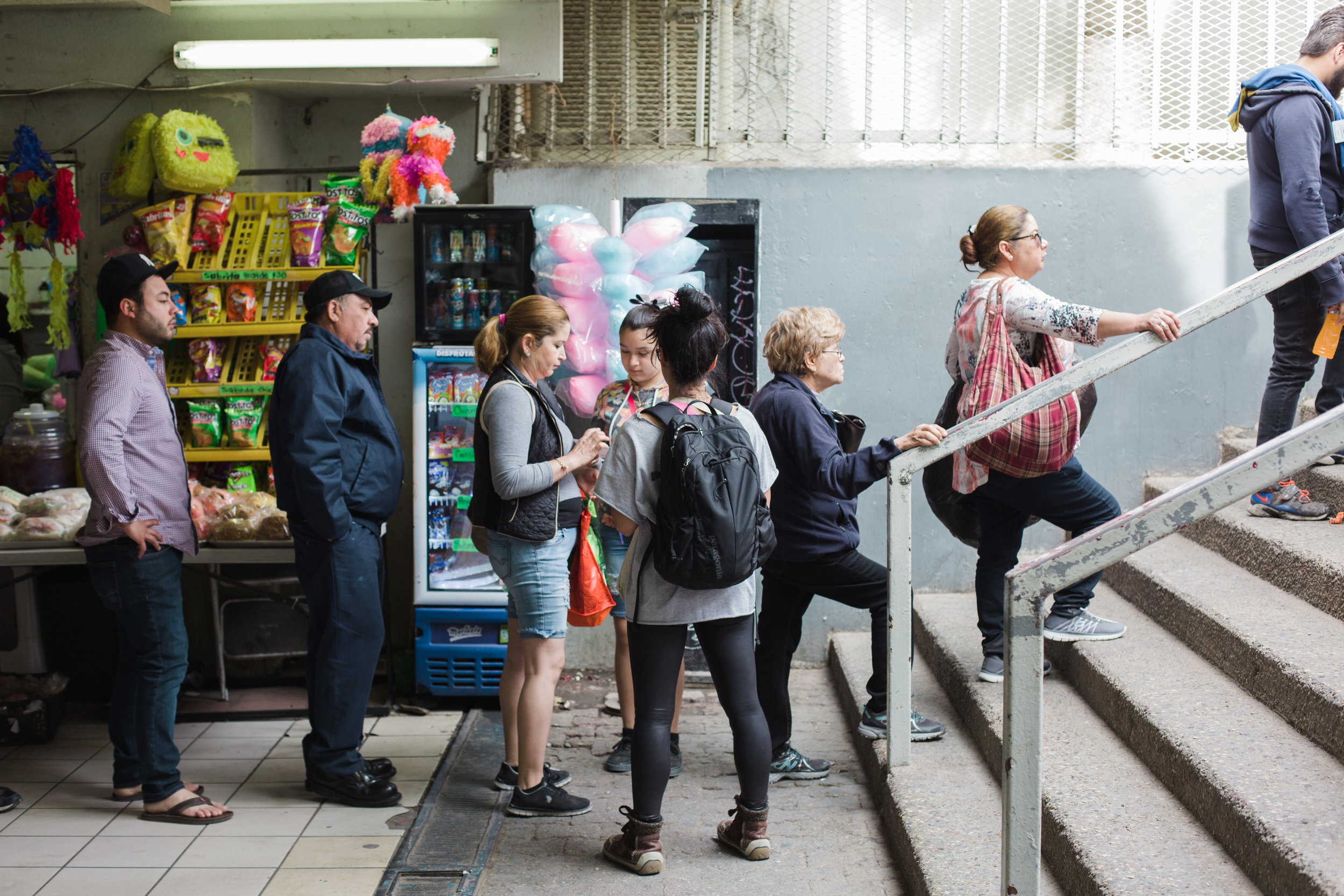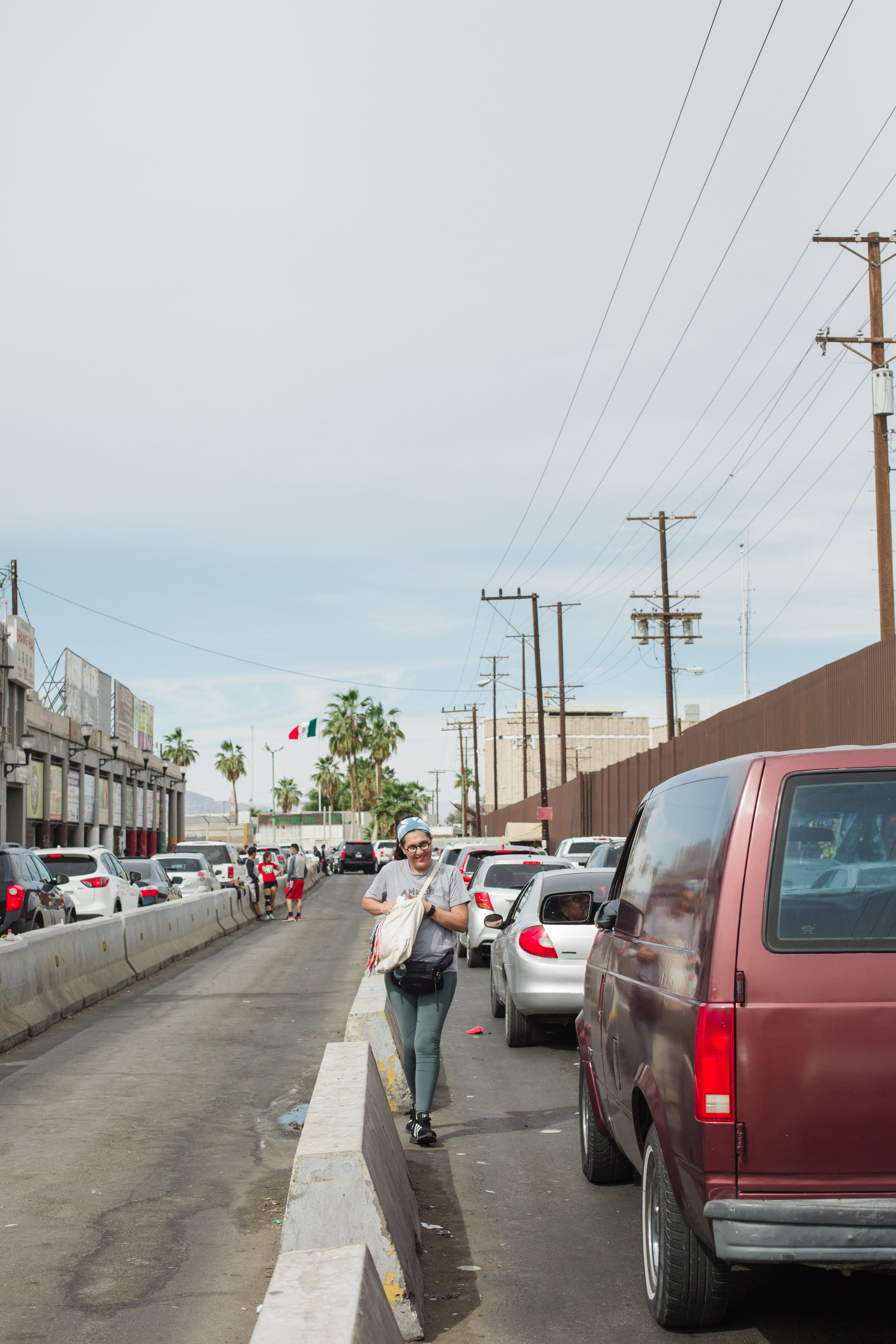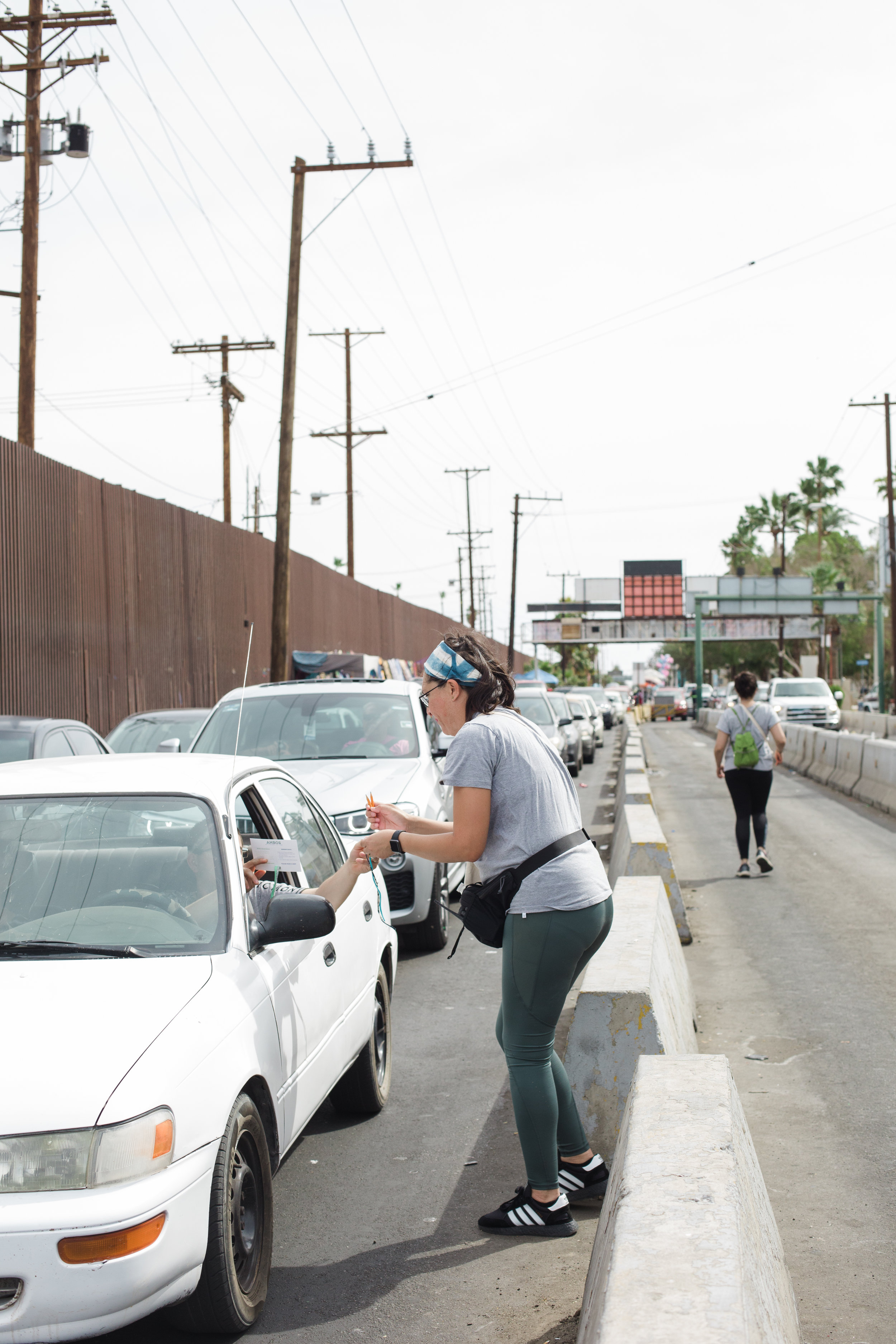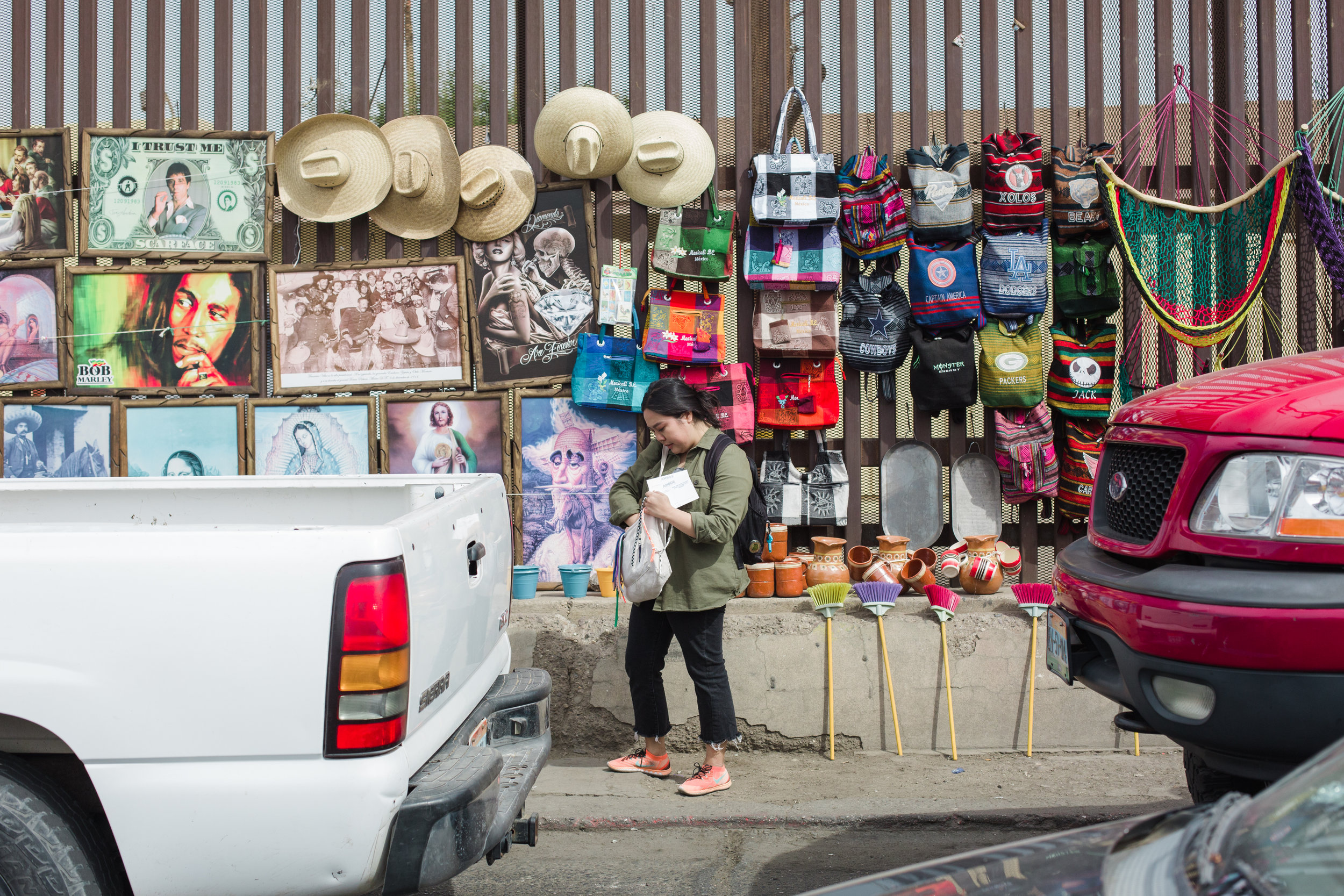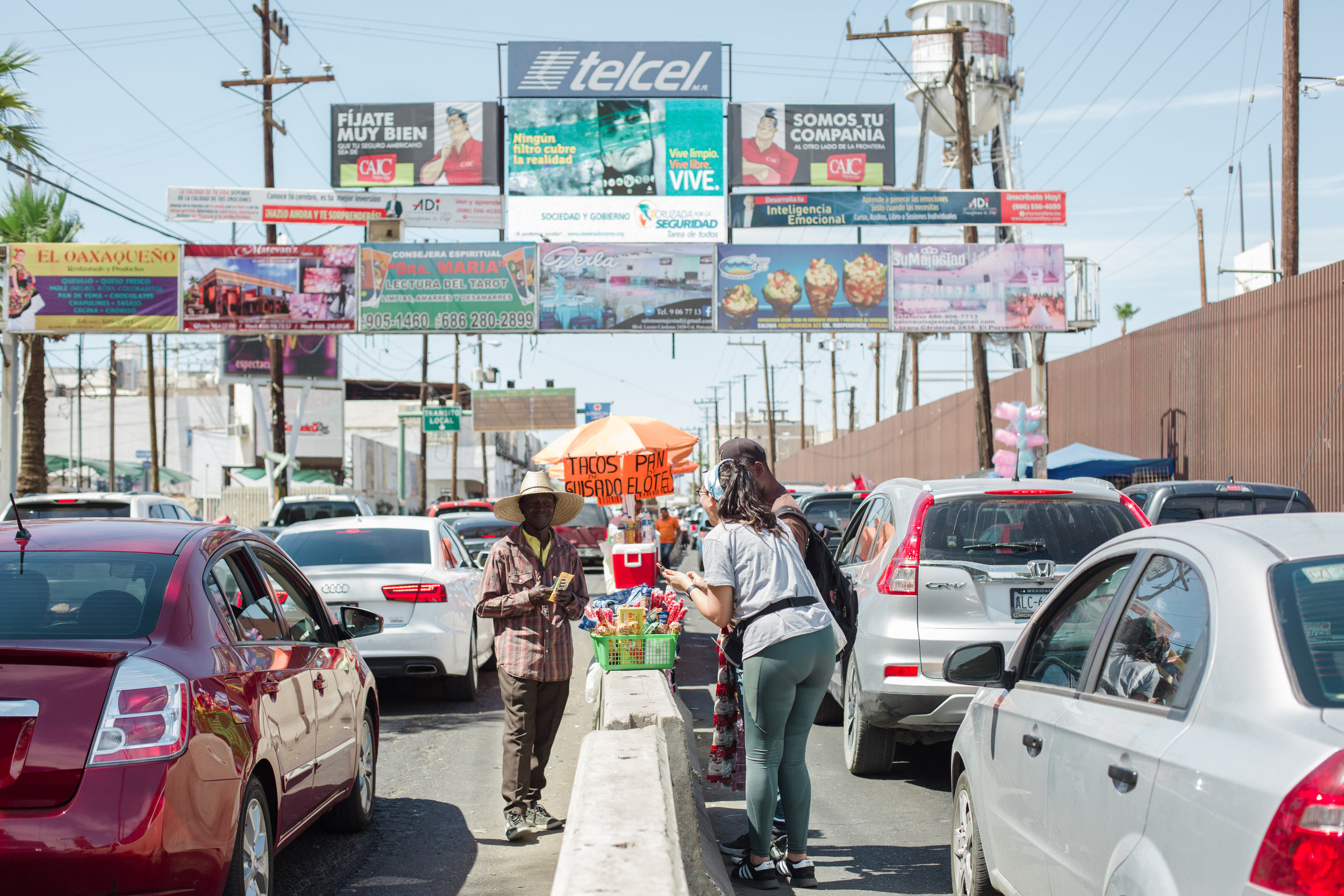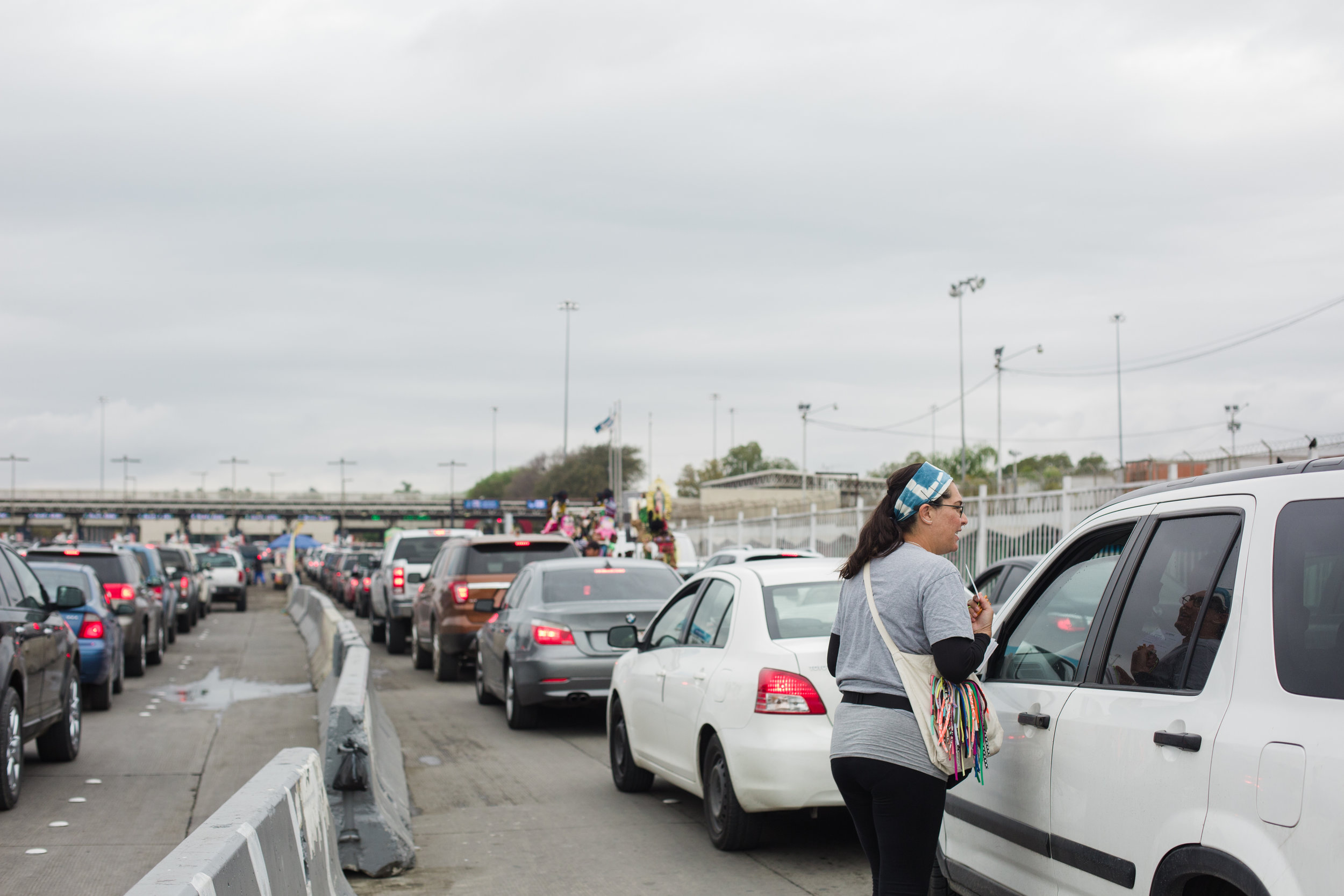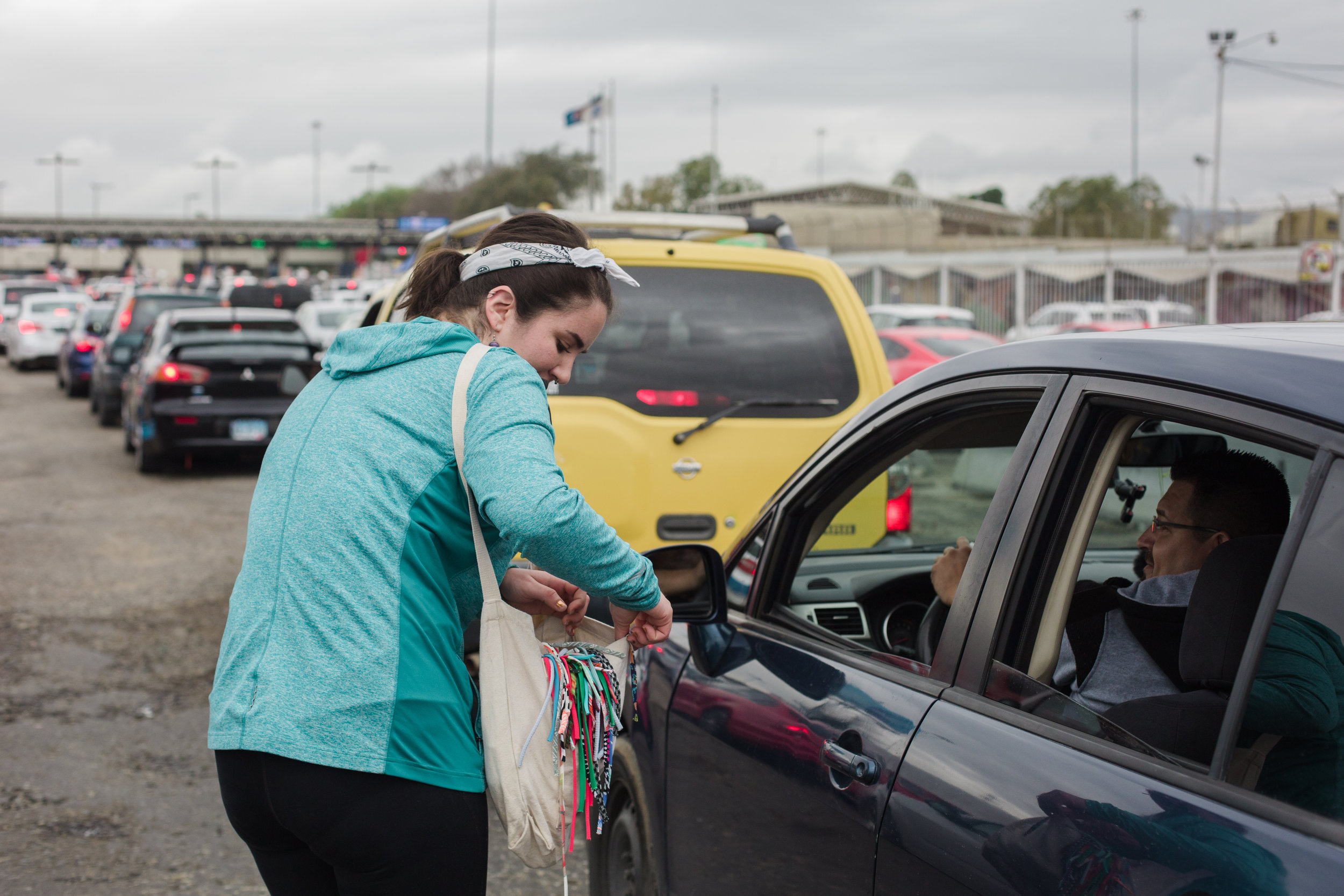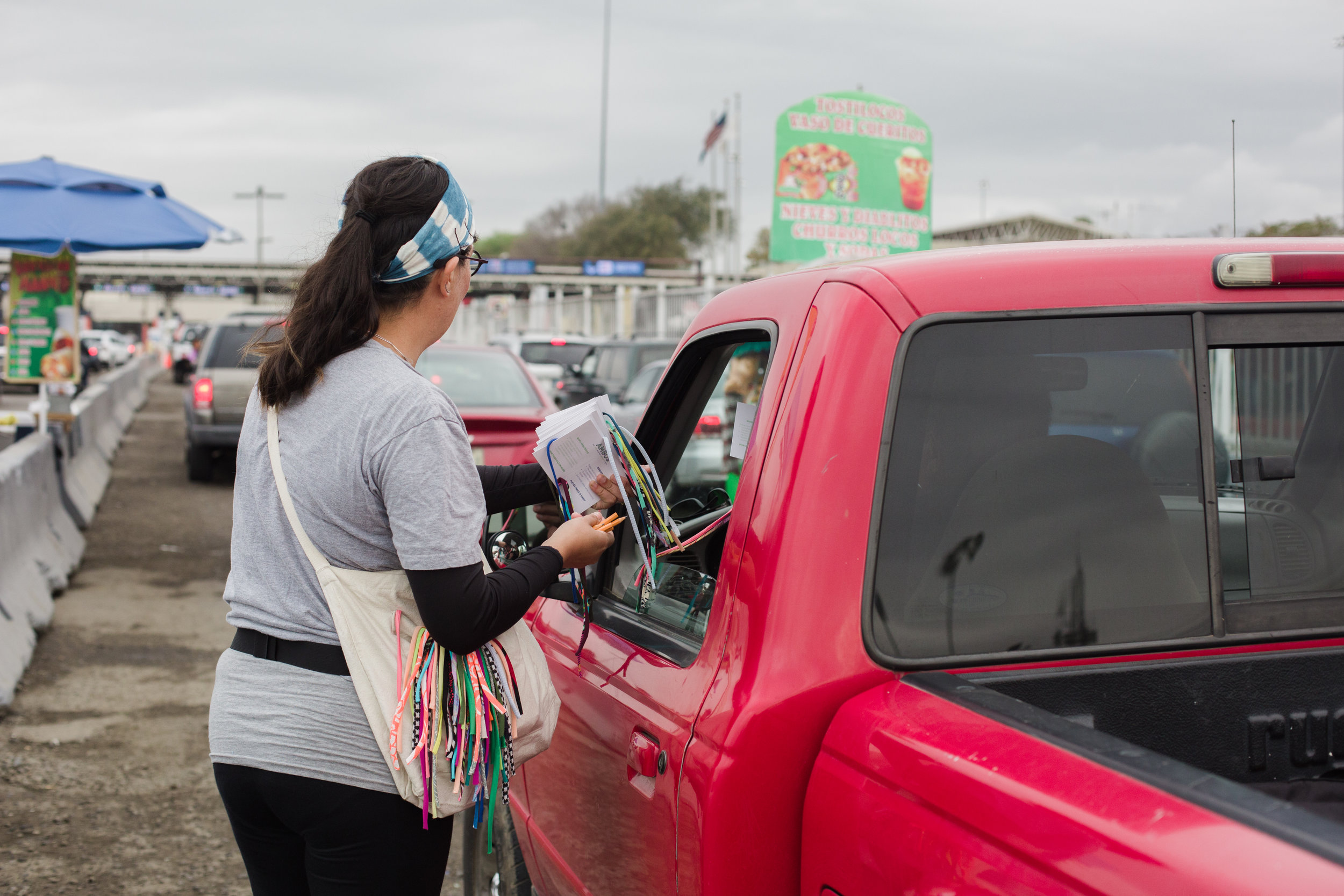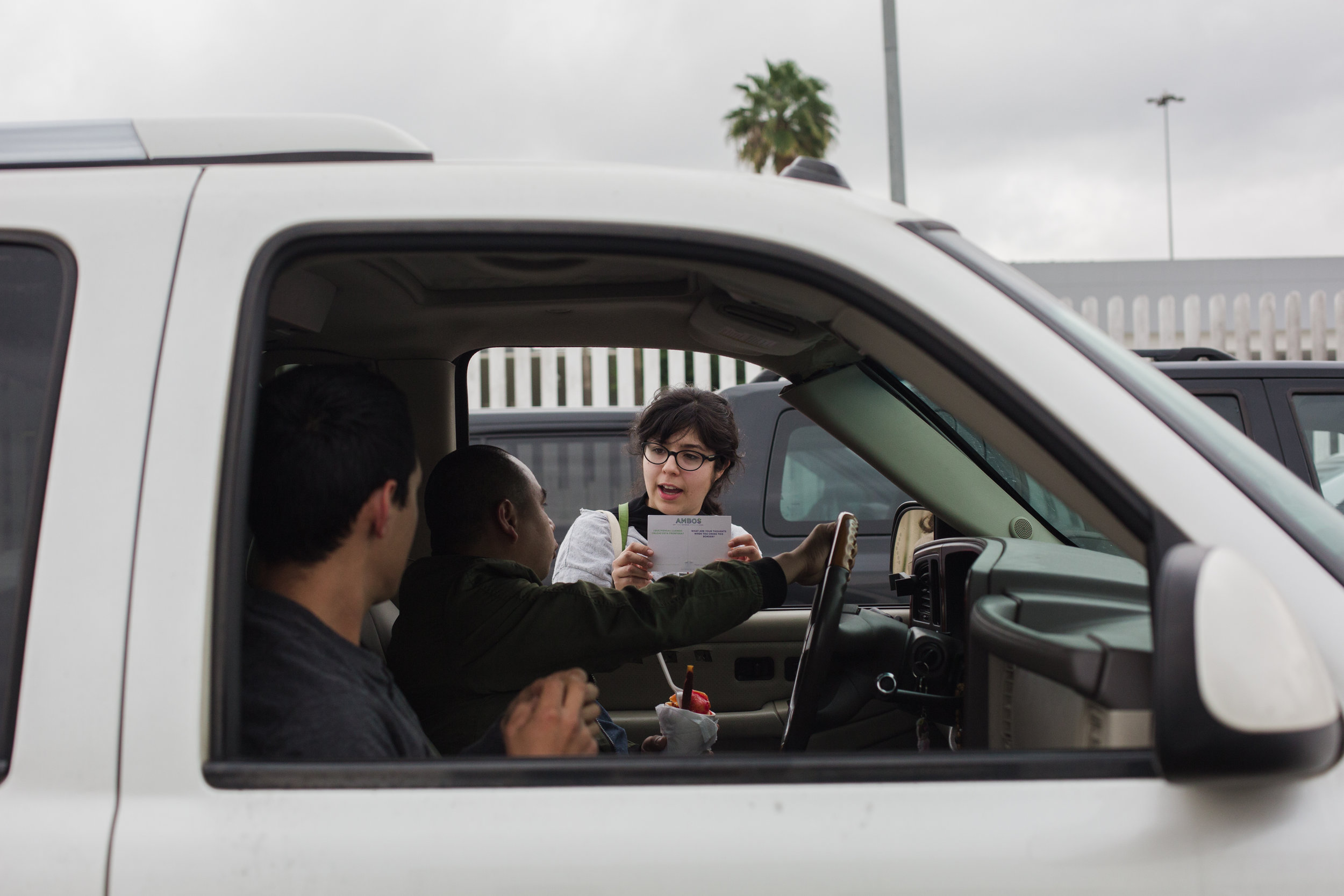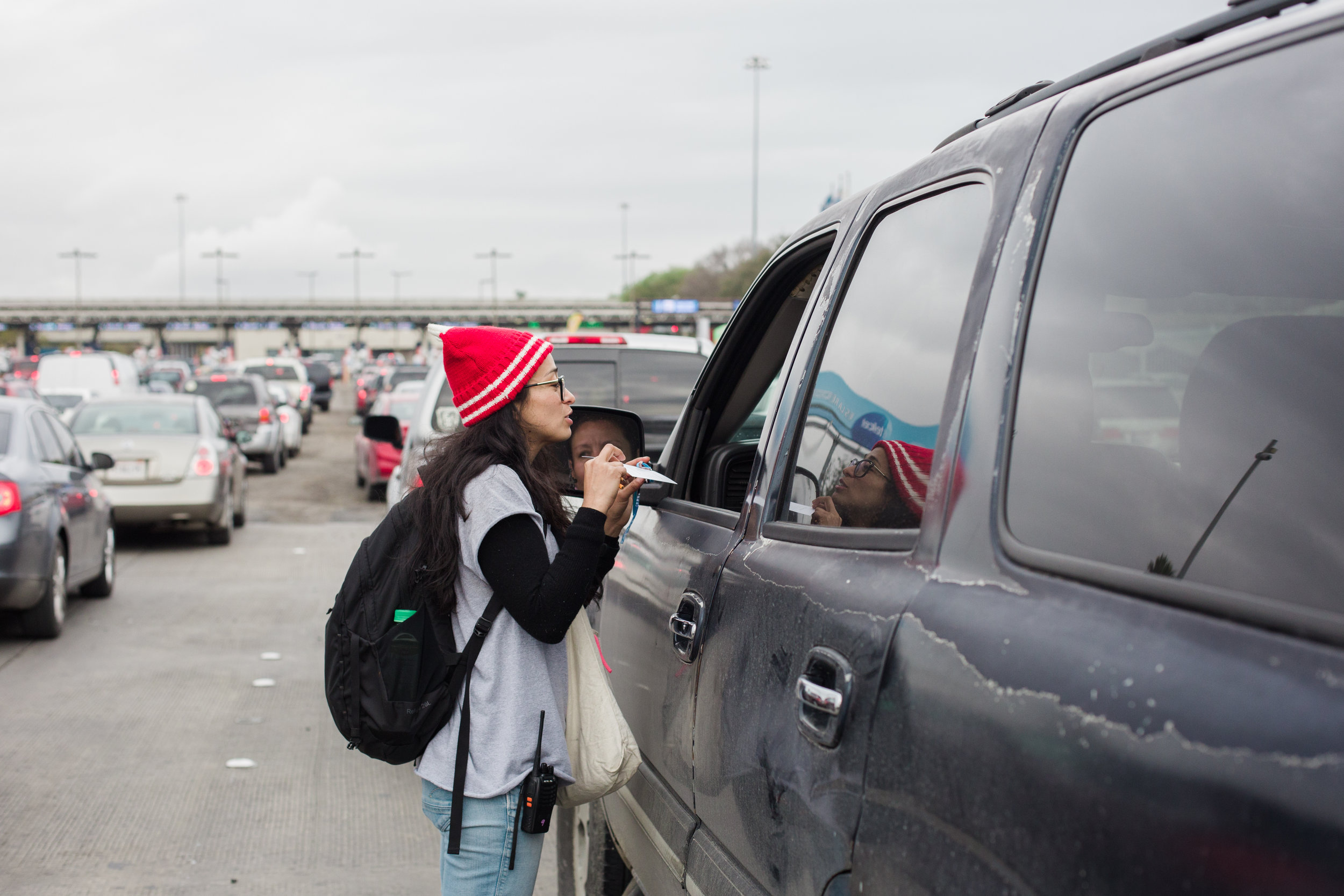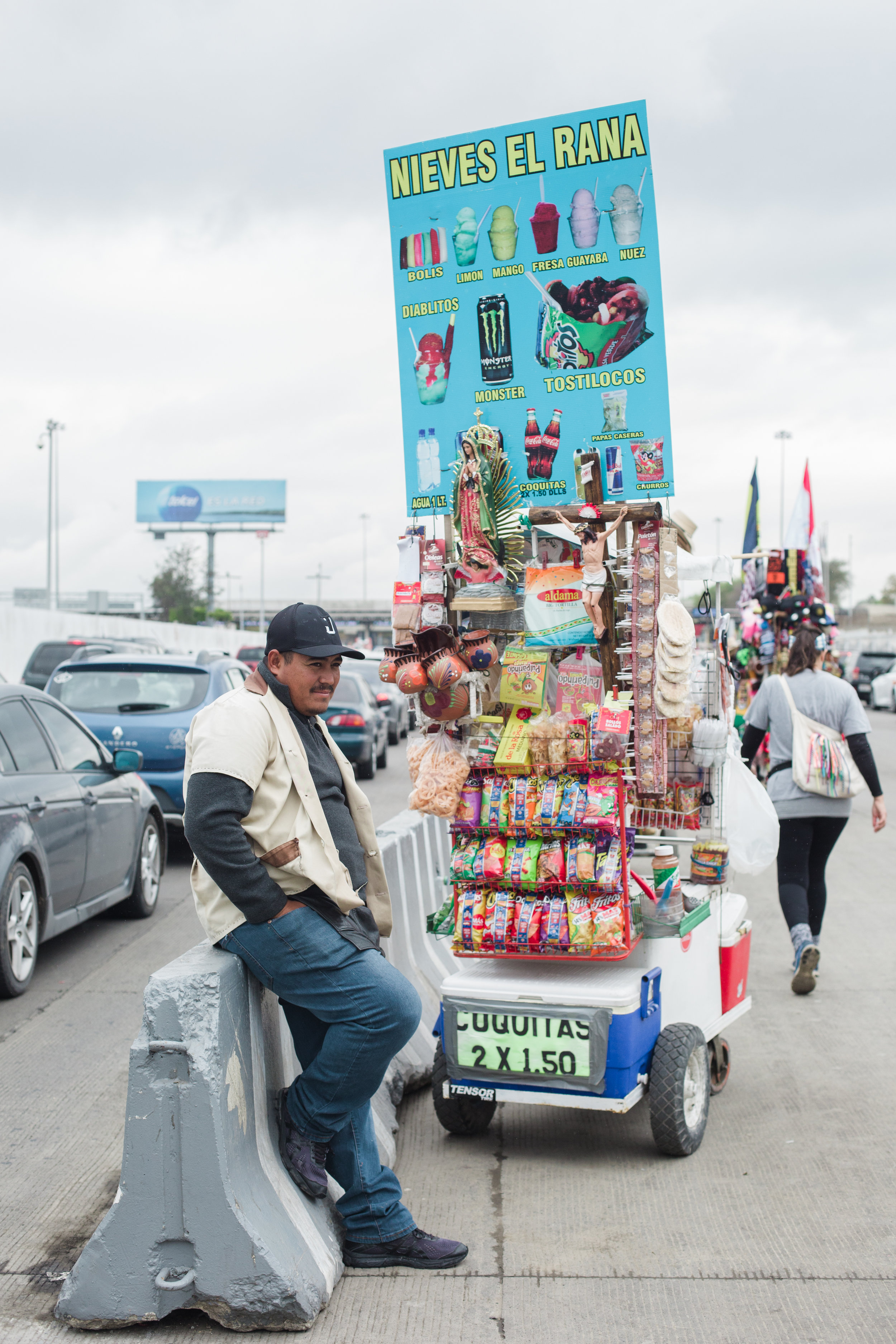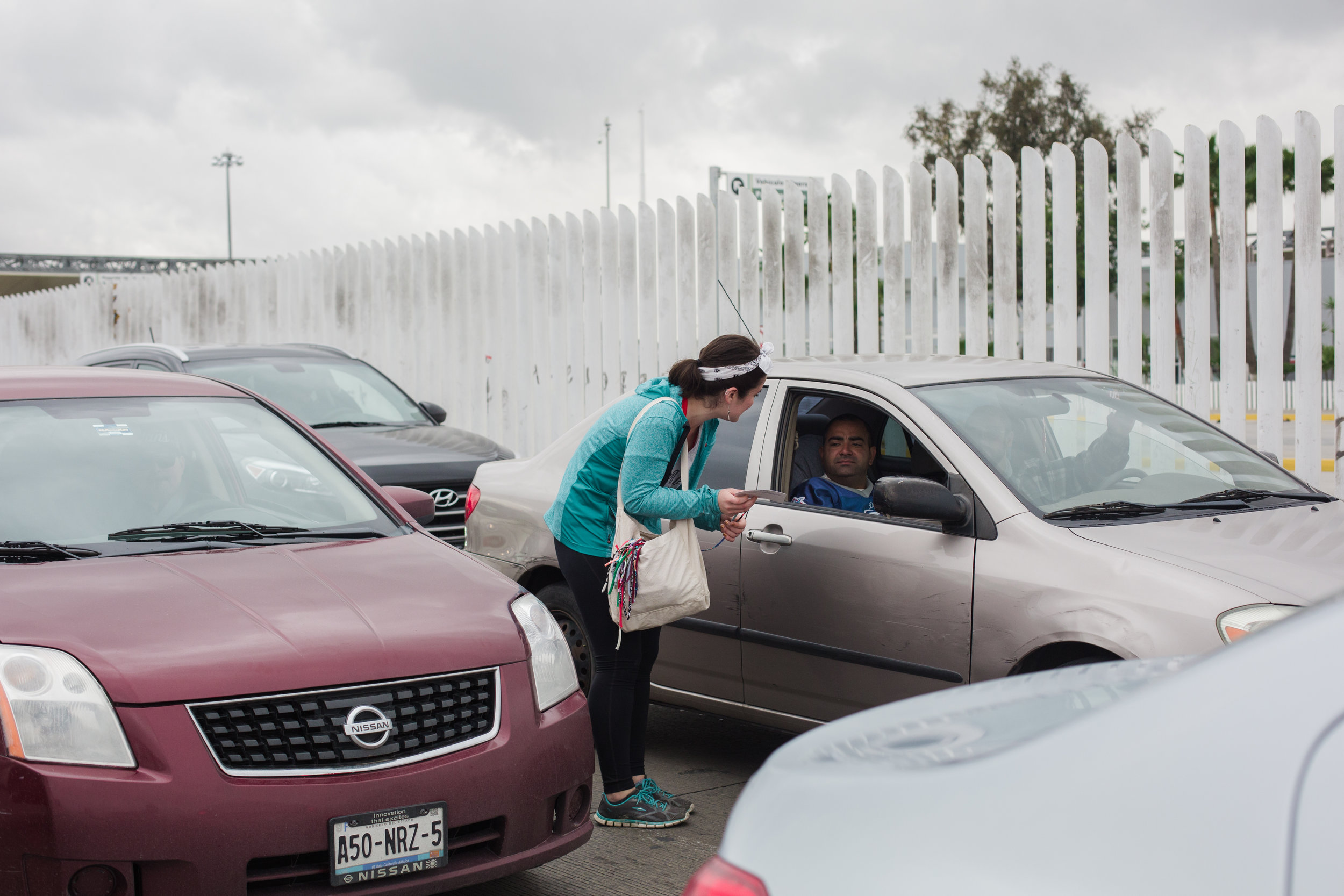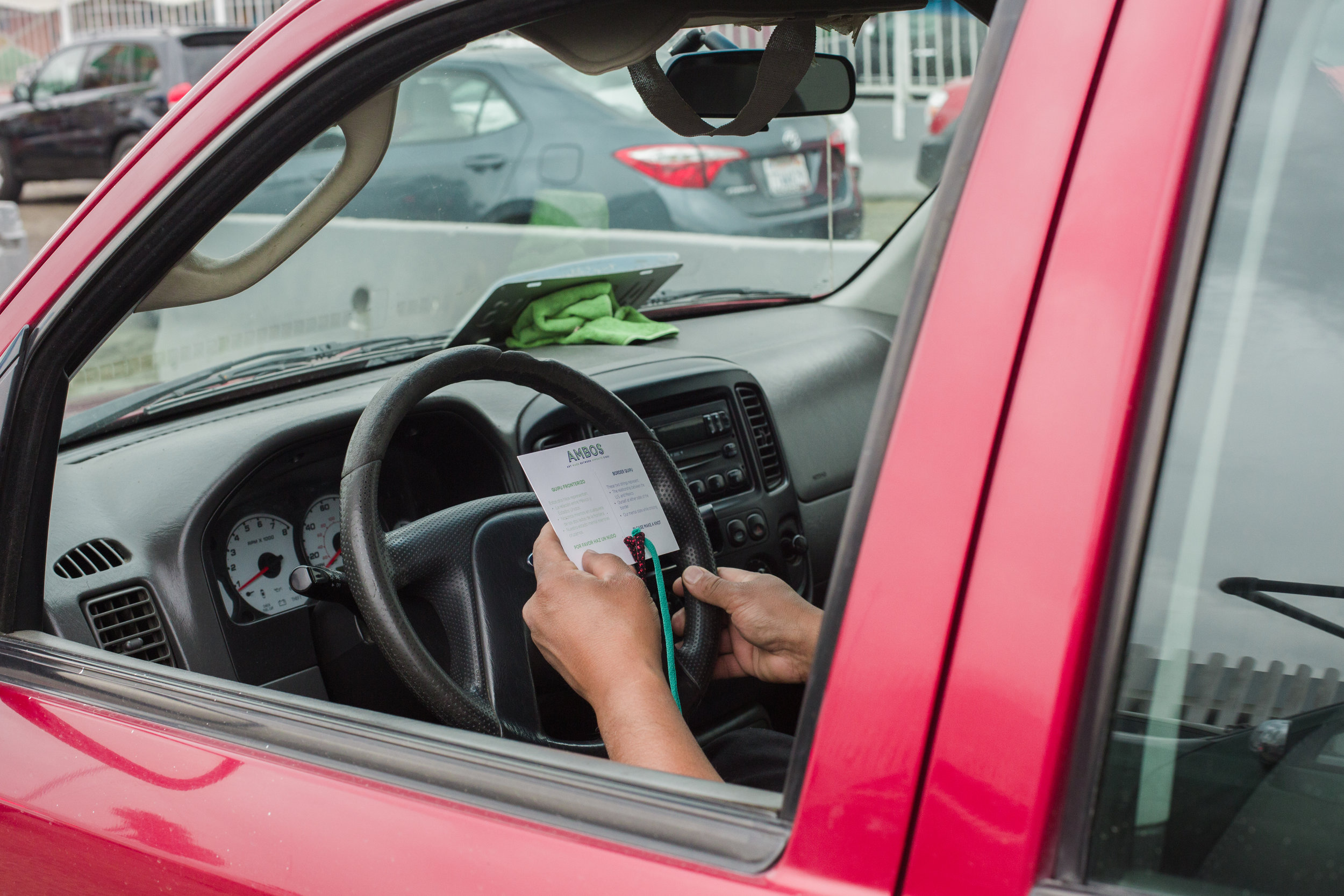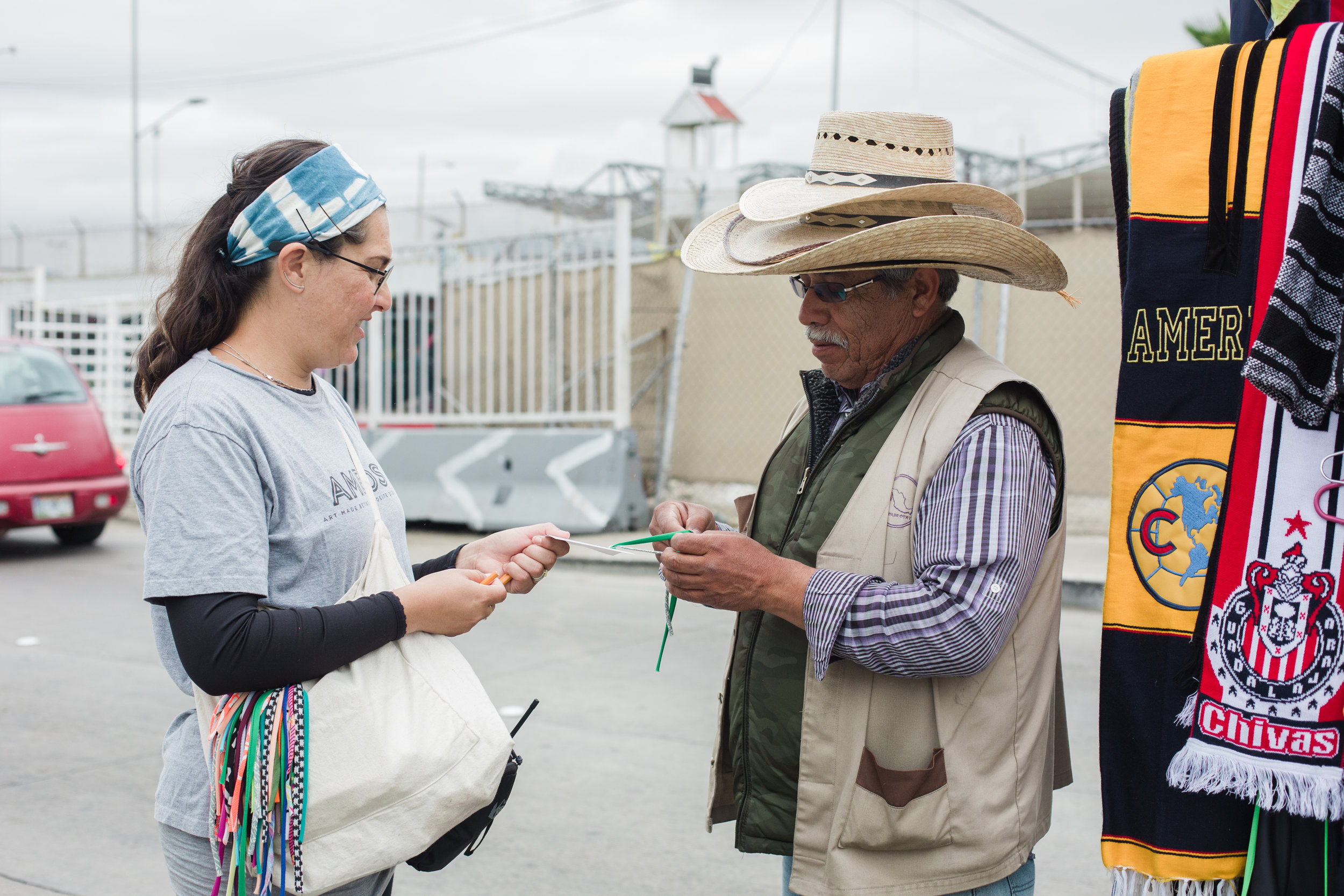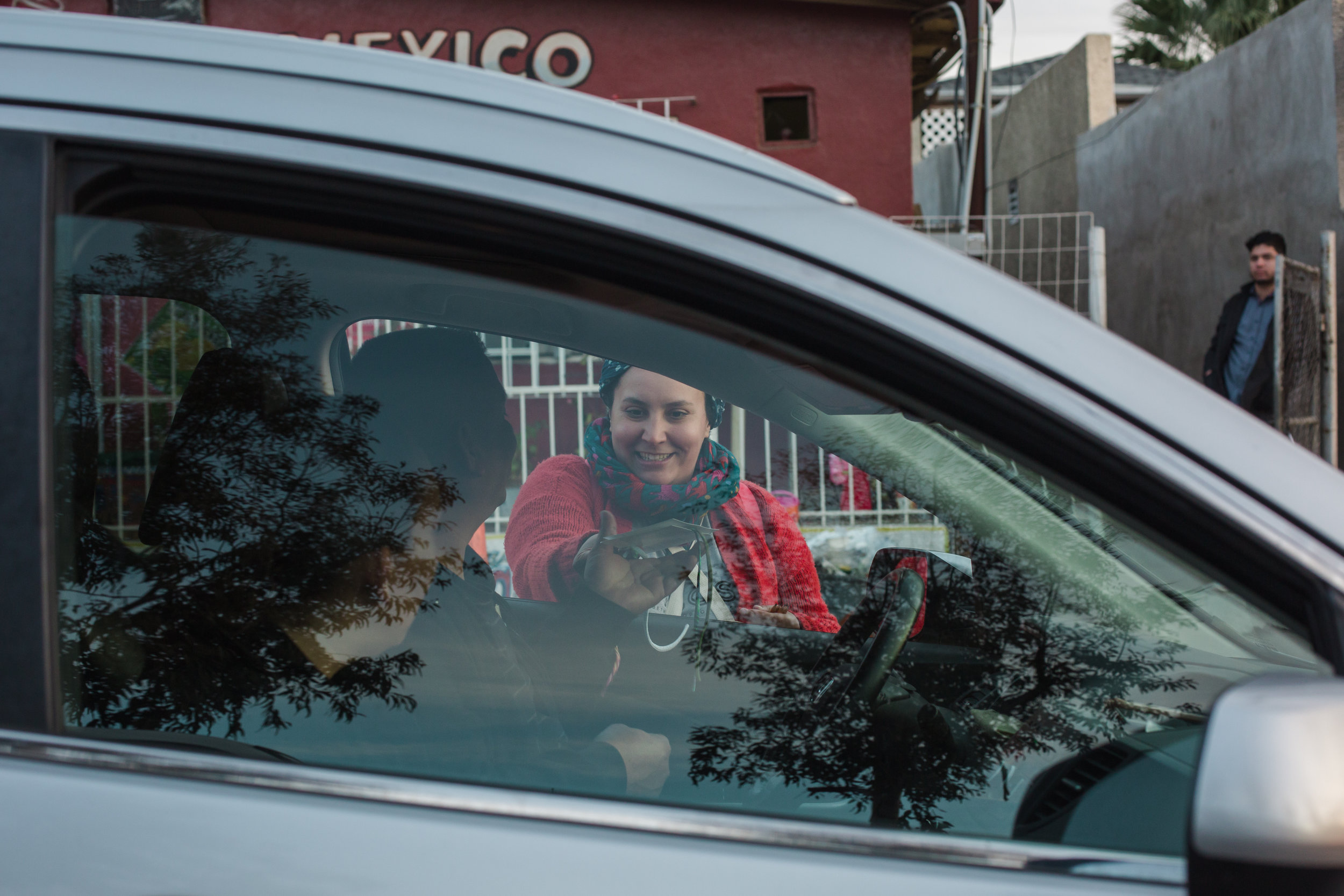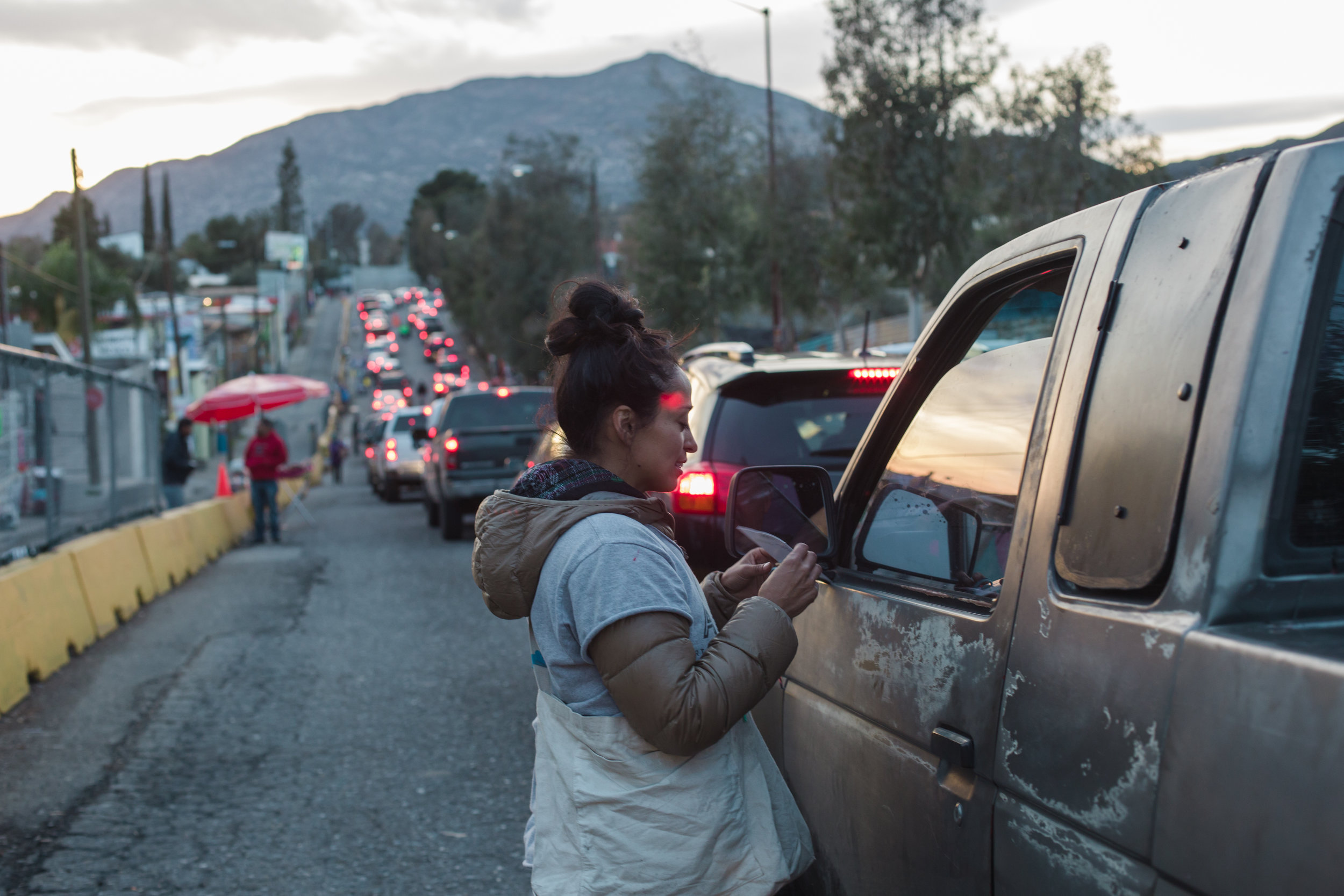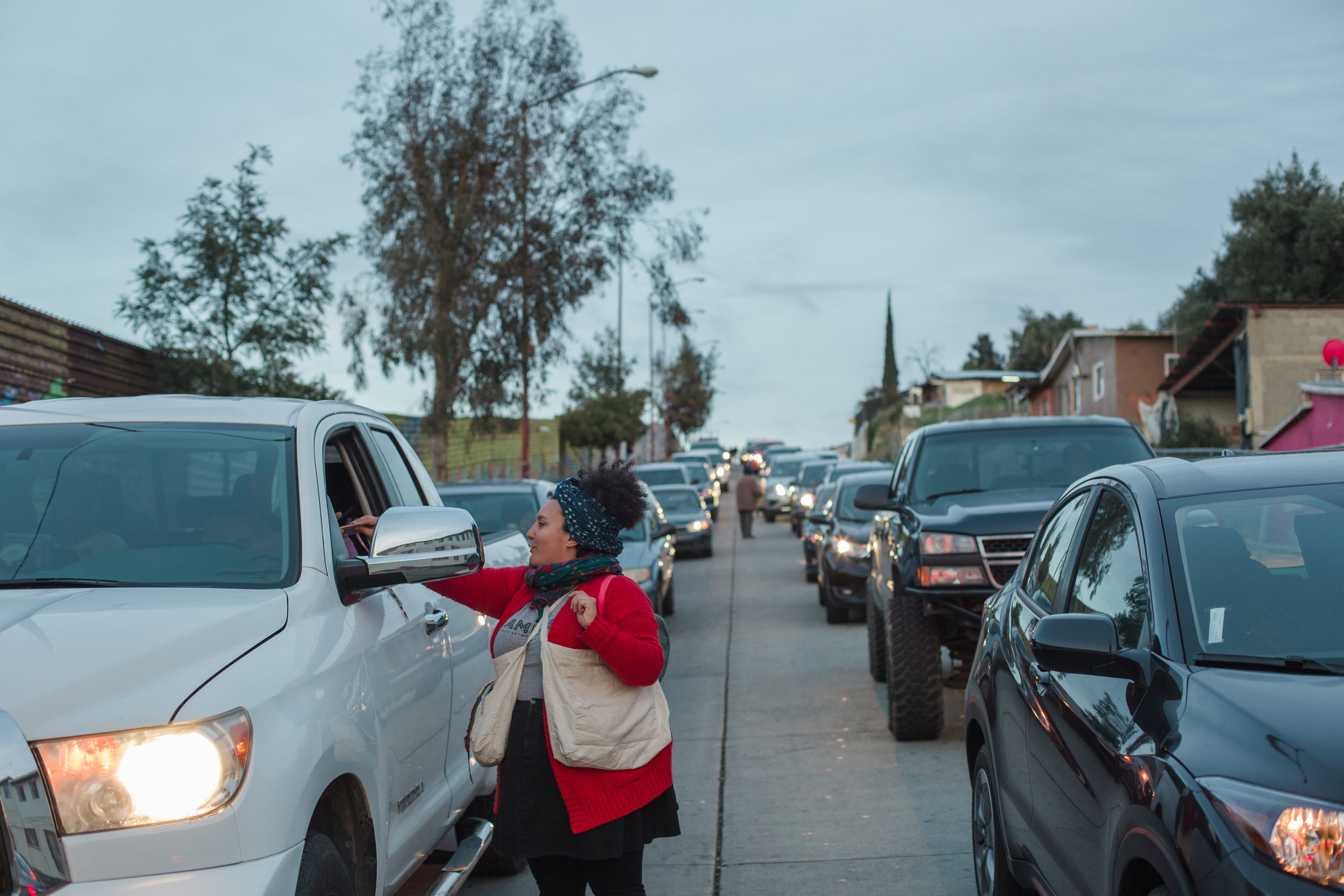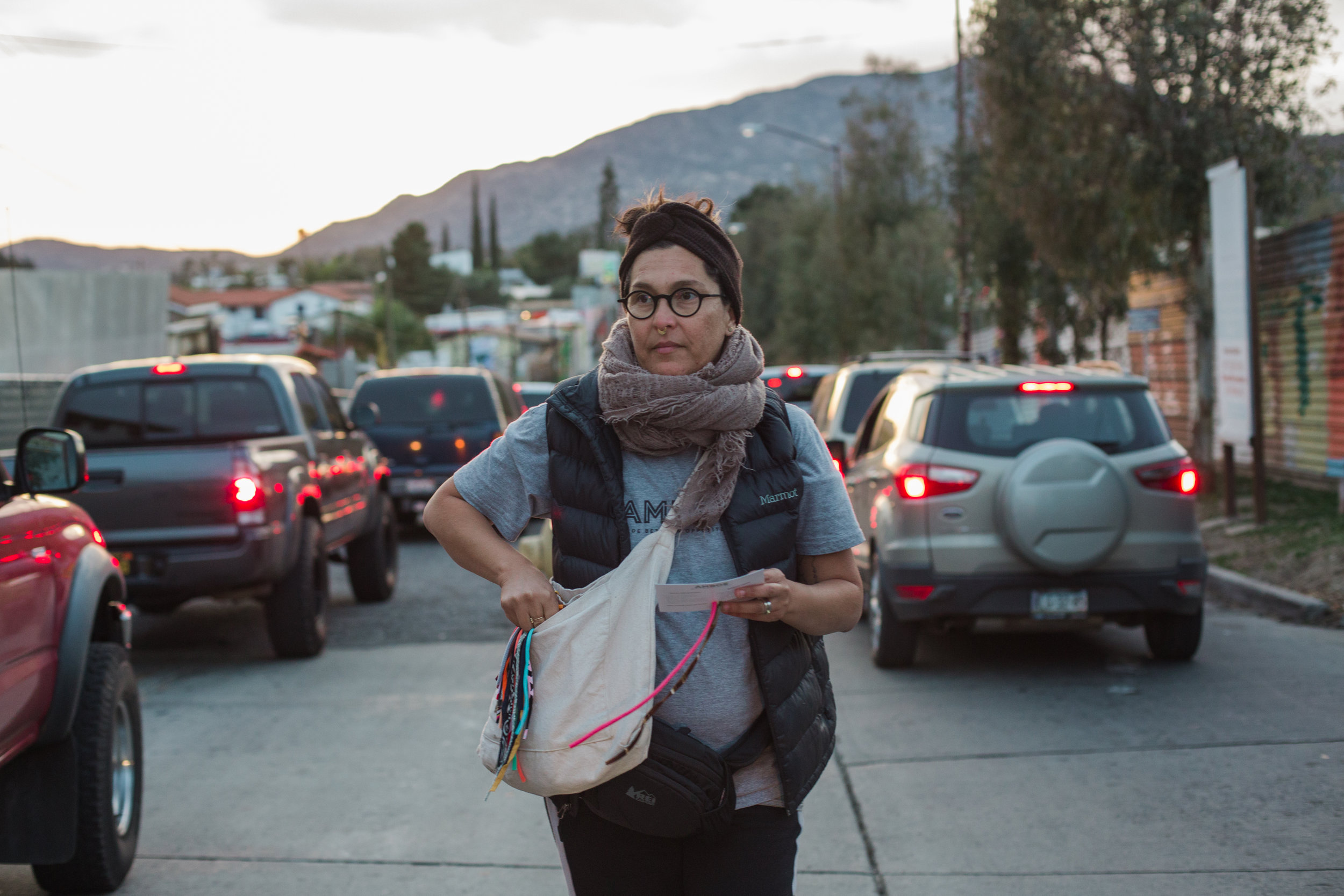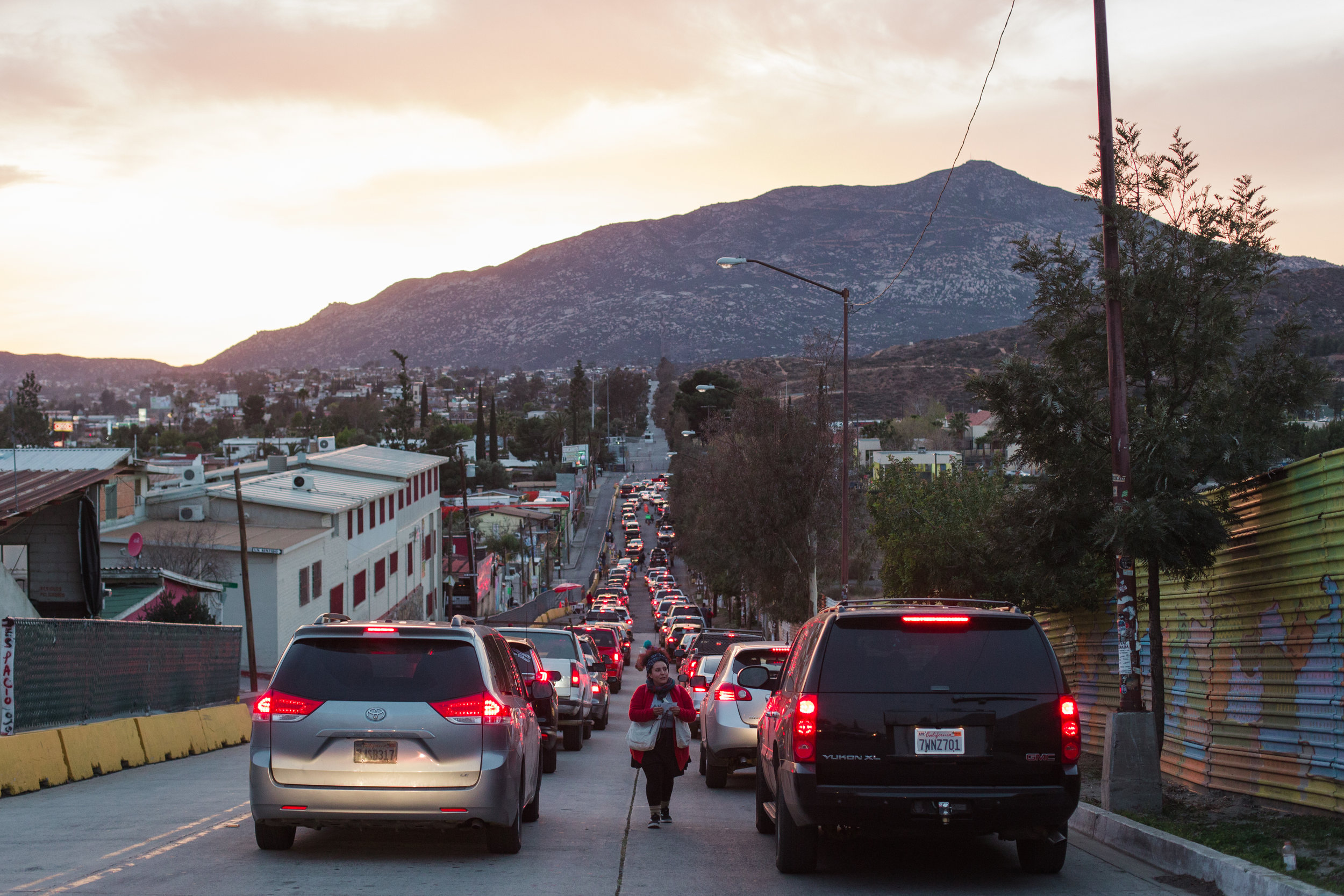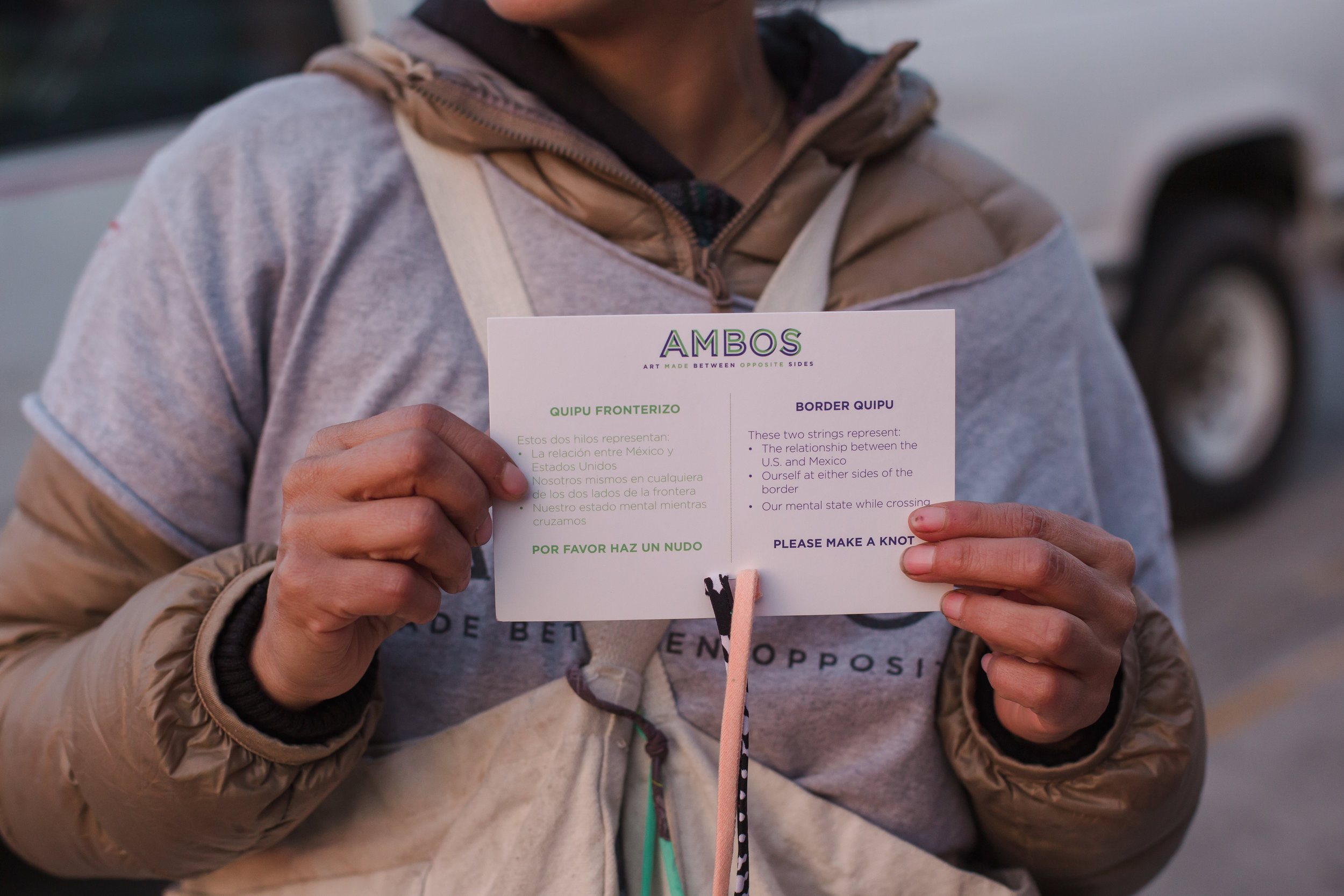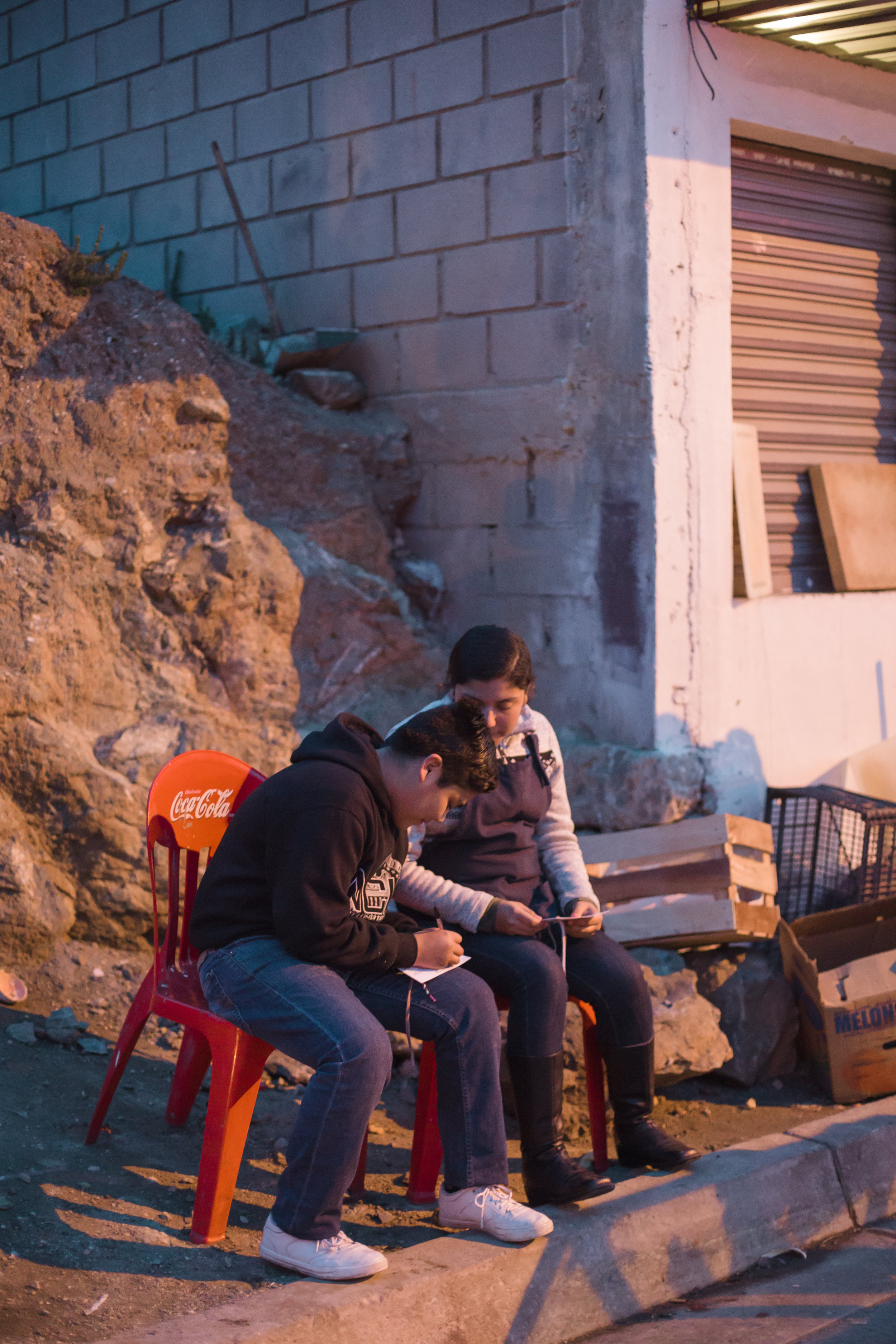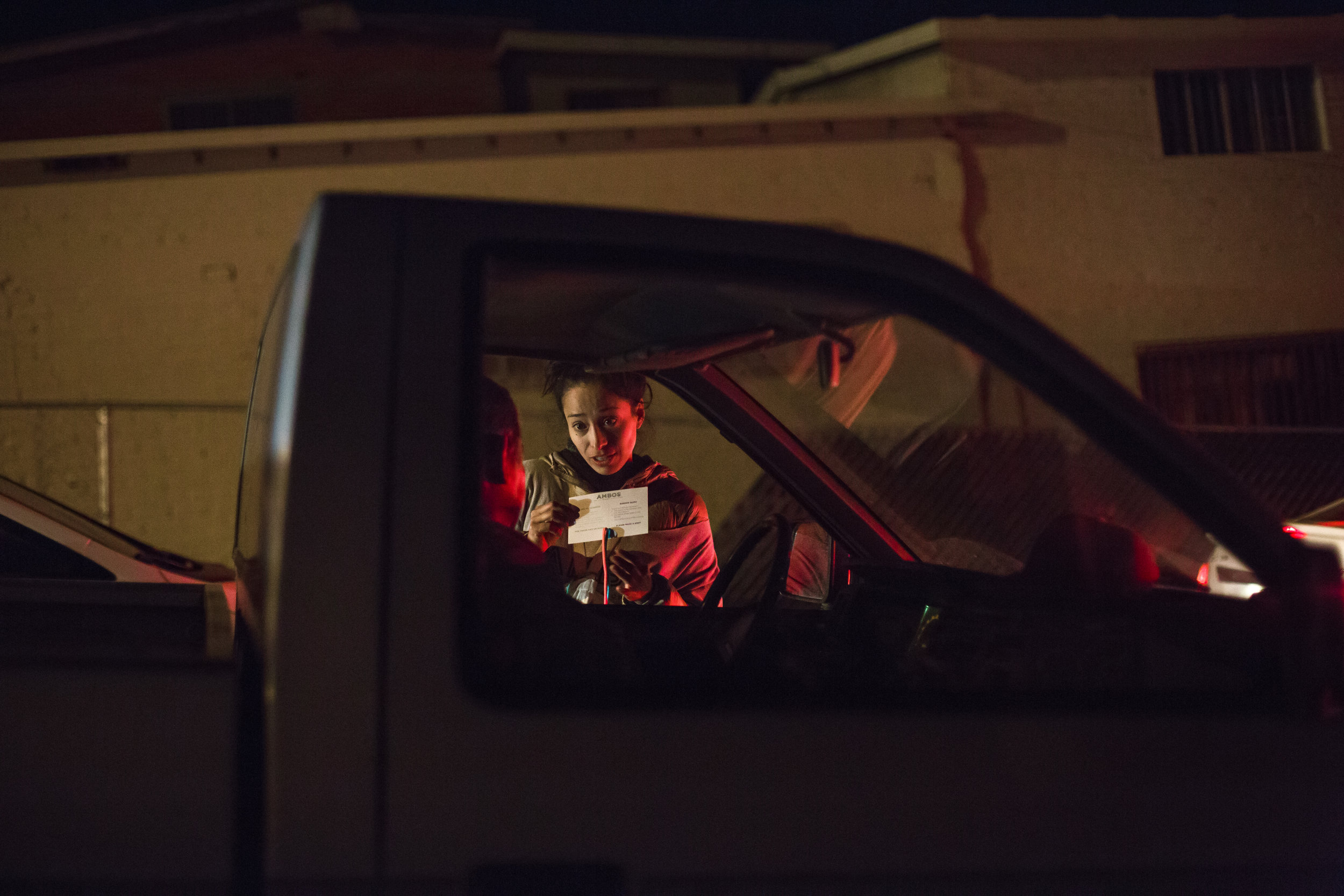BORDER QUIPU // QUIPU FRONTERIZO
Including the largest land border crossing in the world, the US/Mexico border can be seen by some as the perimeter of Latin America, the edge of Mexico, Central and South America. The point at which 300,000 of our identities and histories are checked every day.
Expanding on this notion using a quipu, the Andean Pre-Columbian organizational system of recording history, as a framework to record the daily migrations to the north, Tanya Aguiñiga initiated Quipu Fronterizo/Border Quipu for her segment of AMBOS.
Quipu Fronterizo/Border Quipu engages US/Mexico border commuters on both sides of the border by asking about their experiences and asking them to anonymously tie a knot. The AMBOS team walks among the cars in traffic, pedestrians waiting in line, and surrounding areas of the crossing asking for participation in an art project that focuses on the lives of those who cross the border and/or live in the borderlands. Postcards that read “¿Qué piensas cuando cruzas esta frontera? / What are your thoughts when you cross this border?” are passed out with pencils for participants to record their thoughts in the space provided. All of those who work or live along the border are invited to participate, and asked what they think if they can cross the border, and if not, their opinions on living there. On the opposite side of the postcard, there is a explanation of the exercise for the quipu that we create with the help of participants. Commuters are given two strands of thread and asked to tie them into a knot reflecting their time and emotions spent crossing. The strands represent the US and Mexico’s relationship to one another, our self at either sides of the border, and our own mental state at the point of crossing.
Each knot is collected from commuters and tied to other knots made on the same day. The cumulative series of daily bundled knots is organized into a large-scale quipu and, for the first series of AMBOS in 2016, was displayed on a billboard above the AMBOS storefront hub in view of traffic waiting to cross the border. Quipu Fronterizo/Border Quipu seeks to materialize our connection to one another as a community and make our presence and experiences visible to bi-national audiences.
The quipu includes 18 columns of knots collected from 2016-2018, when the AMBOS team visited all border crossings between California and Texas. By bringing Quipu Fronterizo/Border Quipu to all of these crossings, Tanya Aguiñiga, alongside the AMBOS team completed the first exhaustive survey of collective emotion along the US/Mexico border.
Incluyendo el cruce fronterizo más grande del mundo, la frontera de México/EUA es considerada por algunos el perímetro de Latinoamérica, el límite de México, Centroamérica y Sudamérica. El punto en donde 300,000 de nuestras identidades e historias son revisadas a diario.
Expandiendo este concepto usando un quipu, el sistema Andino Pre-Colombino de organización, como el marco para documentar las migraciones diarias al norte, Tanya Aguiñiga inició Quipu Fronterizo/Border Quipu para su segmento de AMBOS.
Quipu Fronterizo/Border Quipu aborda a viajantes de la frontera EUA/México en ambos lados de la frontera acerca de sus experiencias, pidiéndoles que anónimamente aten un nudo. El equipo de AMBOS camina entre los carros parados en el tráfico de espera, peatones esperando en línea, y las áreas vecinas al cruce fronterizo, pidiendo la participación en un proyecto de arte cuyo enfoque es la vida de aquellos que cruzan la frontera diariamente o viven en el área fronteriza. Postales con las preguntas “¿Qué piensas cuando cruzas esta frontera? / What are your thoughts when you cross this border?” son distribuidas junto con lápices a los participantes para que anoten sus pensamientos en el espacio proporcionado. Todos aquellos que viven o trabajan a lado de la frontera son invitados a participar, y son preguntados que piensan si pueden cruzar la frontera, y si no, sus opiniones acerca de vivir ahí. Del otro lado de la postal, hay una explicación acerca del quipu que será creado con la ayuda de los participantes. Los viajantes son proporcionados con dos cuerdas y se les pide hacer un nudo que represente una reflexión acerca de su tiempo y emociones mientras cruzan. Las cuerdas representan la relación entre México y Estados Unidos, nosotros mismos en ambos lados de la frontera, y nuestro estado mental al punto de cruzar.
Cada nudo es recolectado de los viajantes y unido a otros nudos hechos el mismo día. La acumulación de los nudos diarios es organizada en un quipu a gran escala, y para la primera serie de AMBOS en el 2016, fue mostrado en un espectacular arriba de la base de AMBOS en plena vista del tráfico esperando a cruzar la frontera. Quipu Fronterizo/Border Quipu busca materializar nuestra conexión con uno a otro como comunidad y hacer nuestra presencia y experiencias visibles a audiencias binacionales.
El quipu incluye 18 columnas de nudos recolectadas entre el 2016 y 2018, cuando el equipo de AMBOS visitó todas las cruces fronterizas entre California y Texas. Al llevar Quipu Fronterizo/Border Quipu a todos esos cruces, Tanya Aguiñiga, junto con el equipo de AMBOS, completó la primera encuesta exhaustiva de sentimientos a lo largo de la frontera de México/EUA.
POSTCARDS FROM COMMUTERS

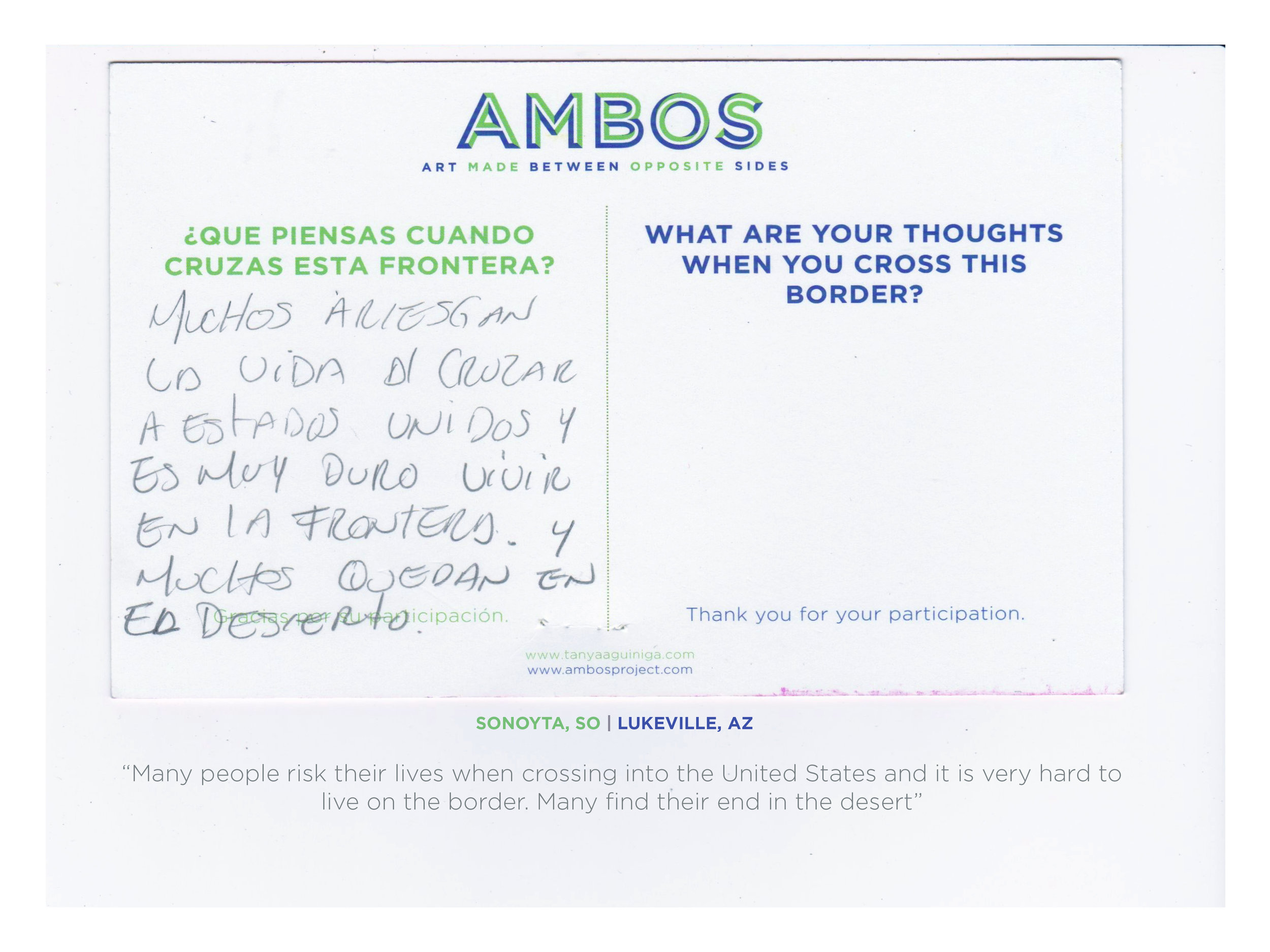
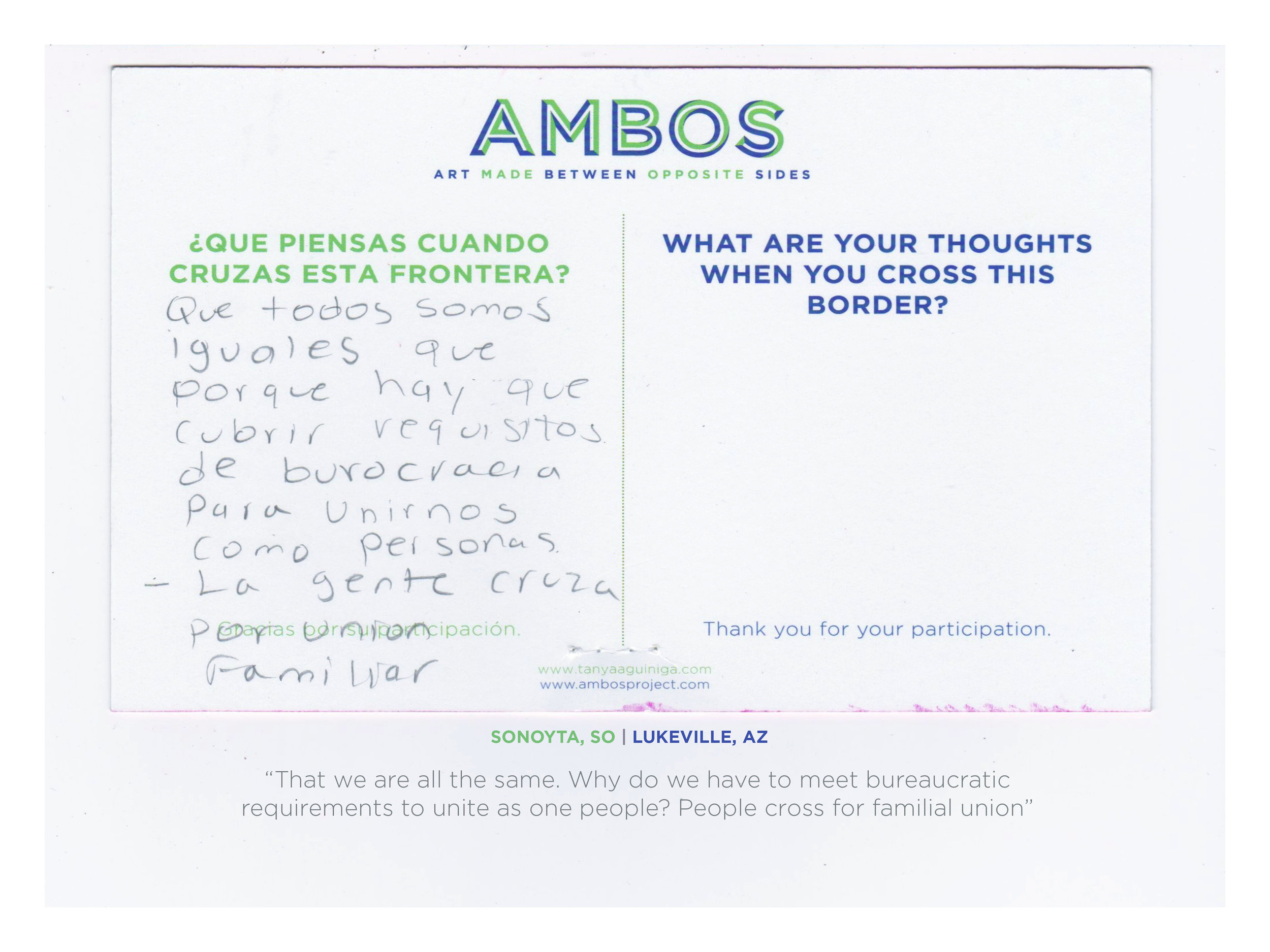
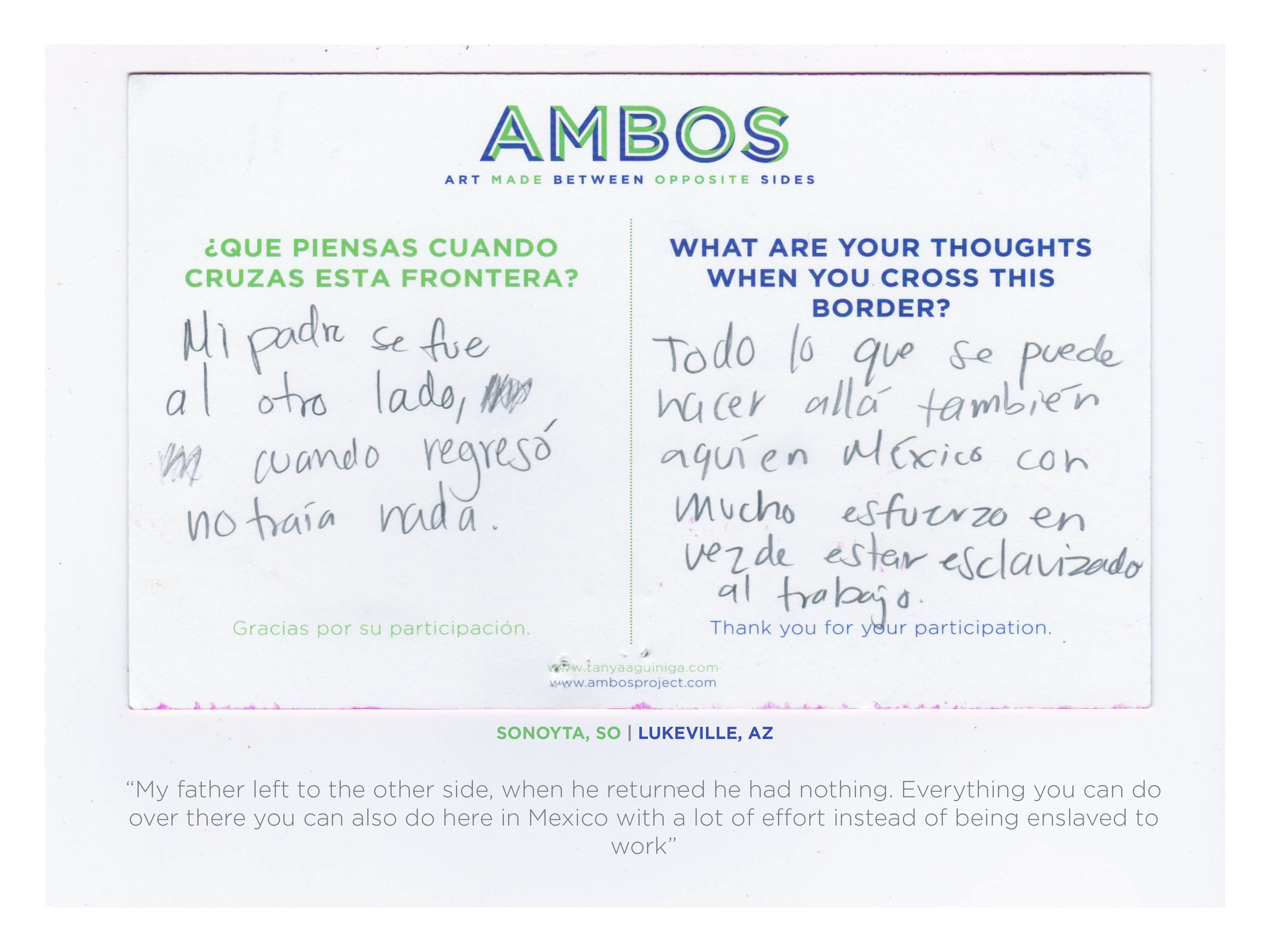
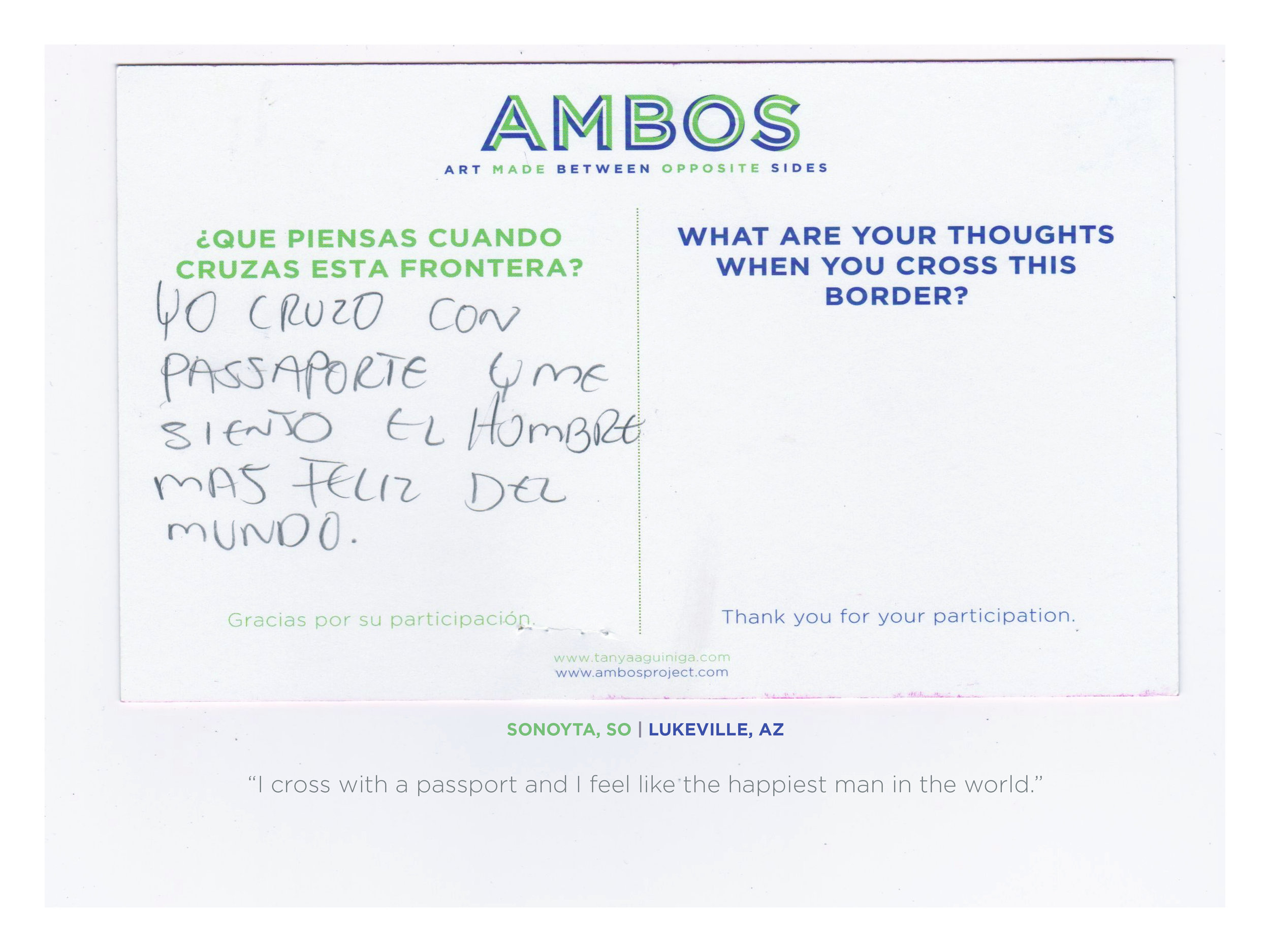
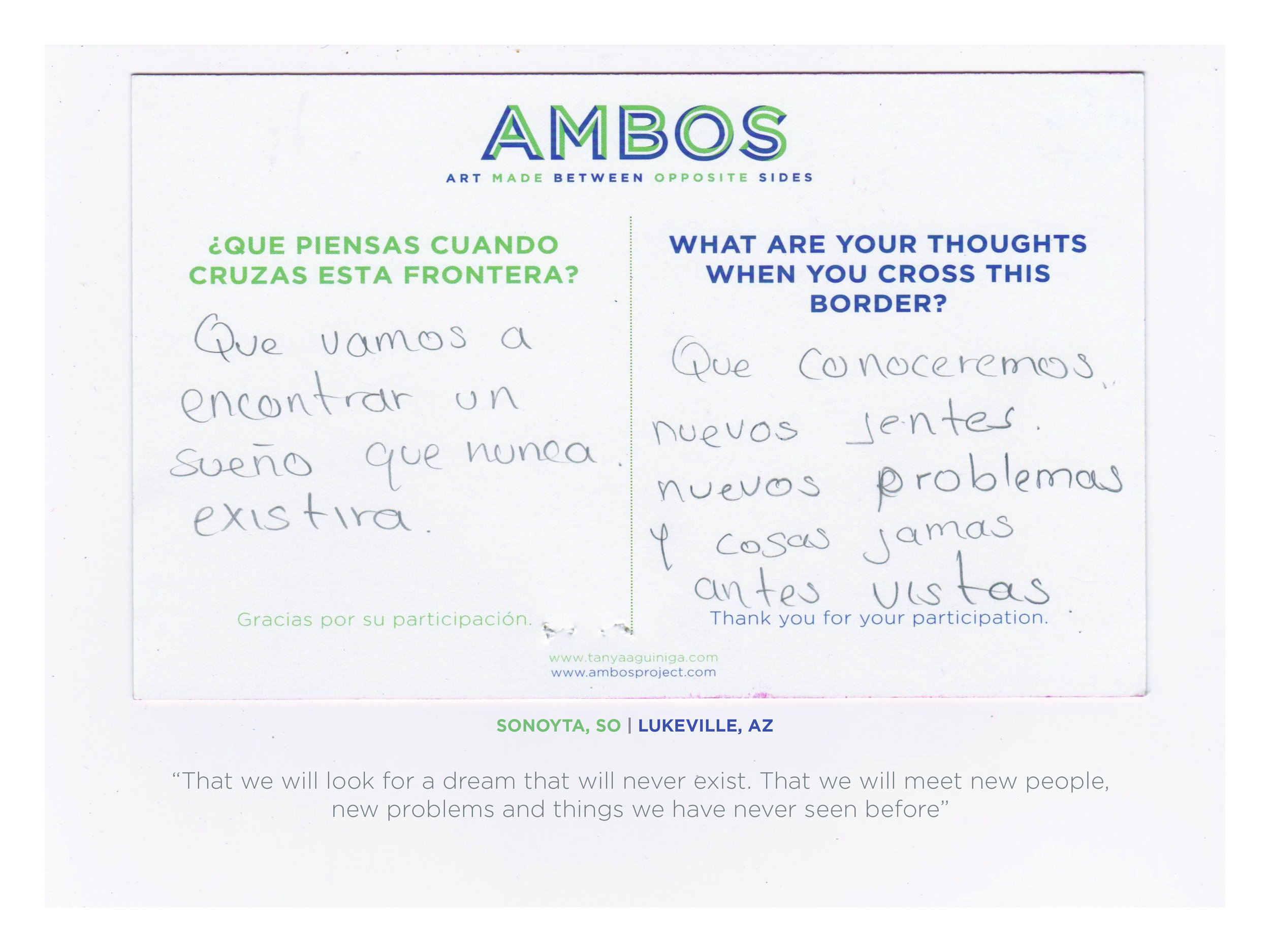
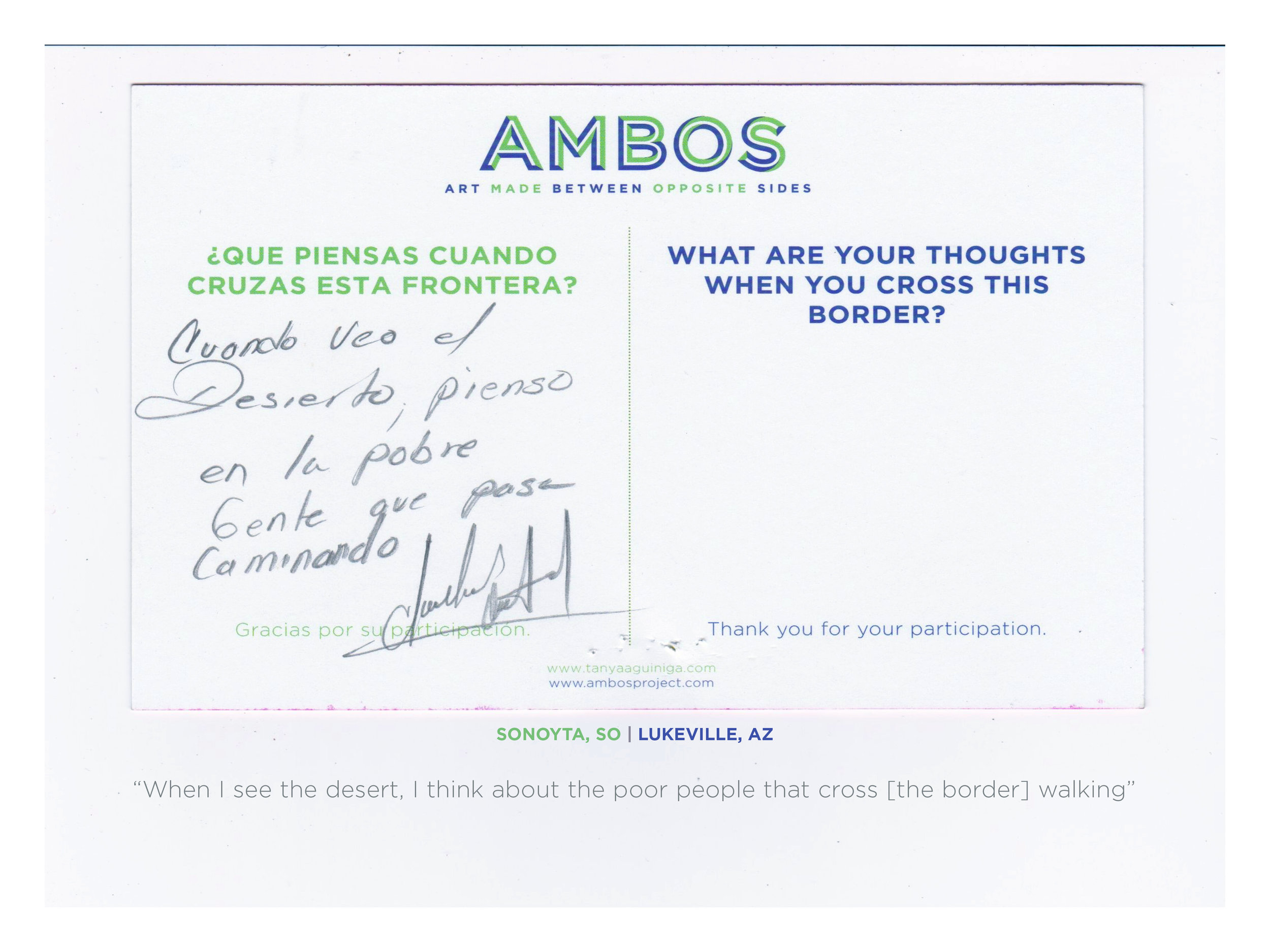
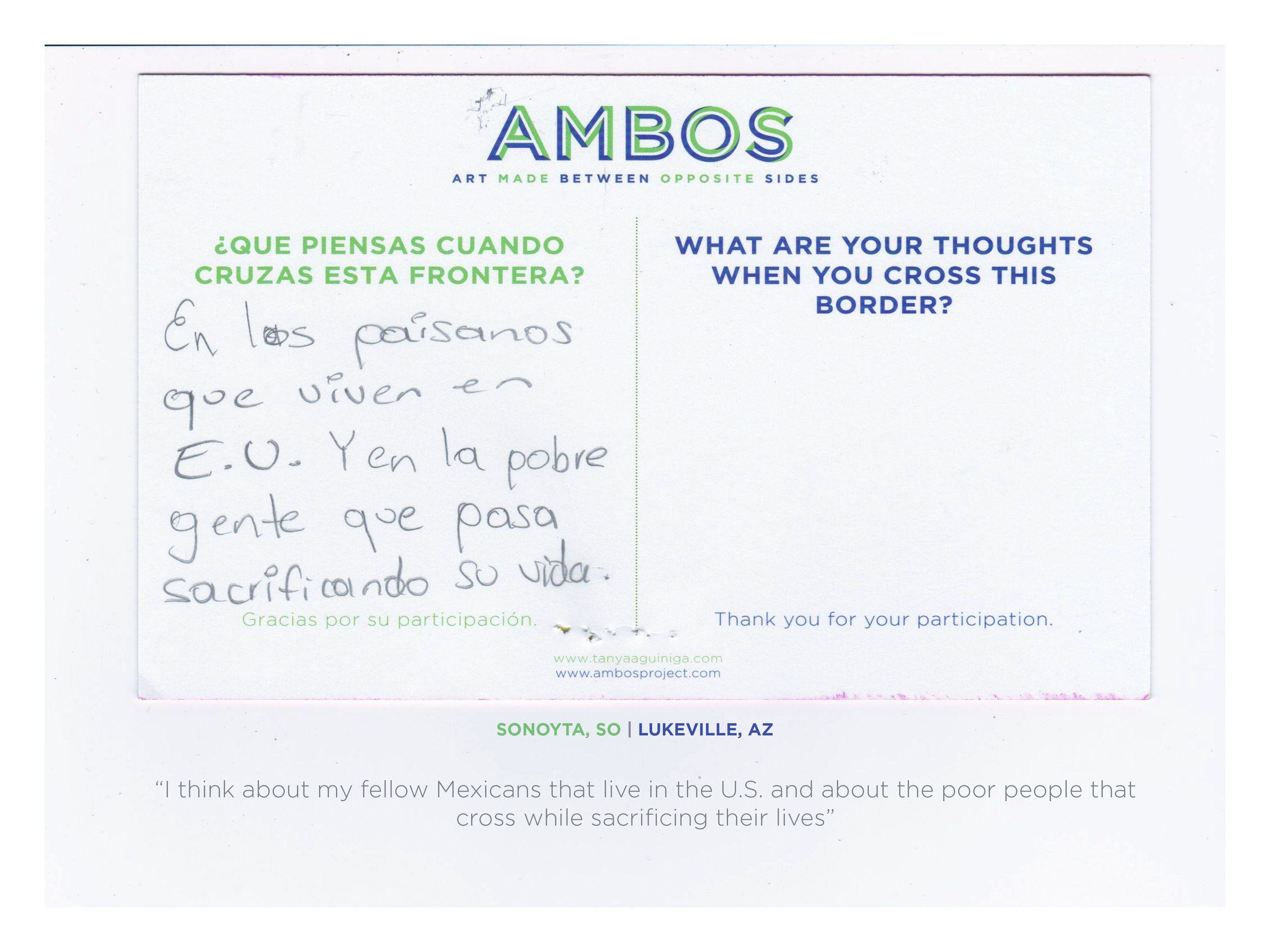

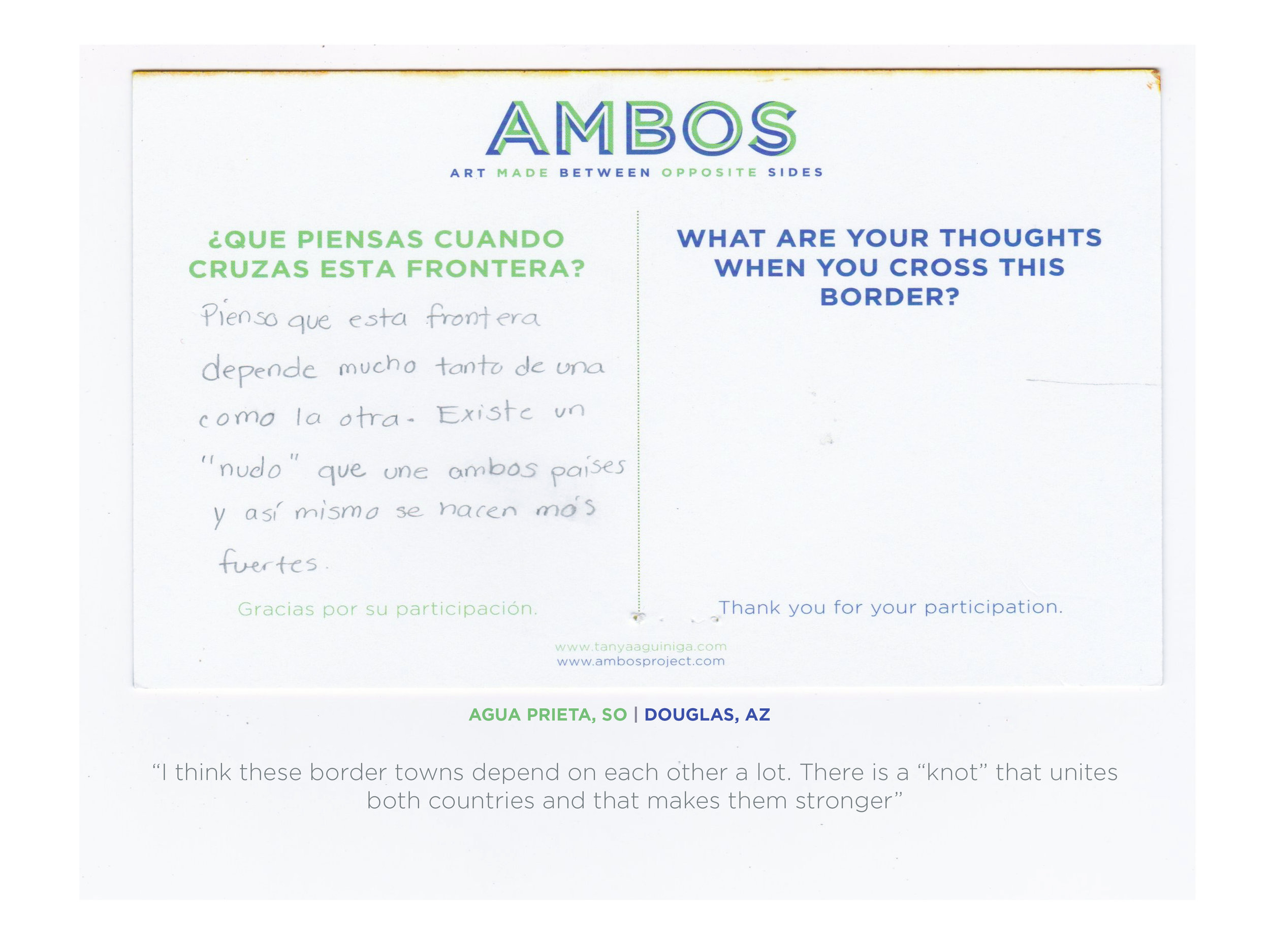


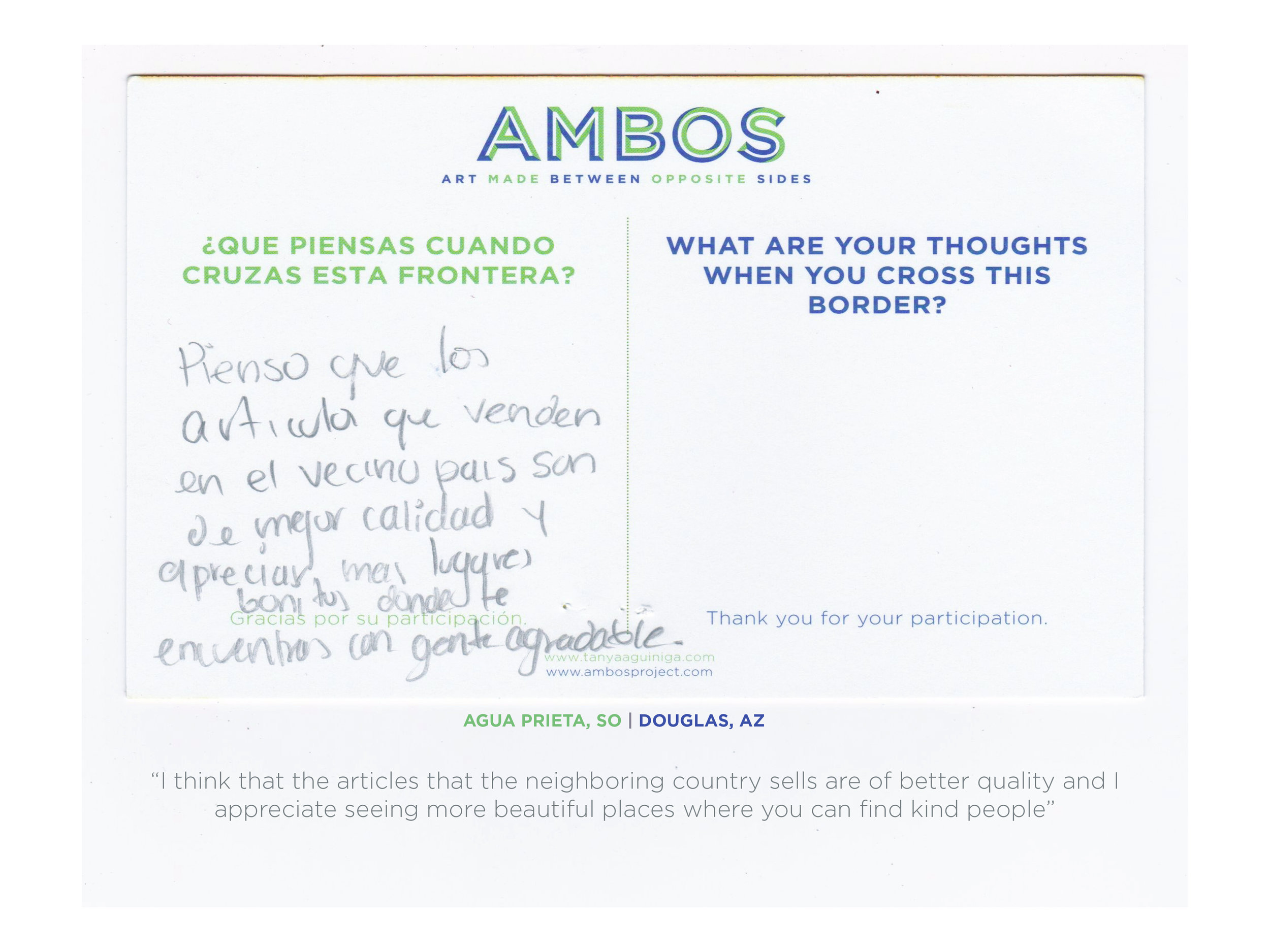
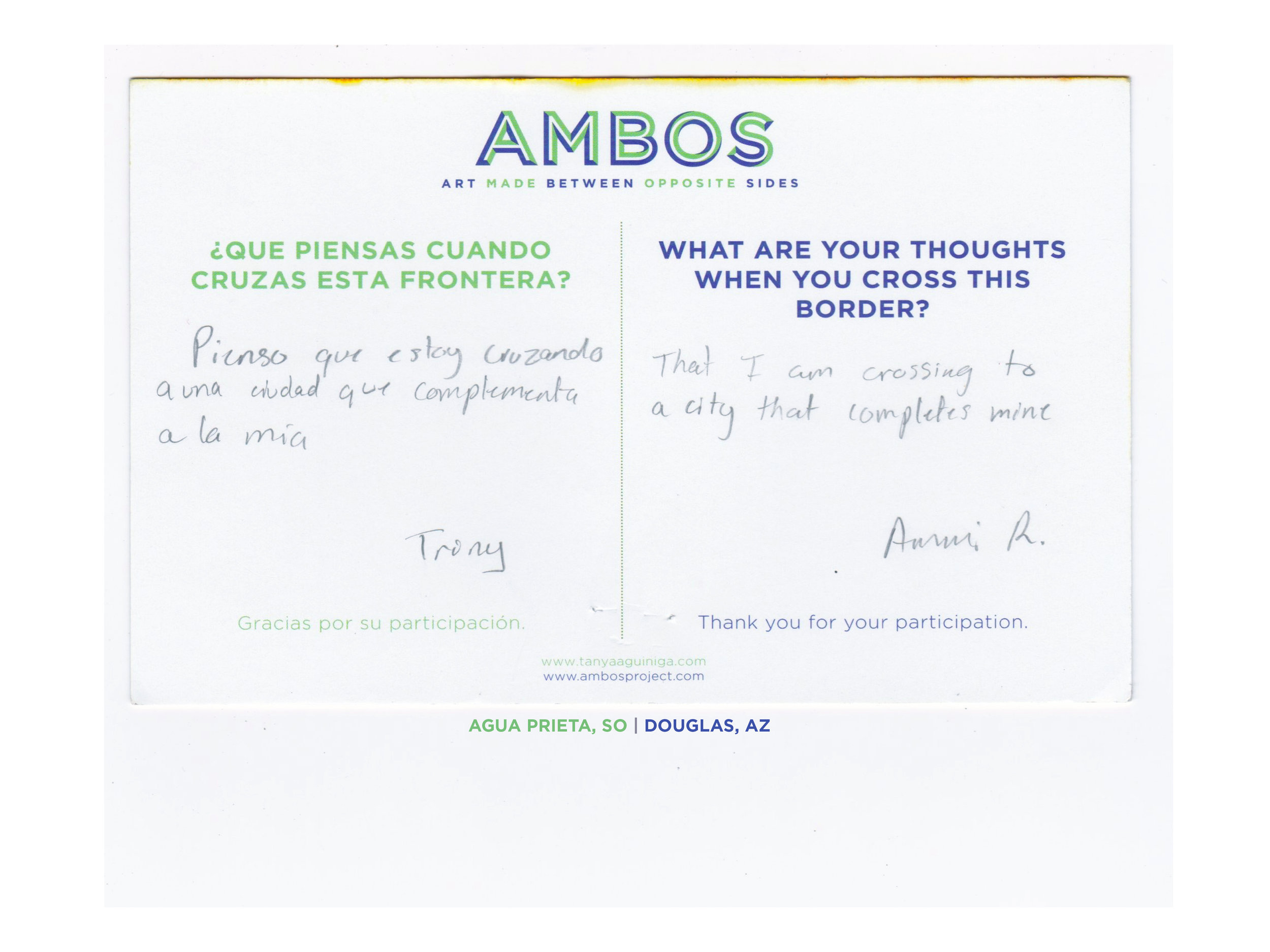
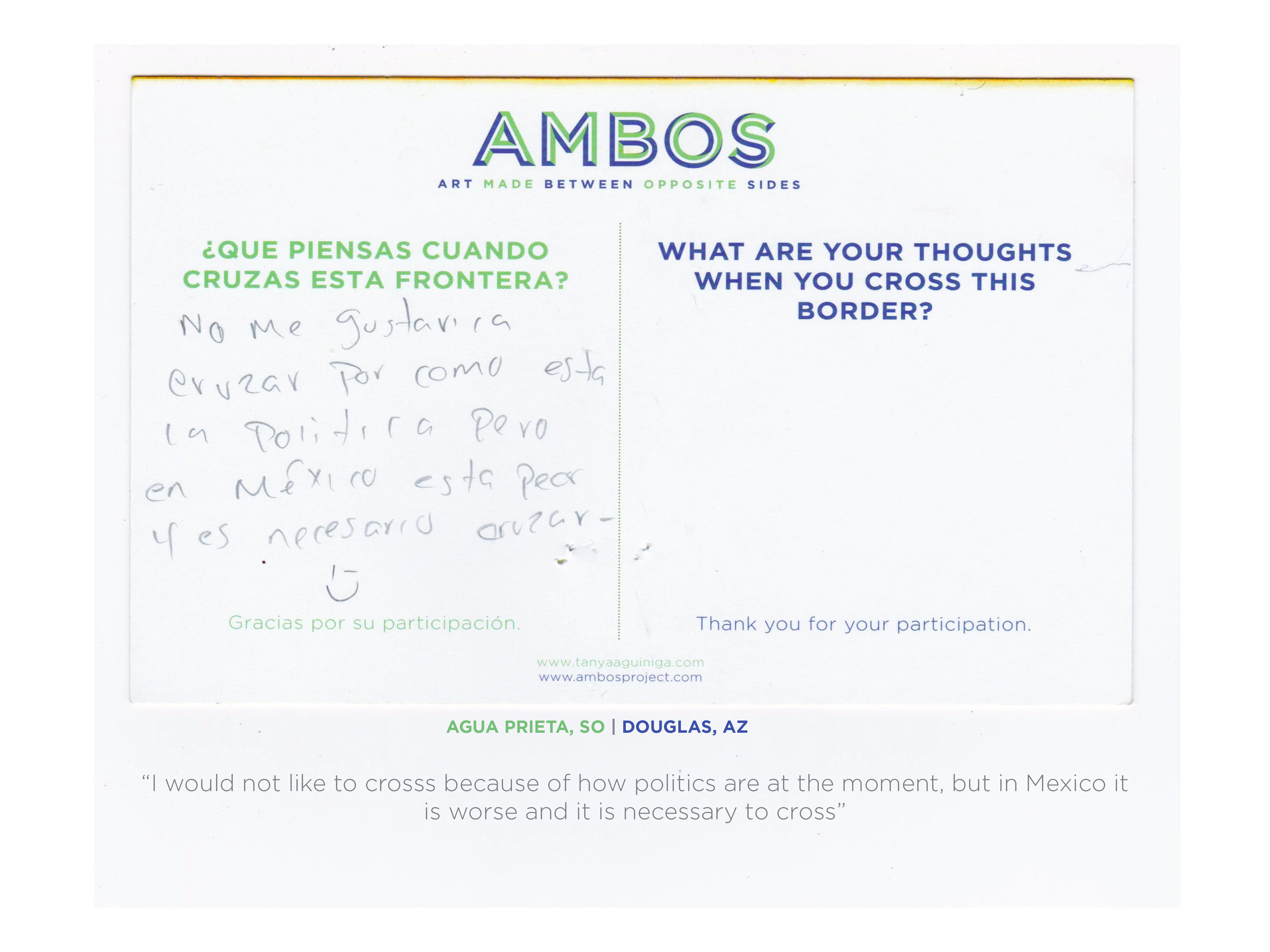
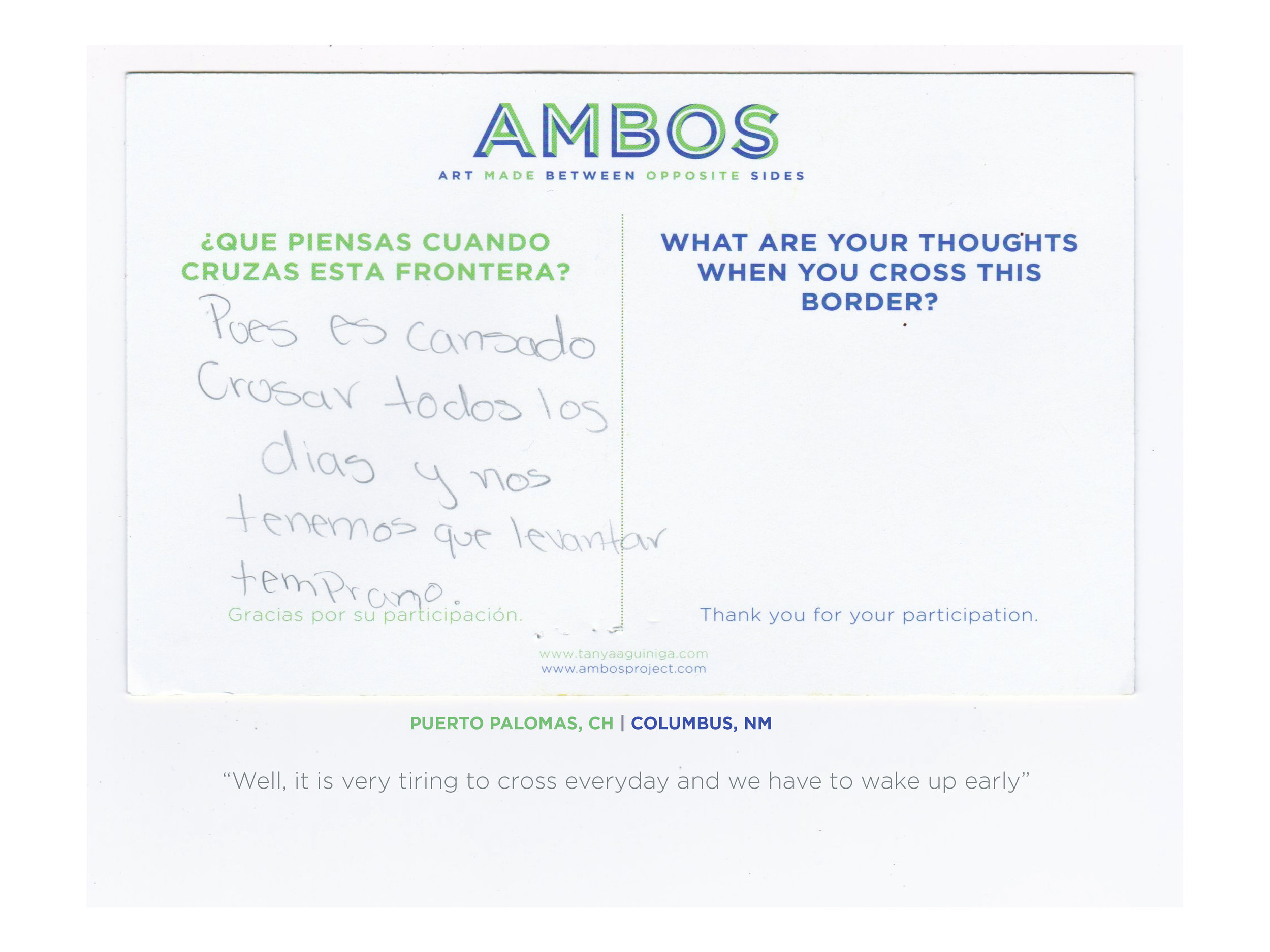
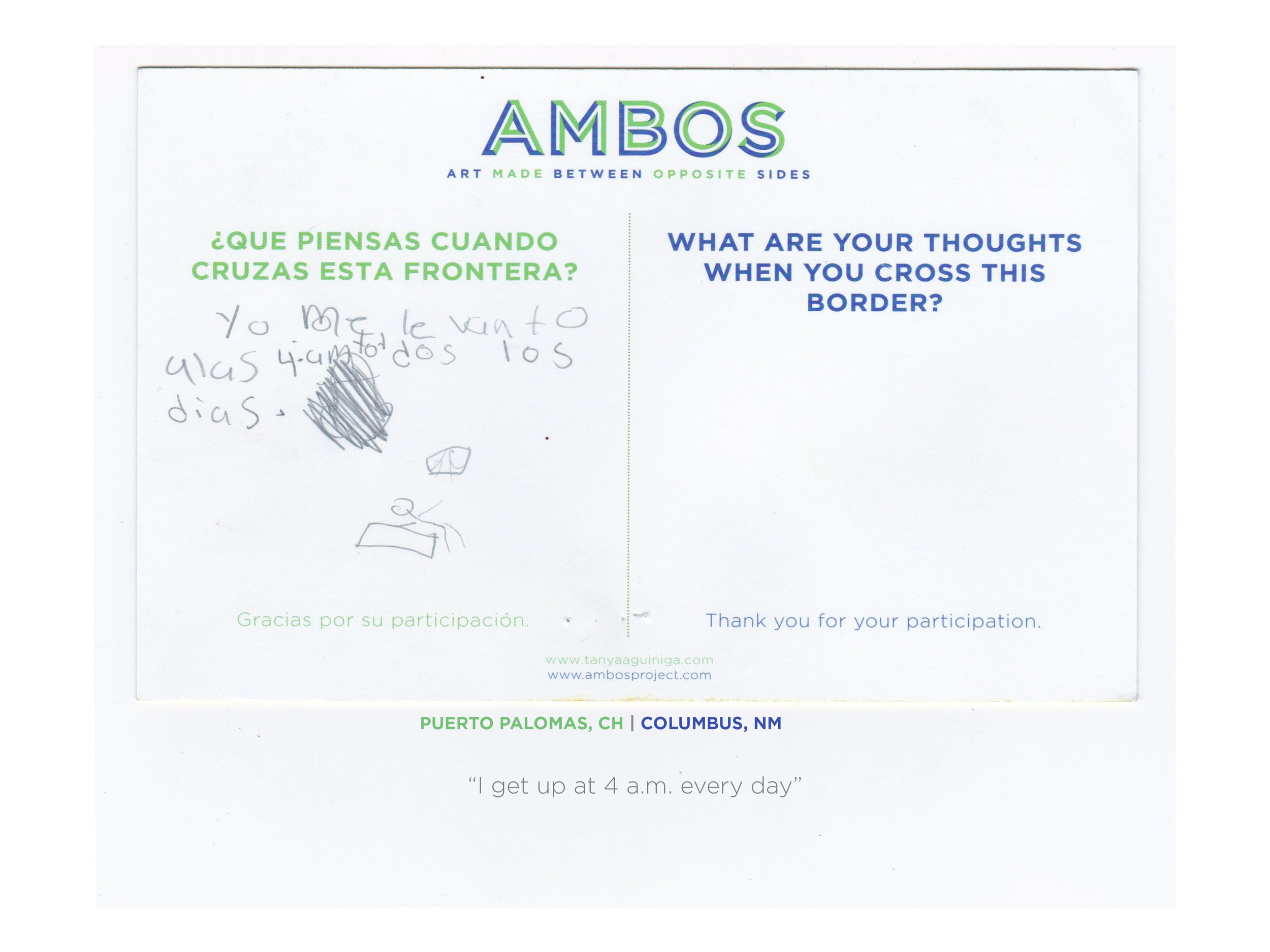


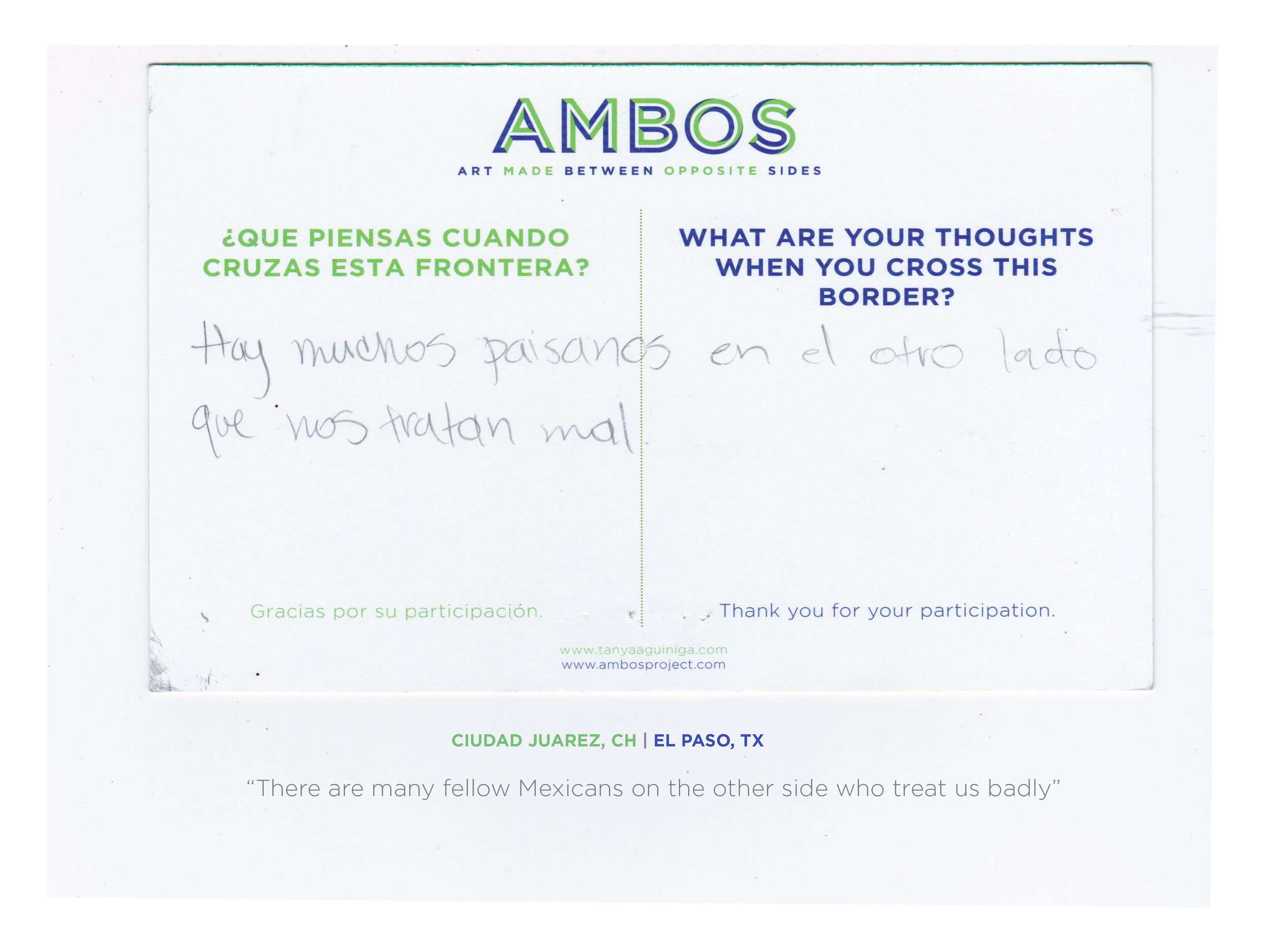
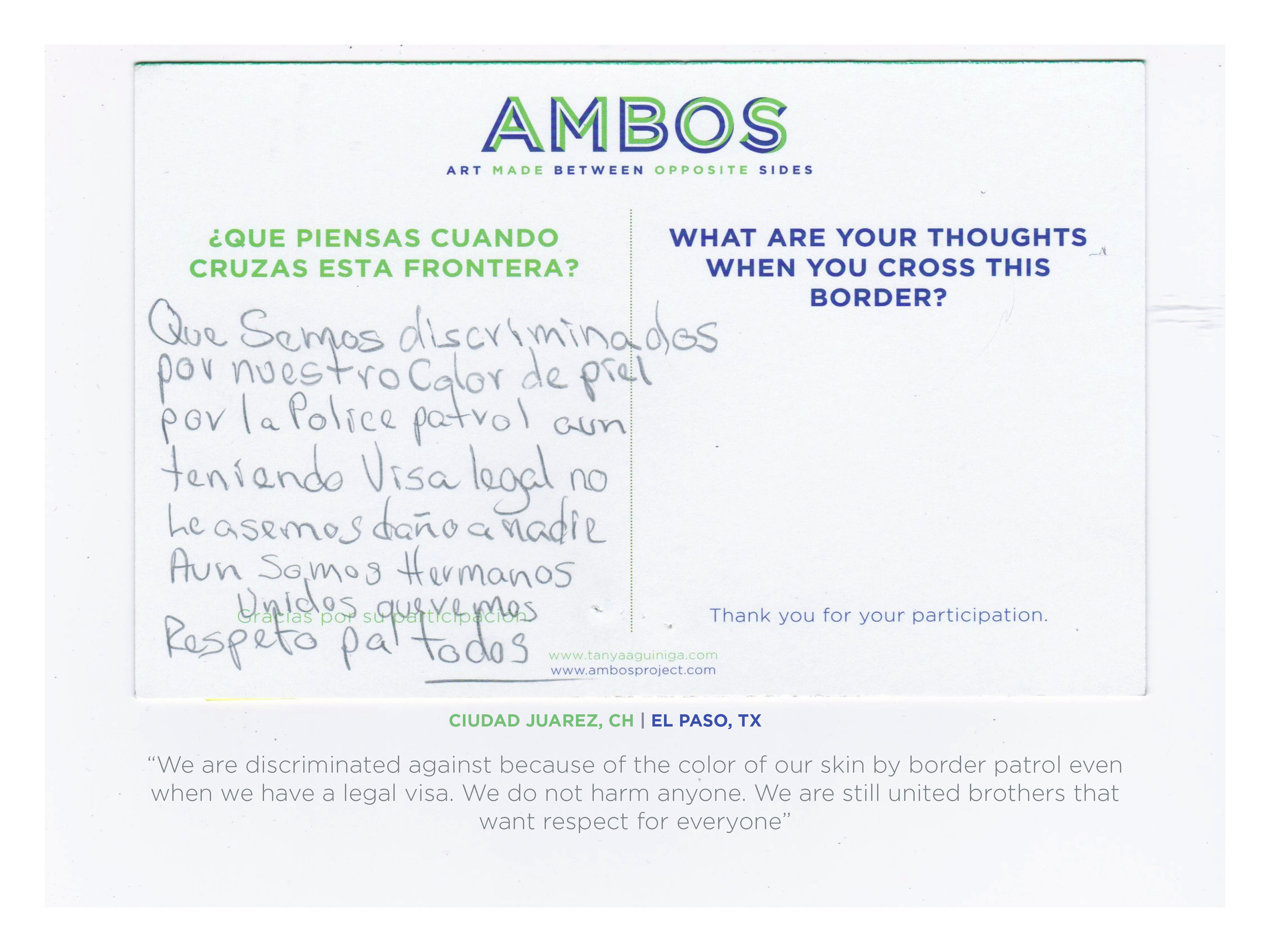
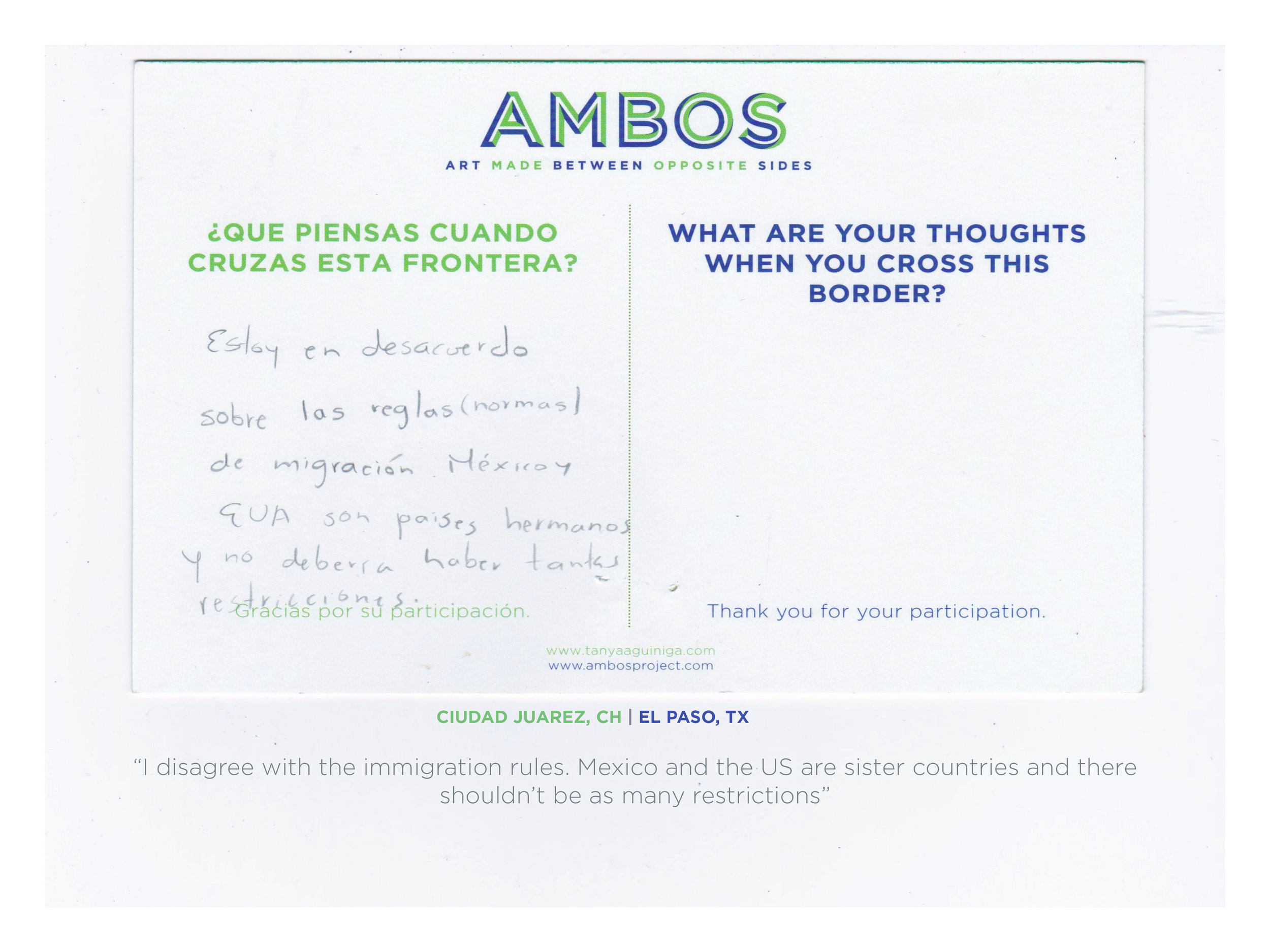
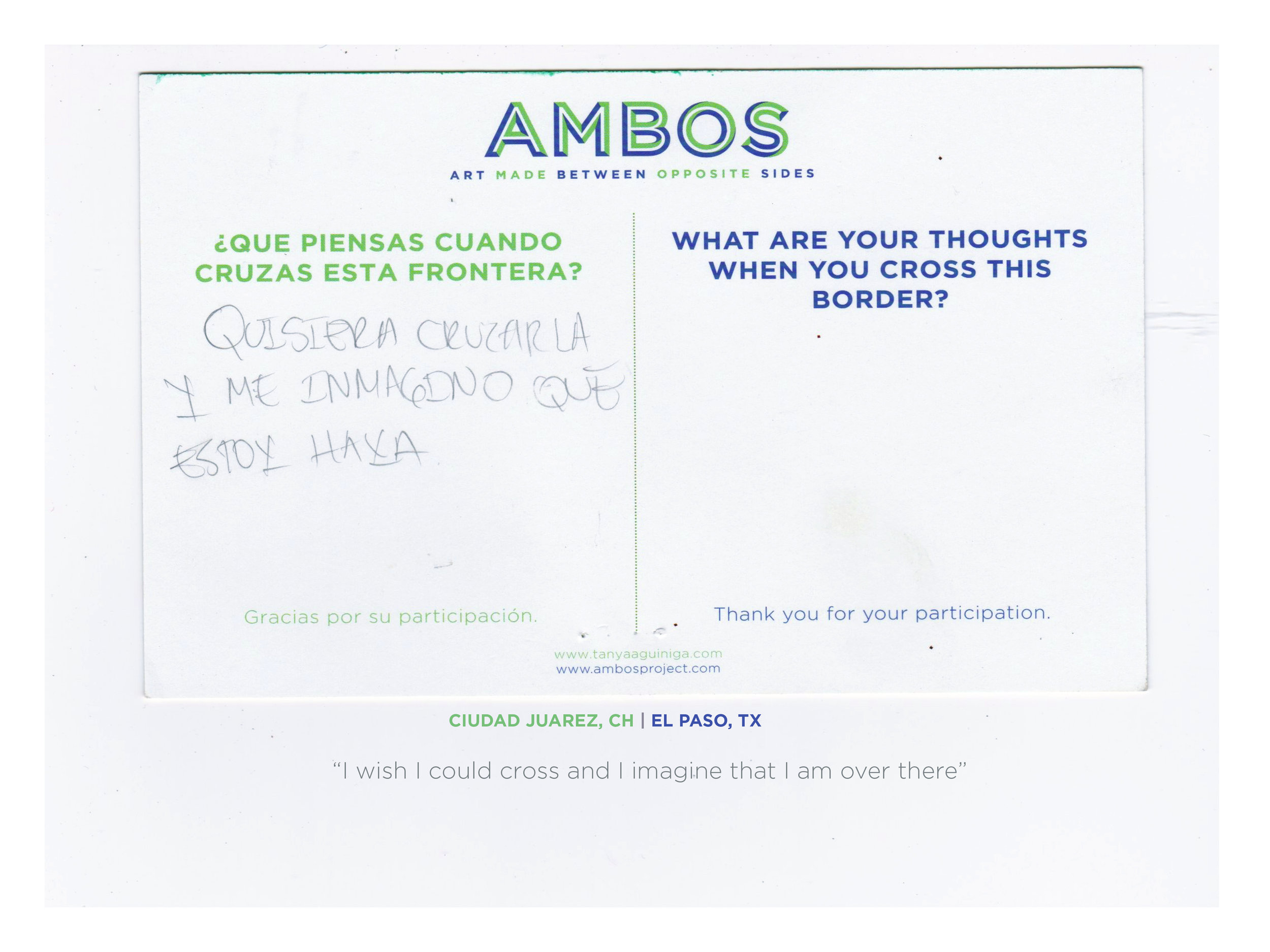
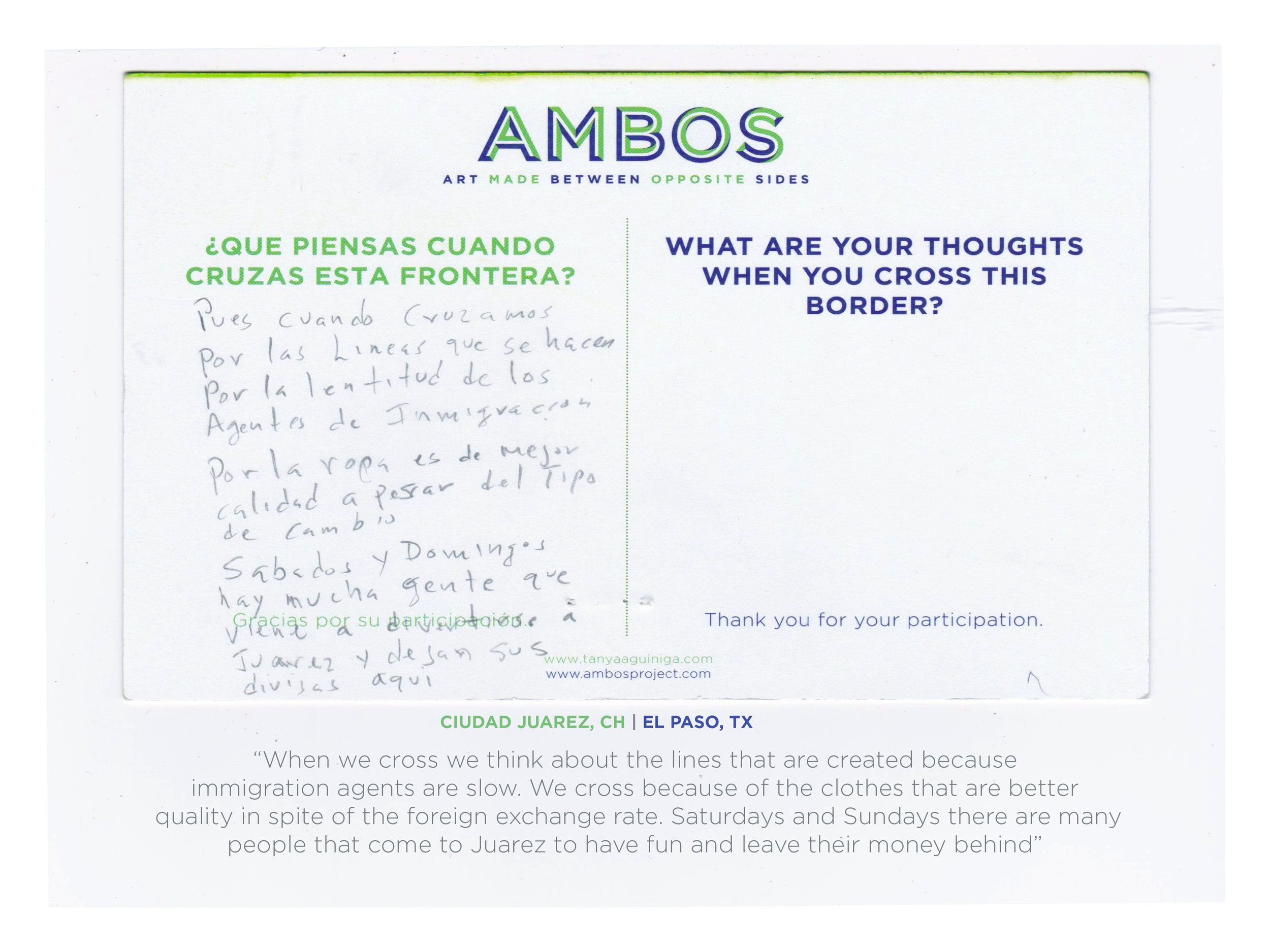
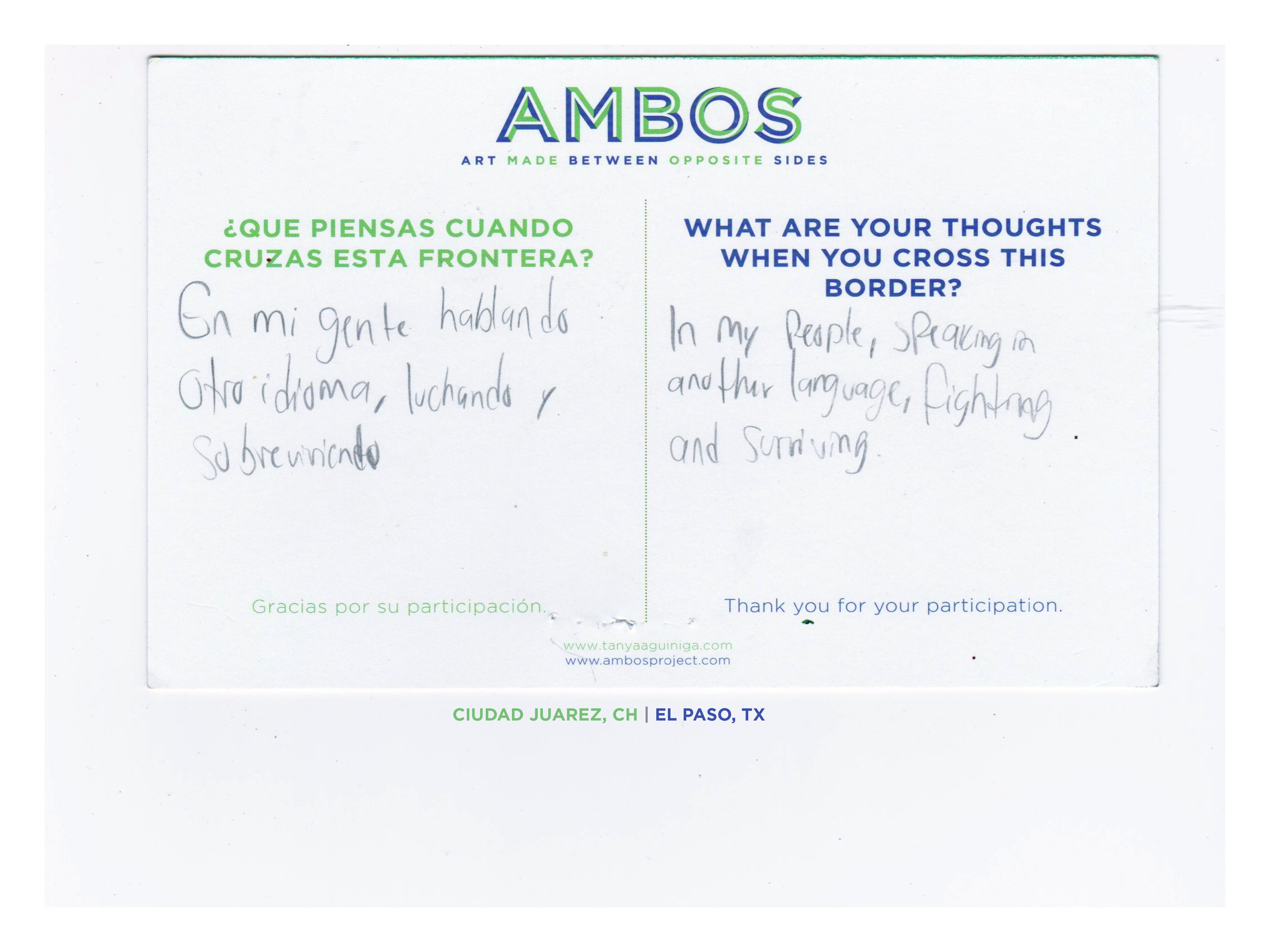
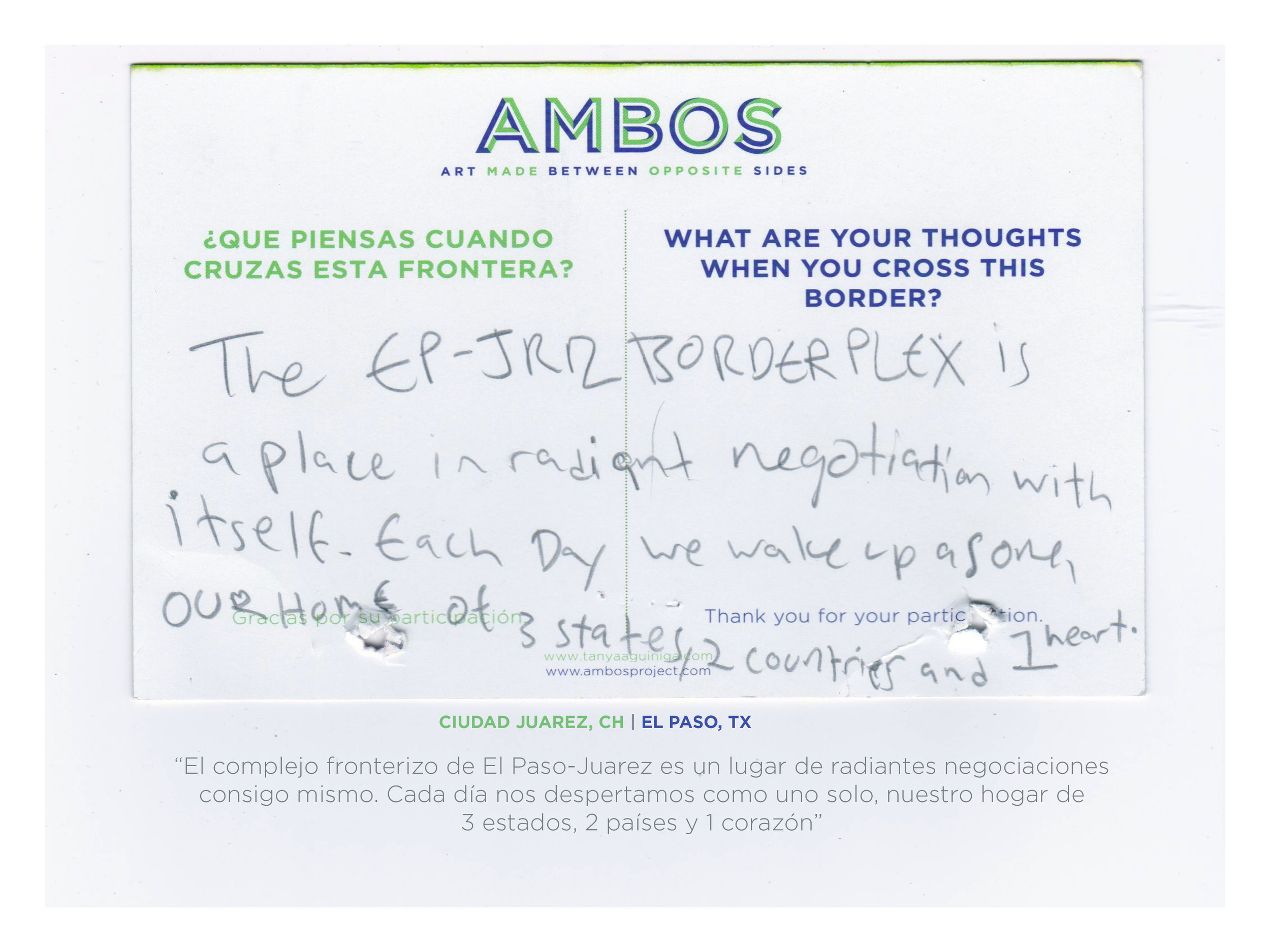
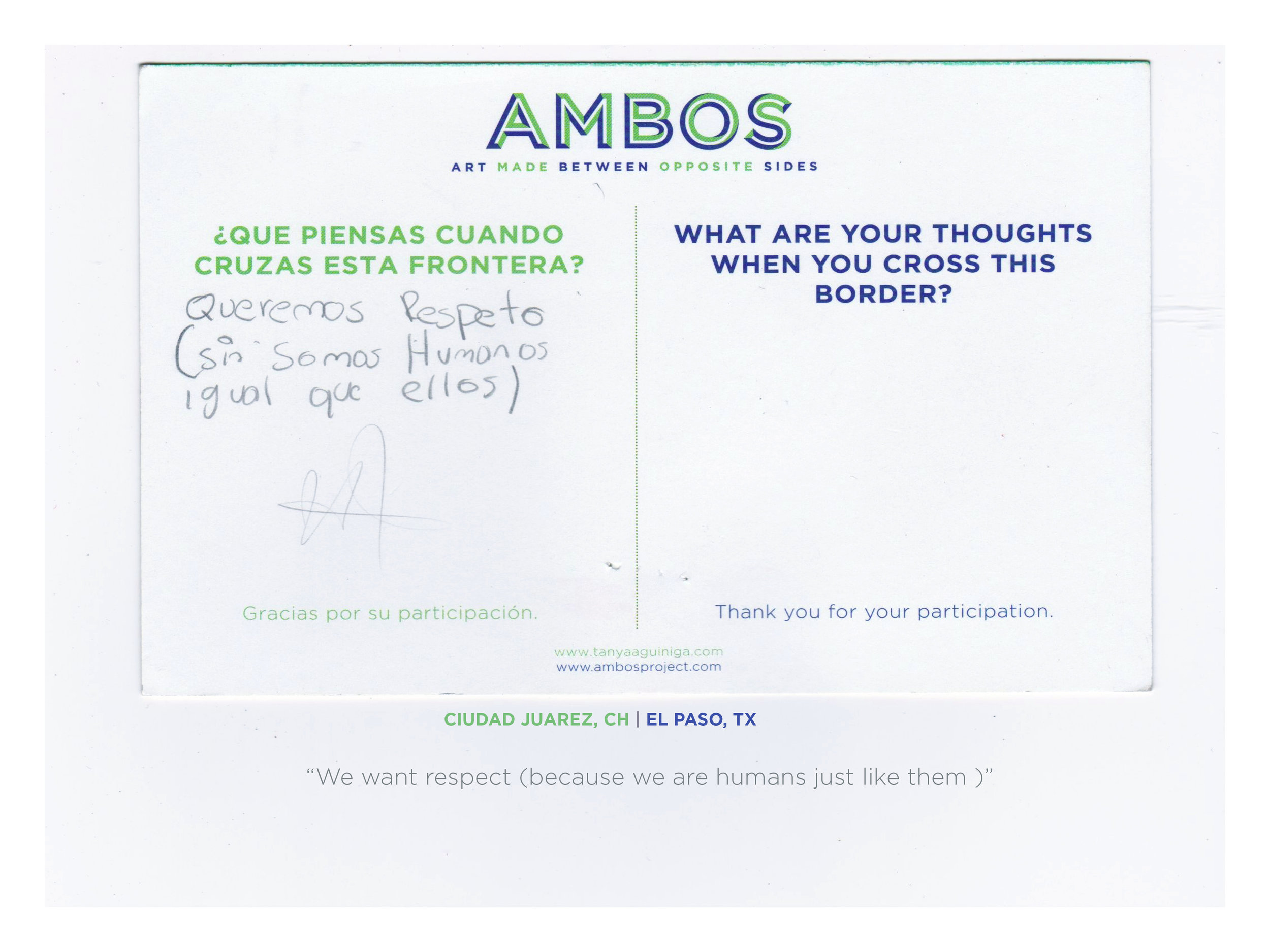
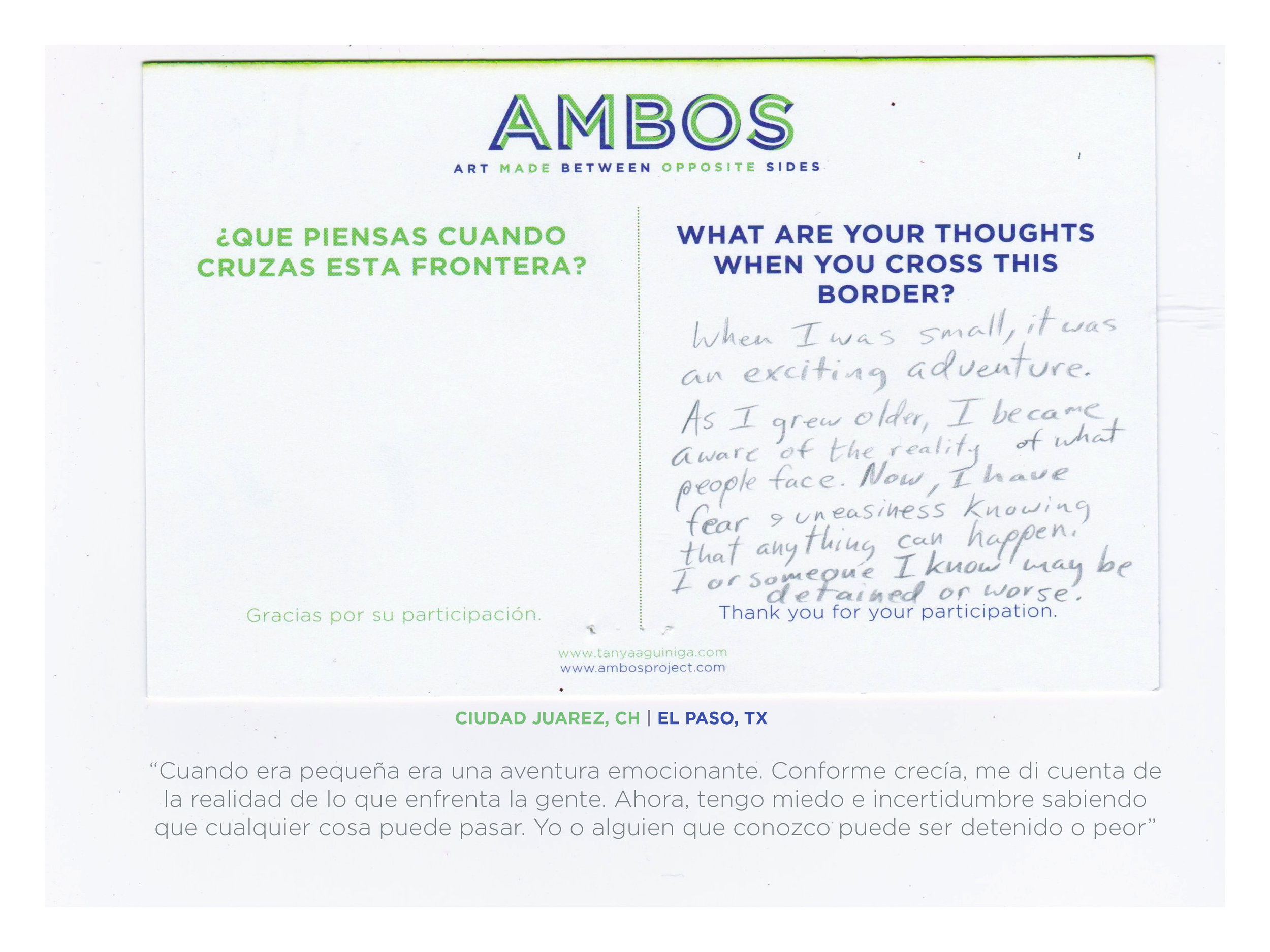
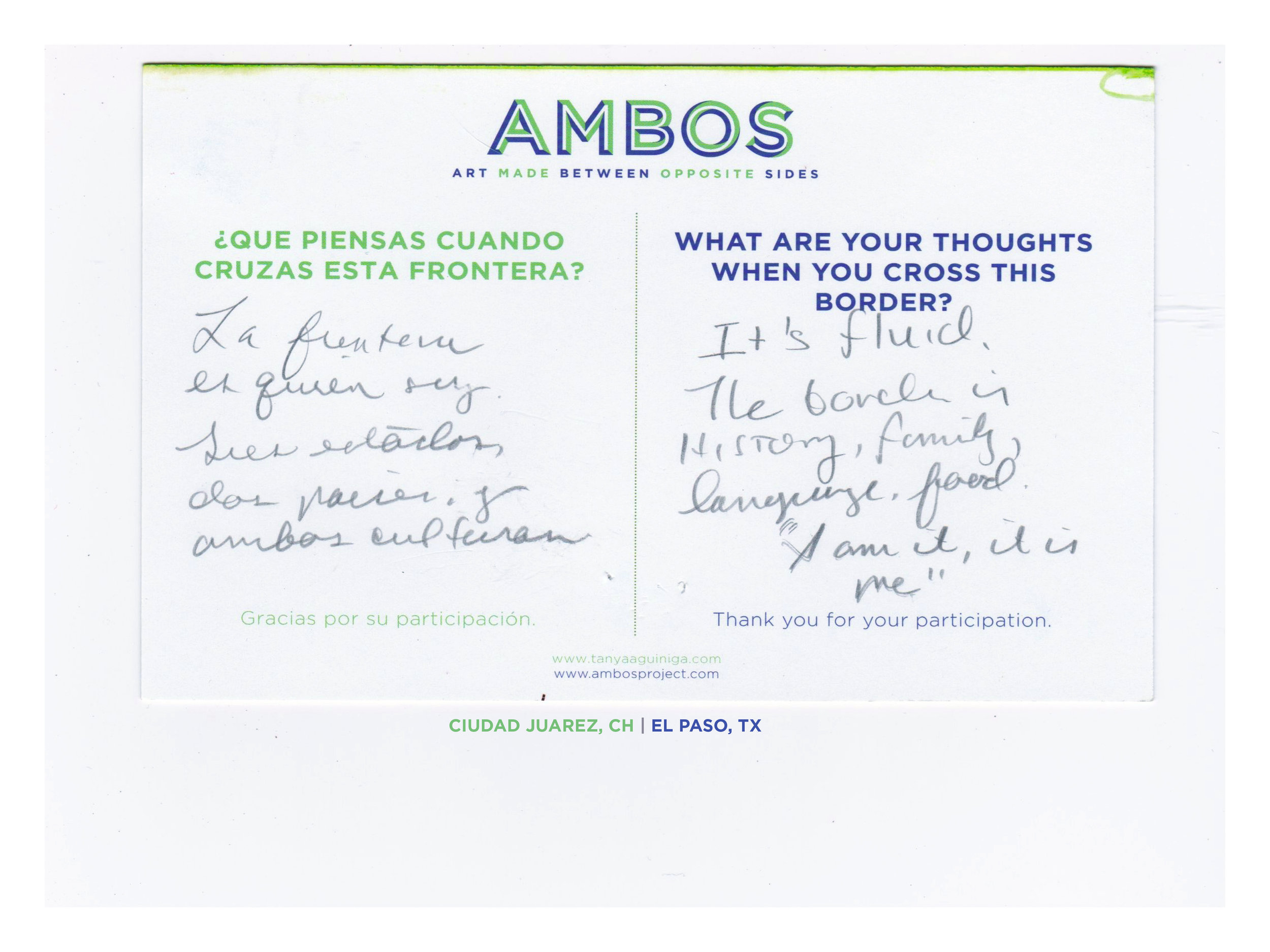
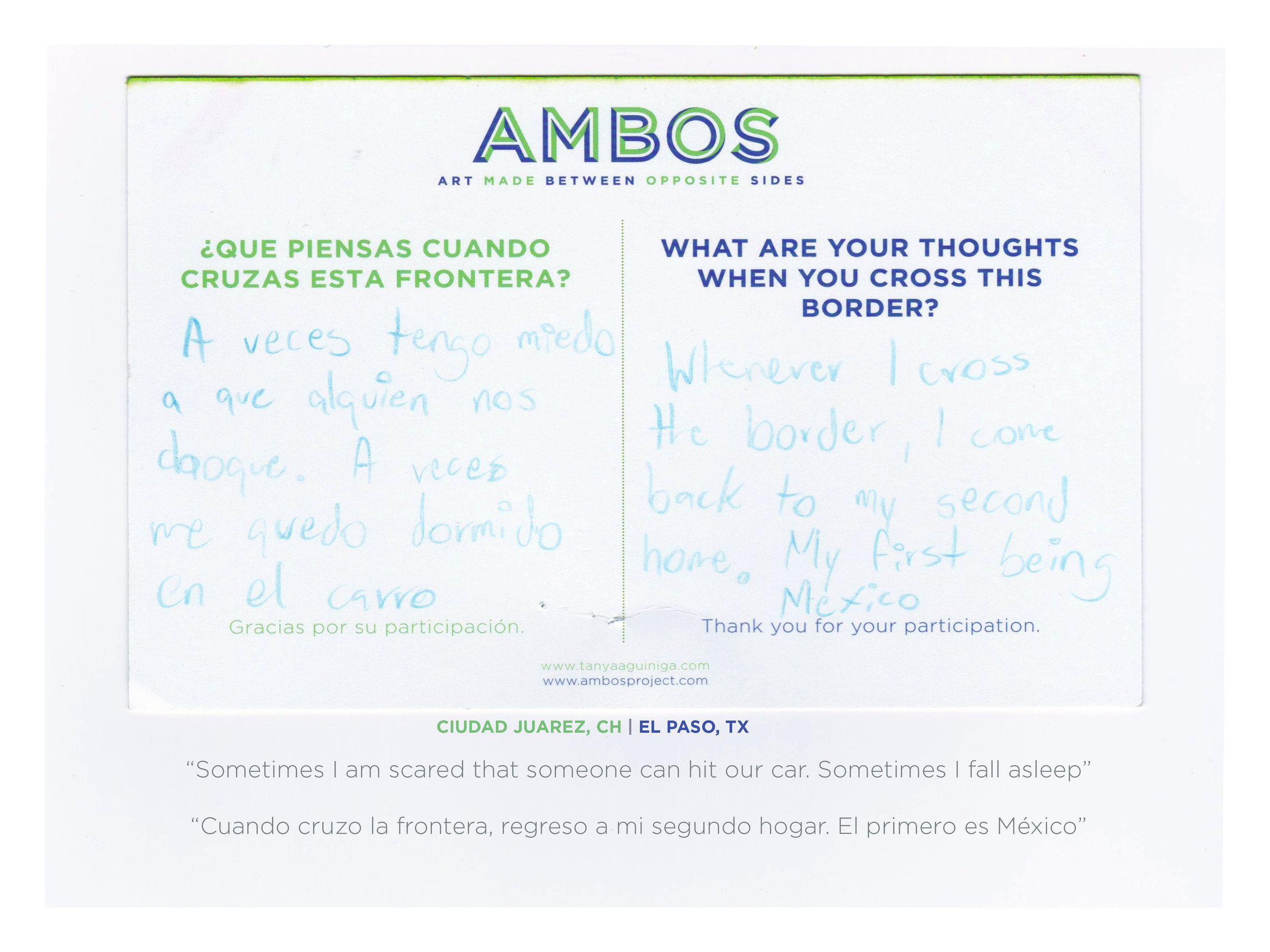
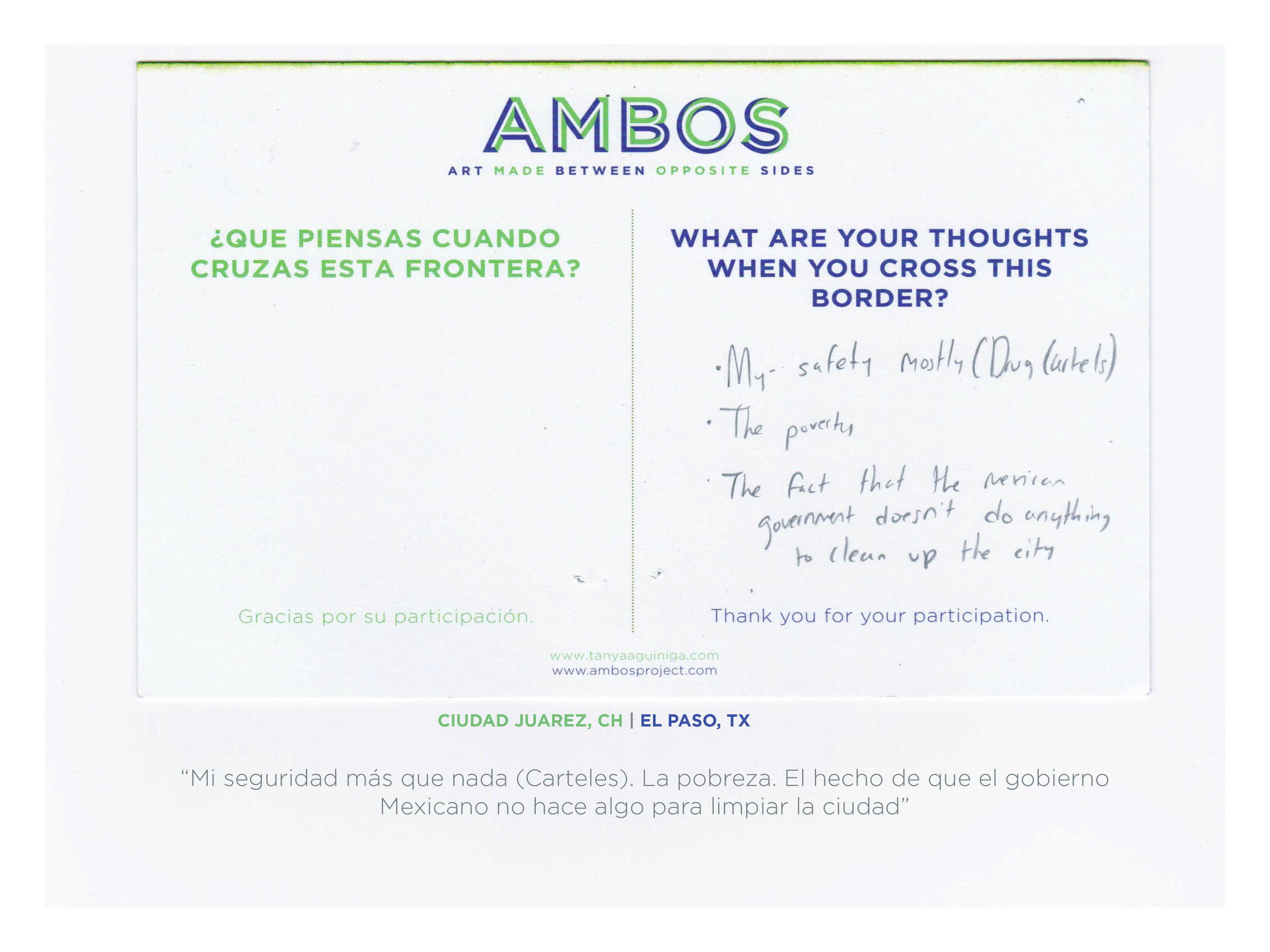

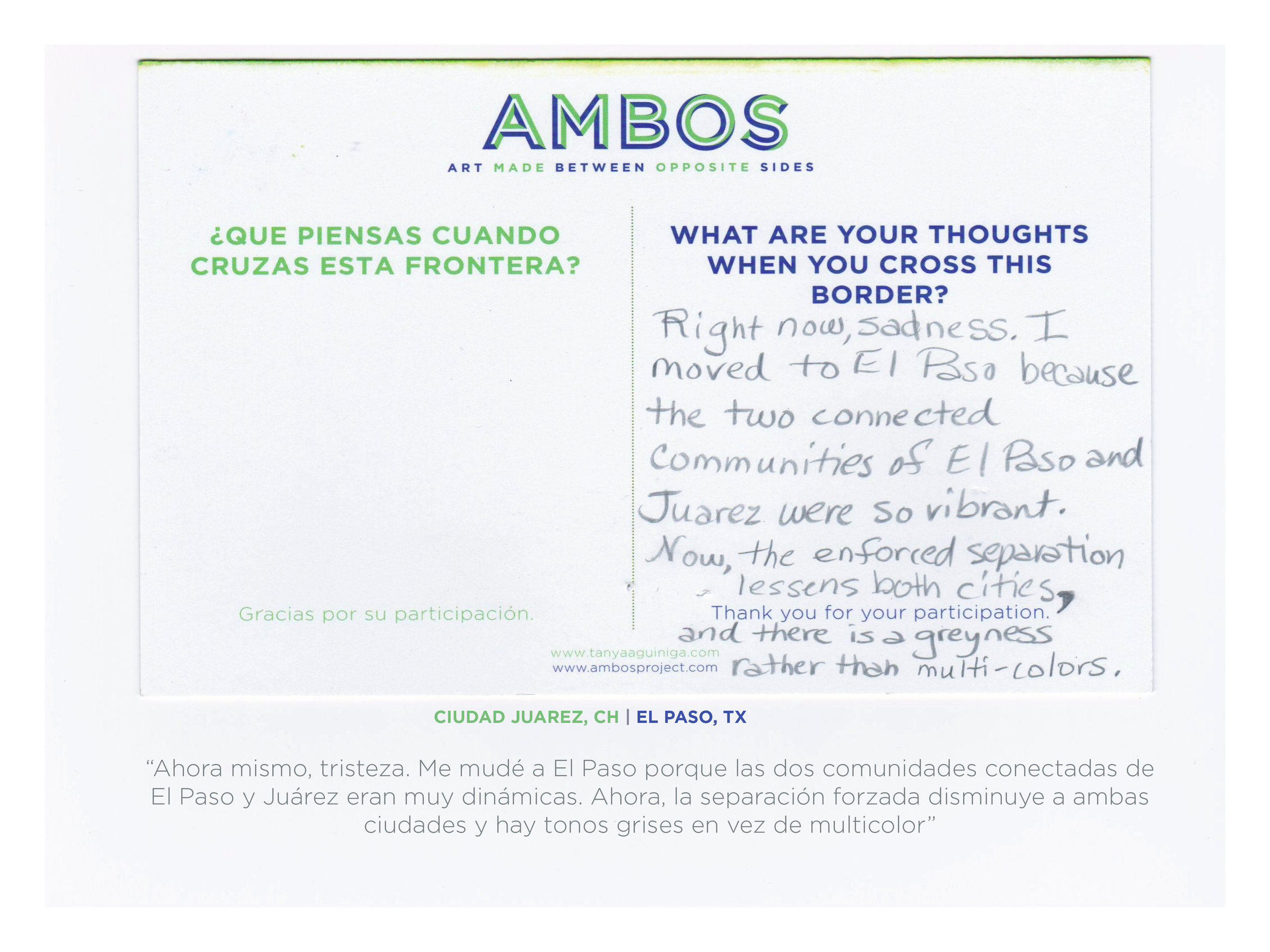
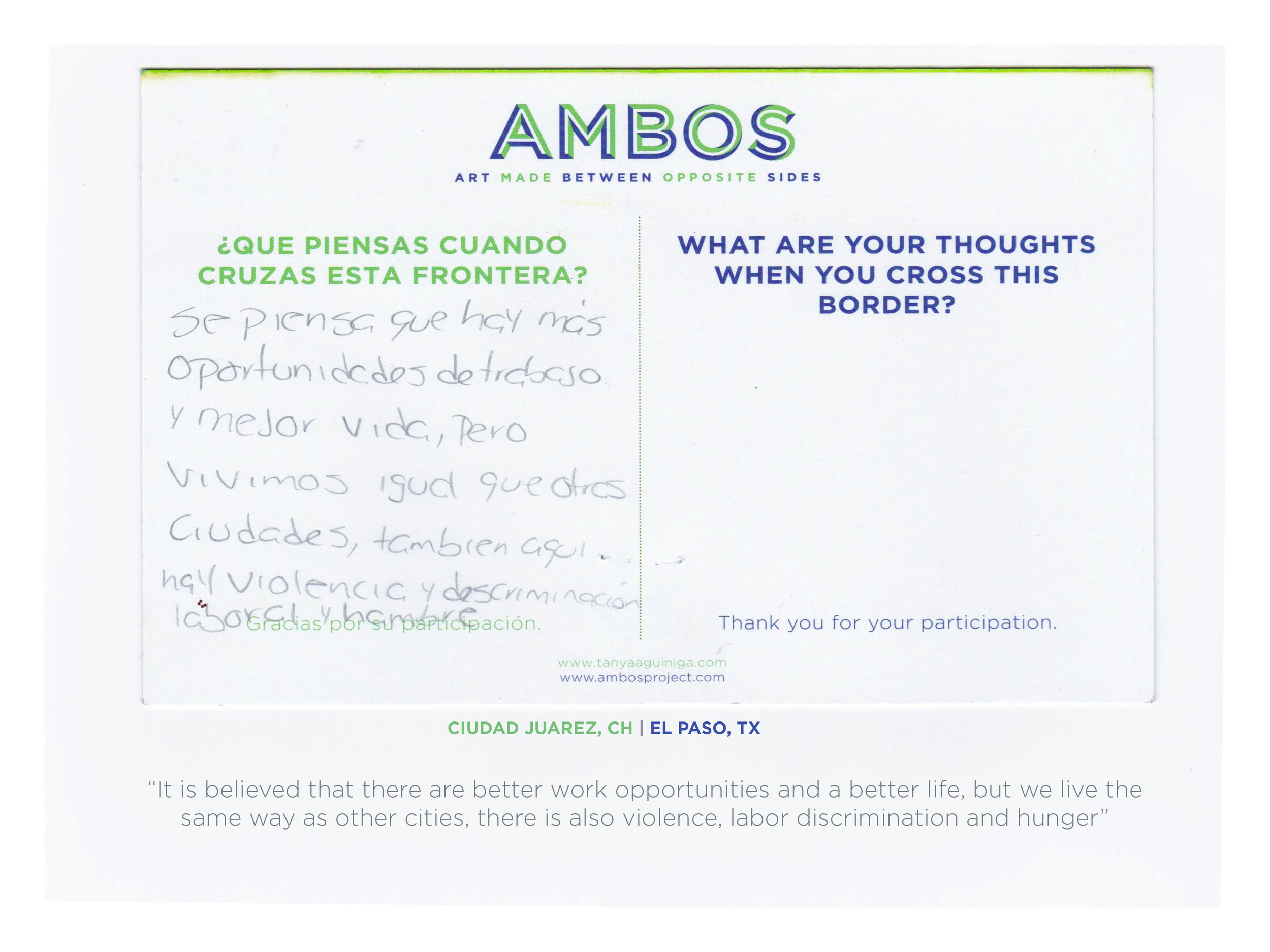
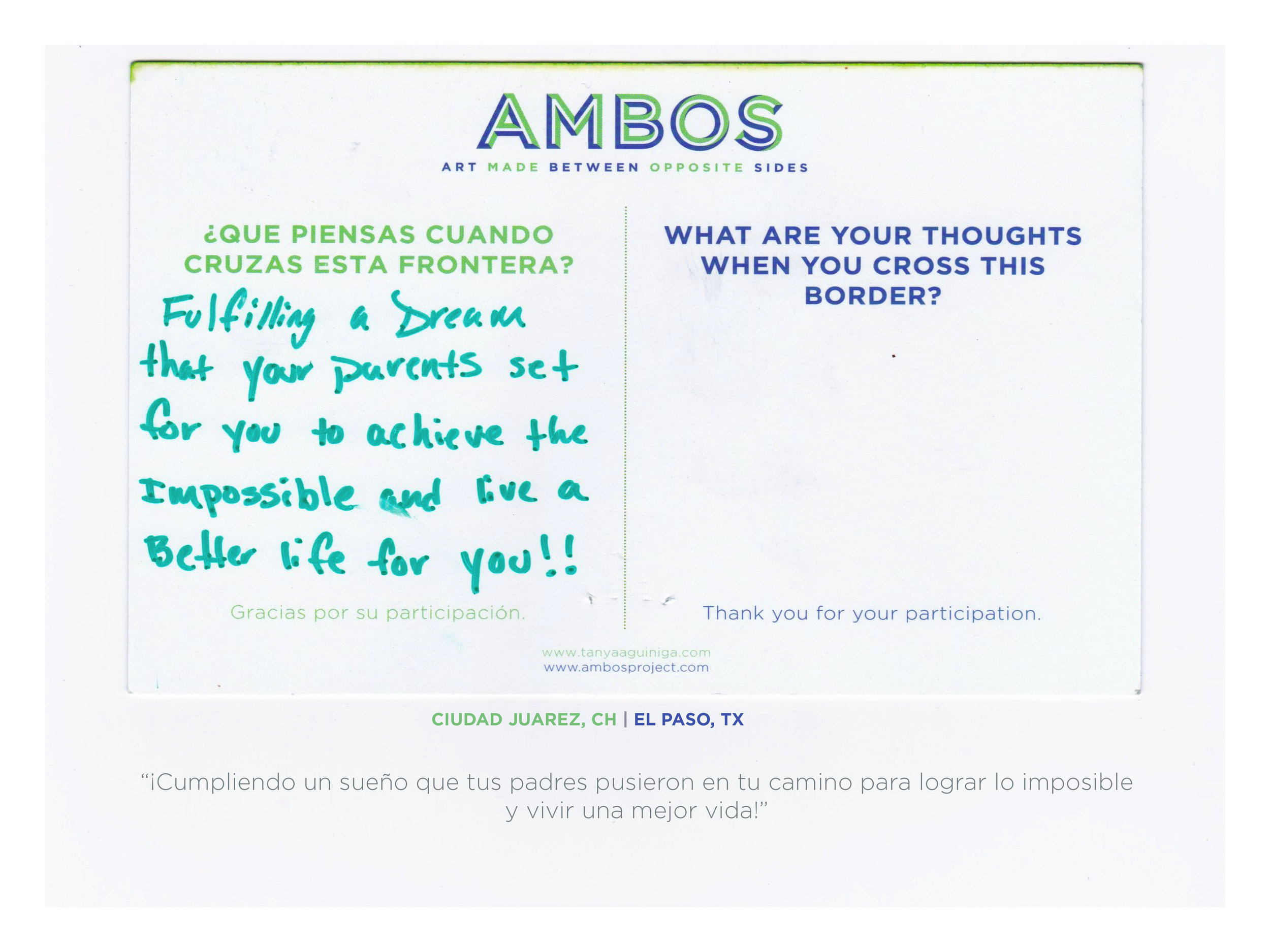
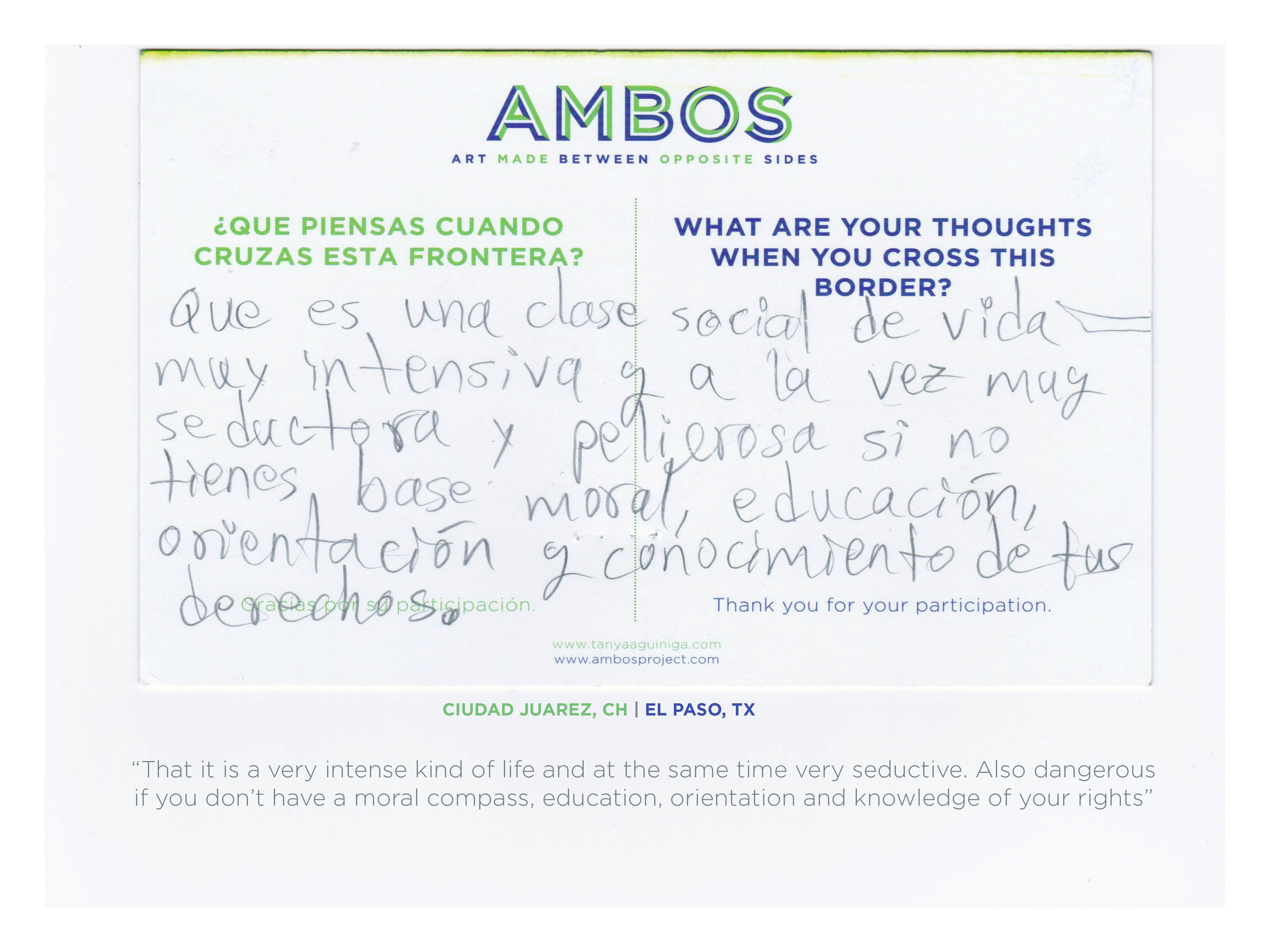
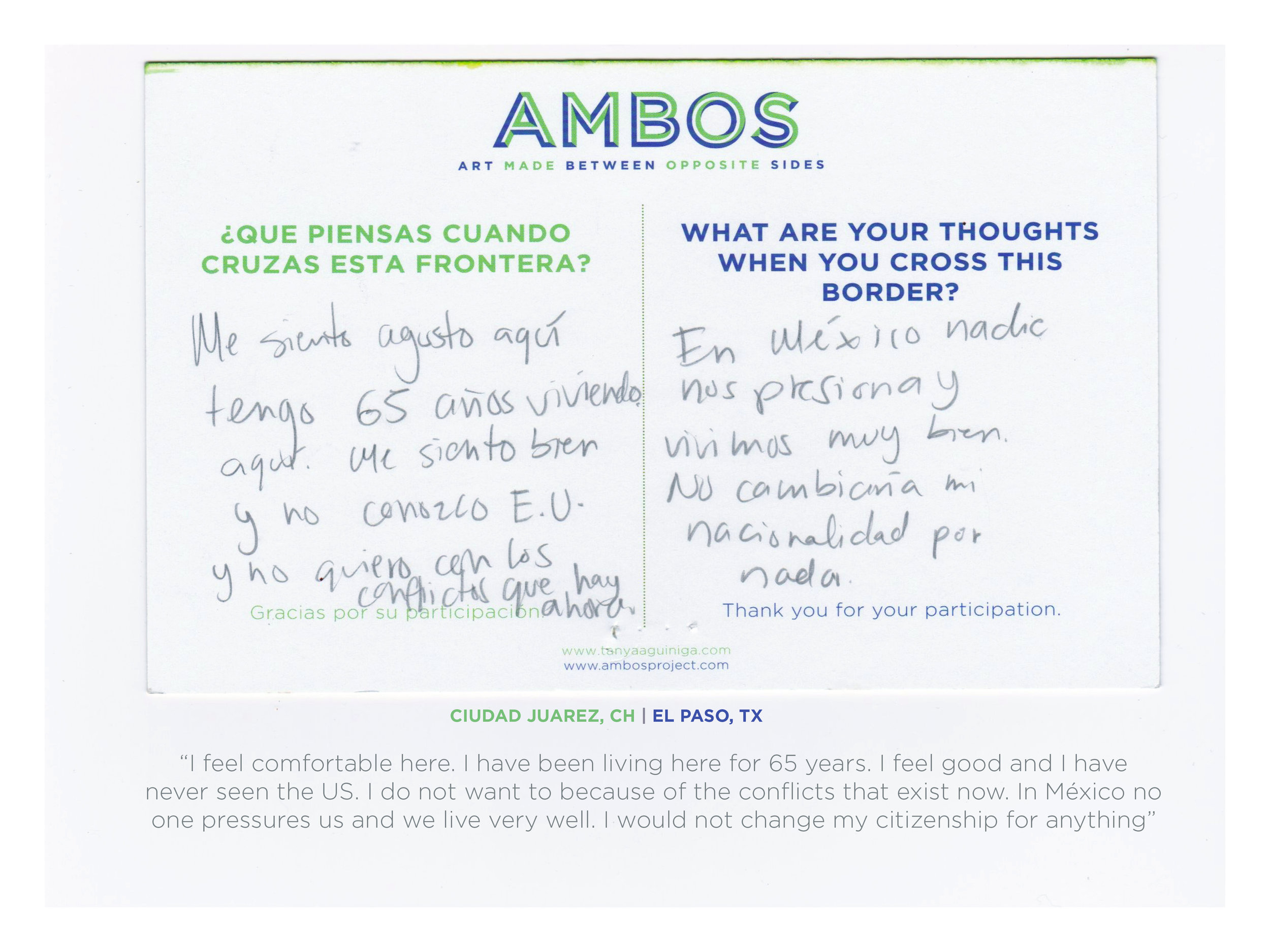
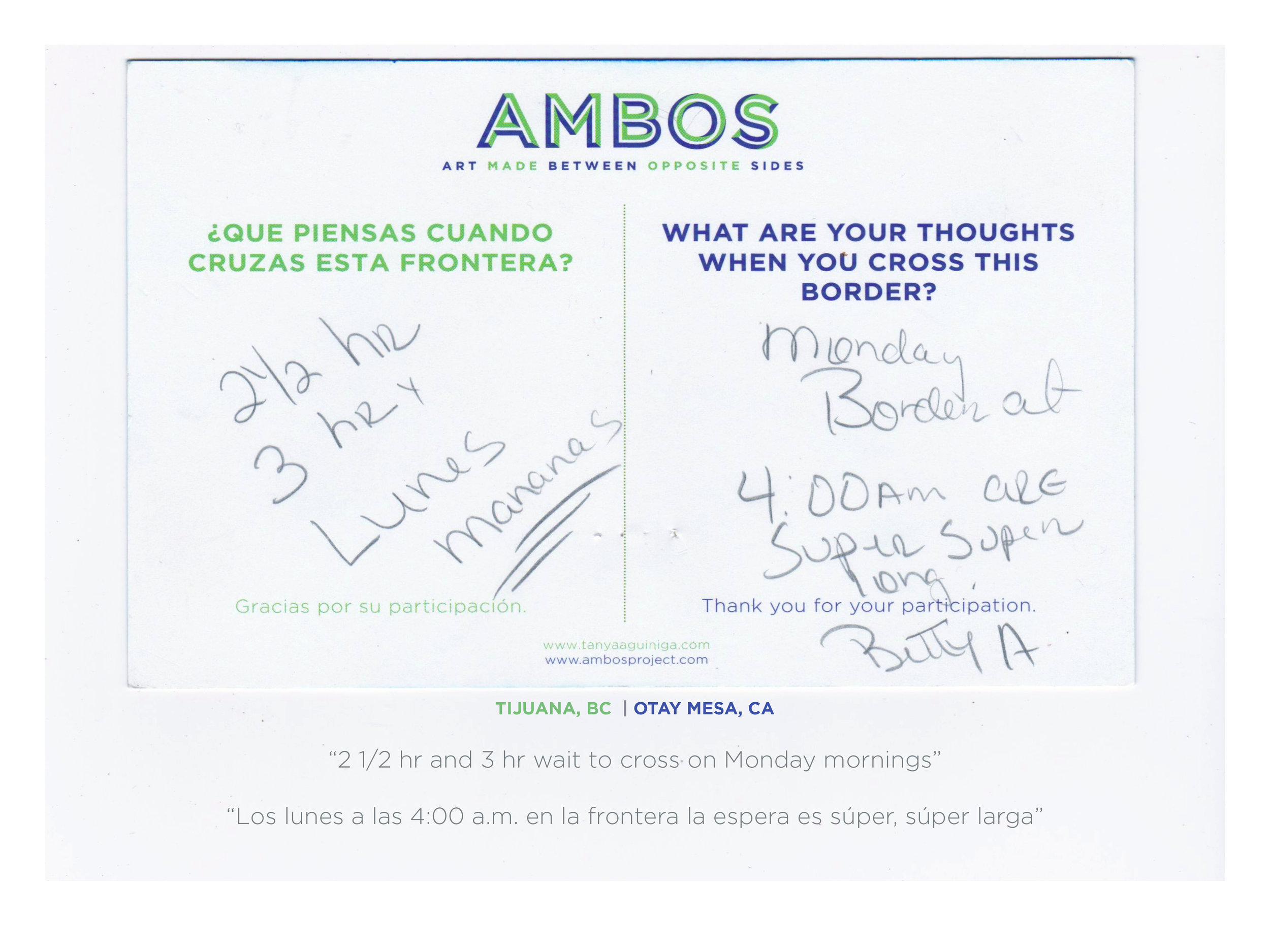

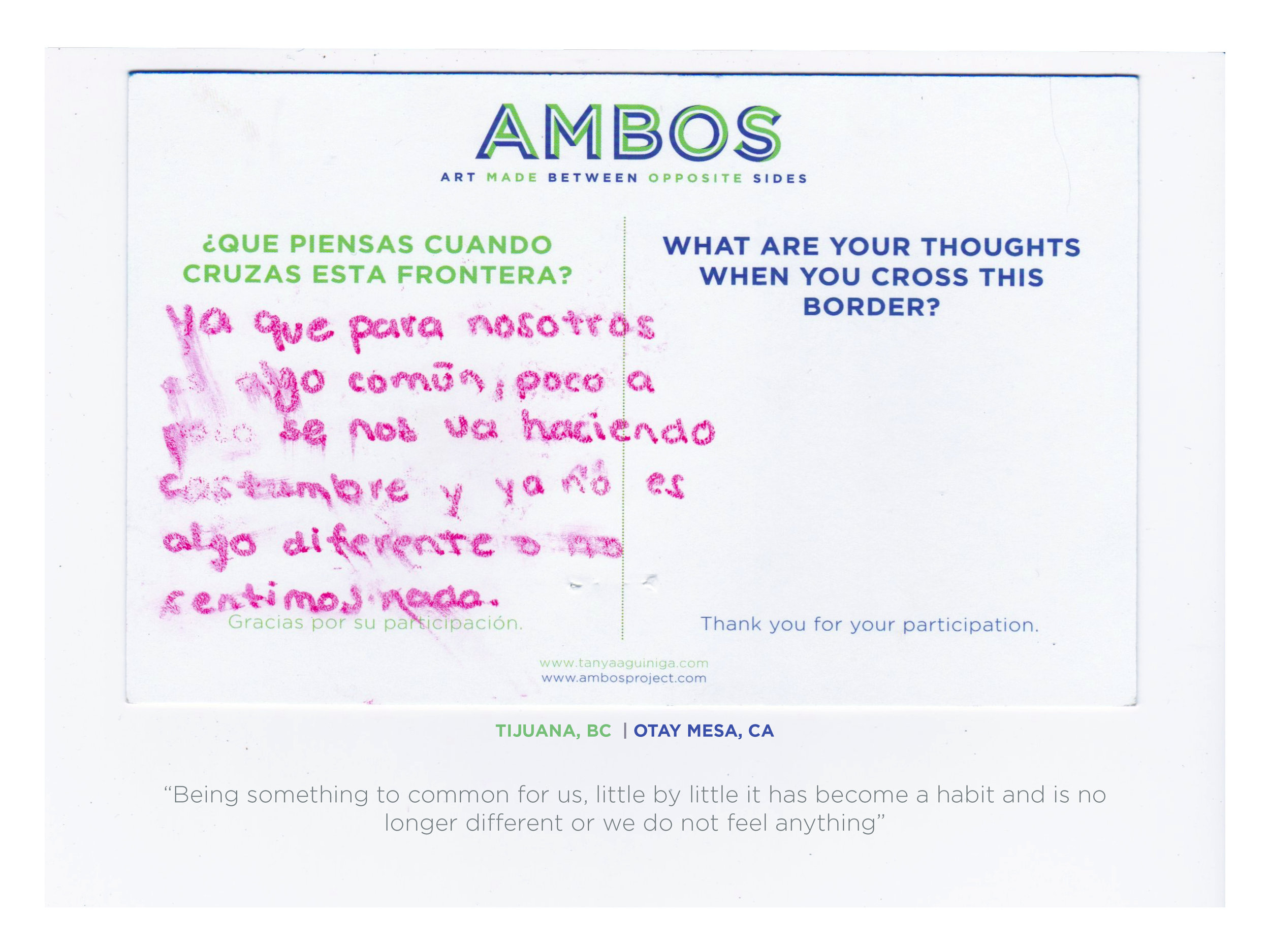
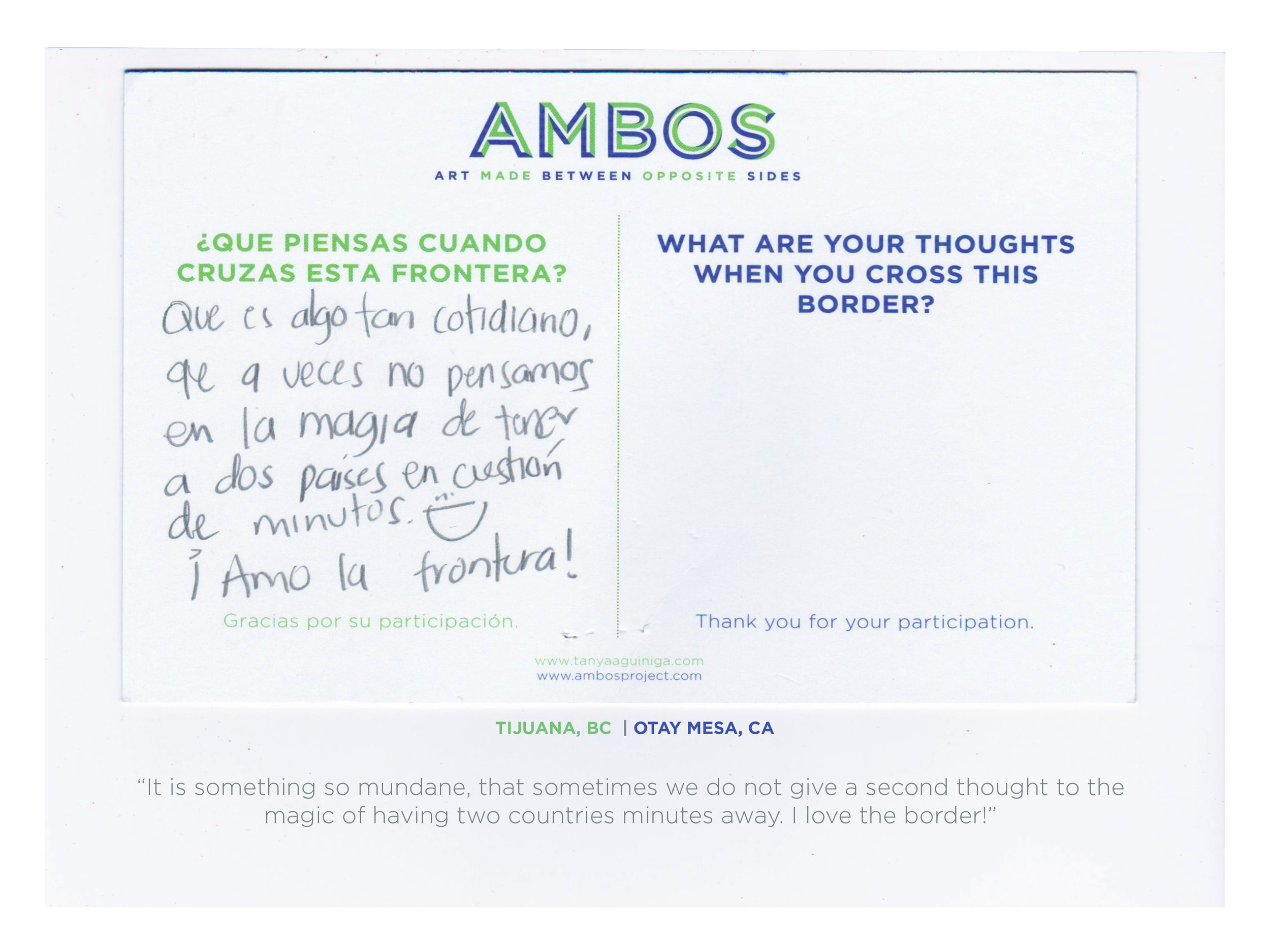
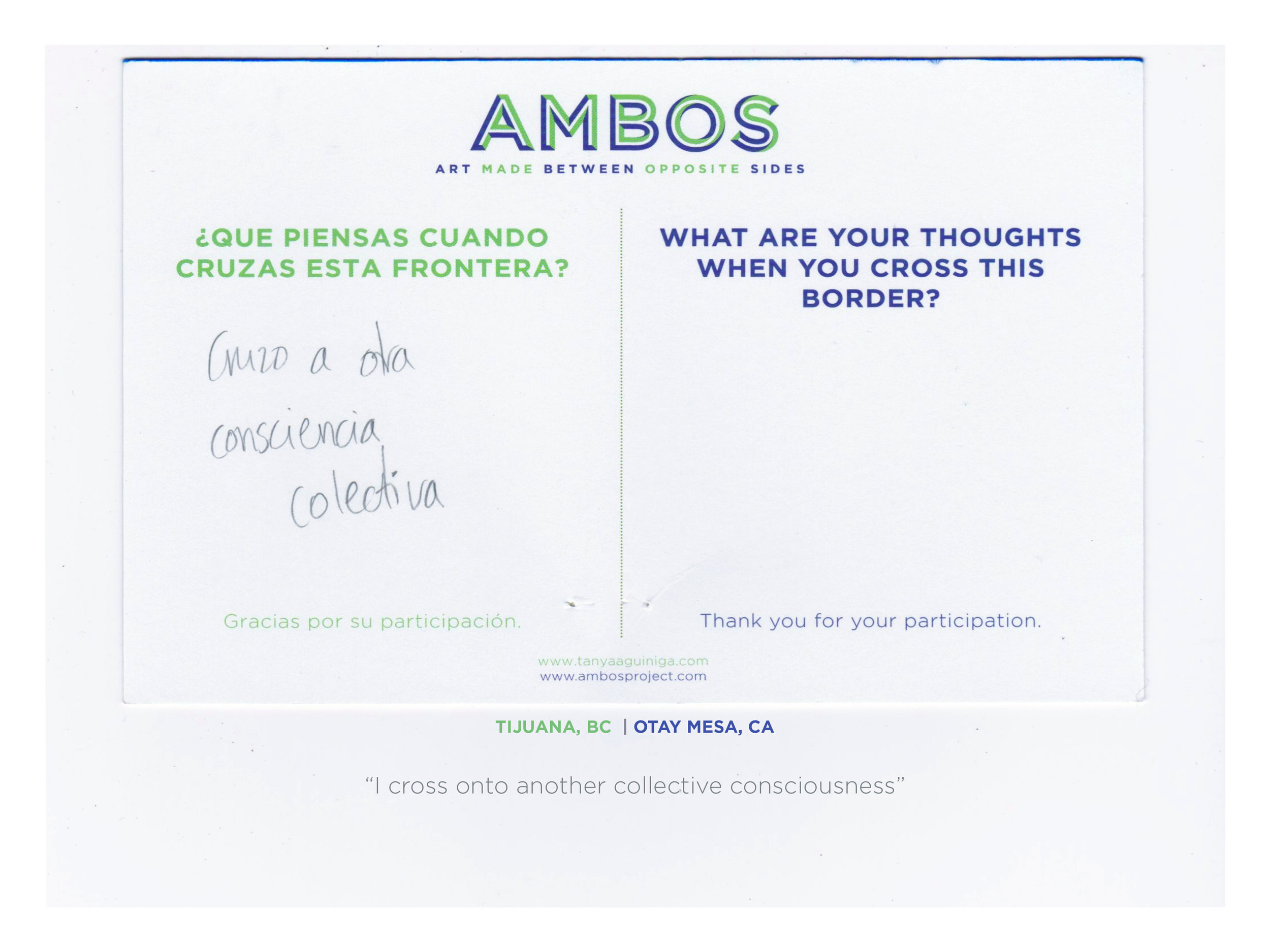



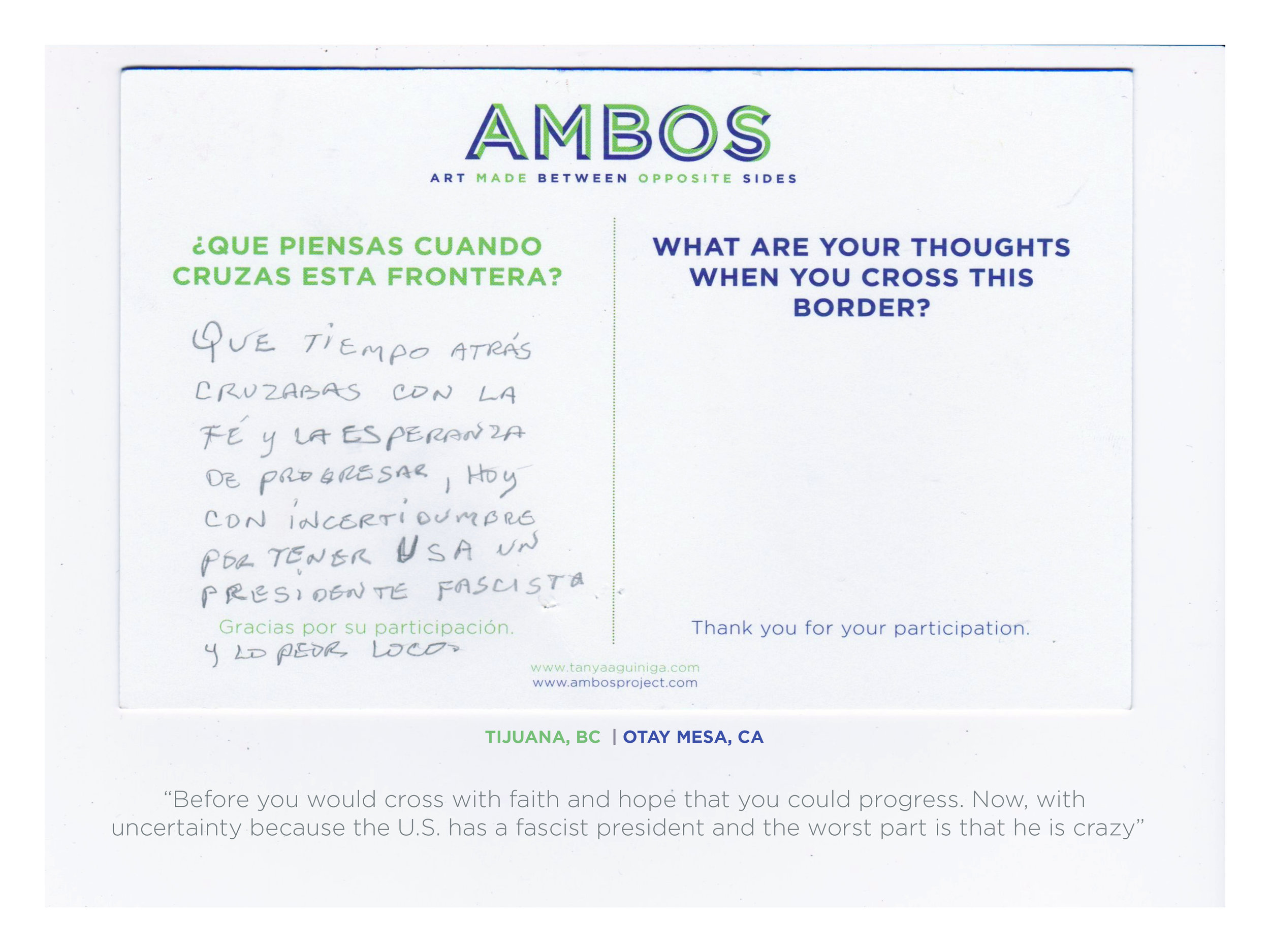
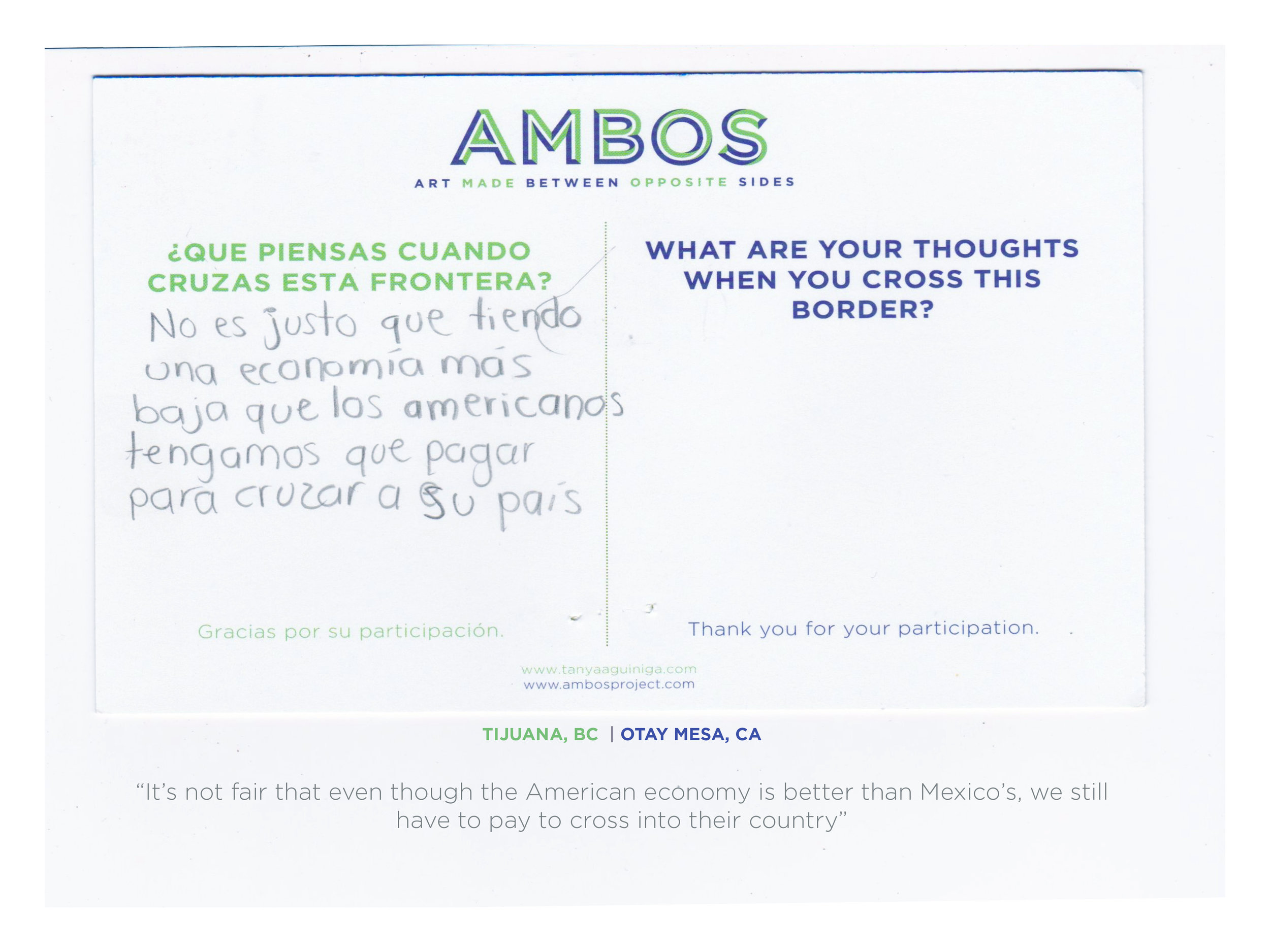
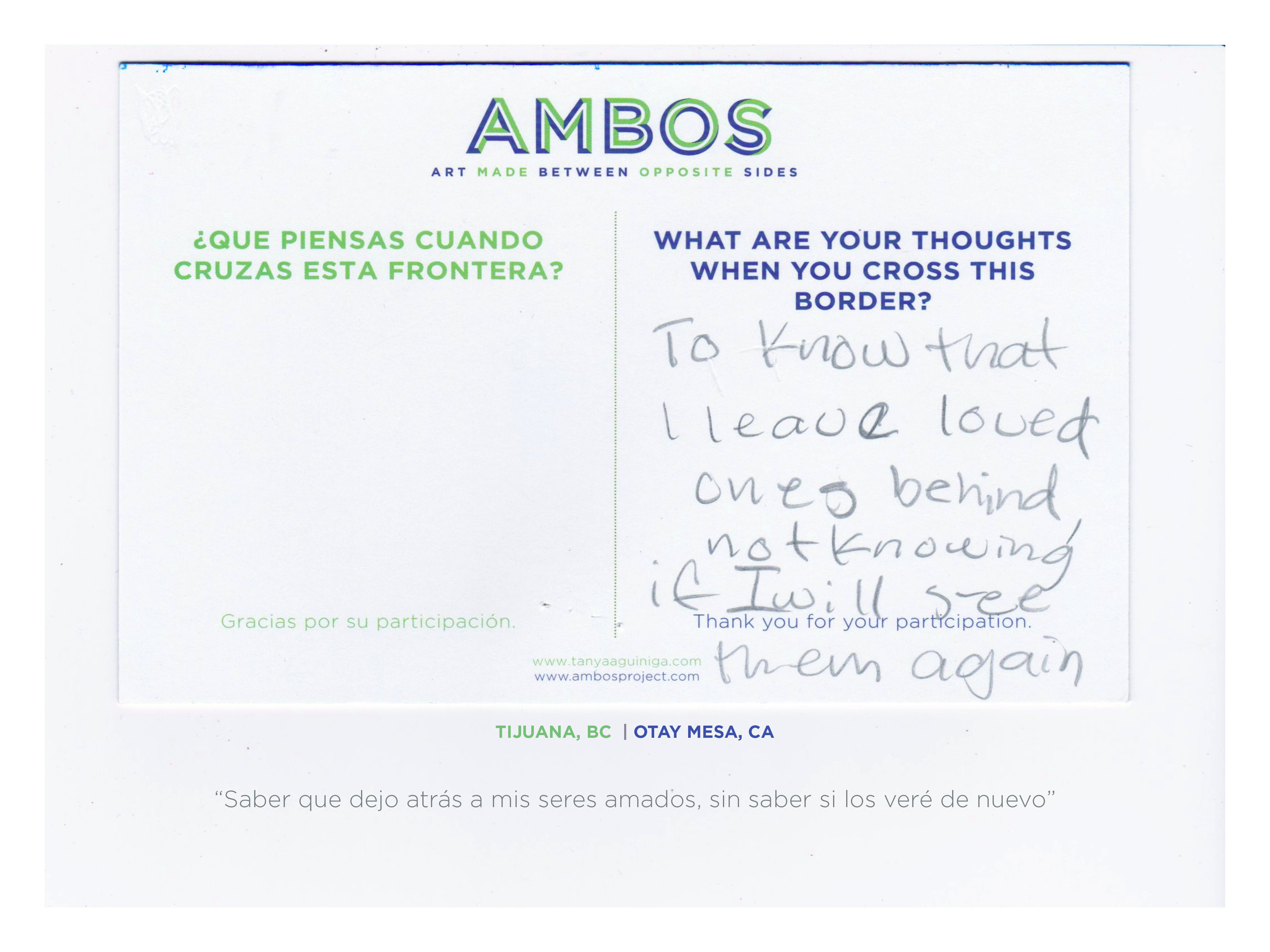
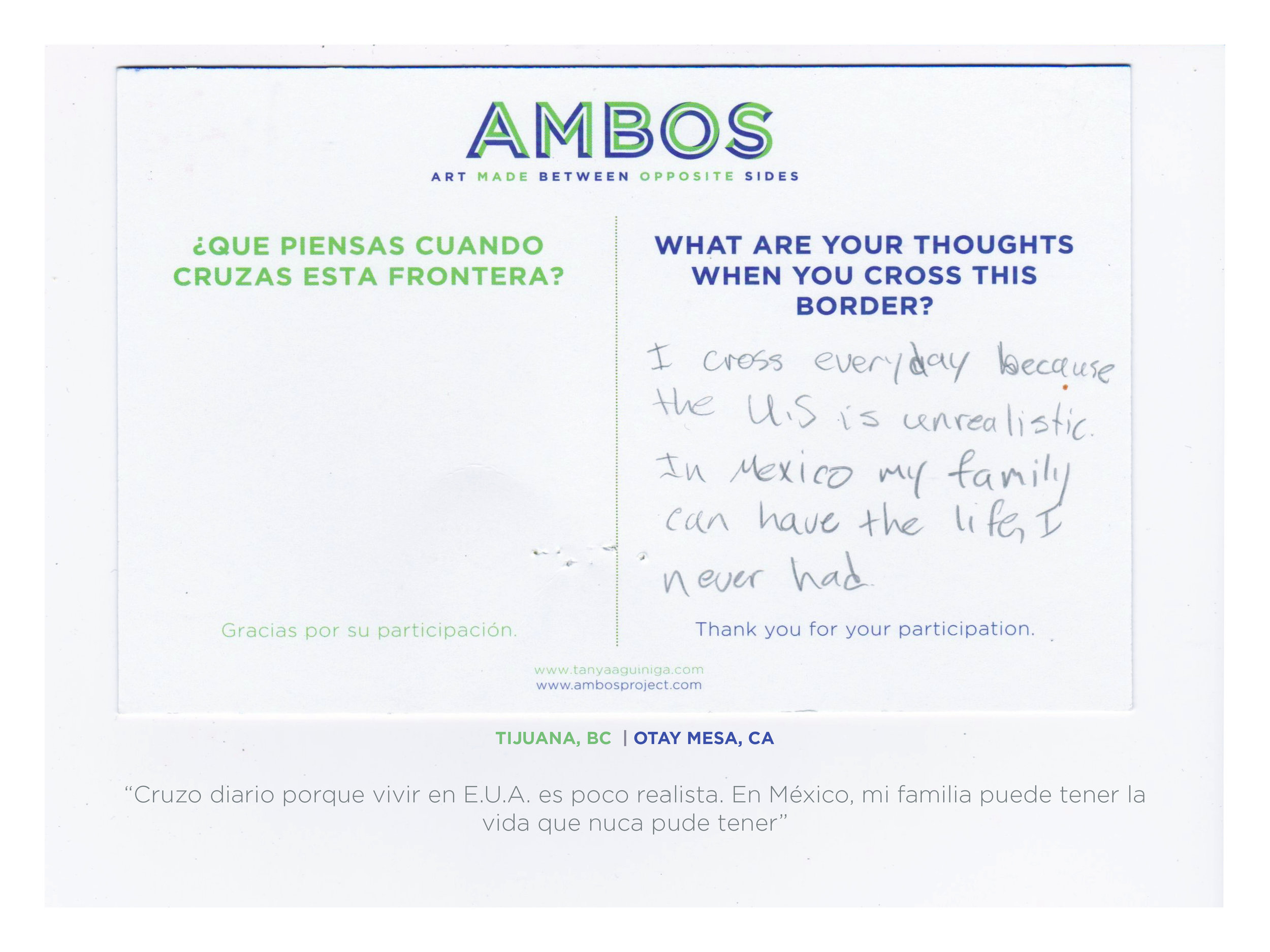


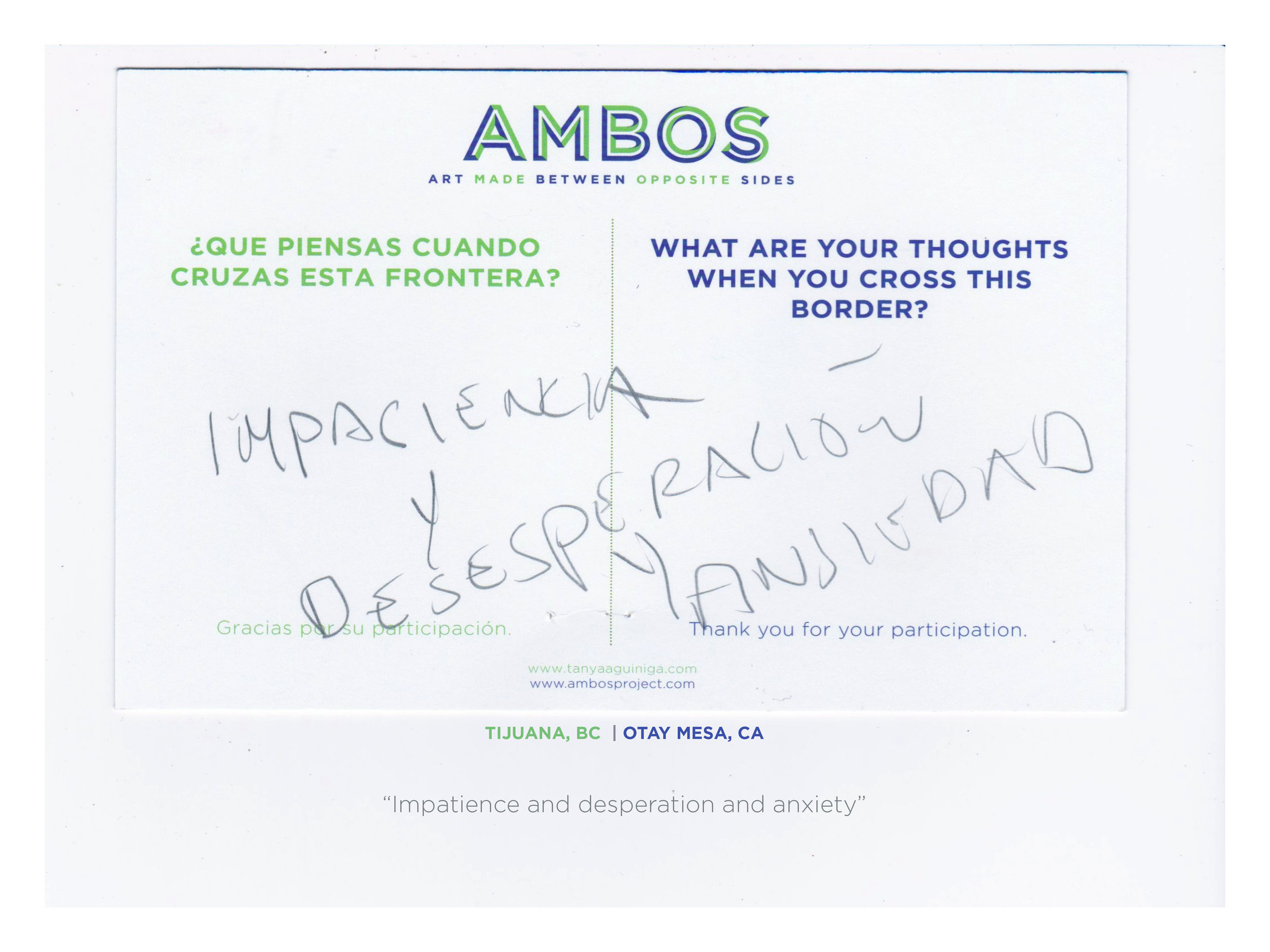

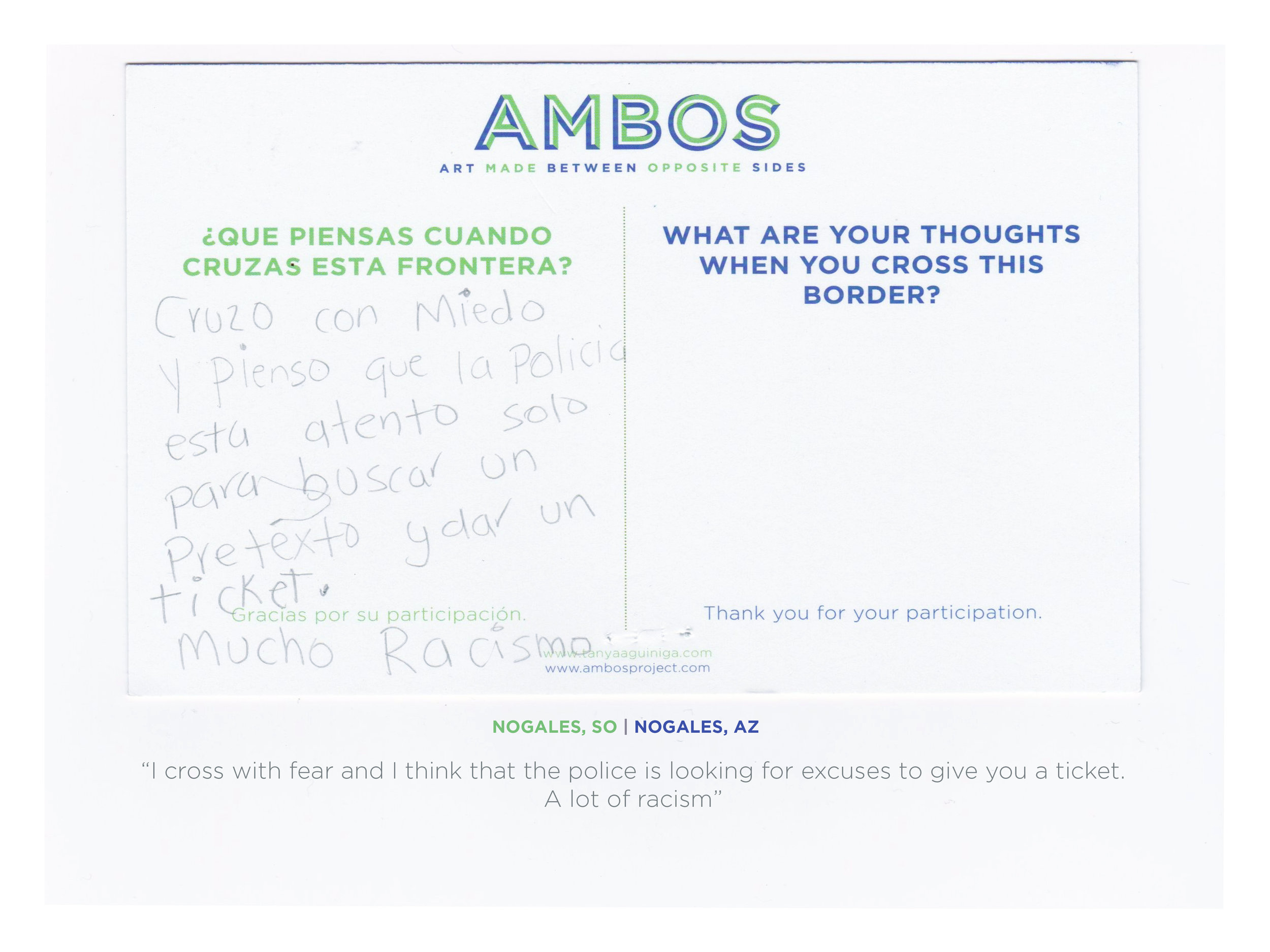
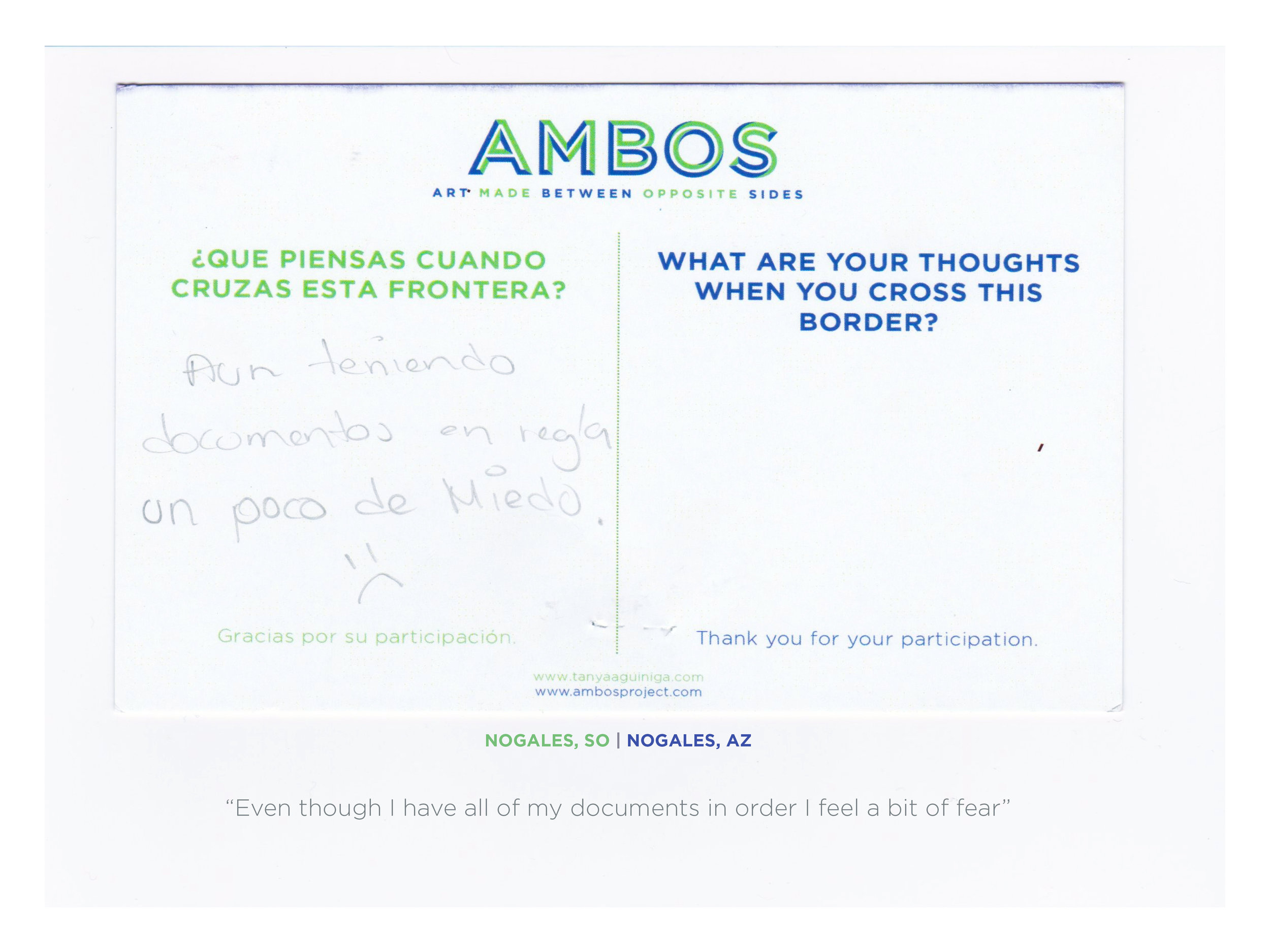
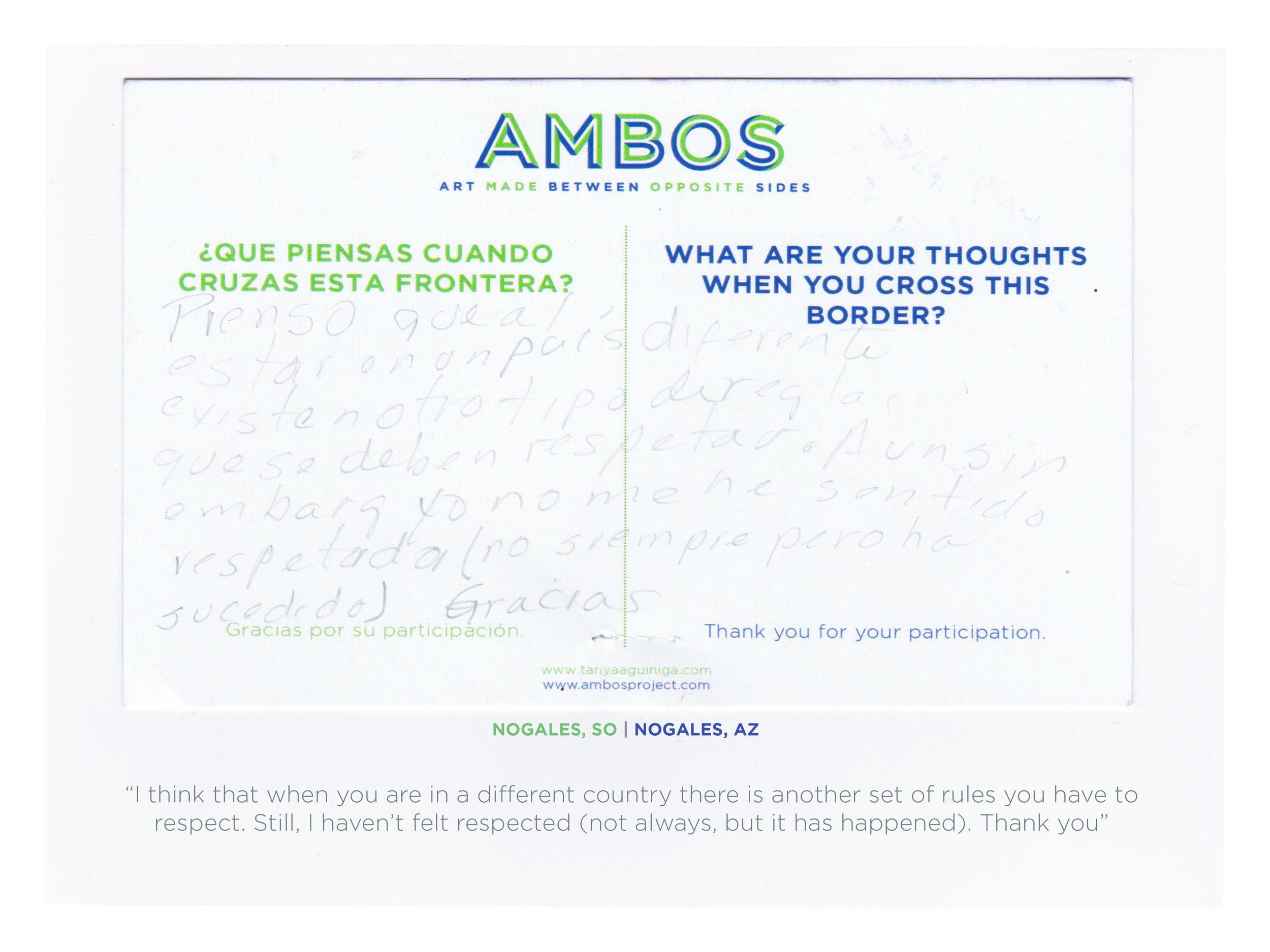
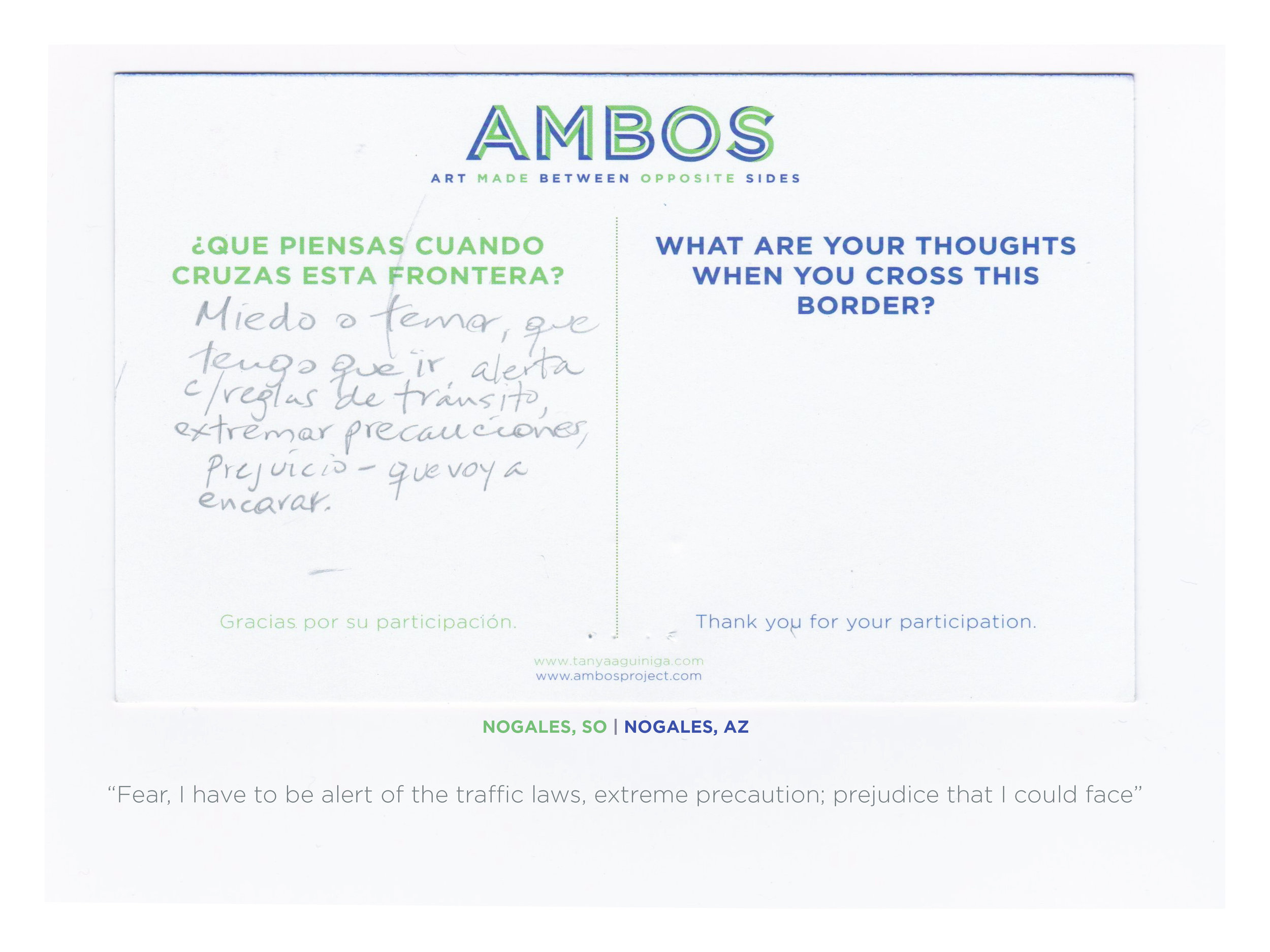


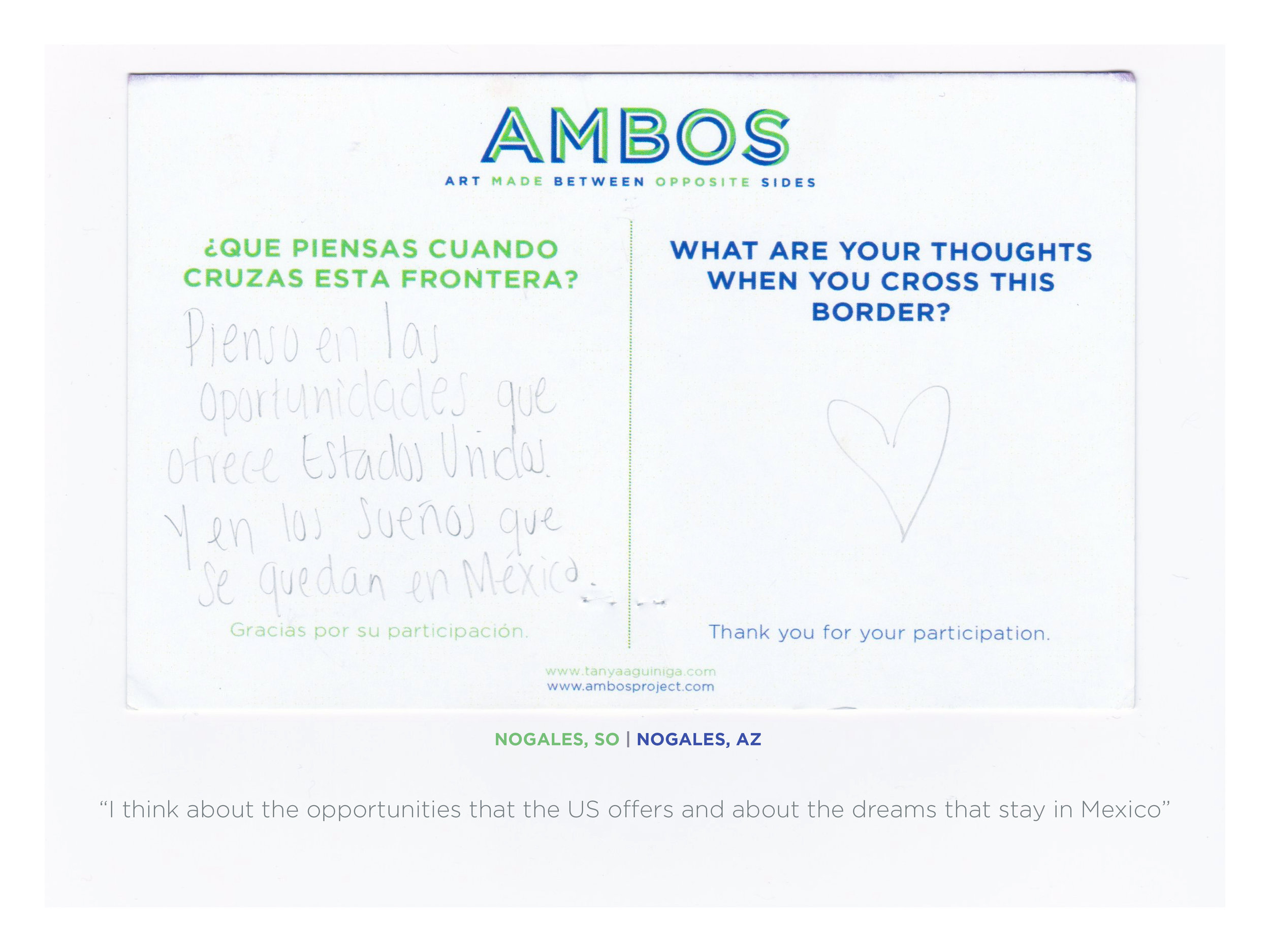

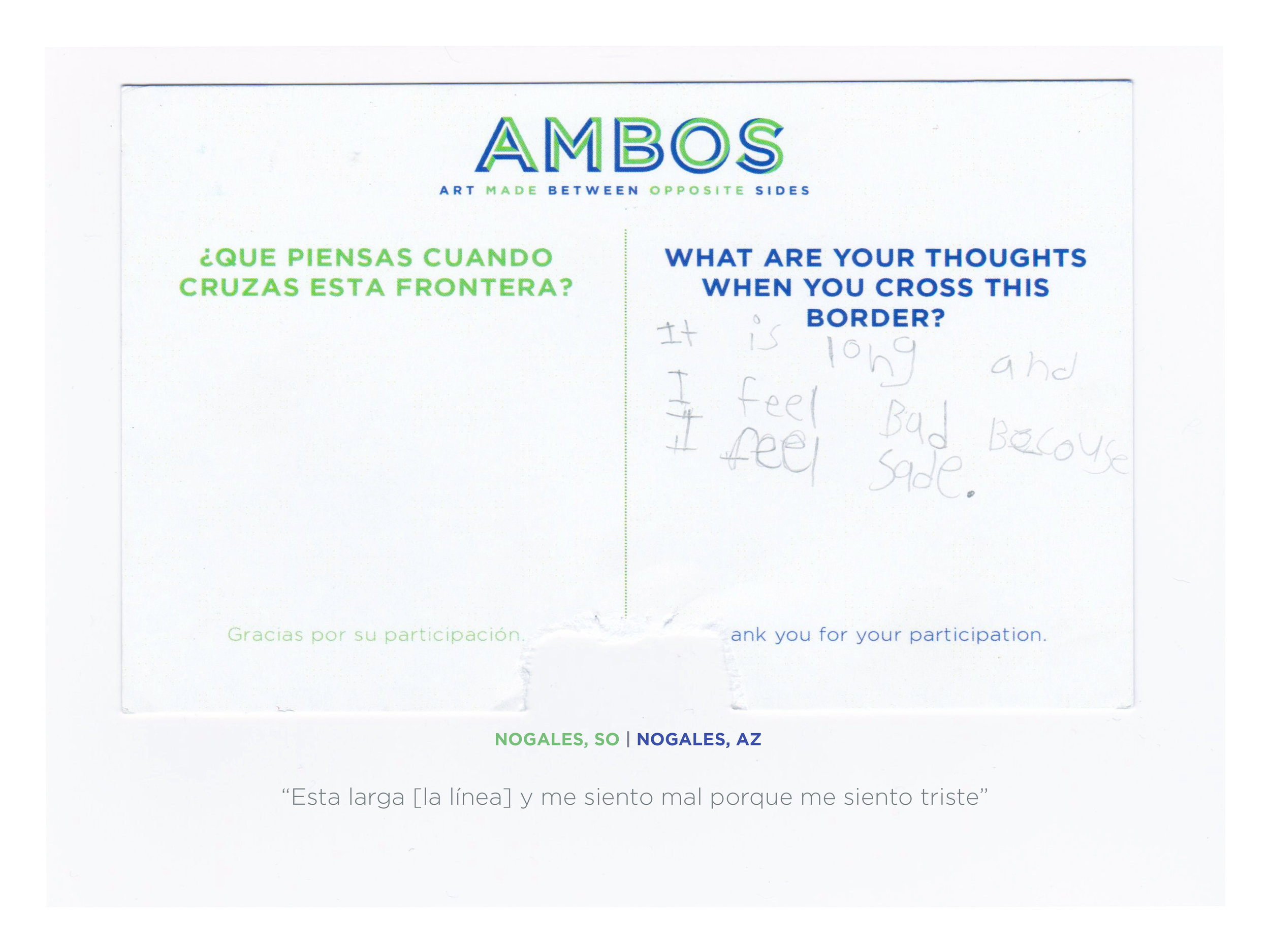
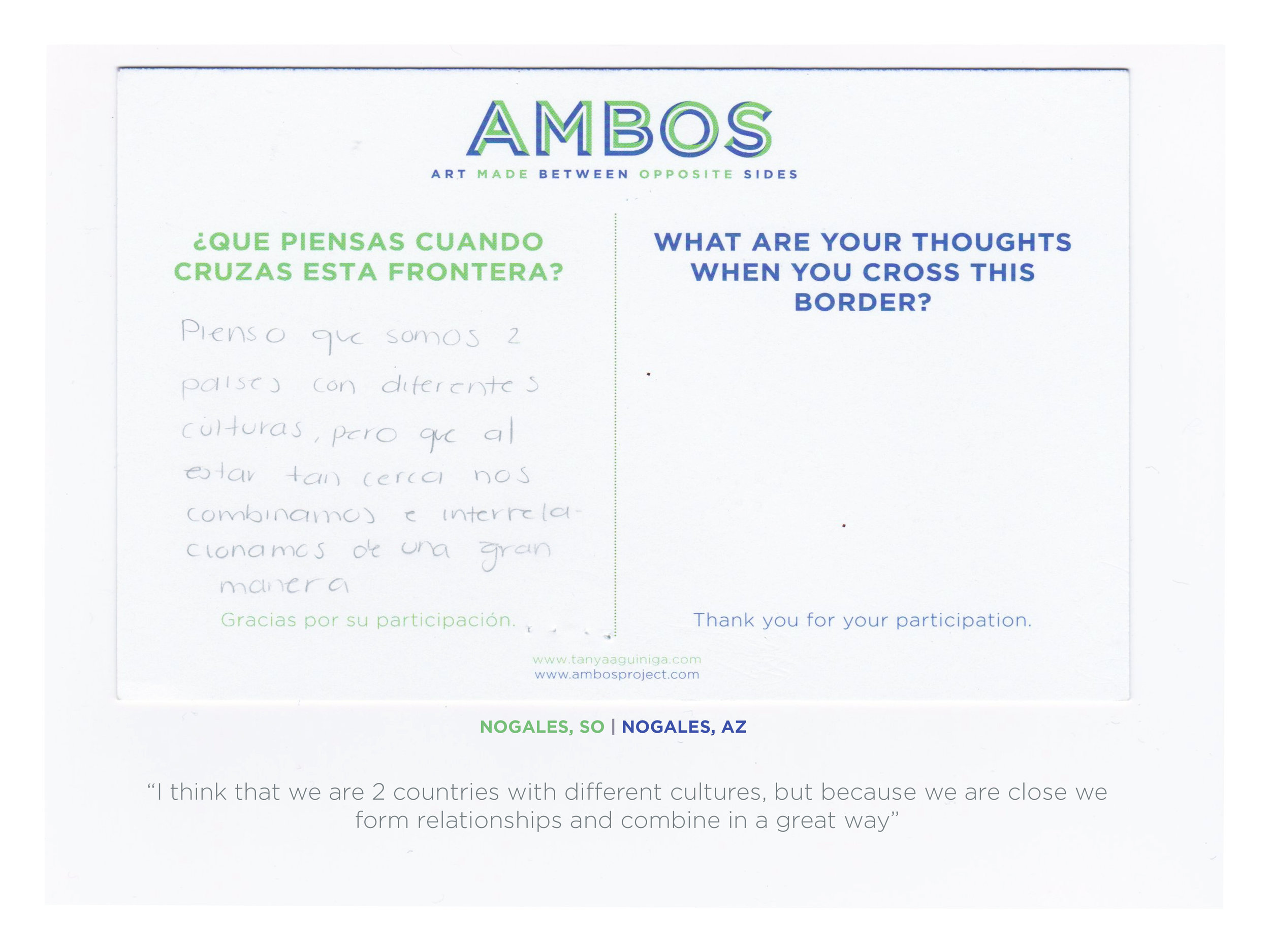
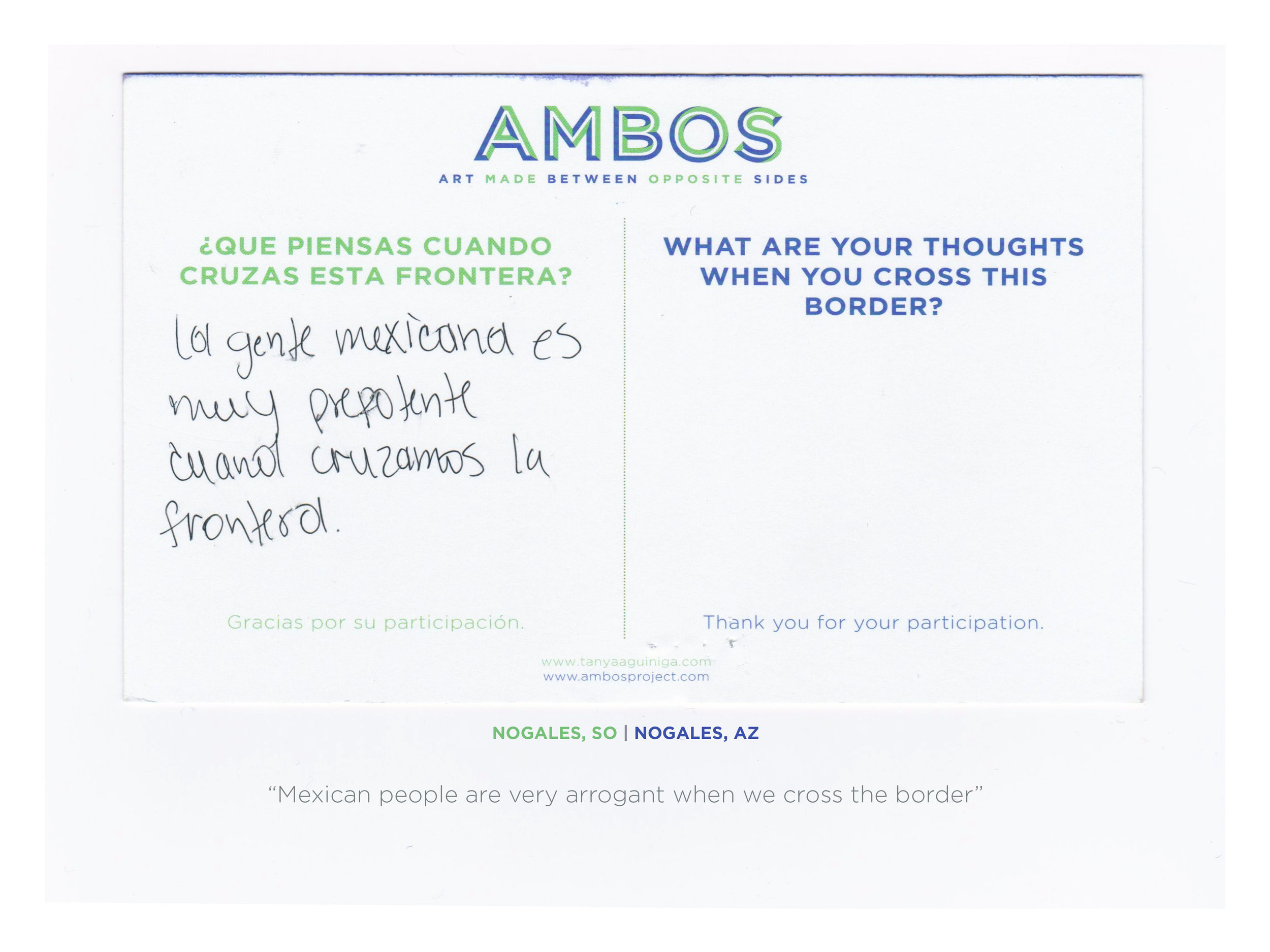
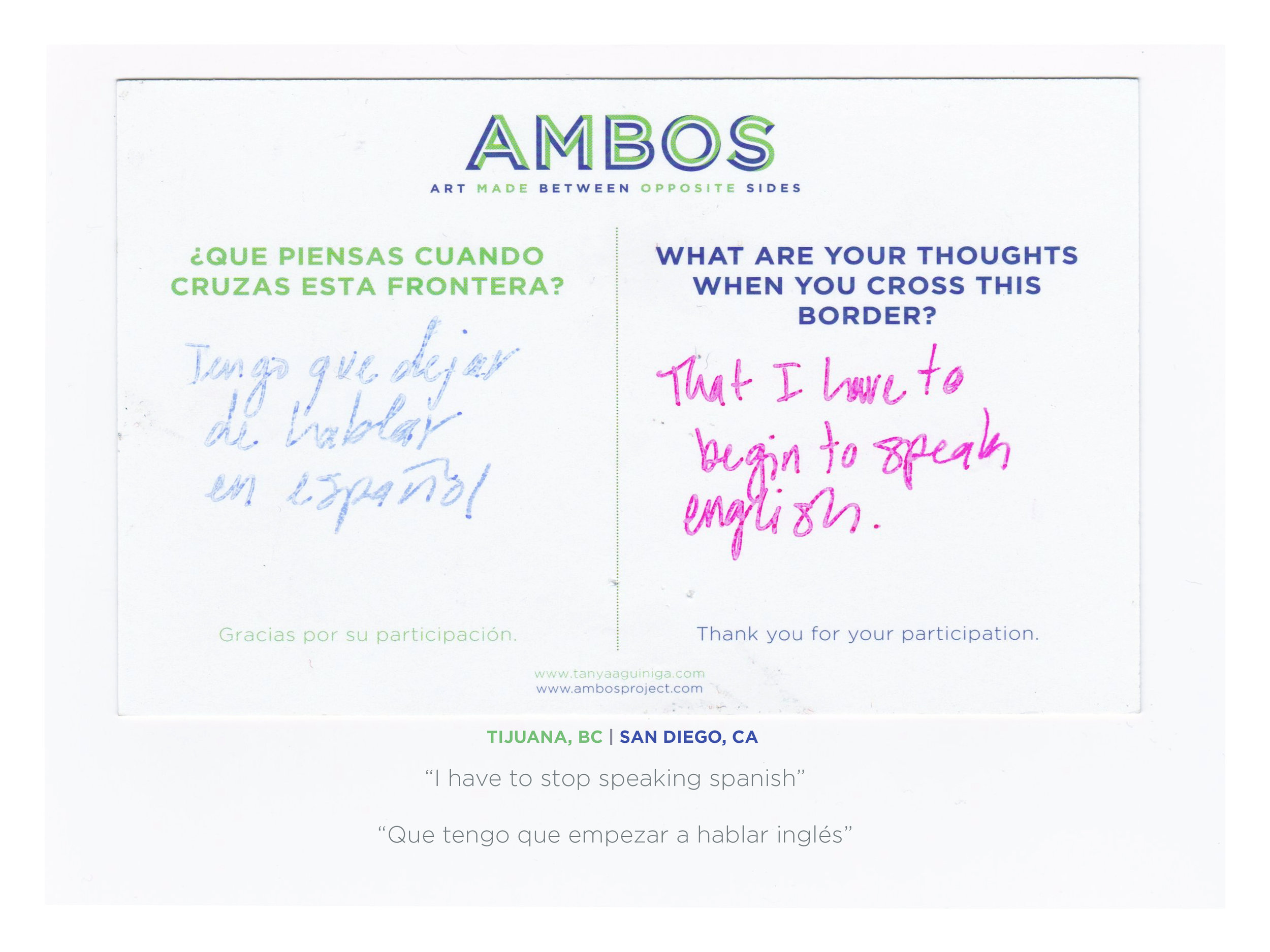
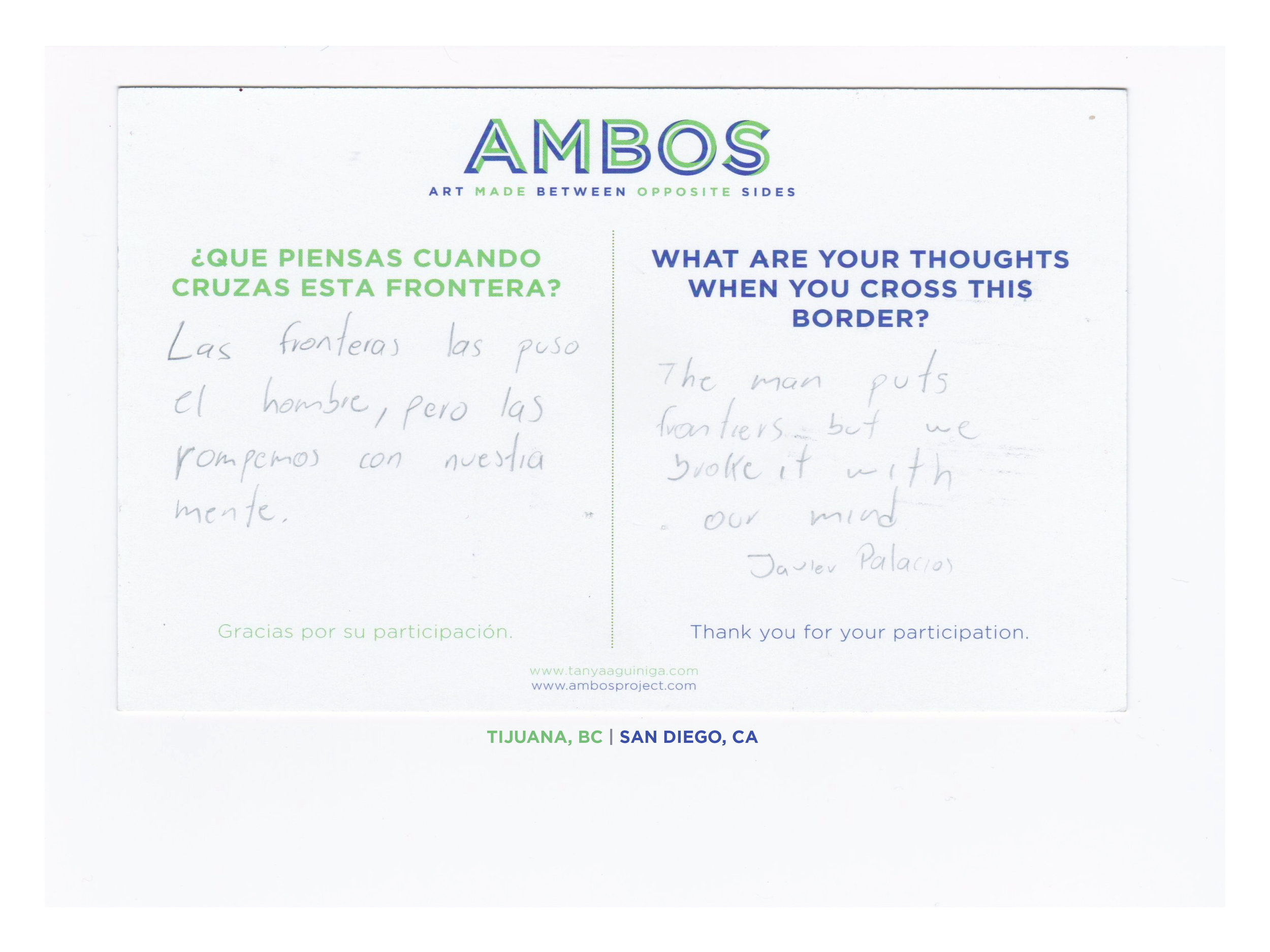
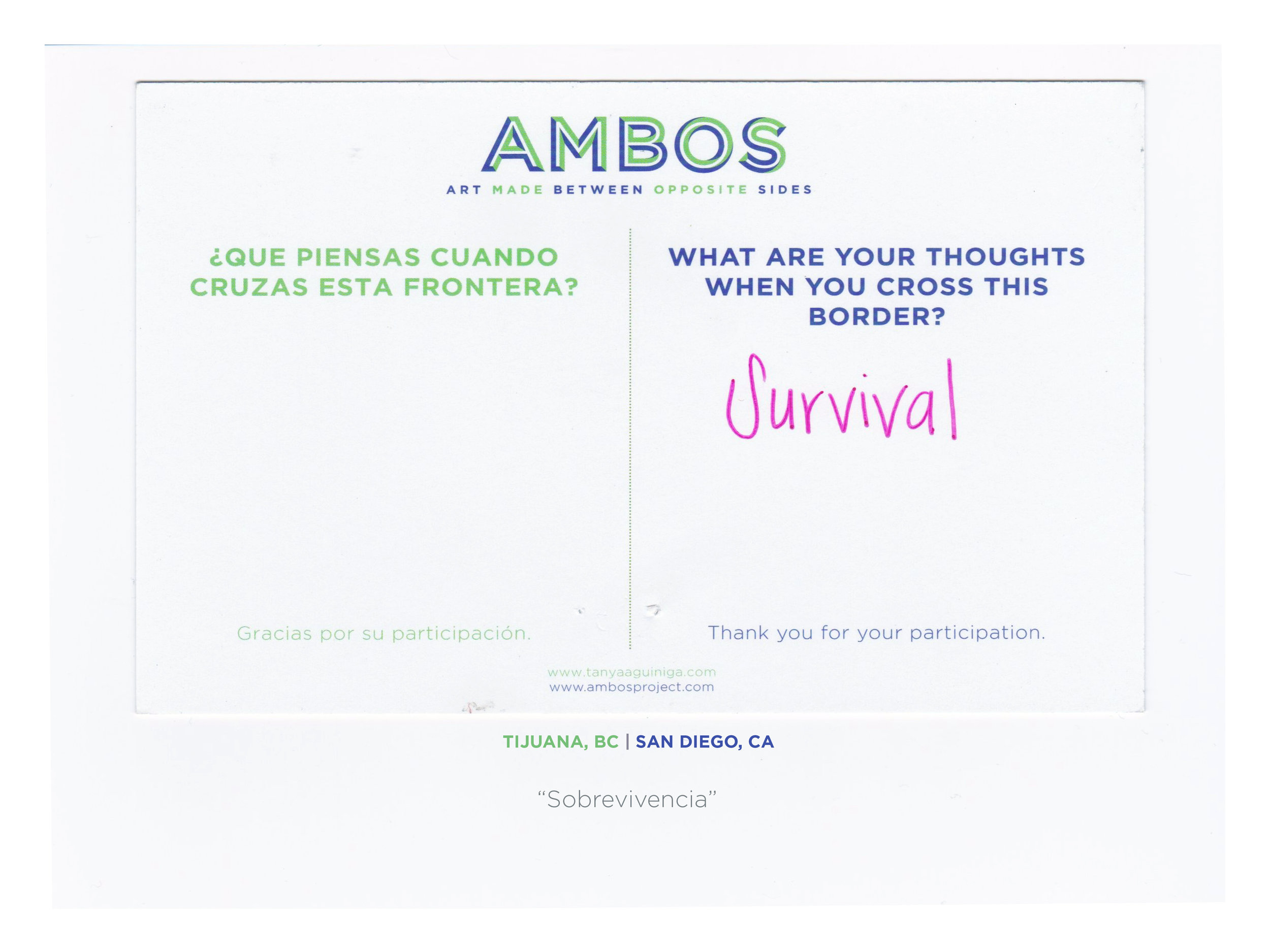

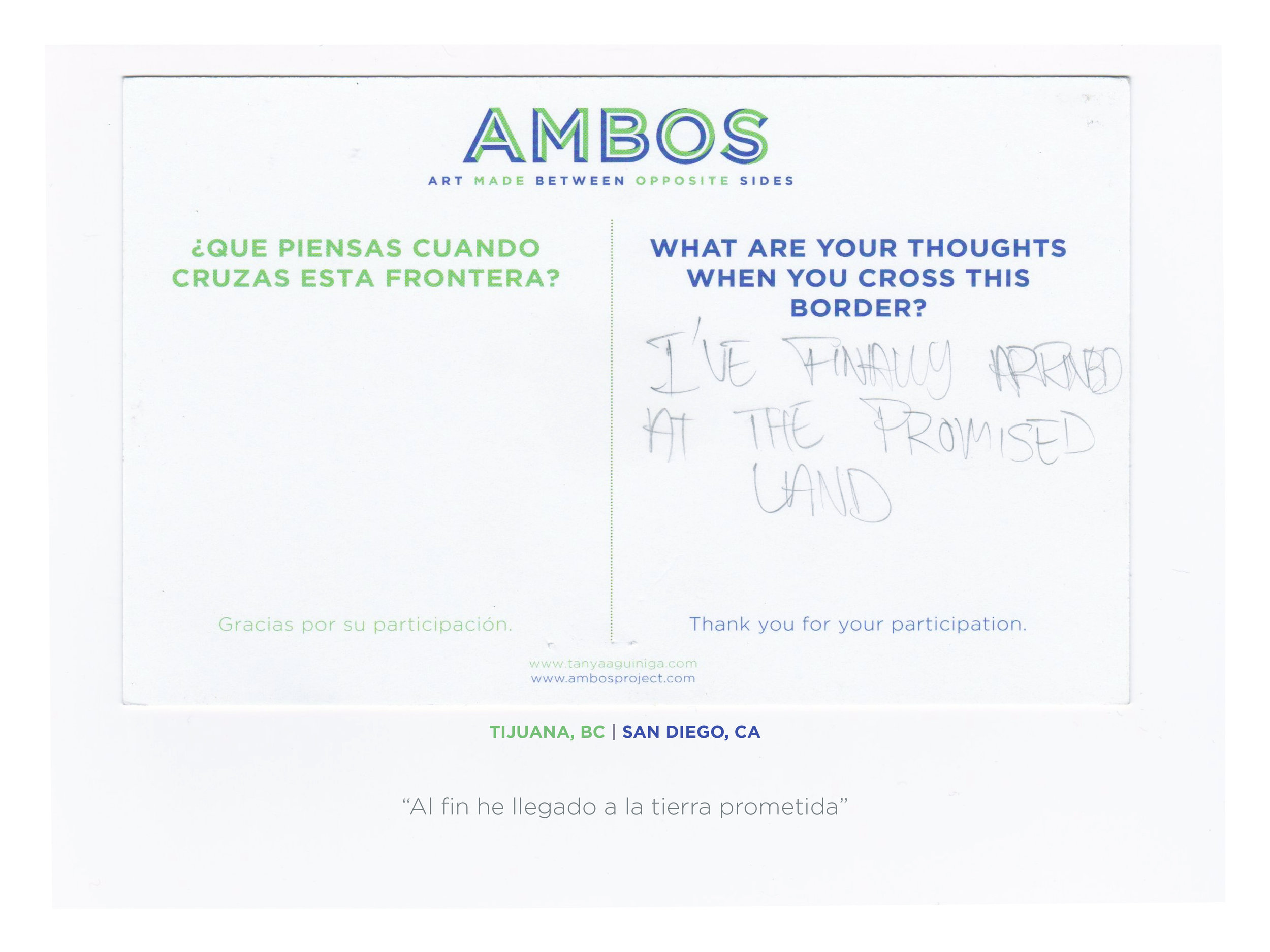
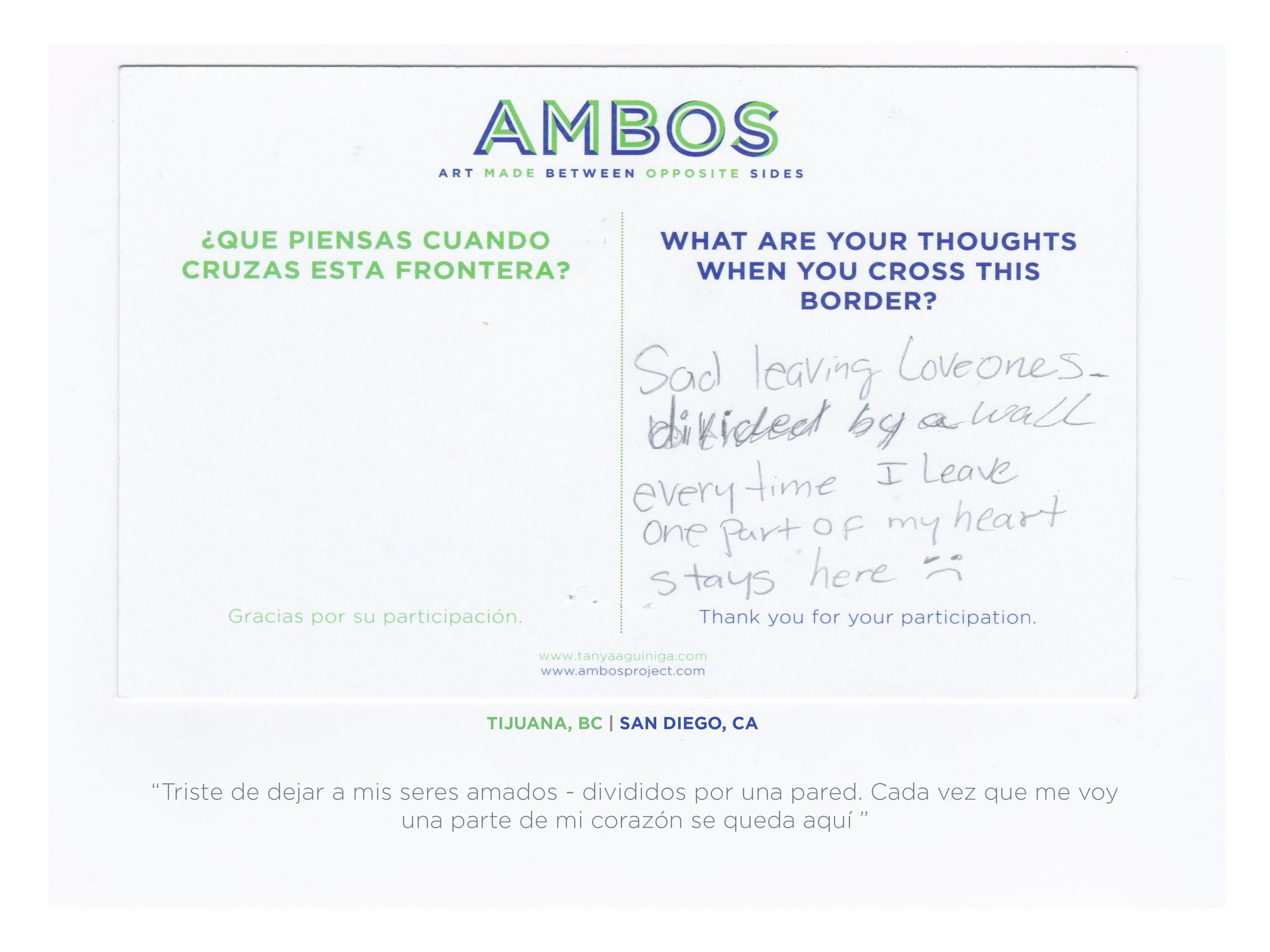
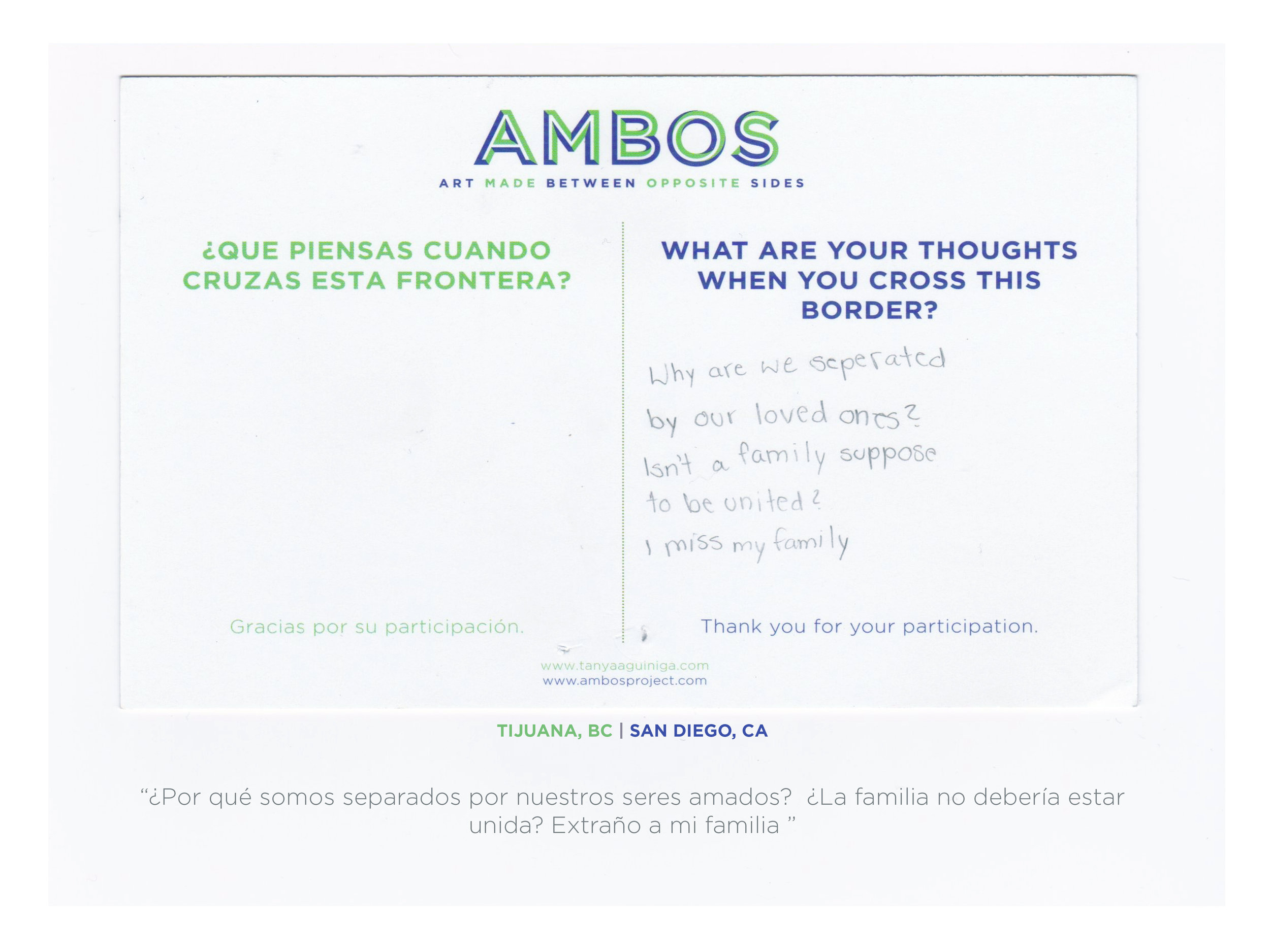
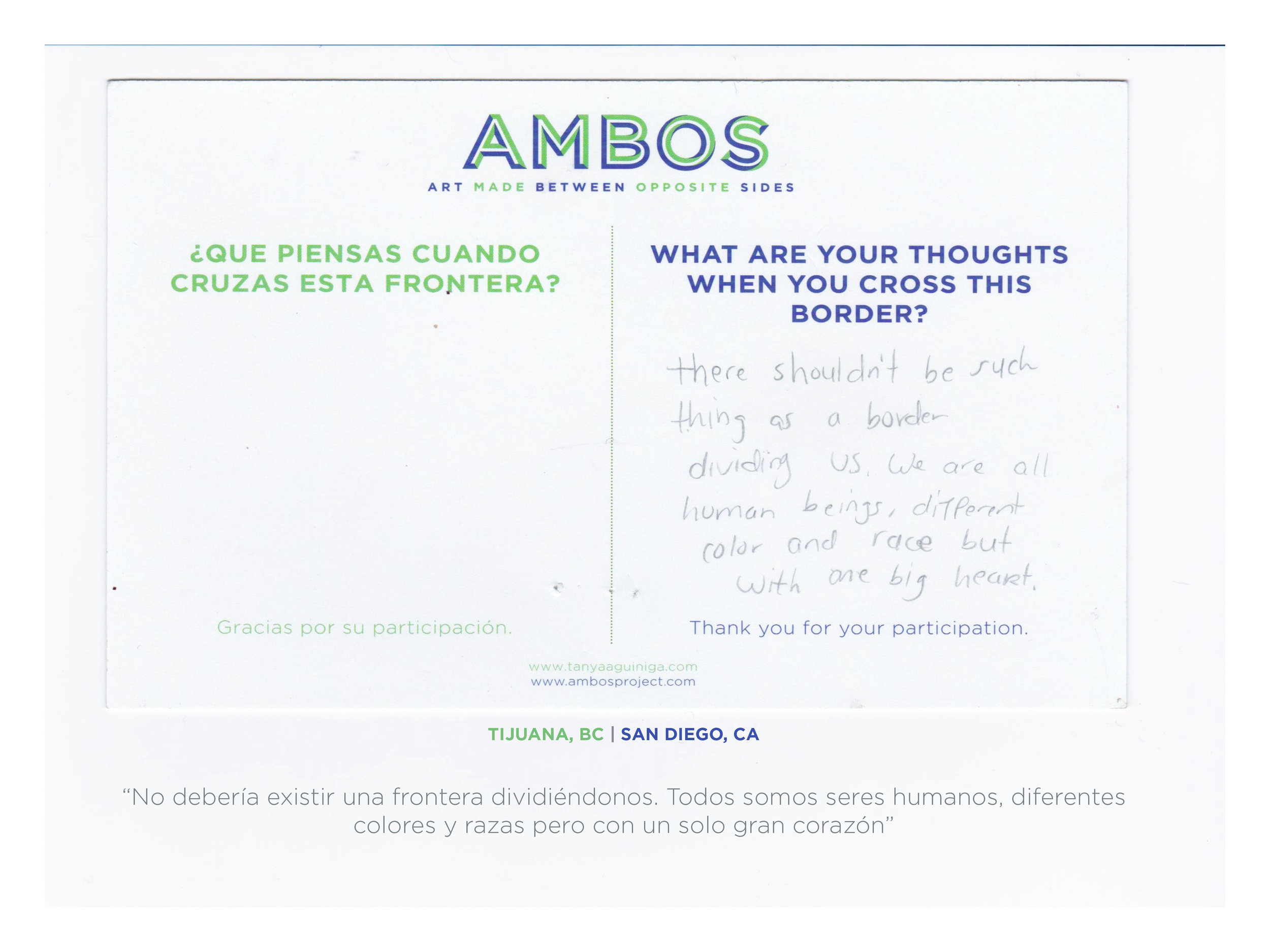
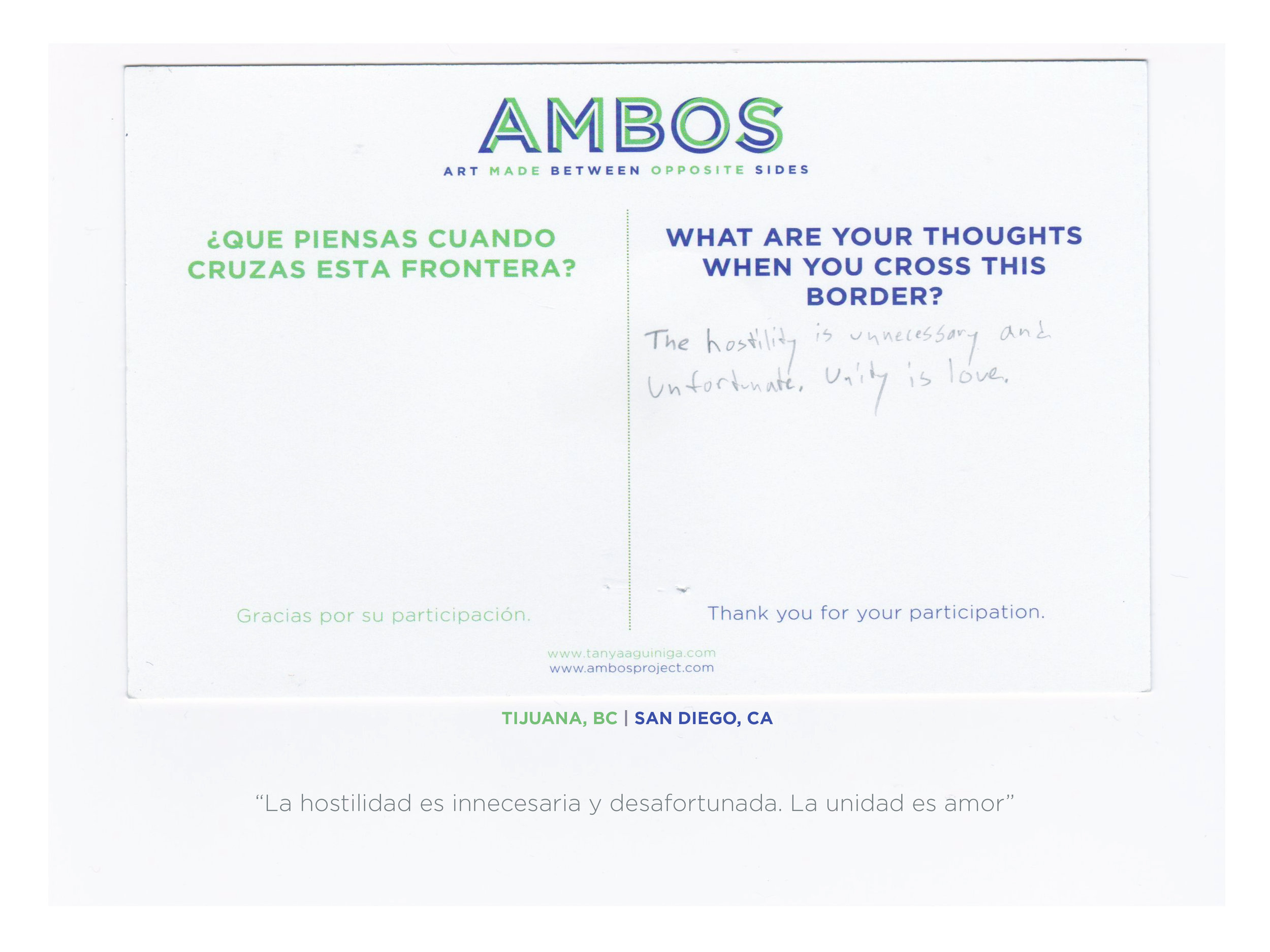
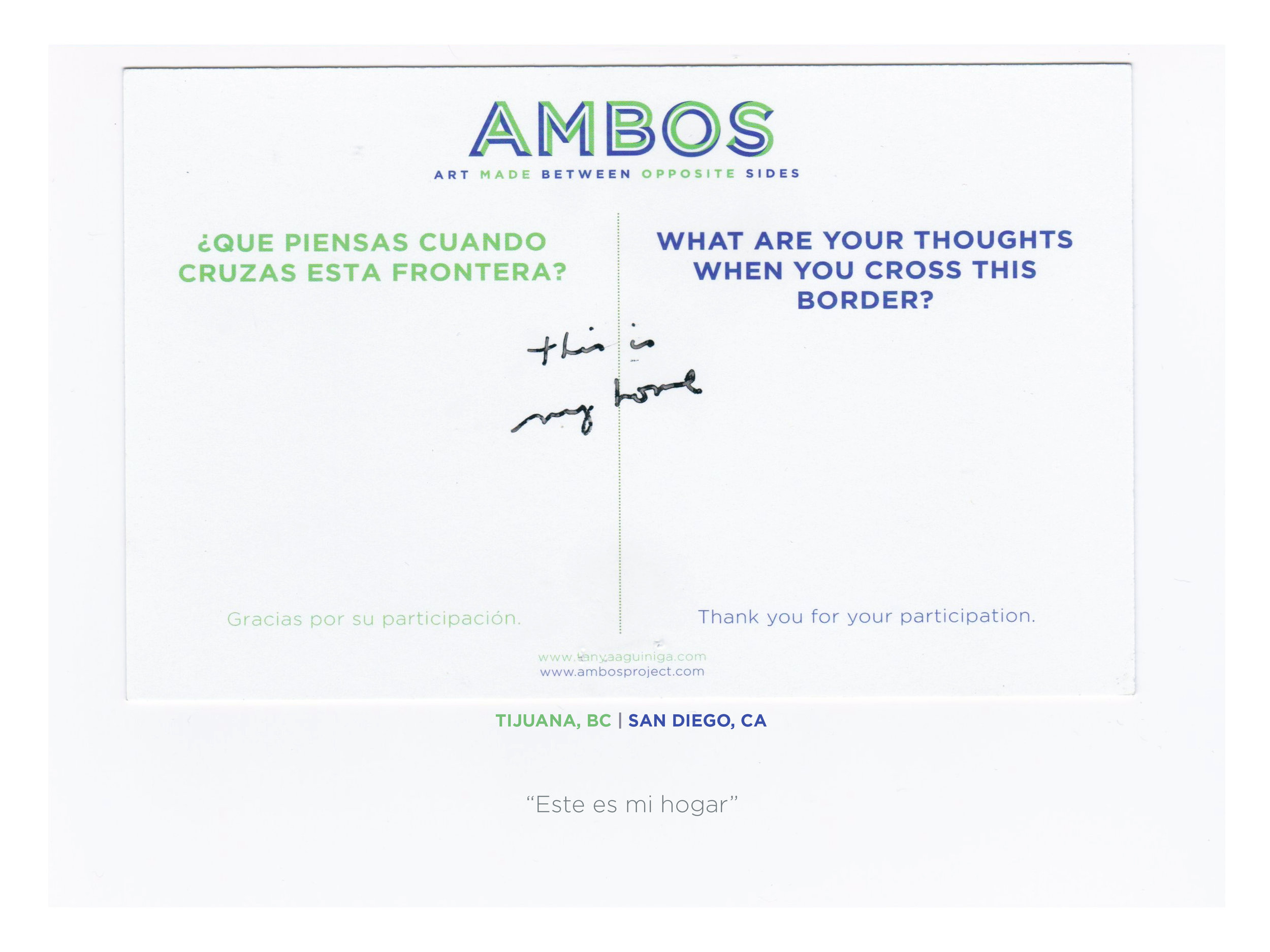
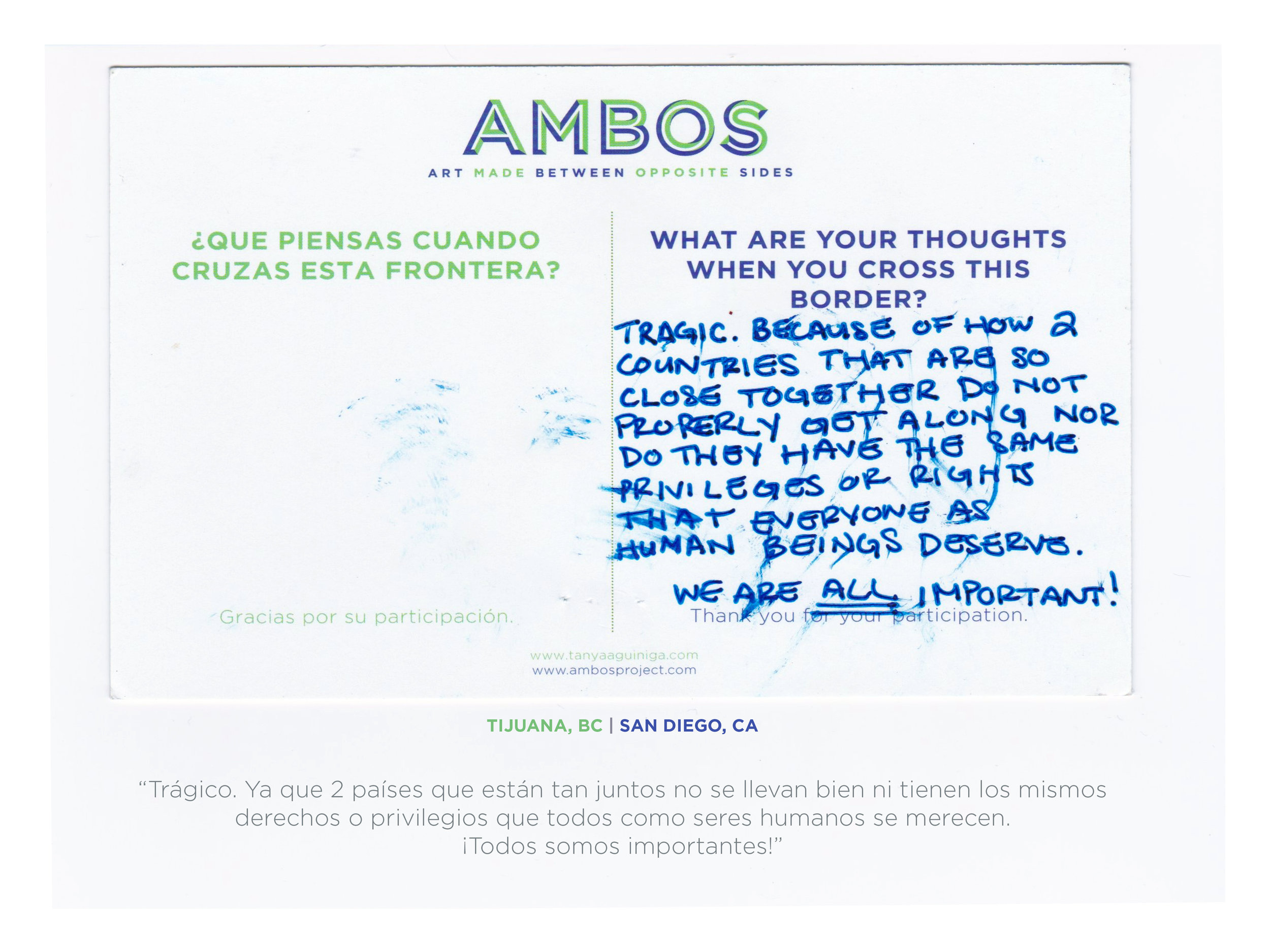
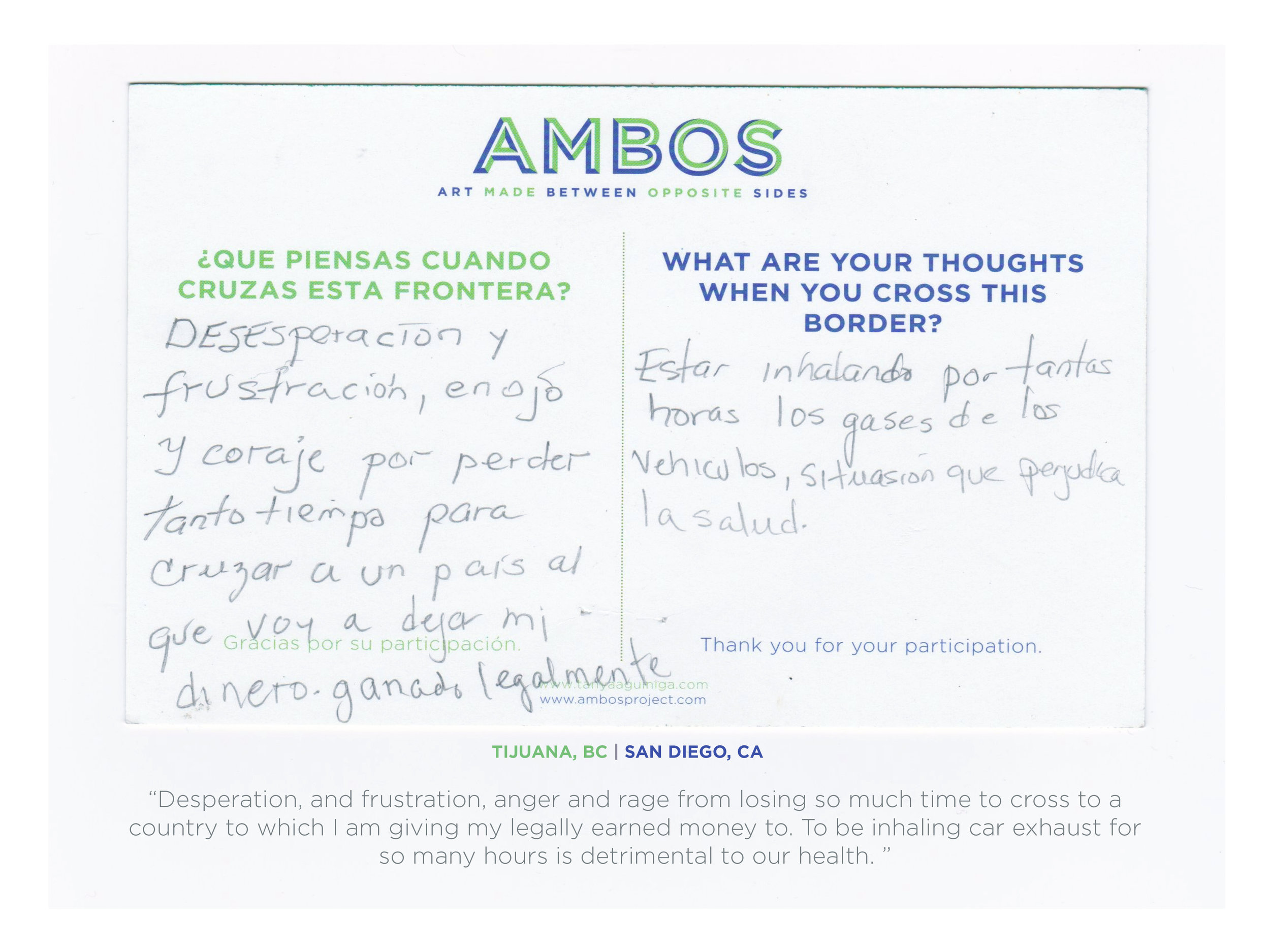
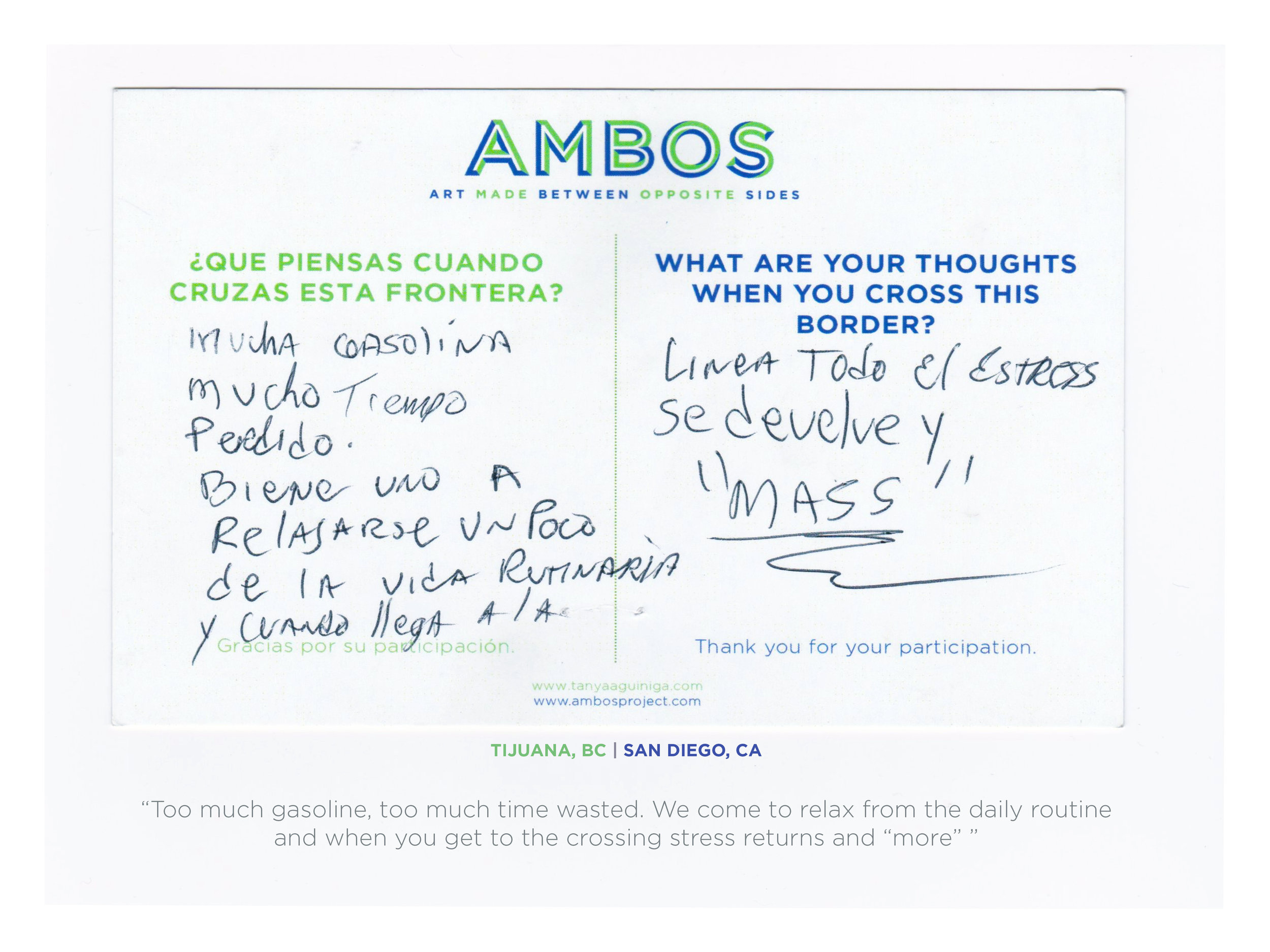
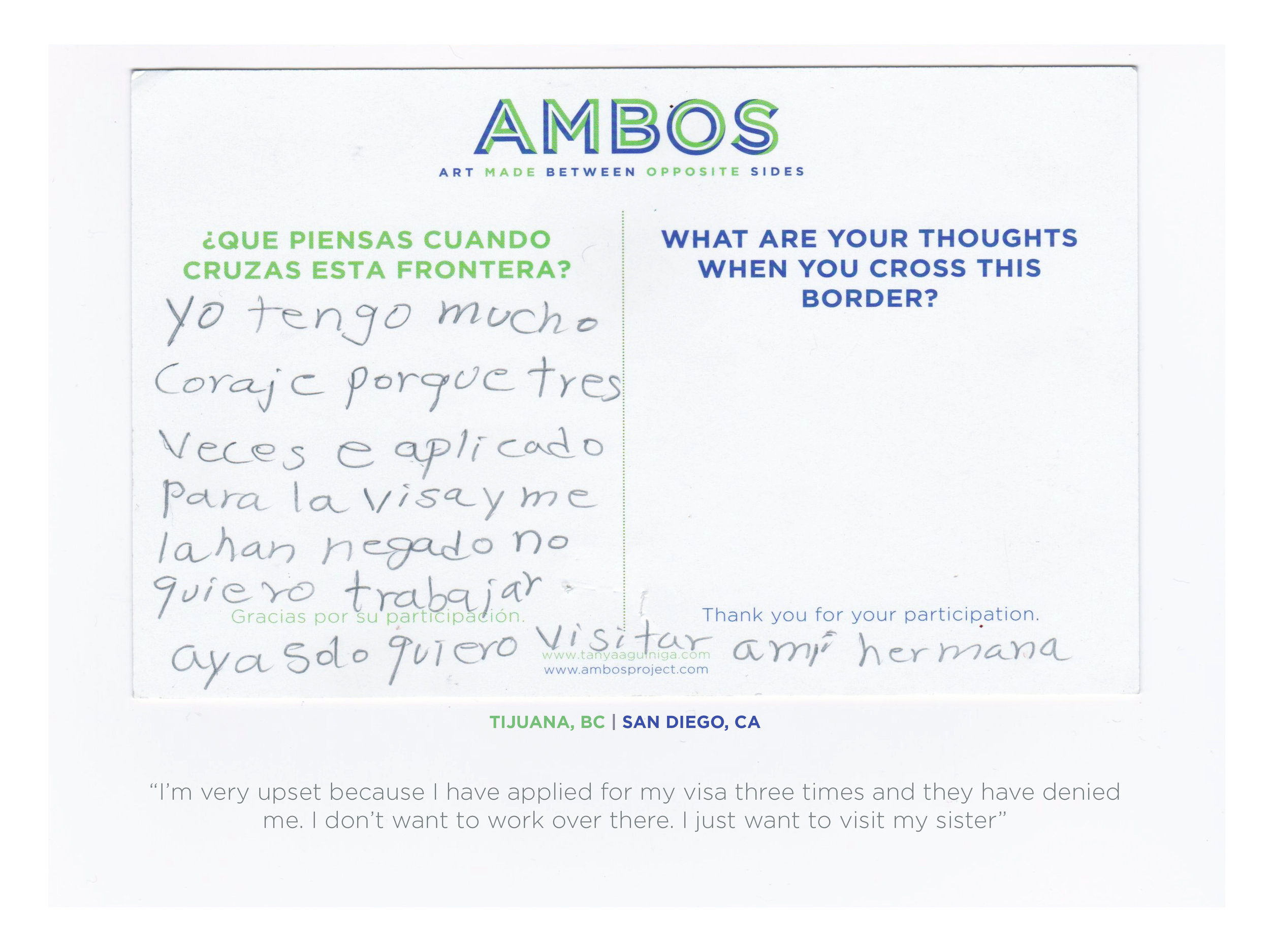
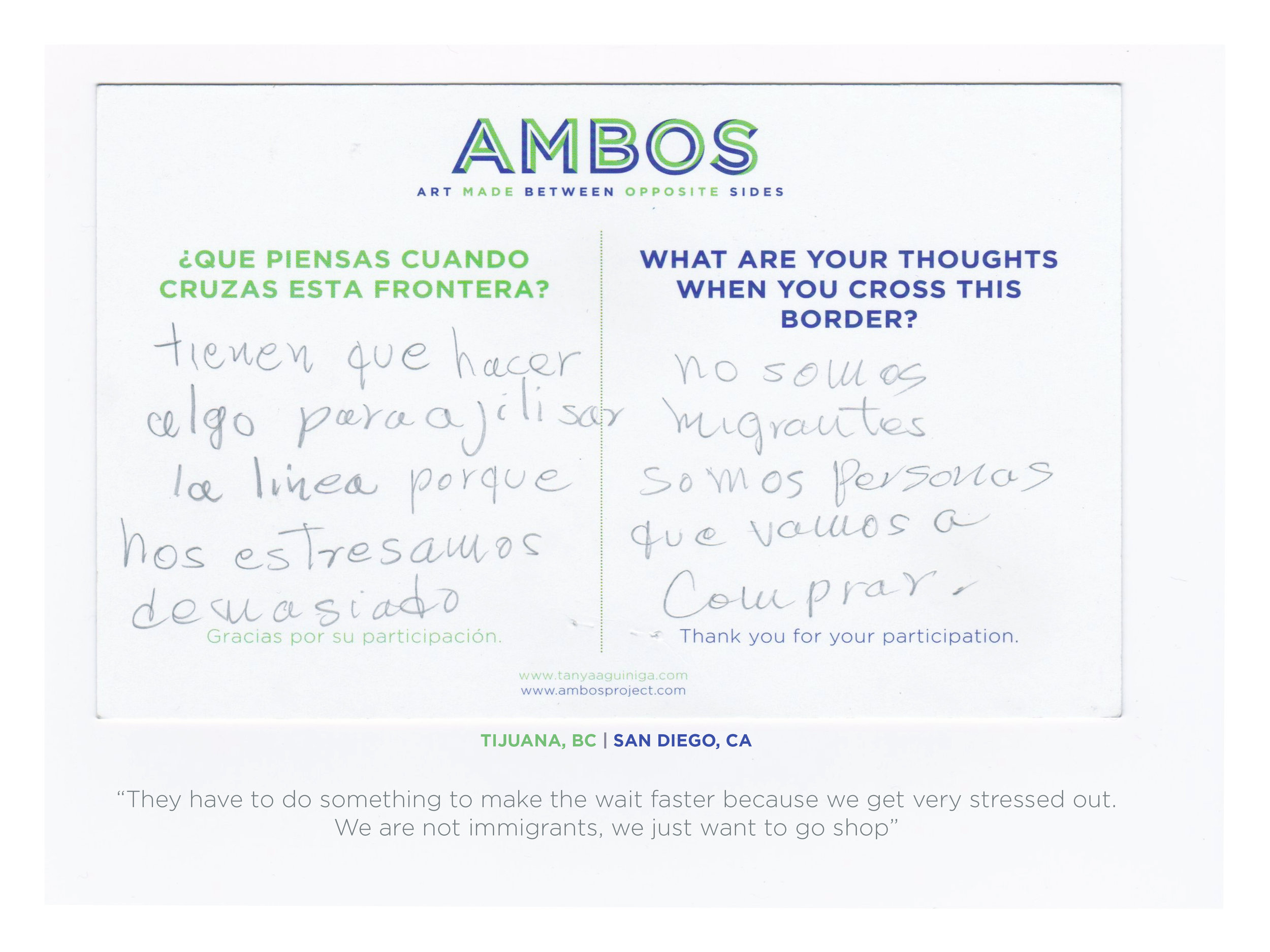
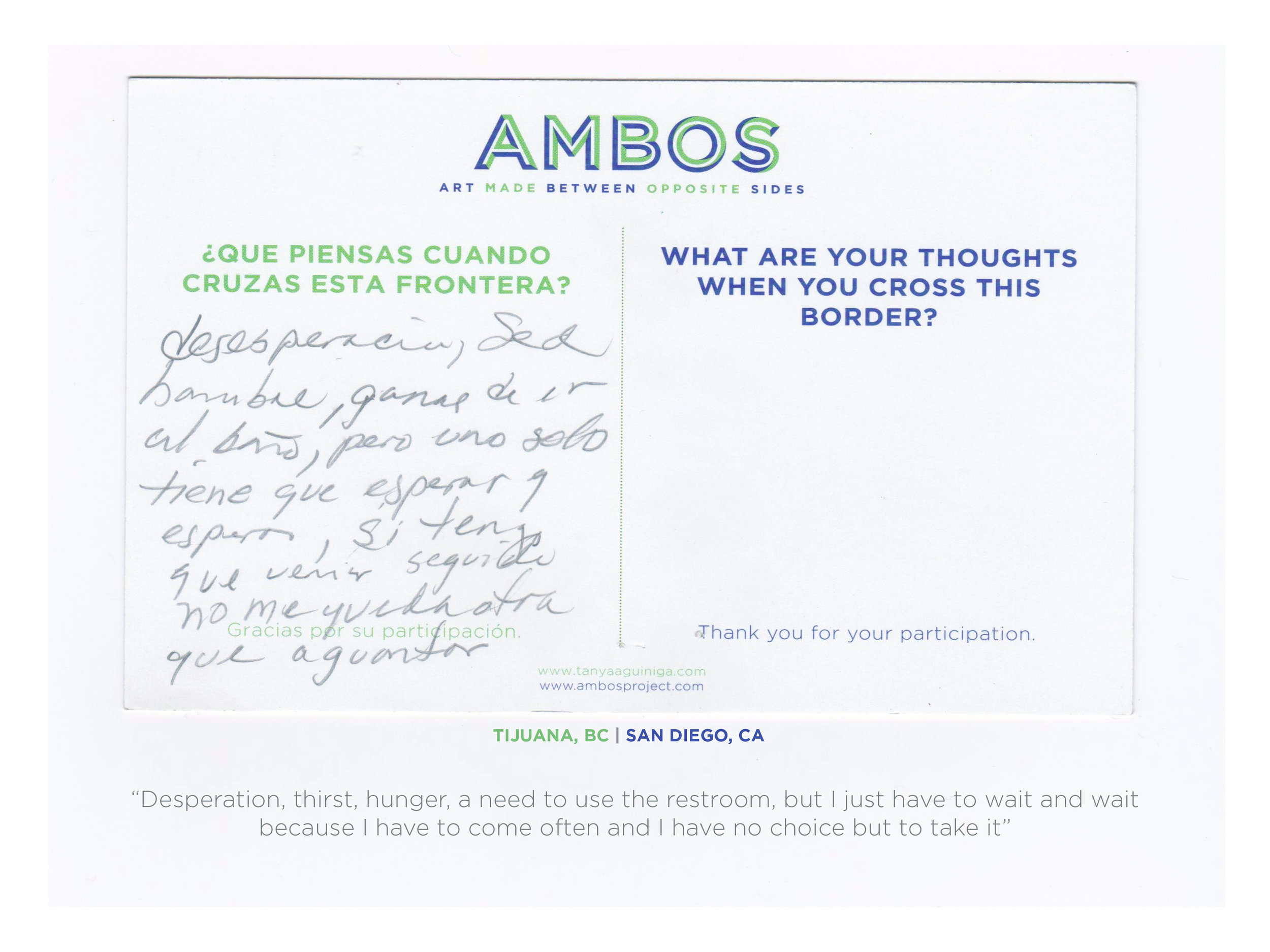

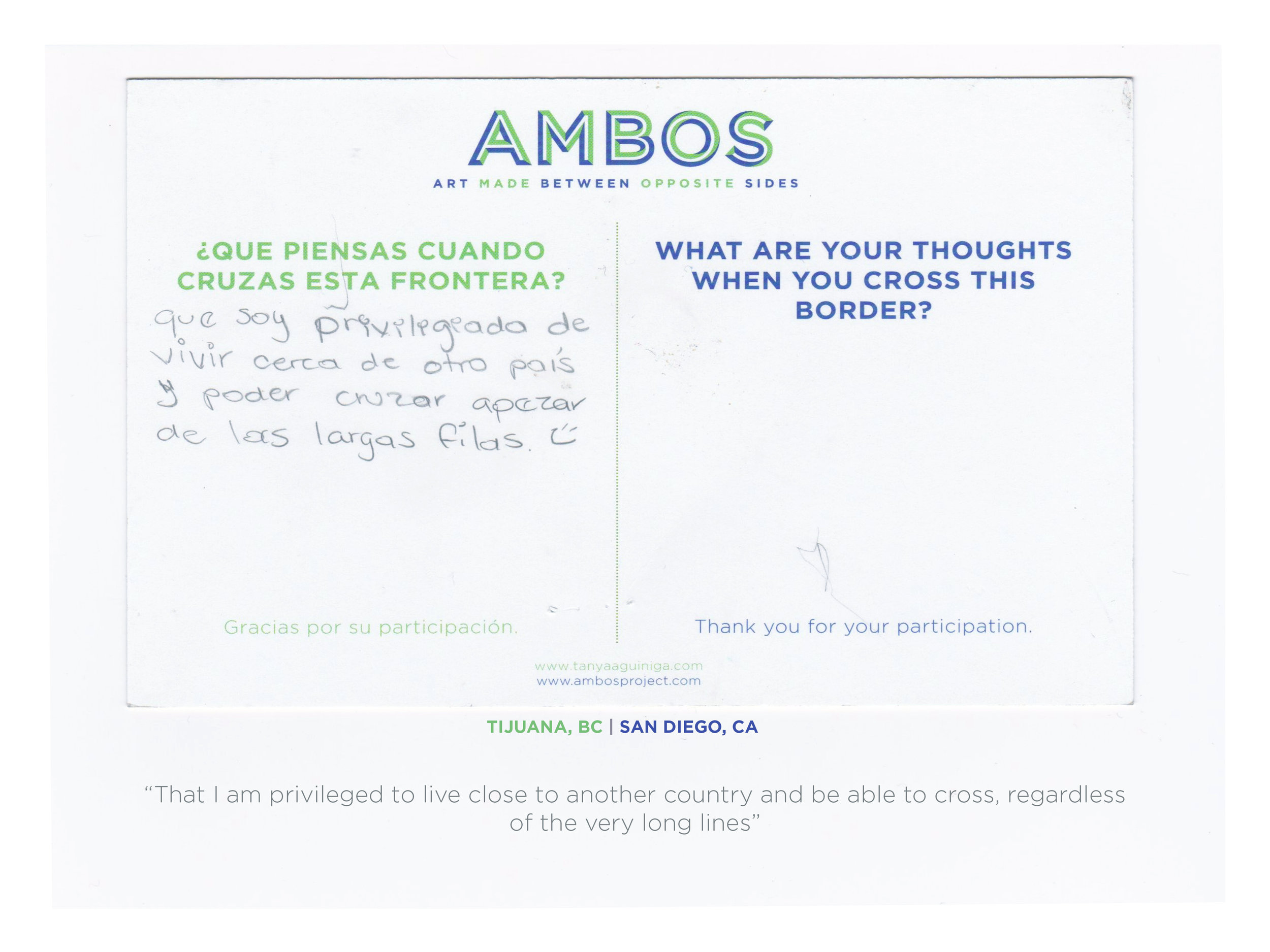

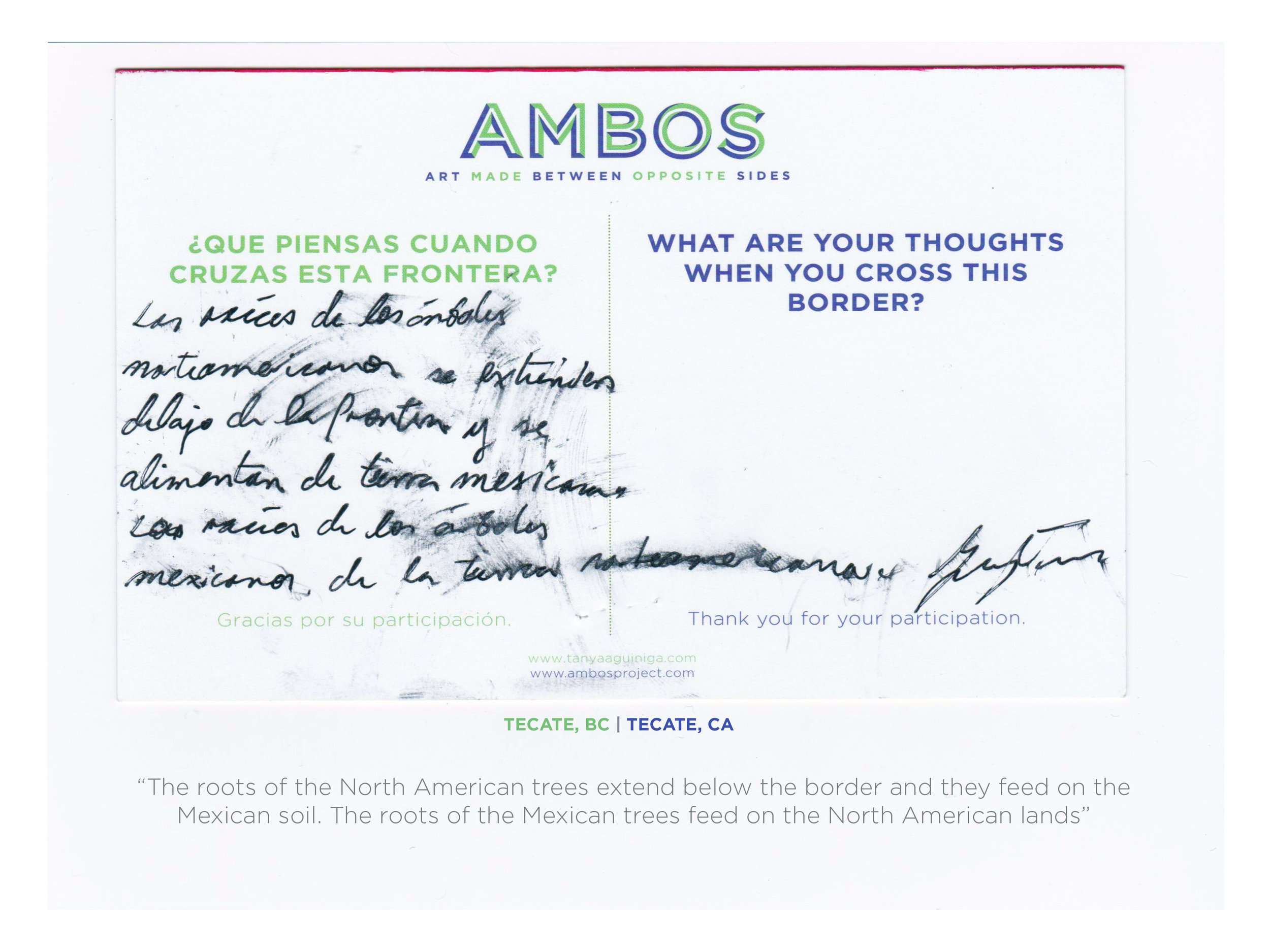

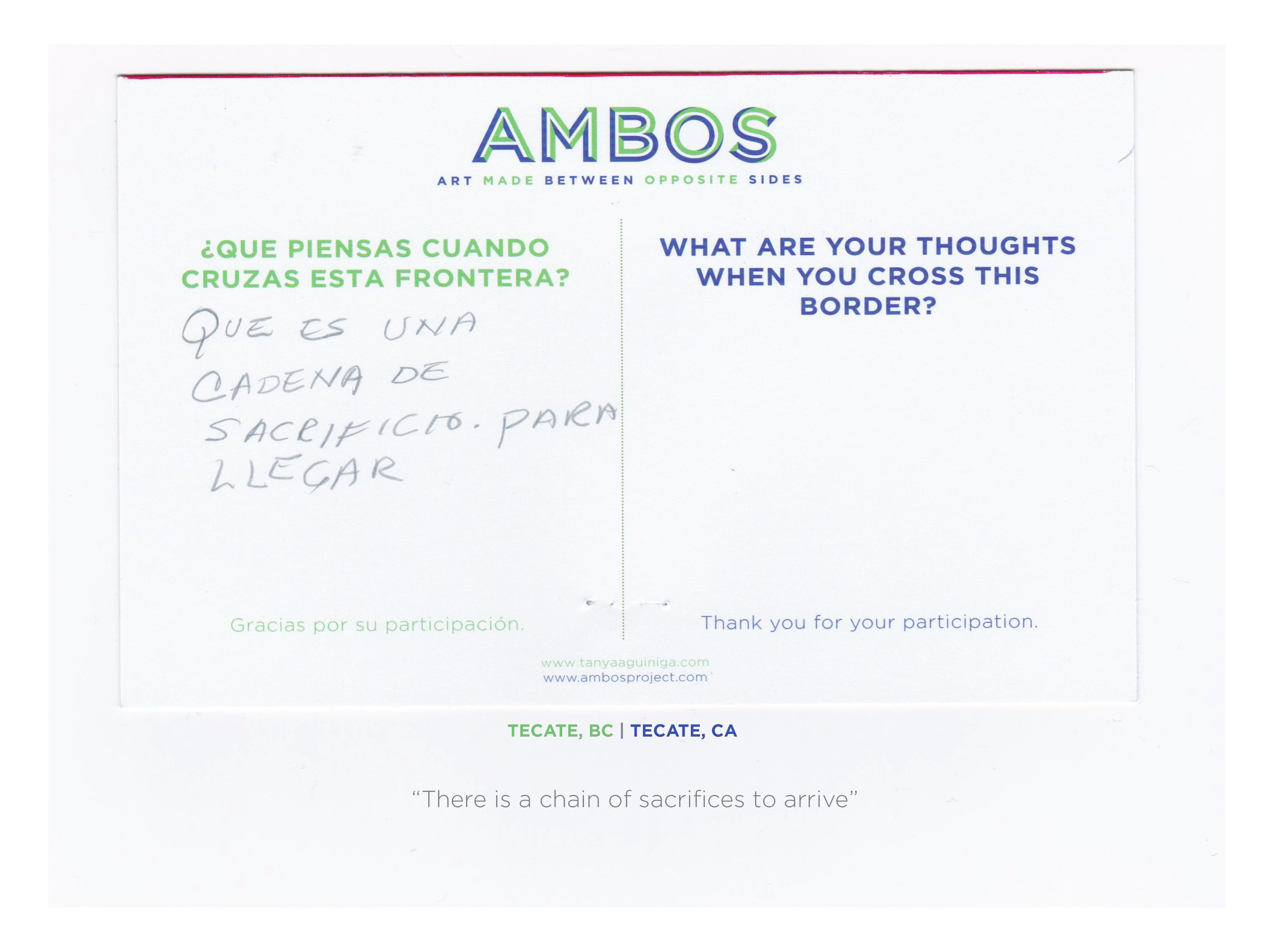
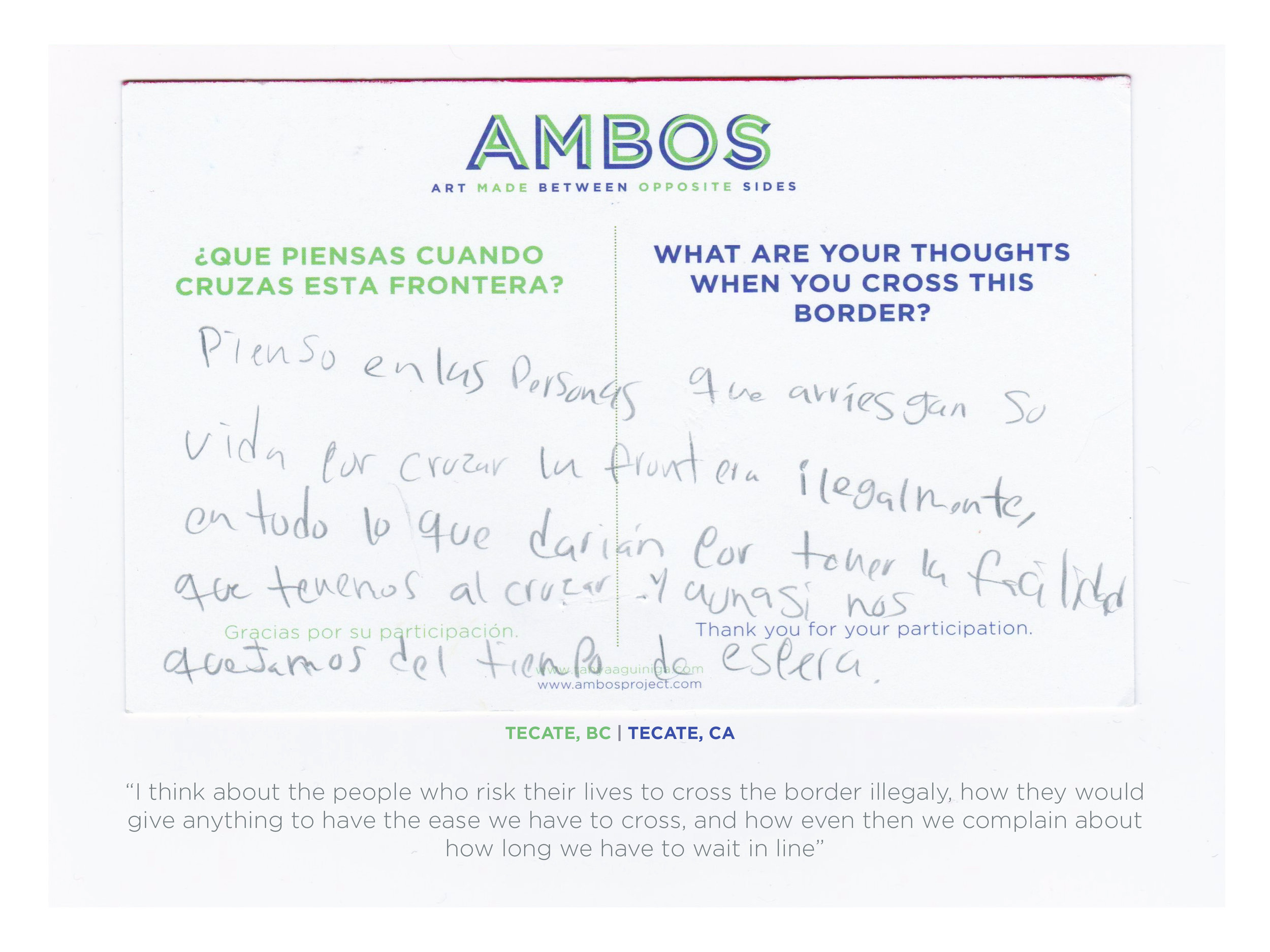

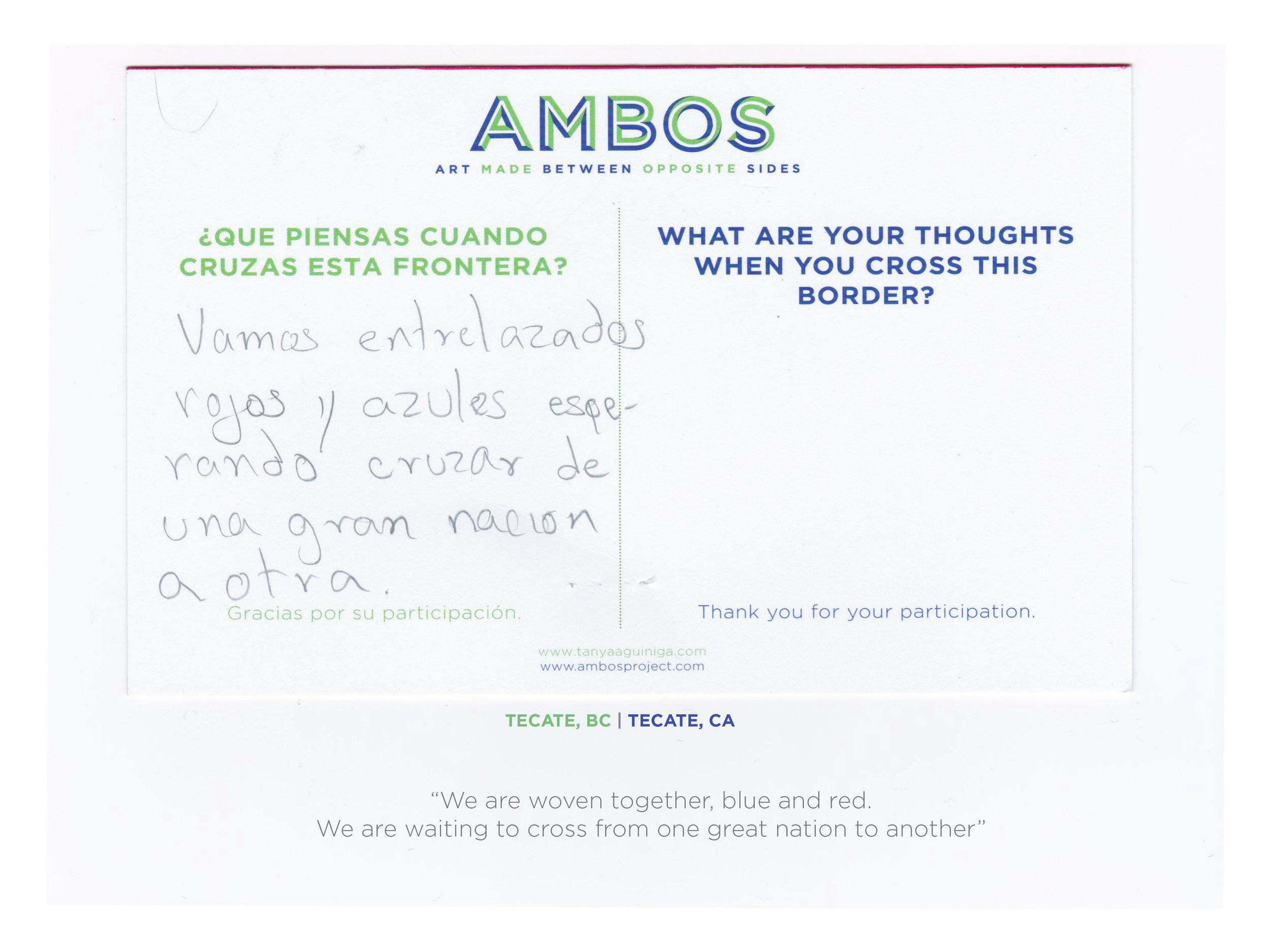
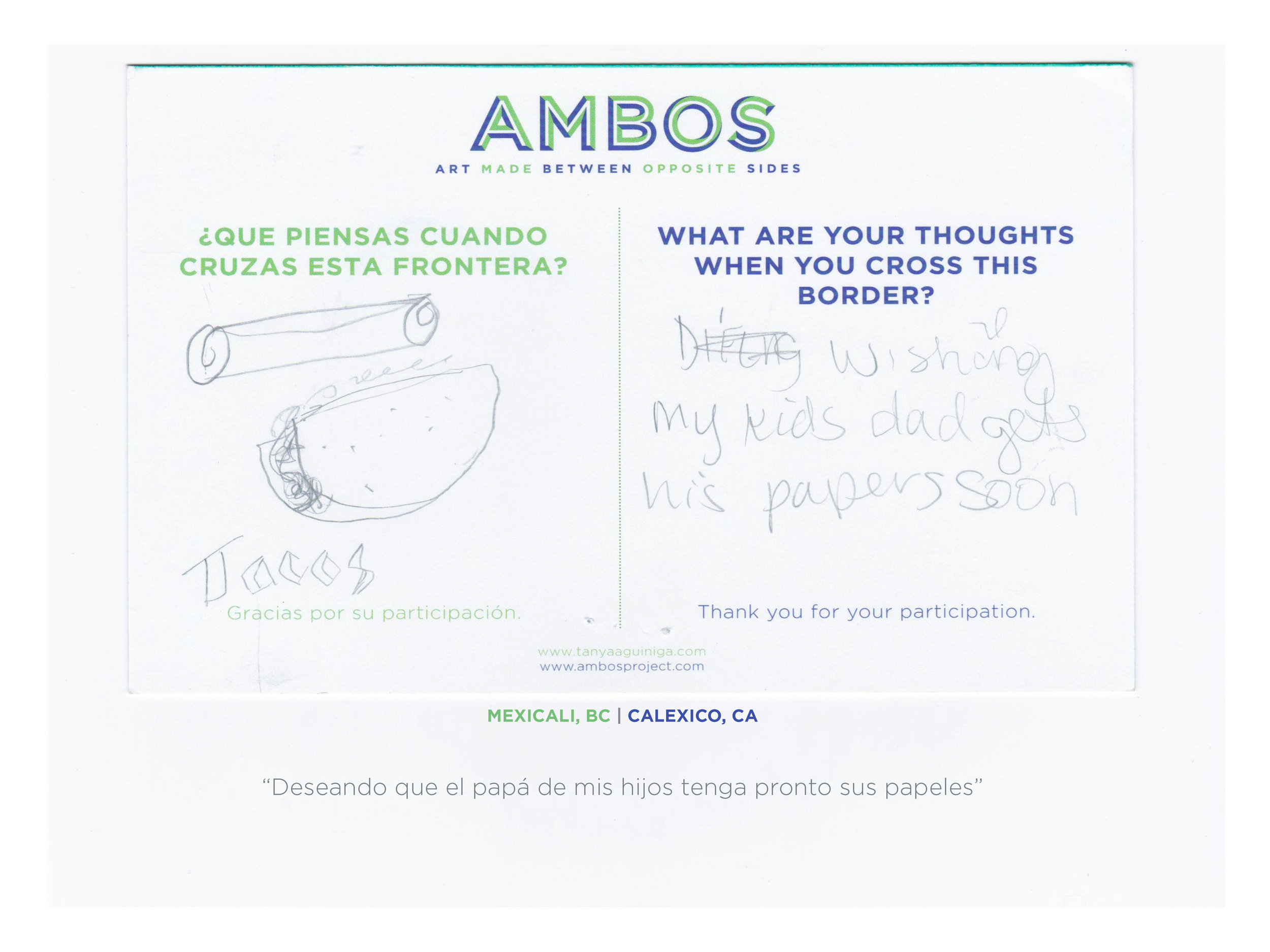

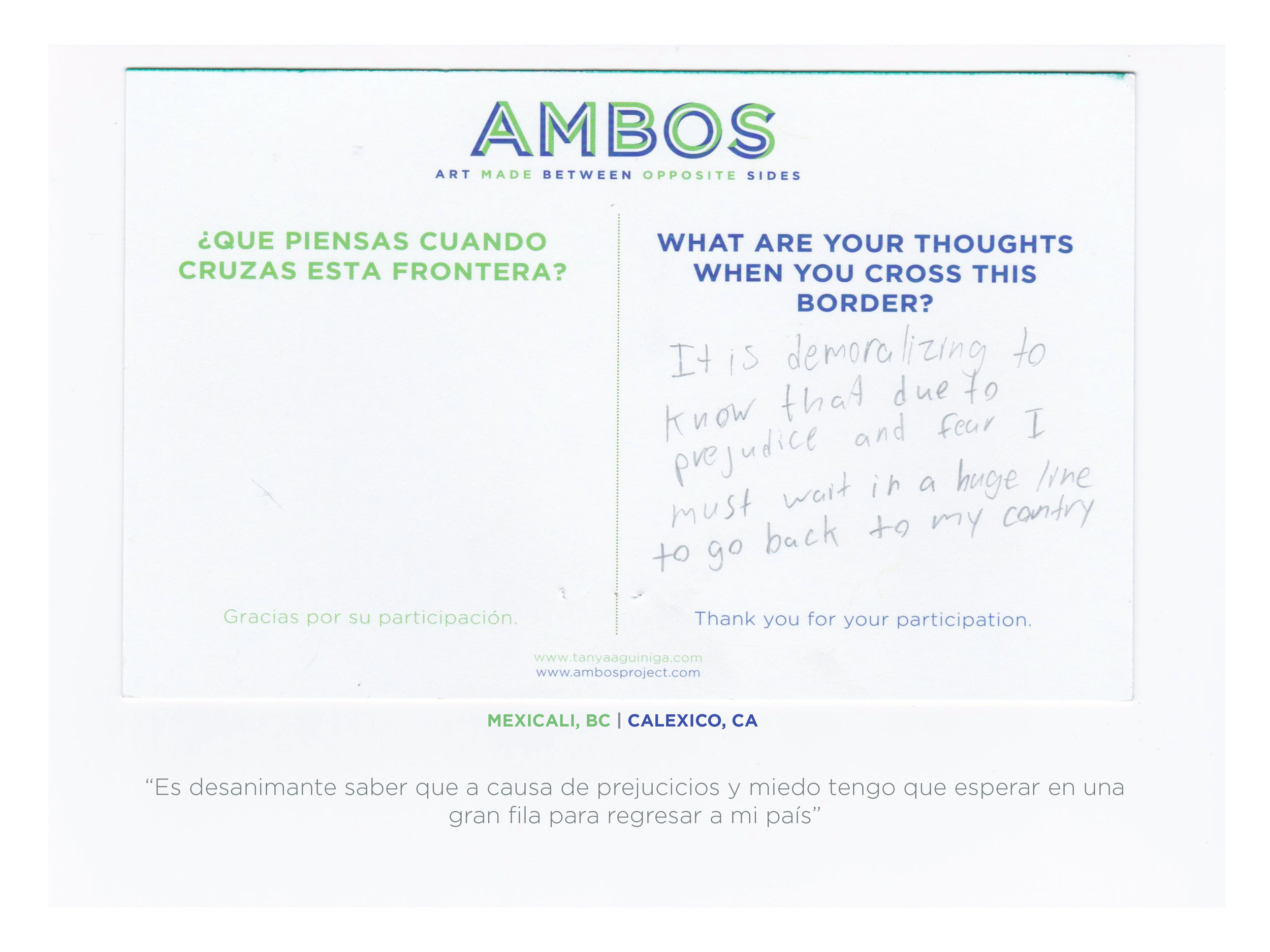



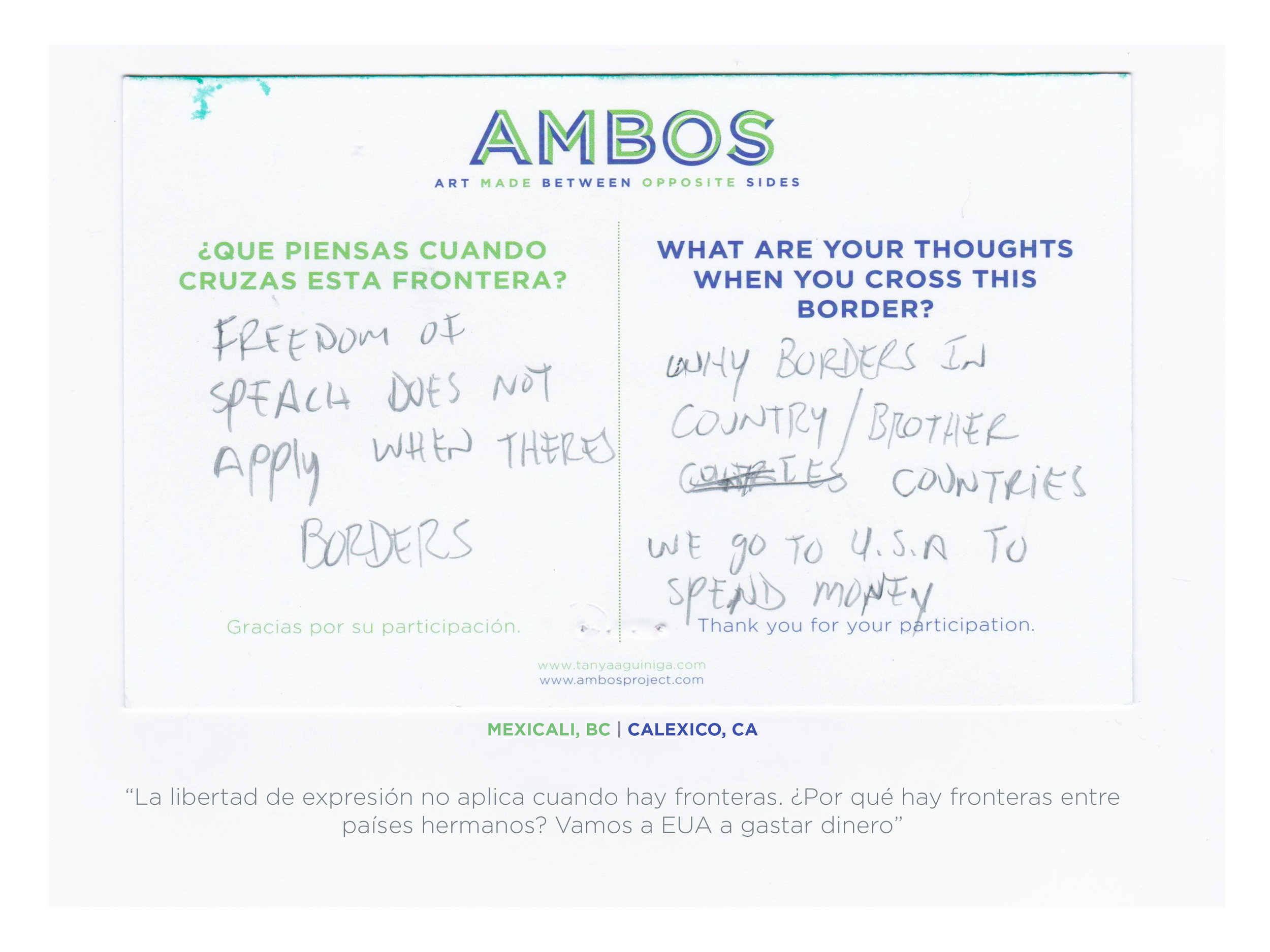
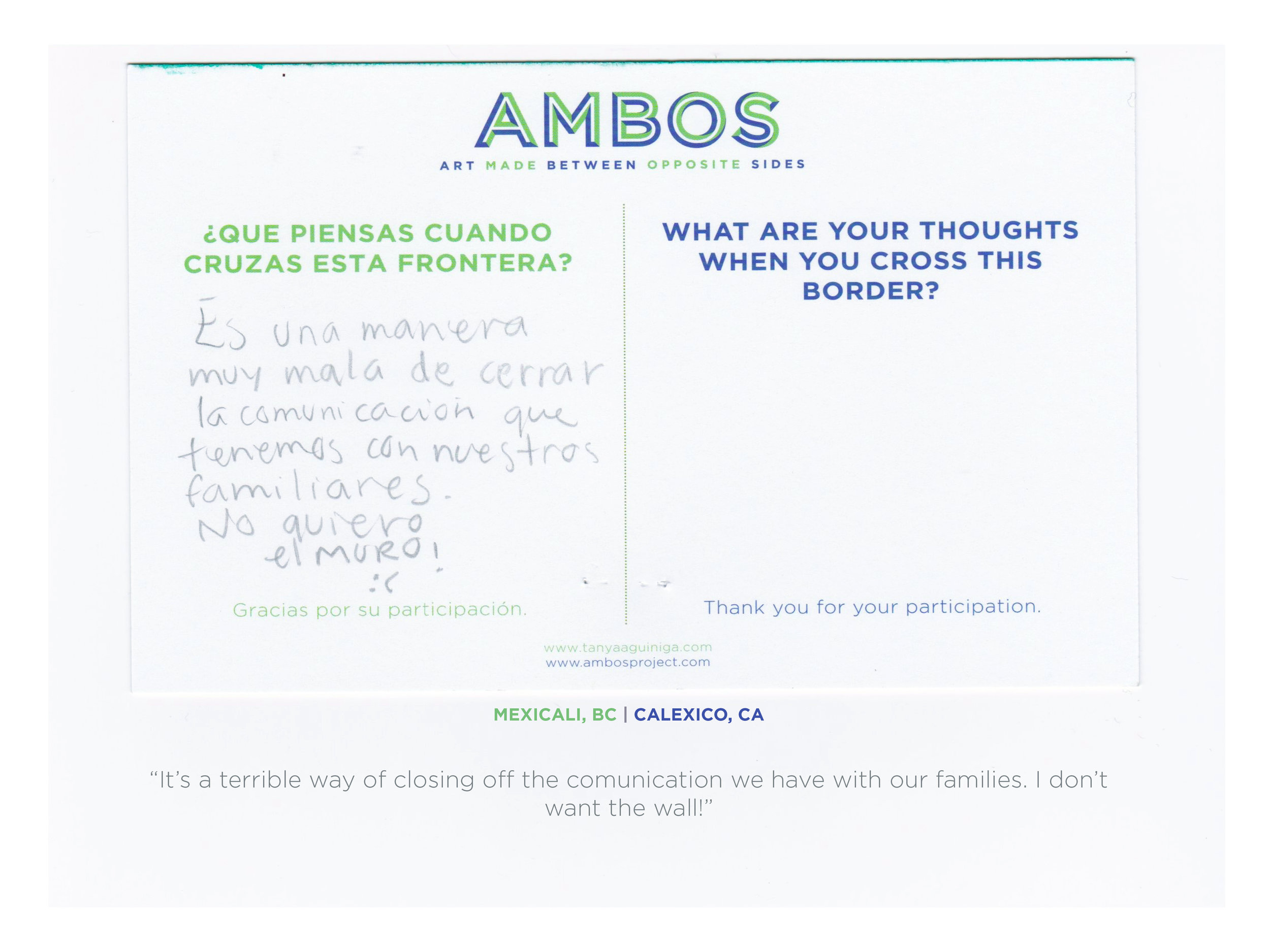
Crossings included:
PHOTO ARCHIVE 2016
Locations pictured:
PHOTO ARCHIVE 2017
Locations pictured:
PHOTO ARCHIVE 2018
Locations pictured:

